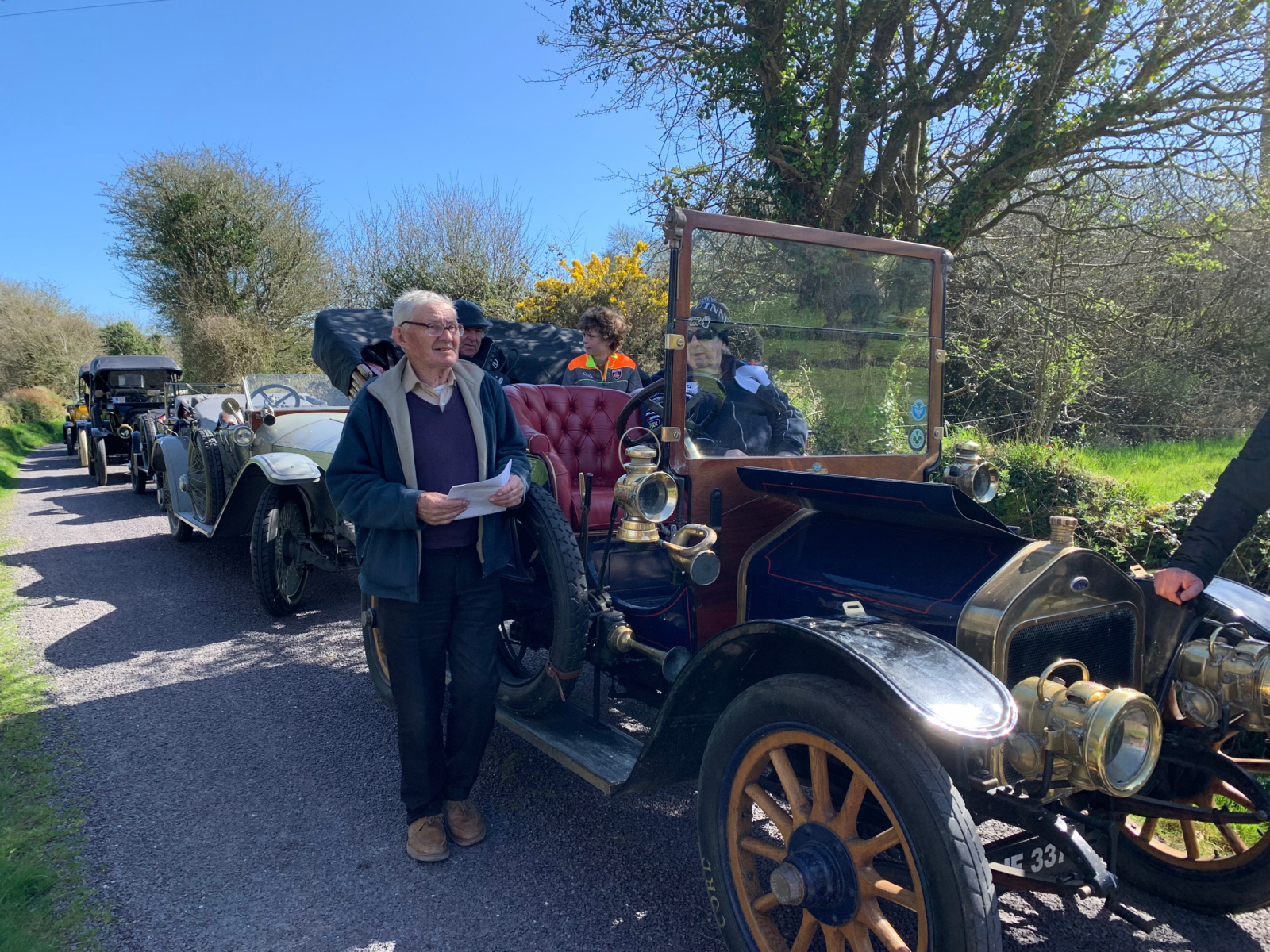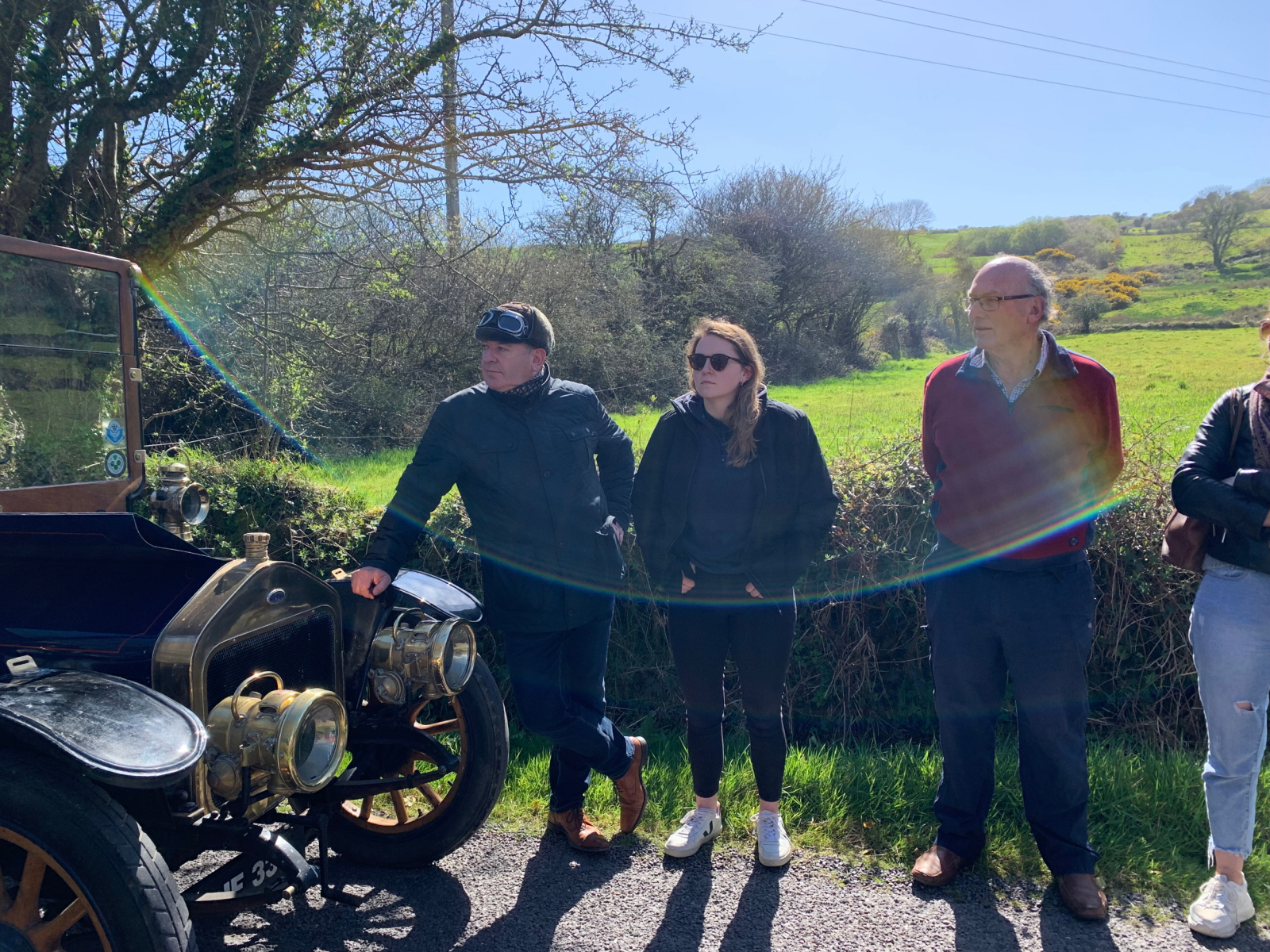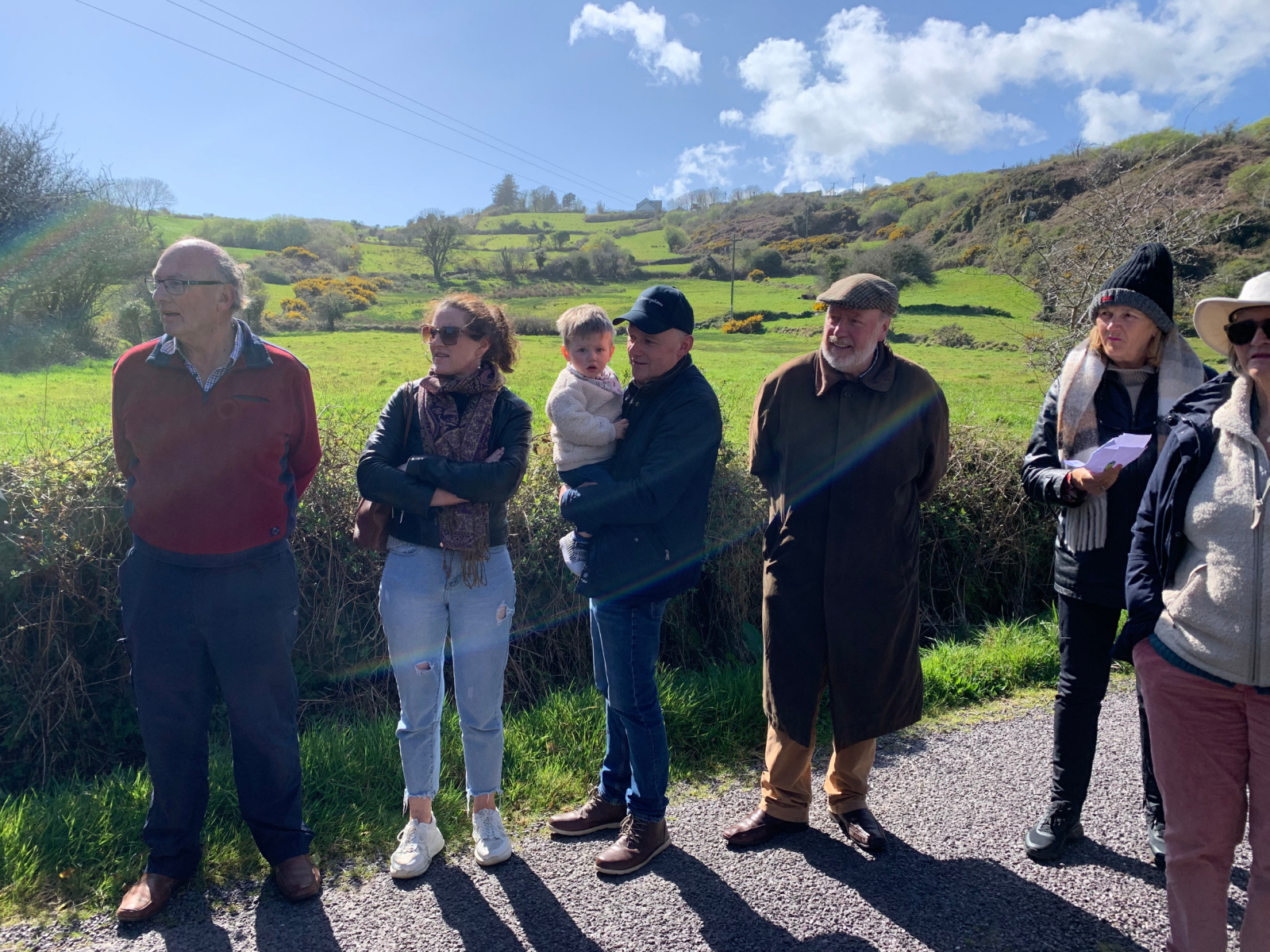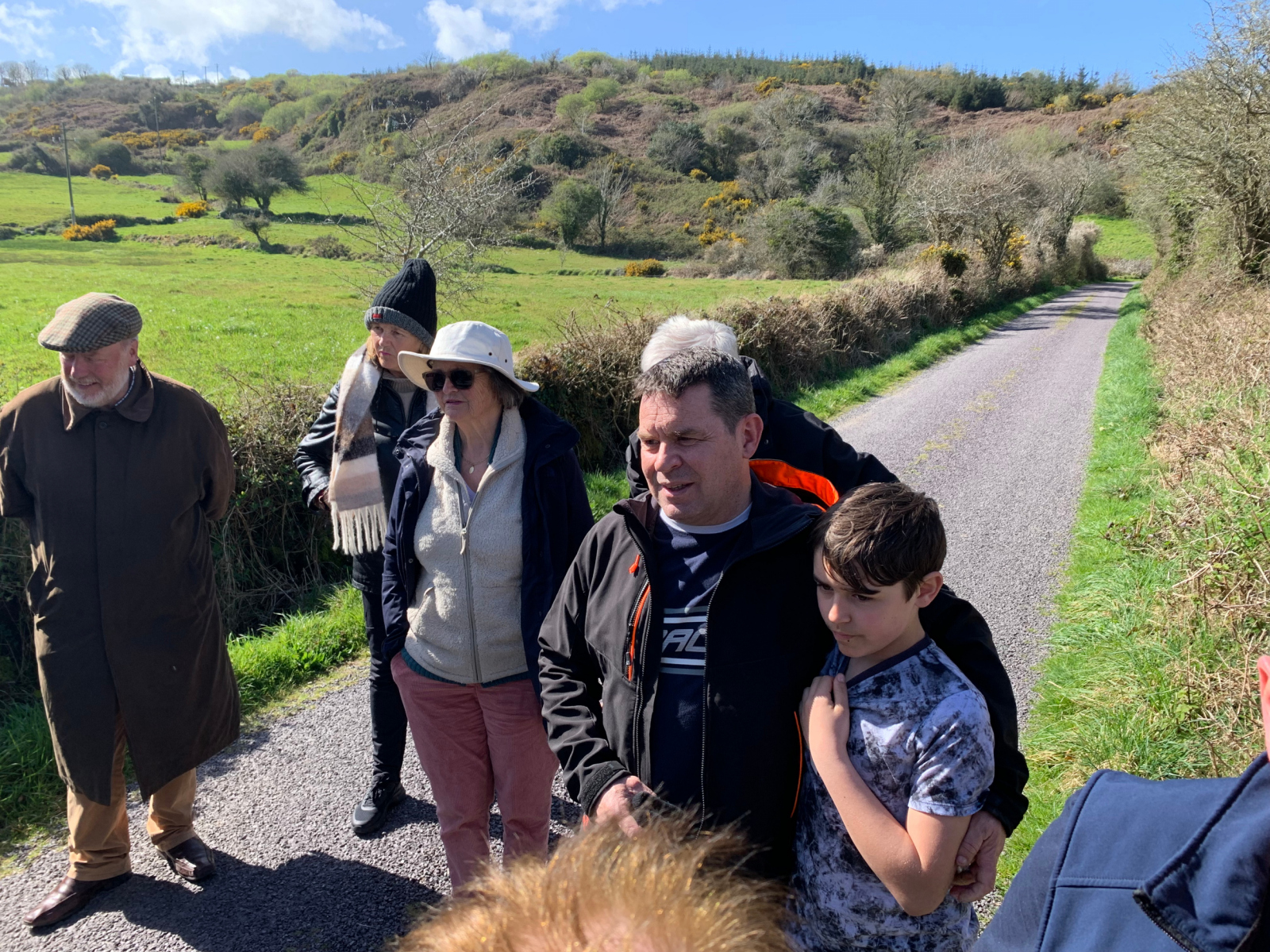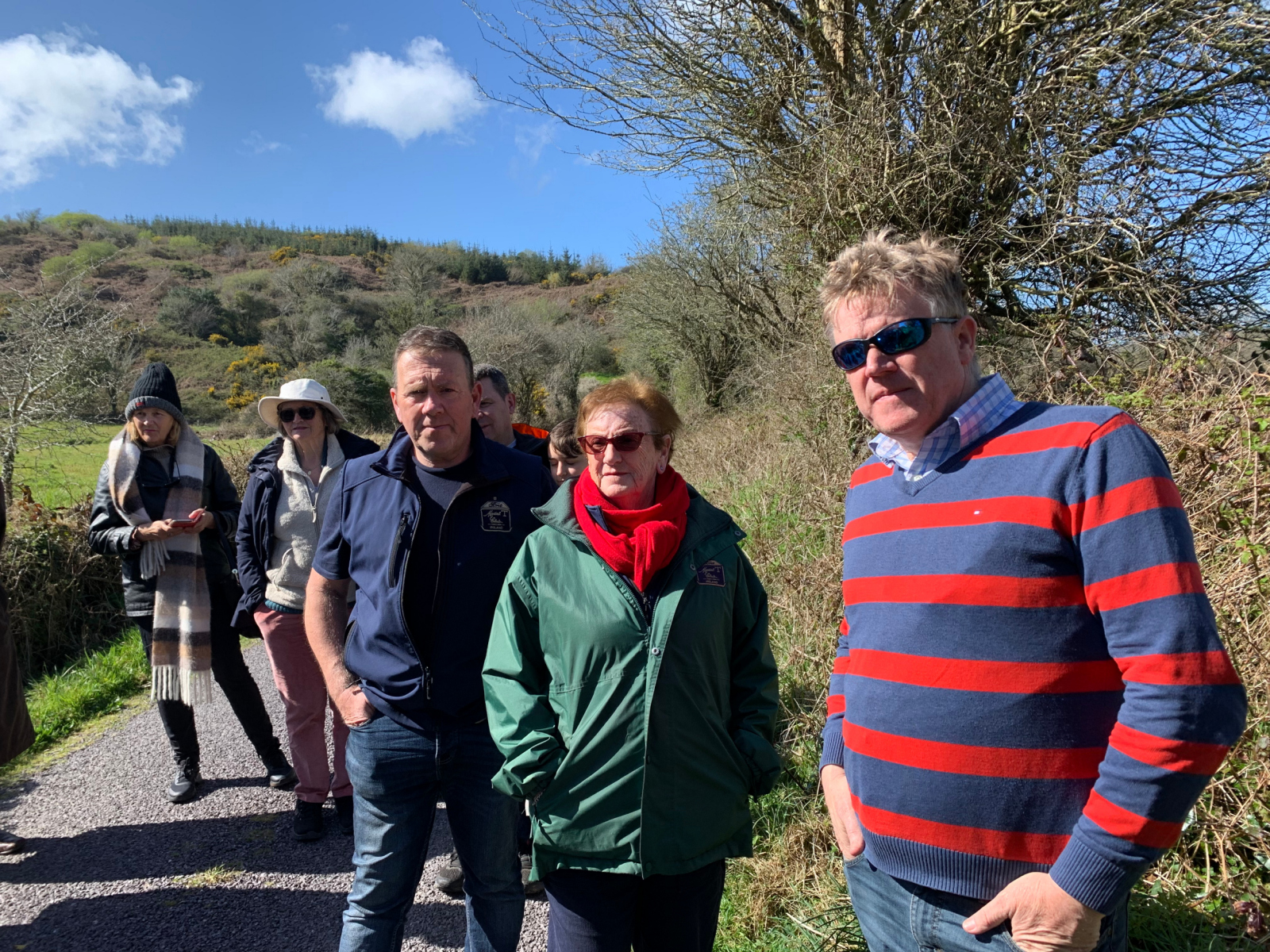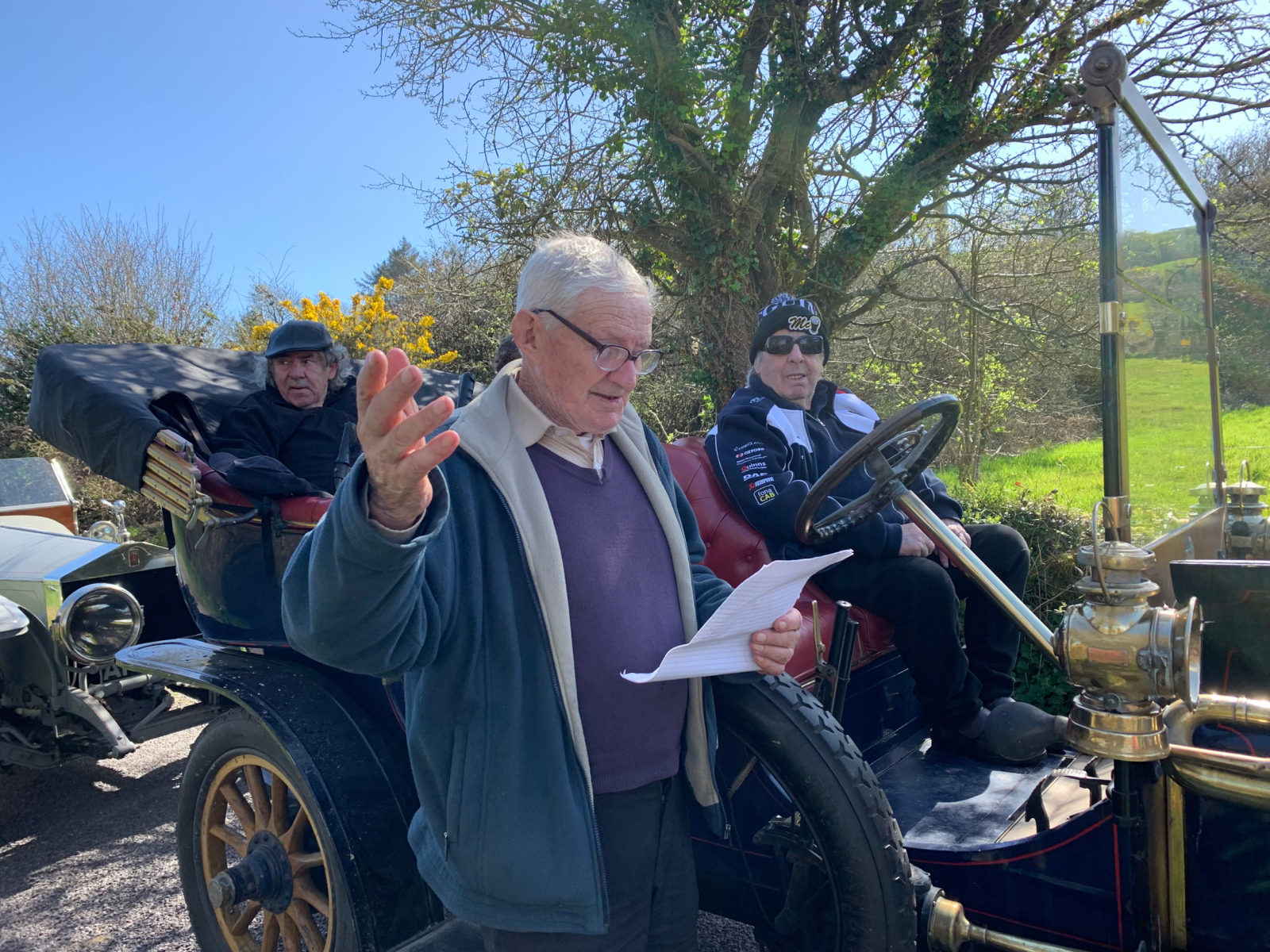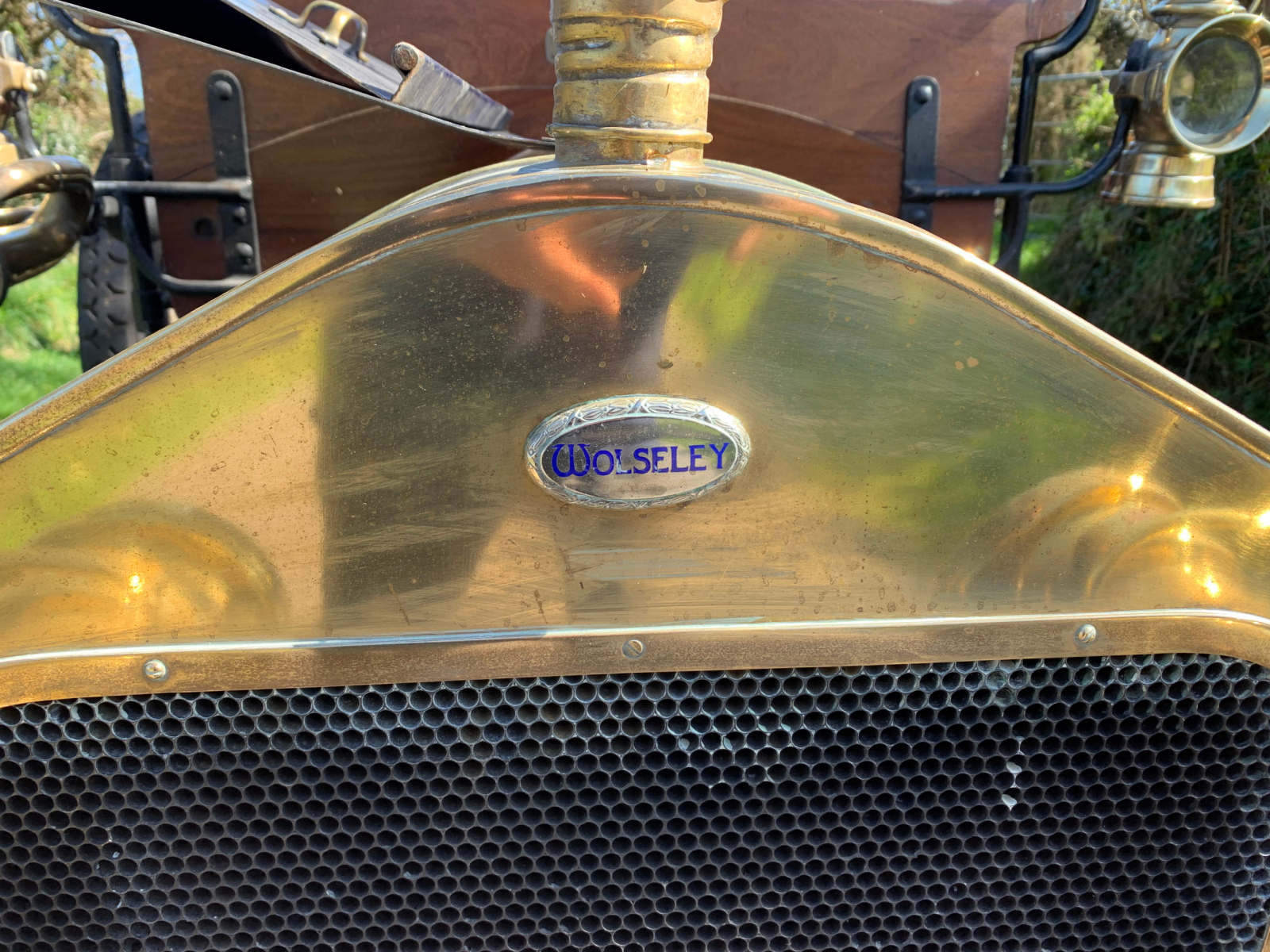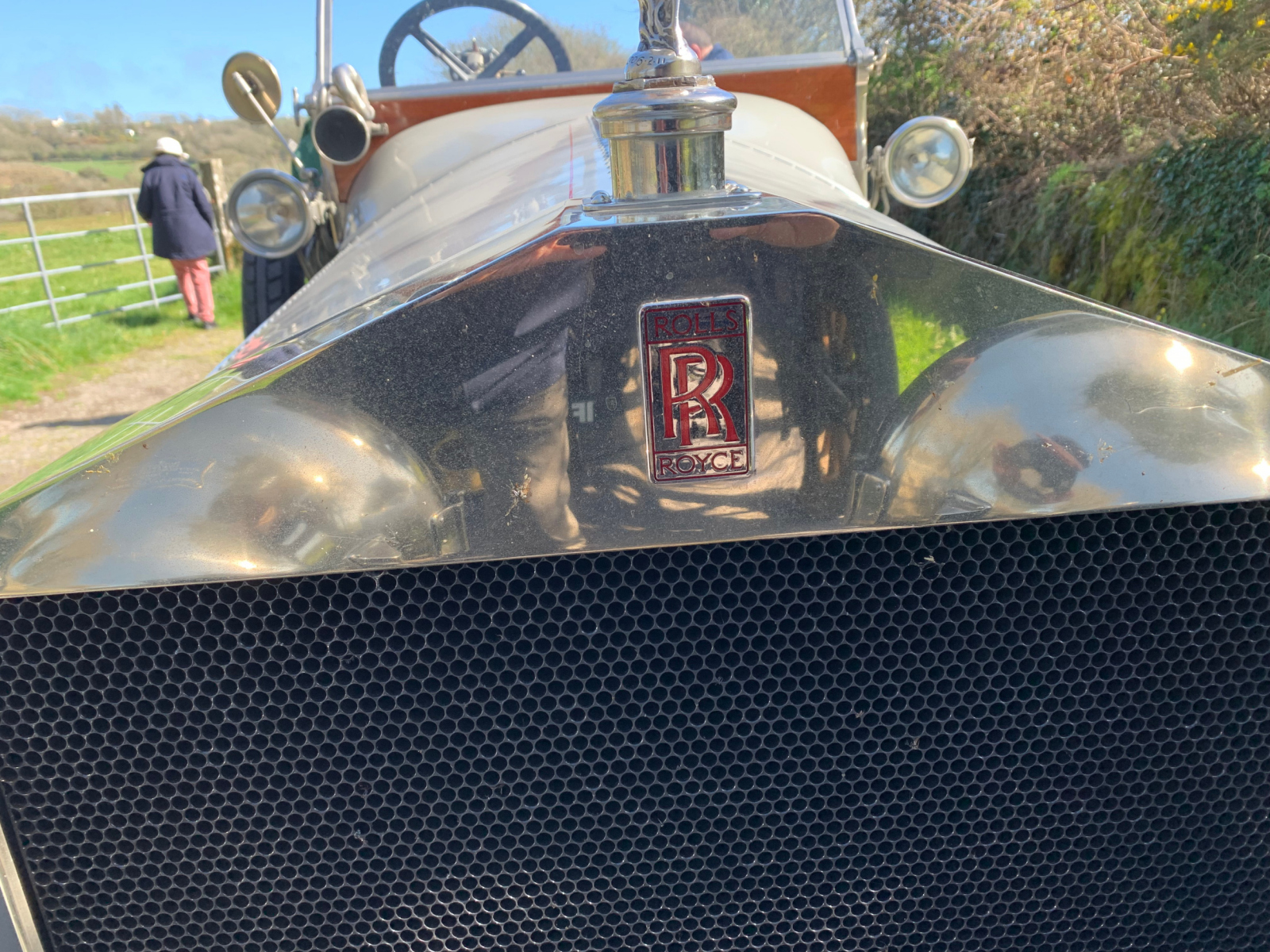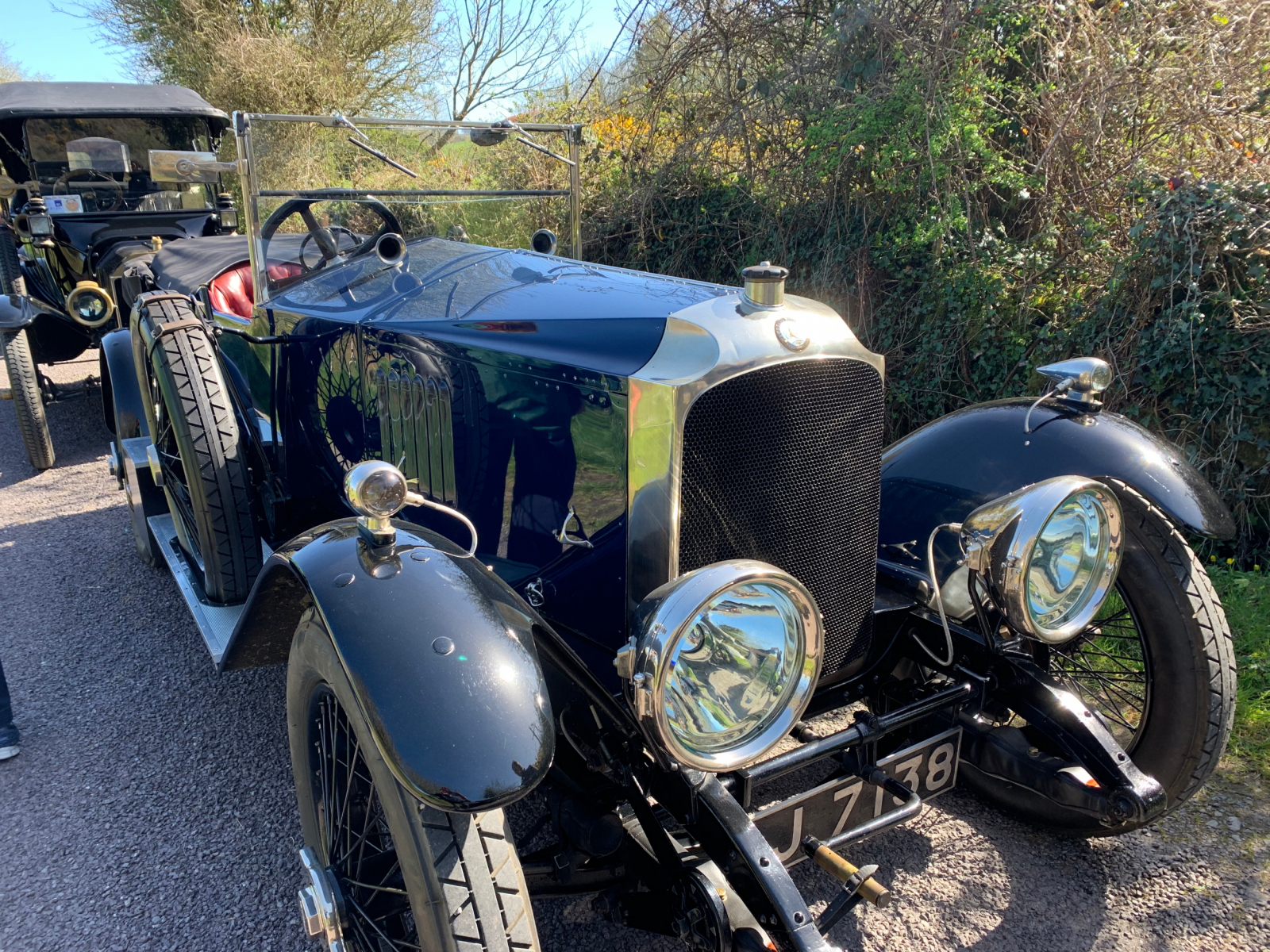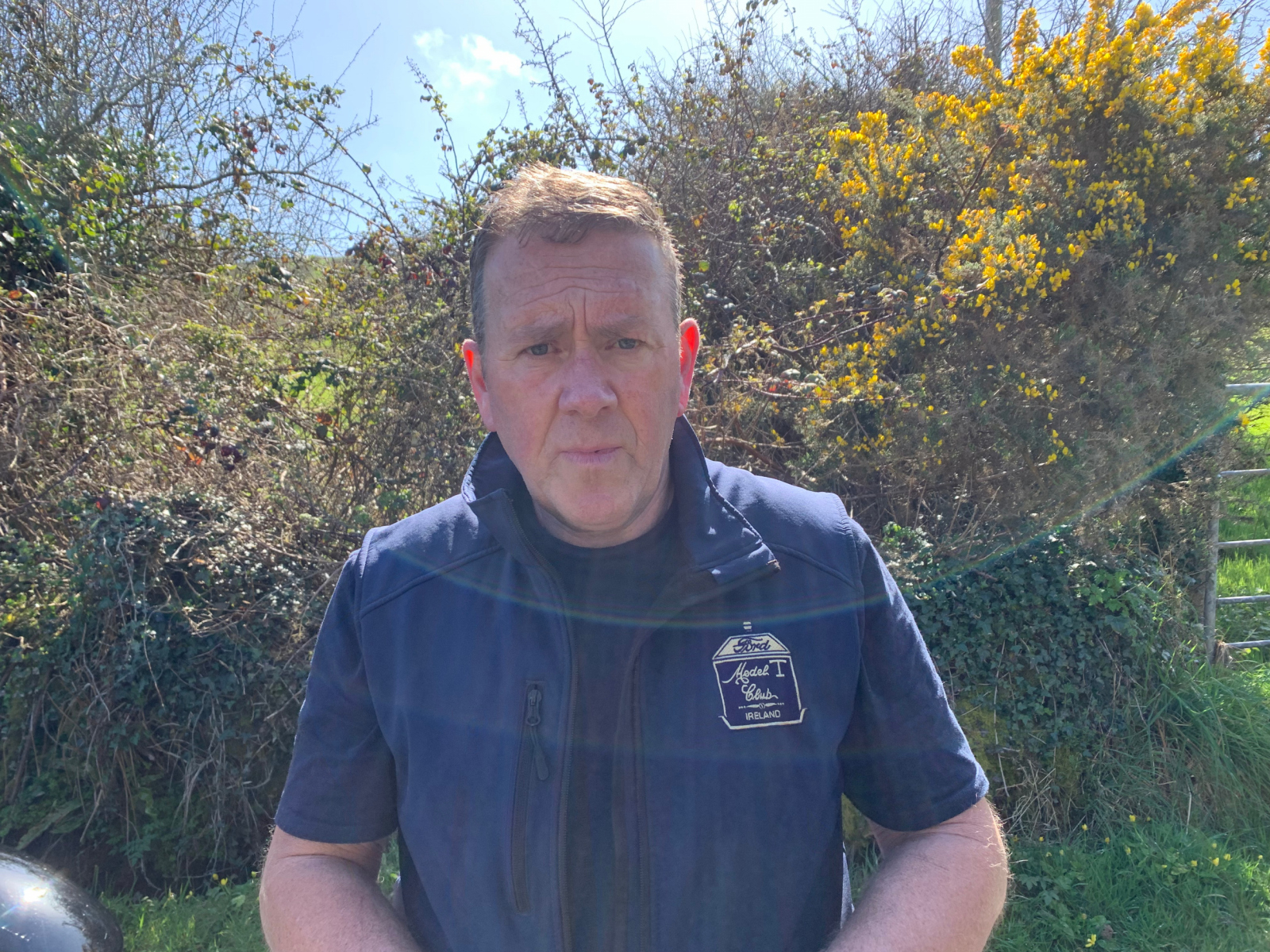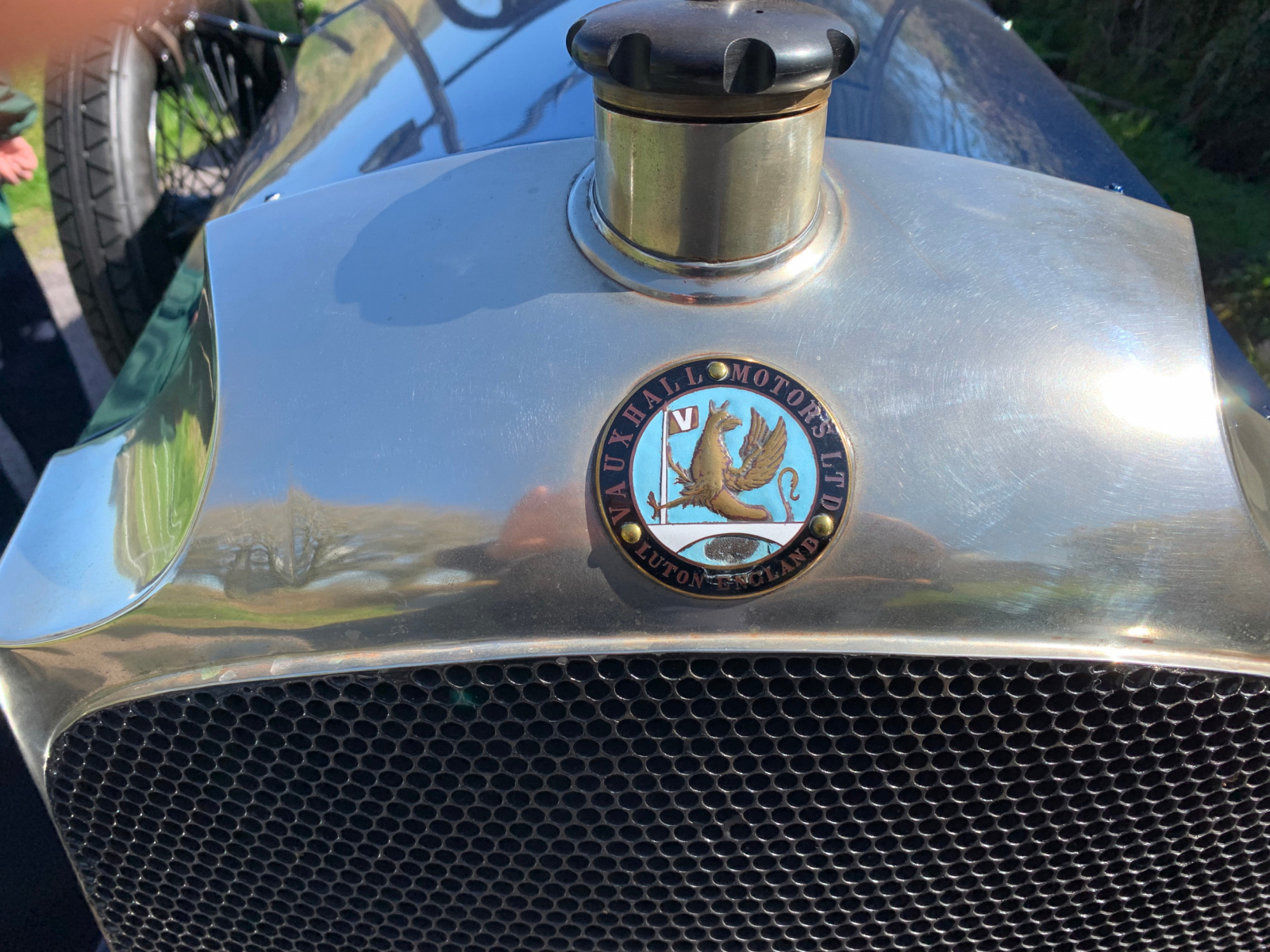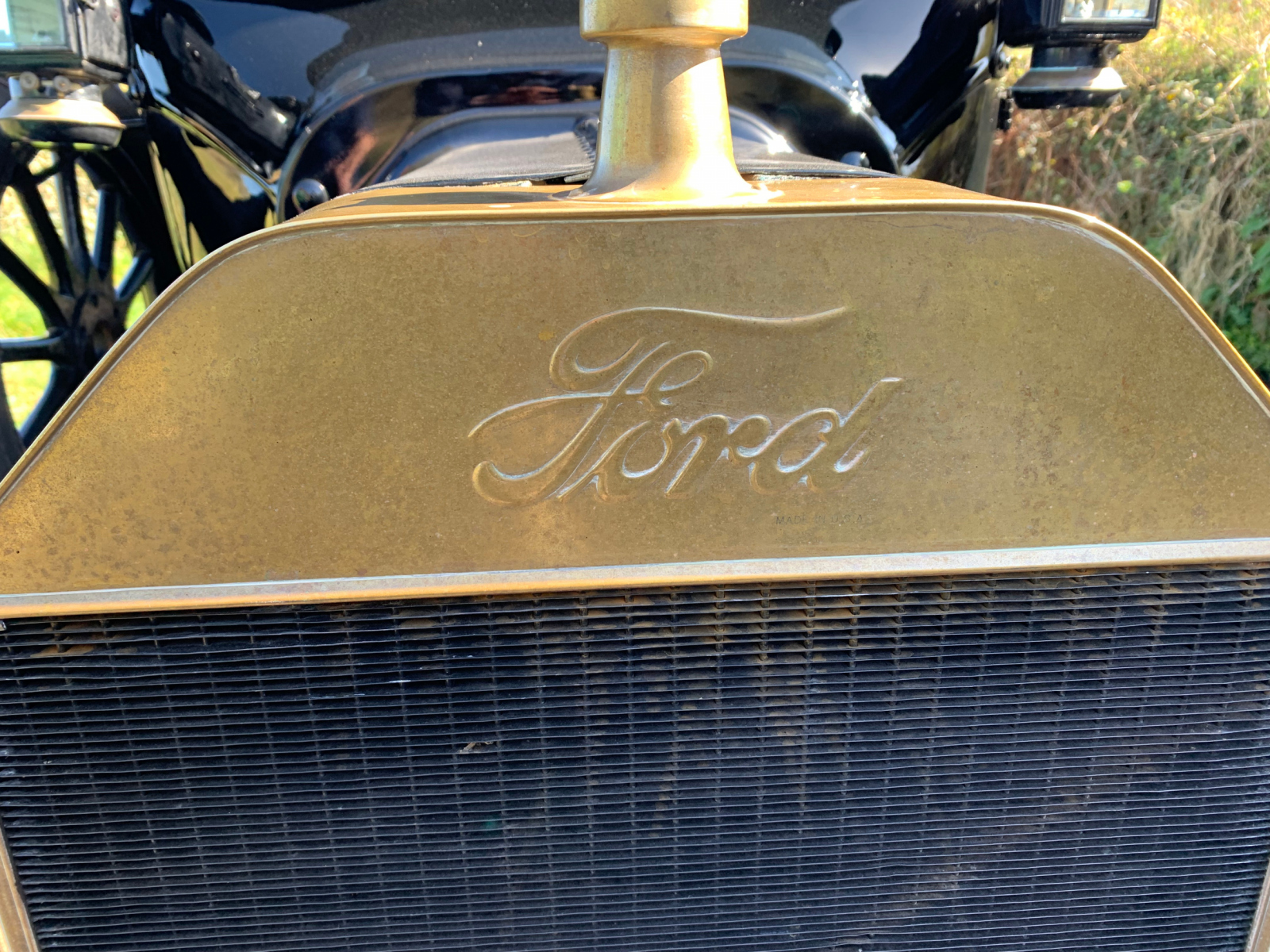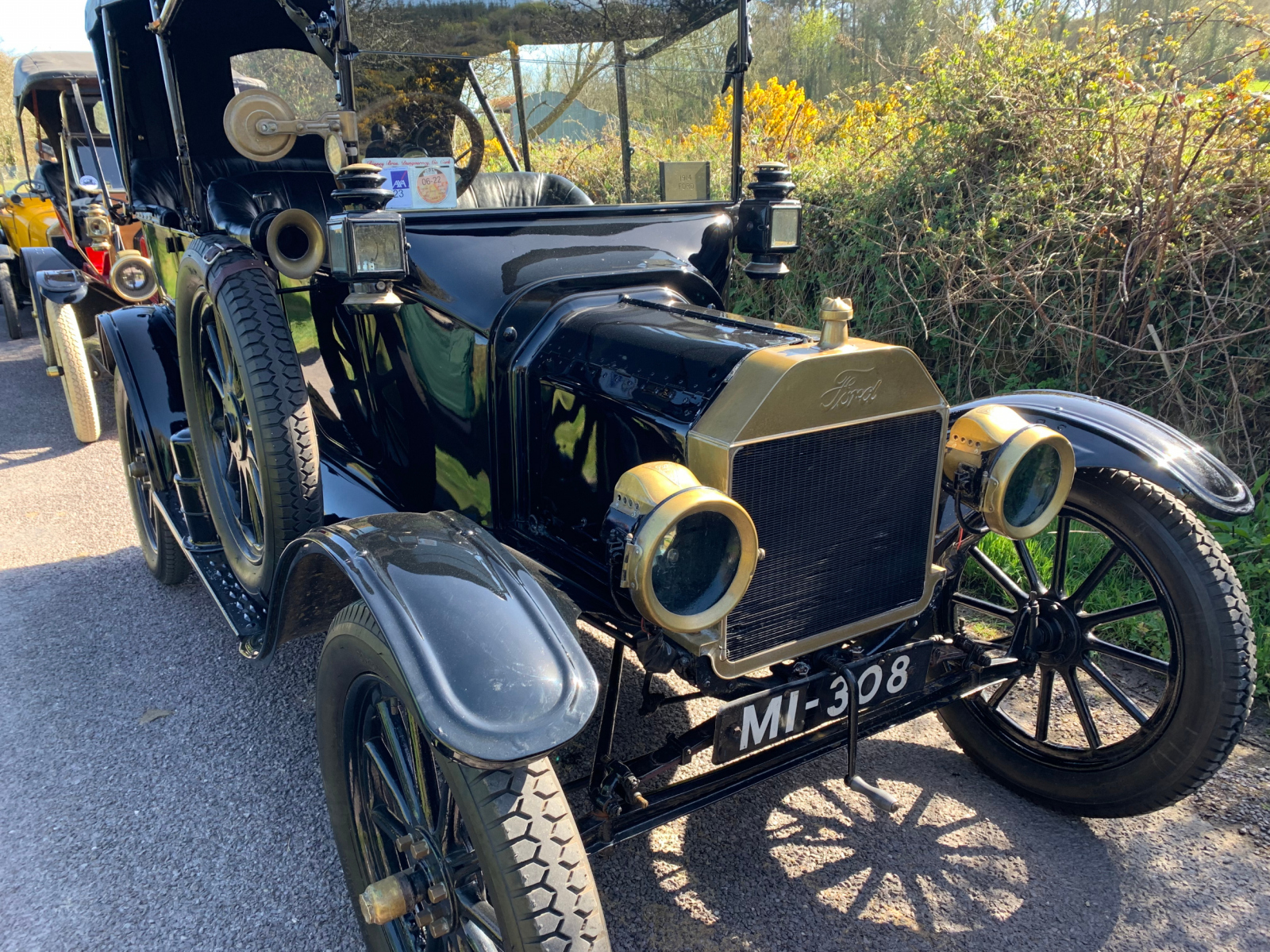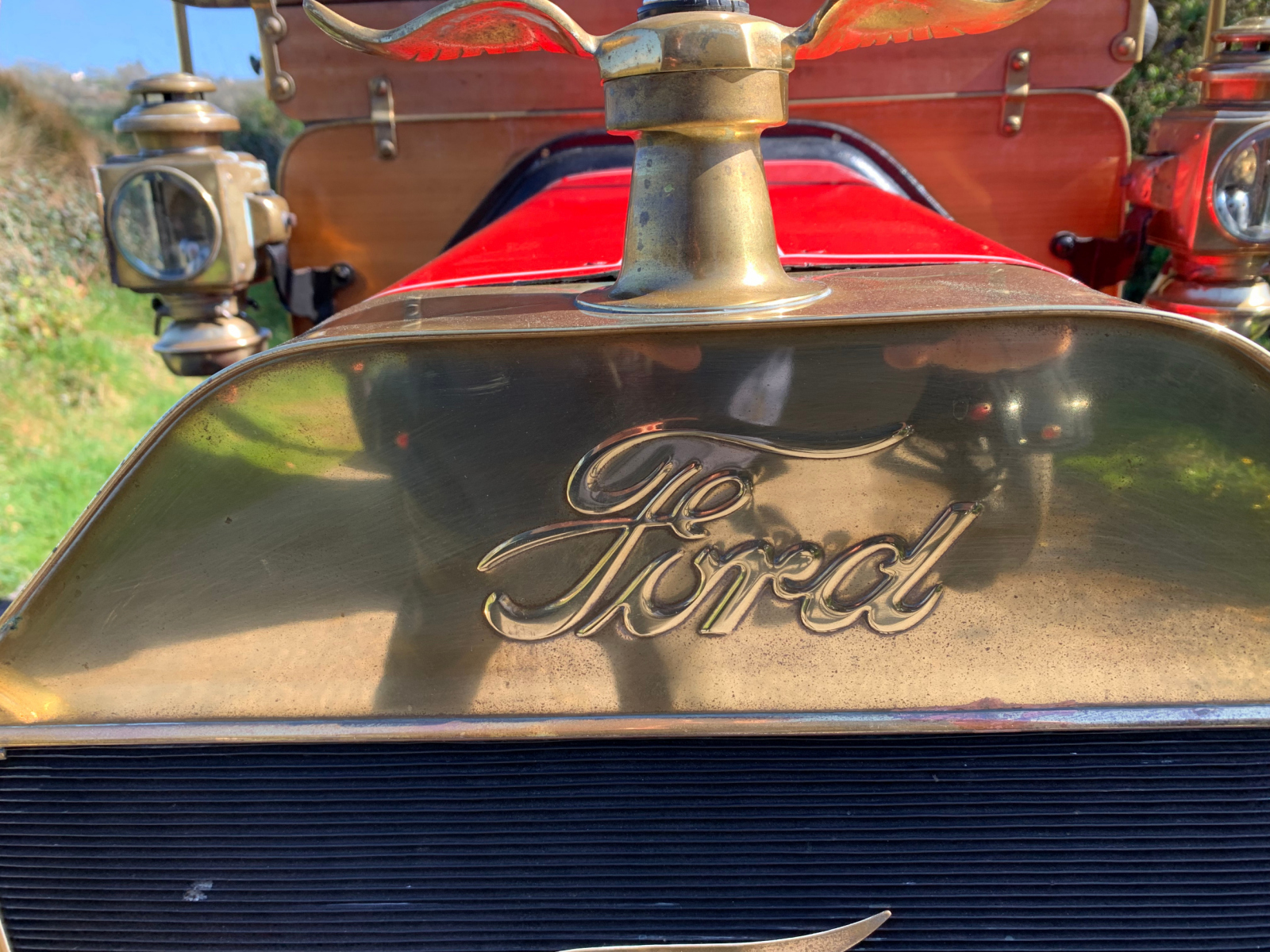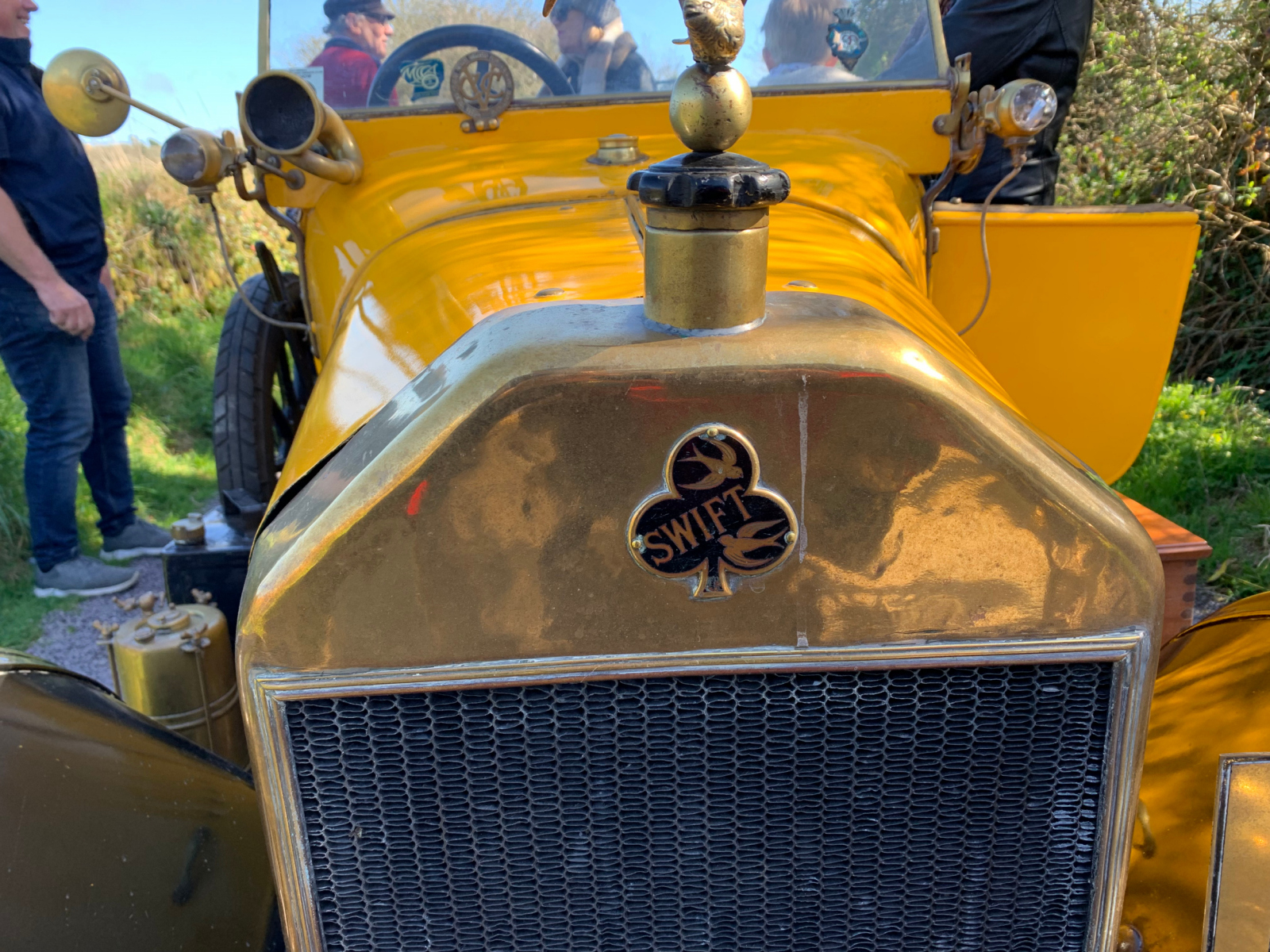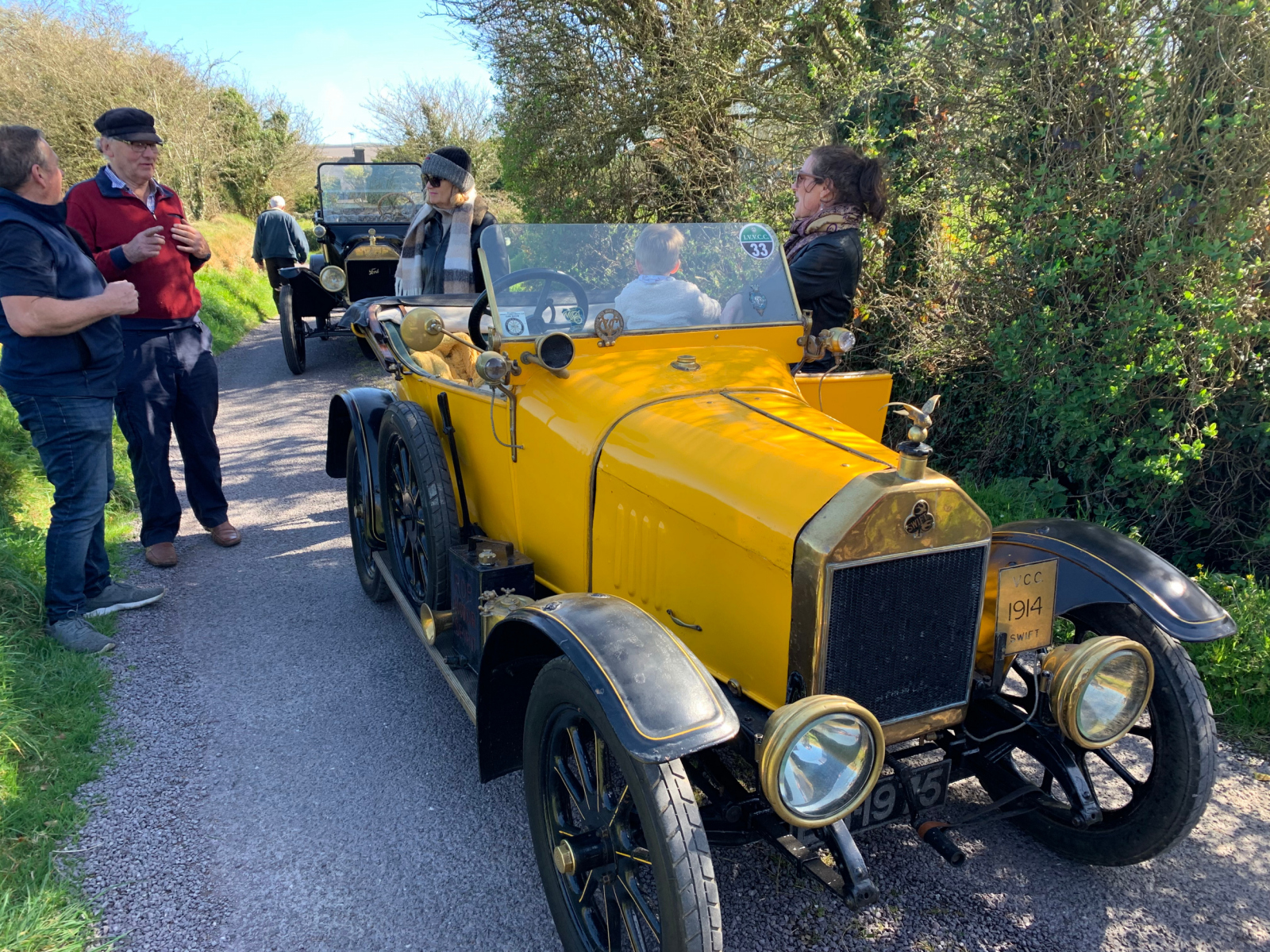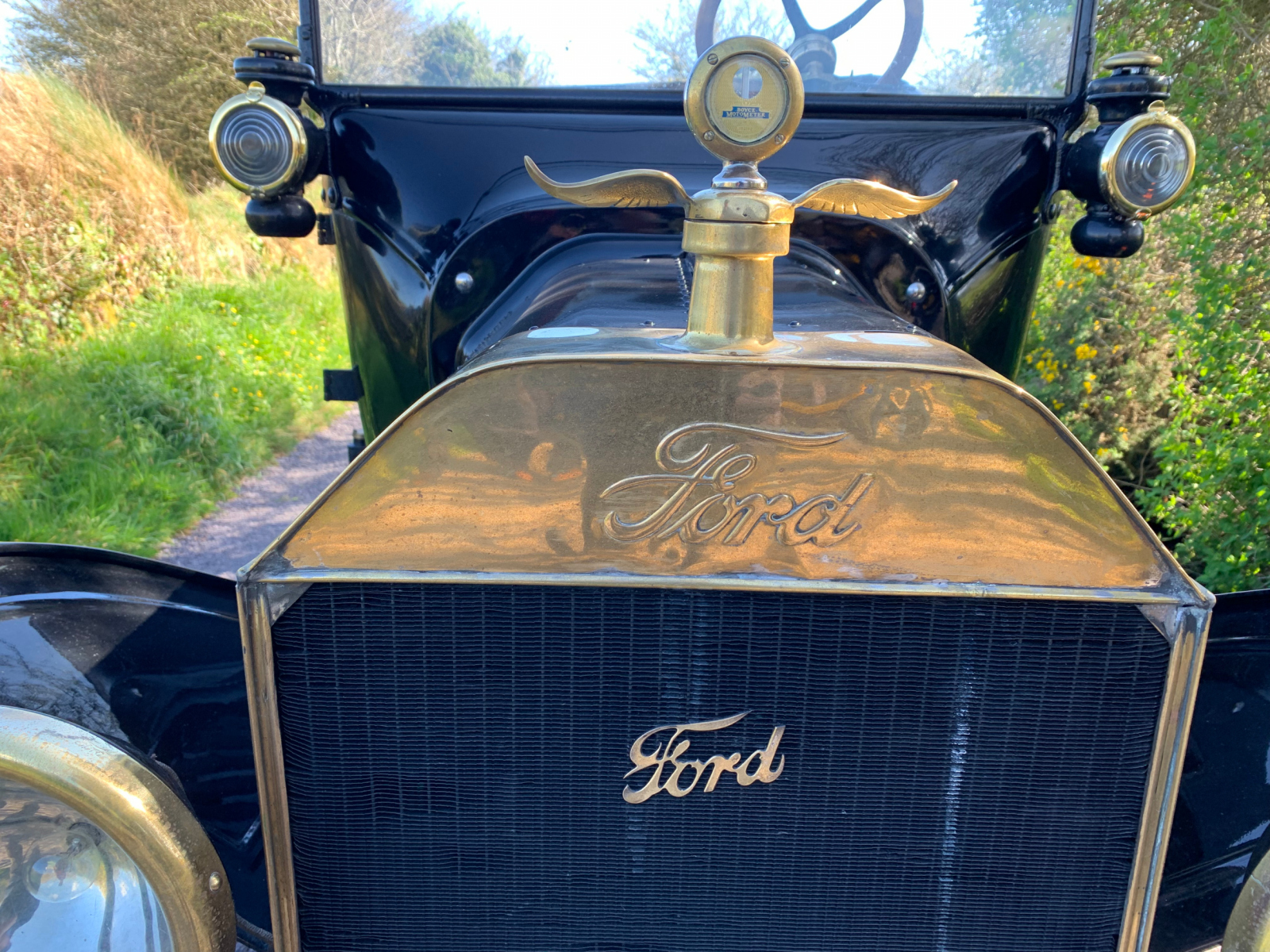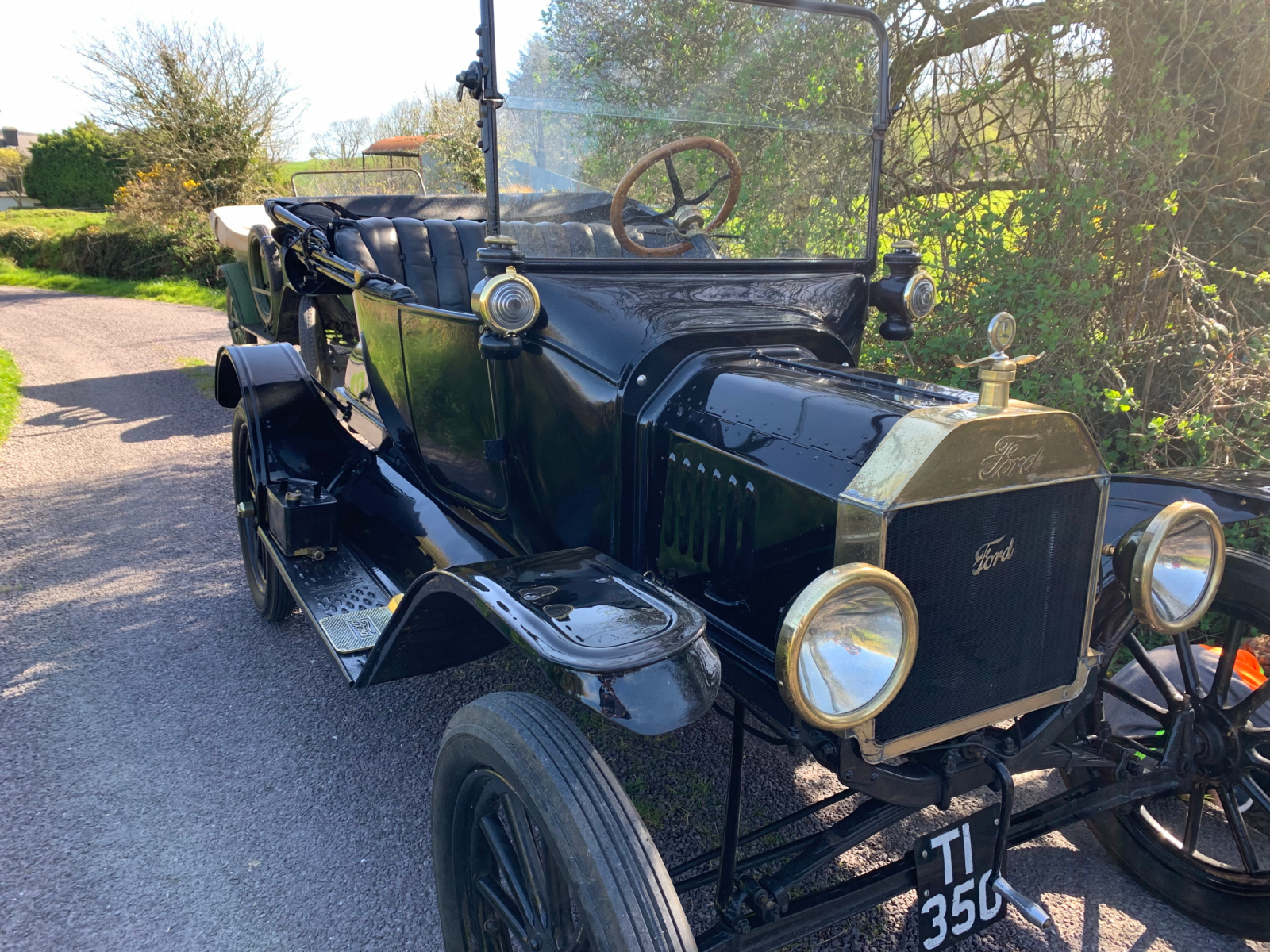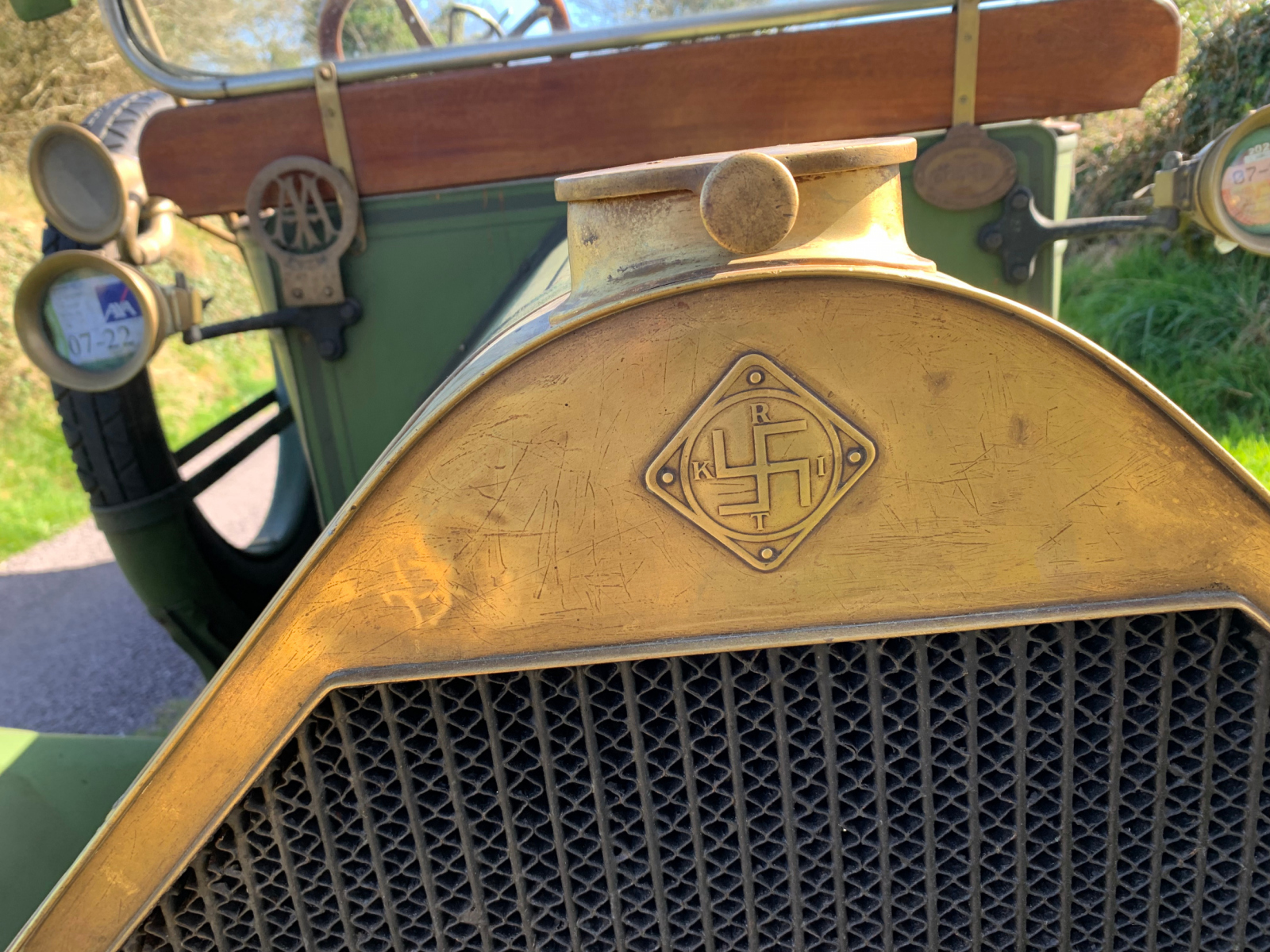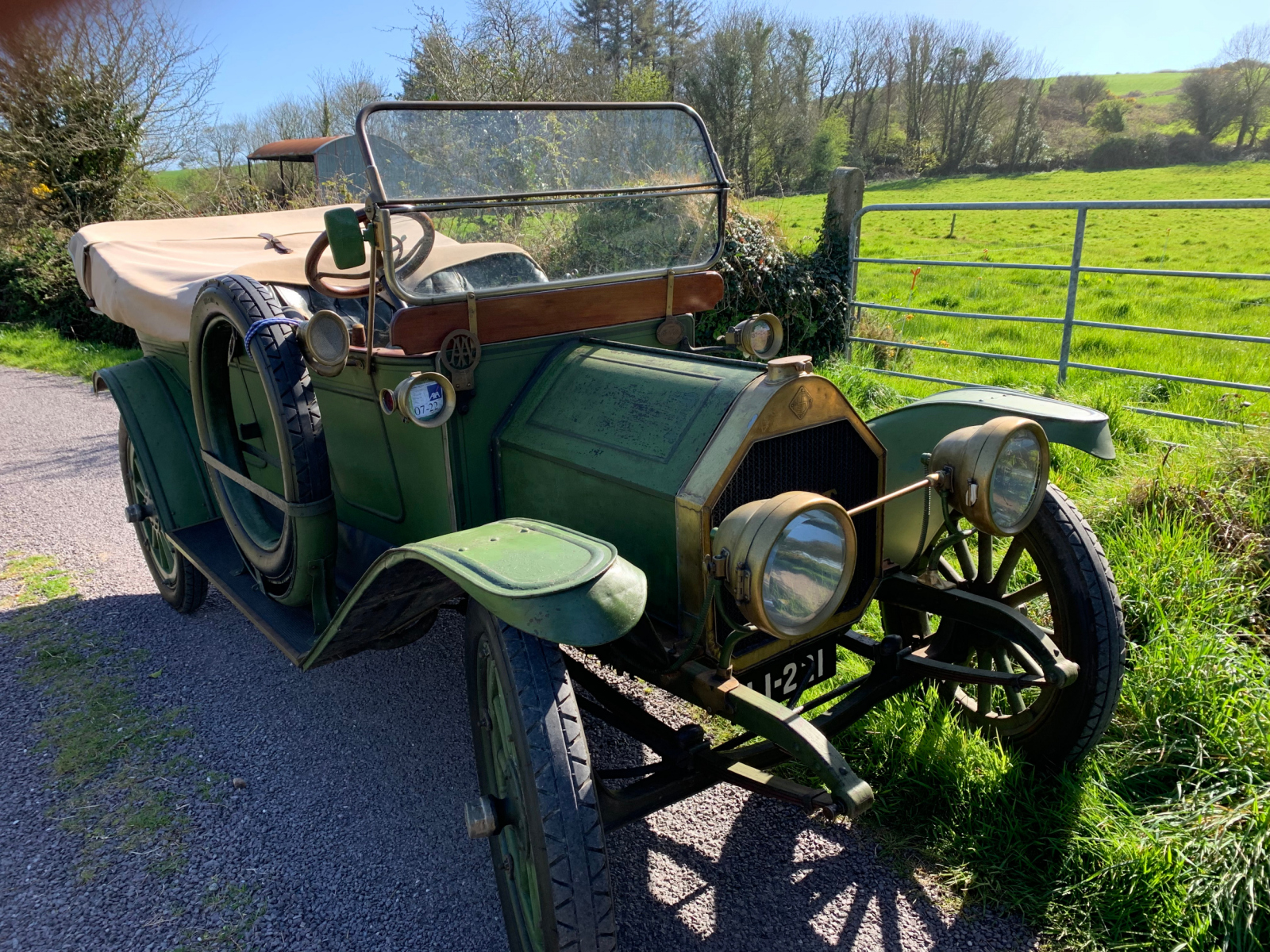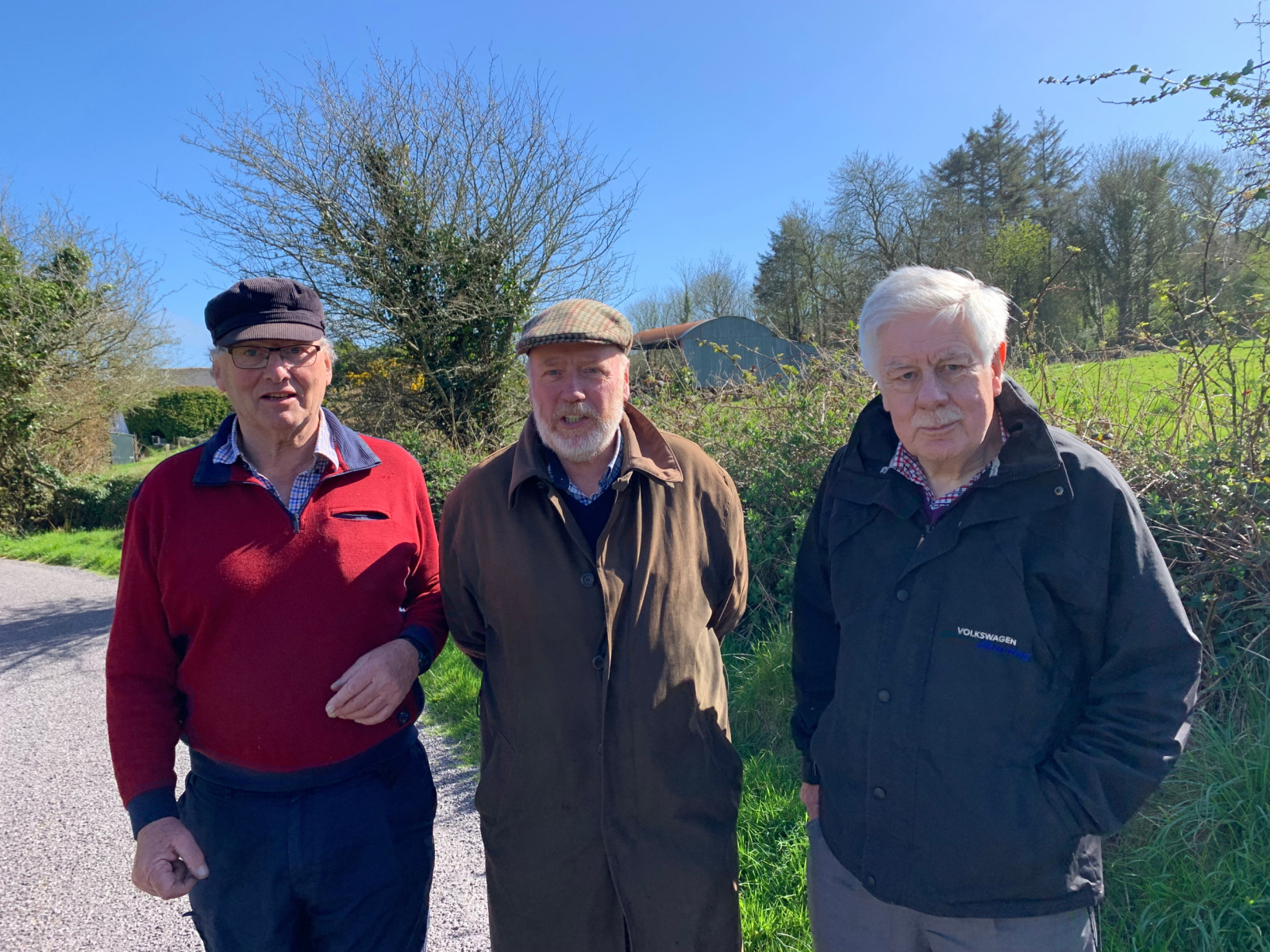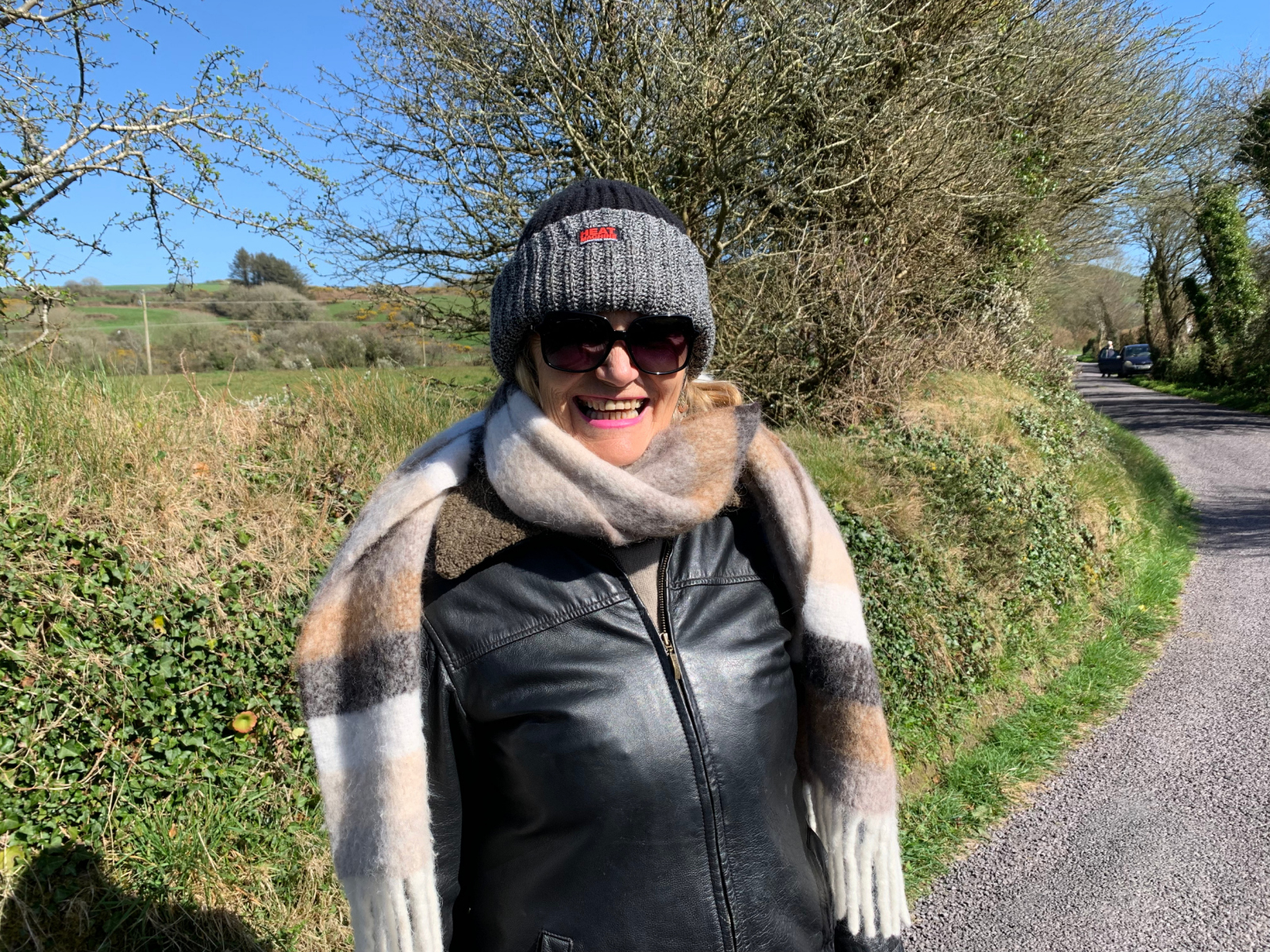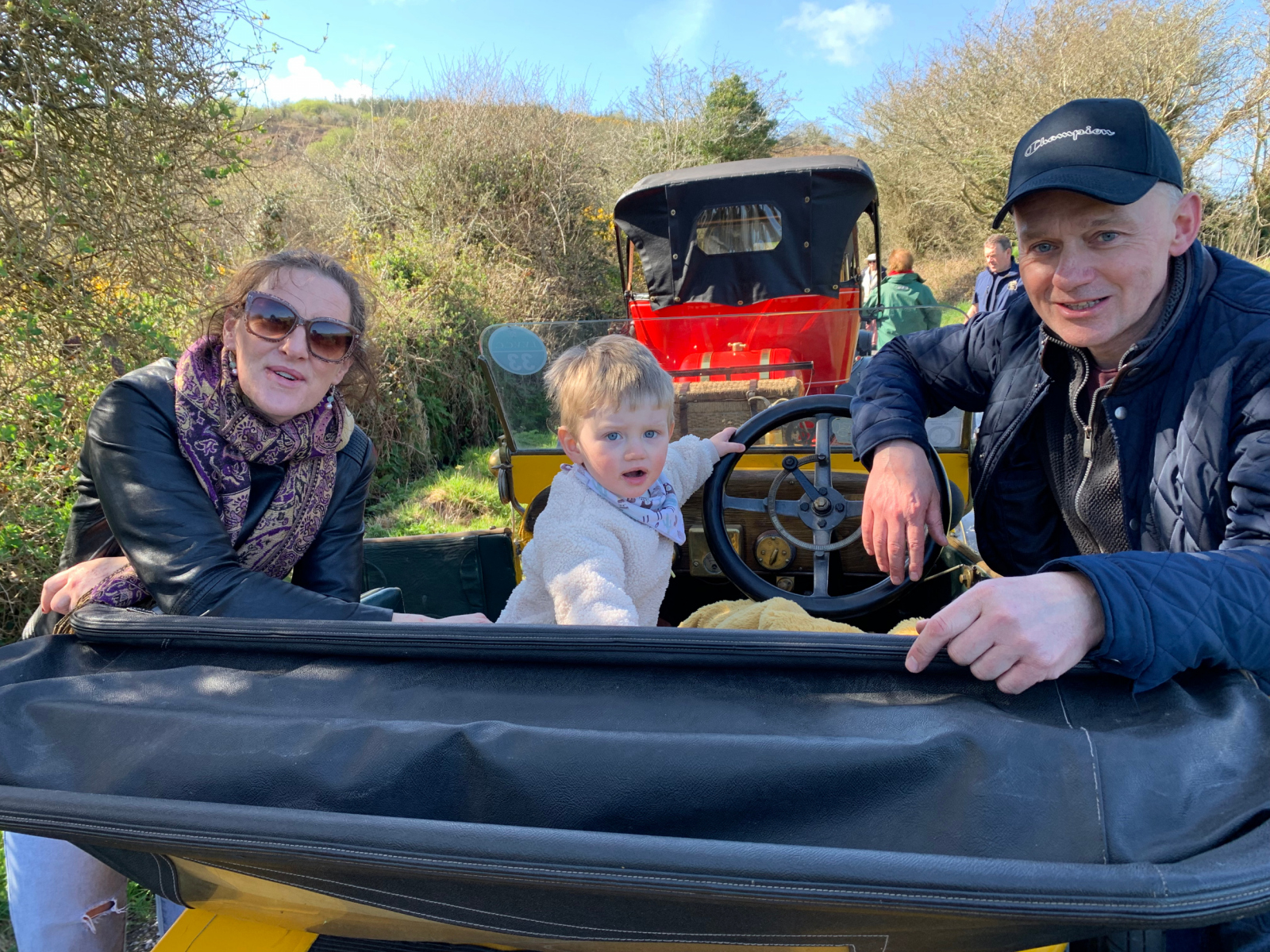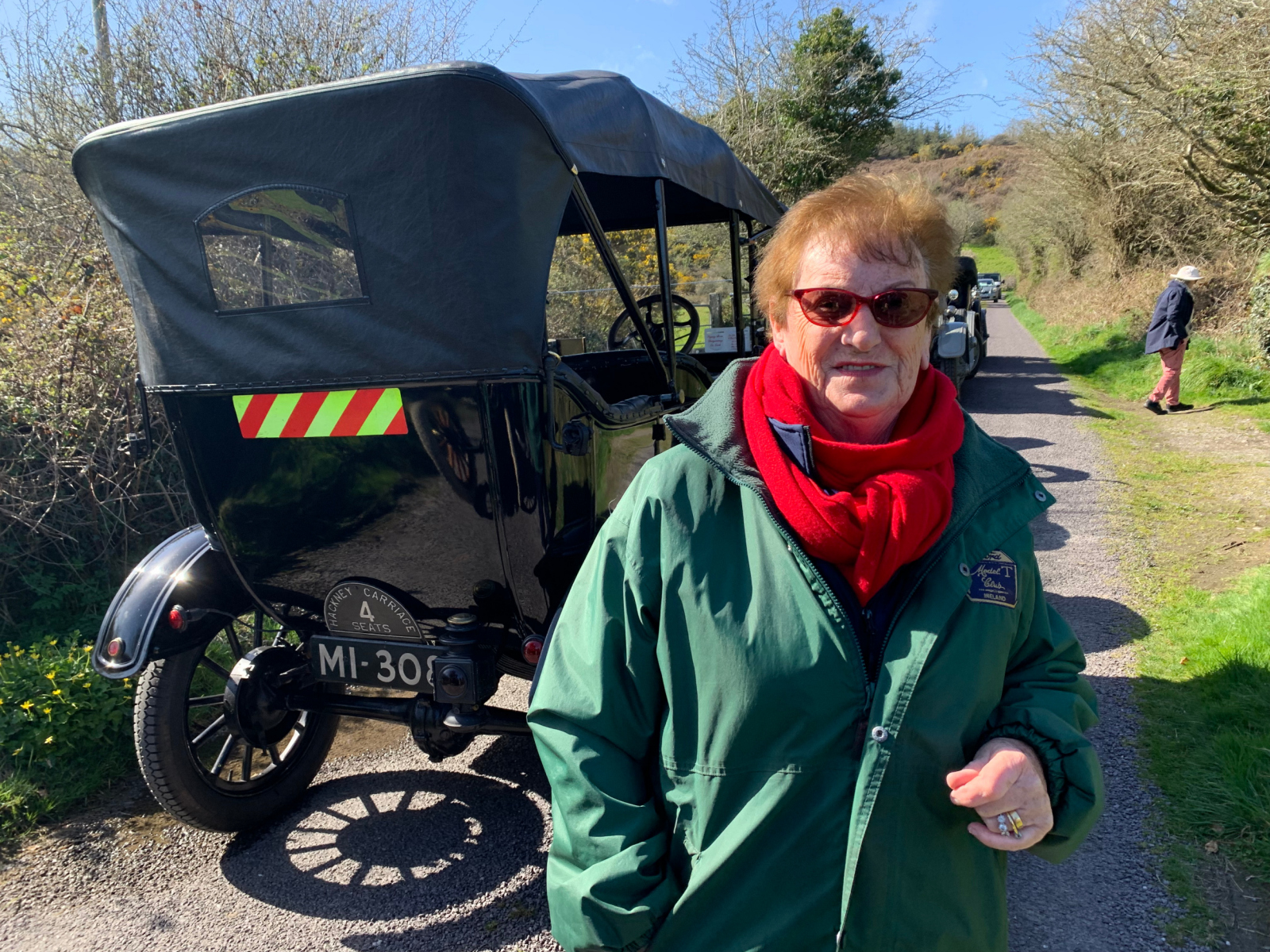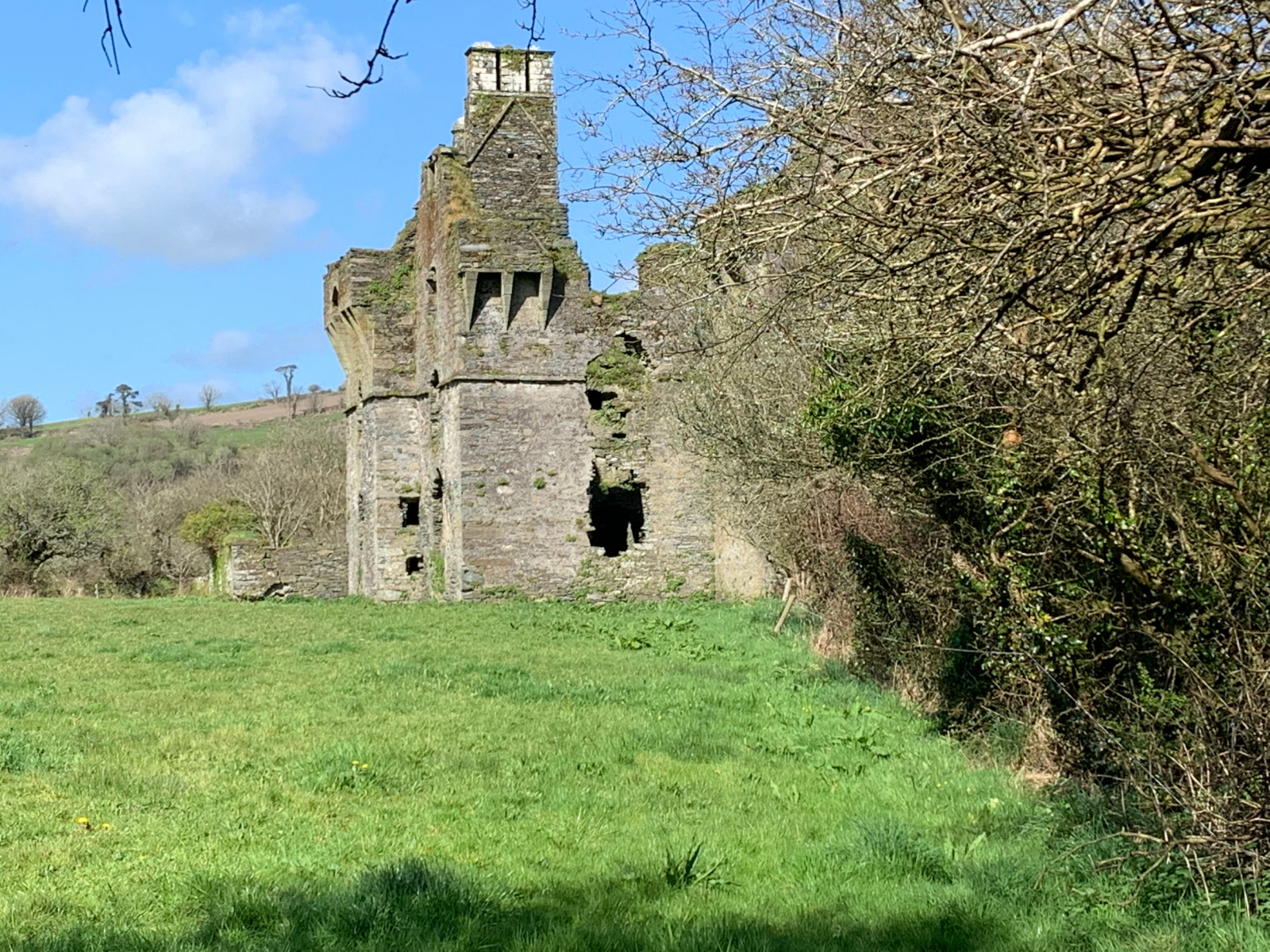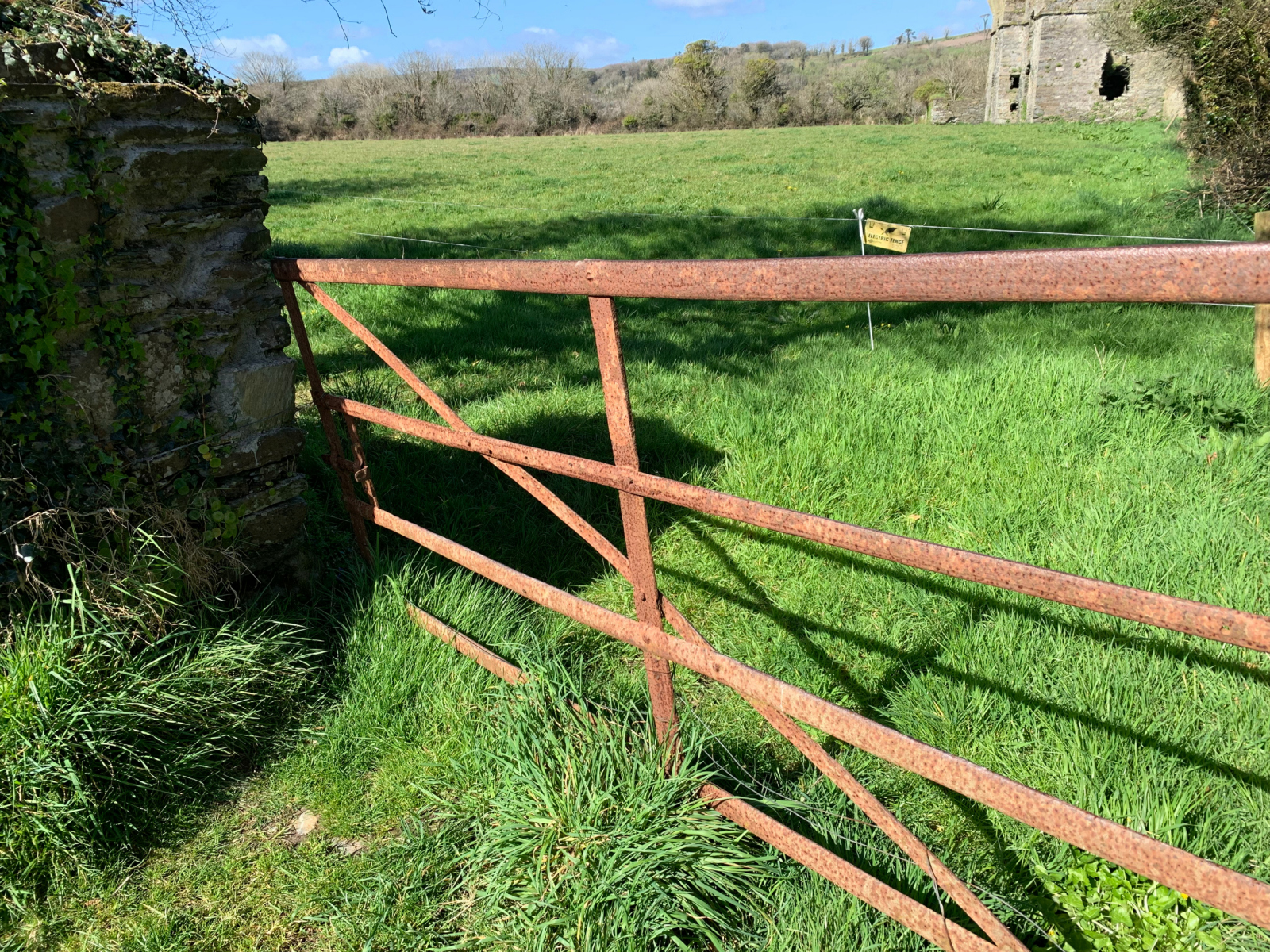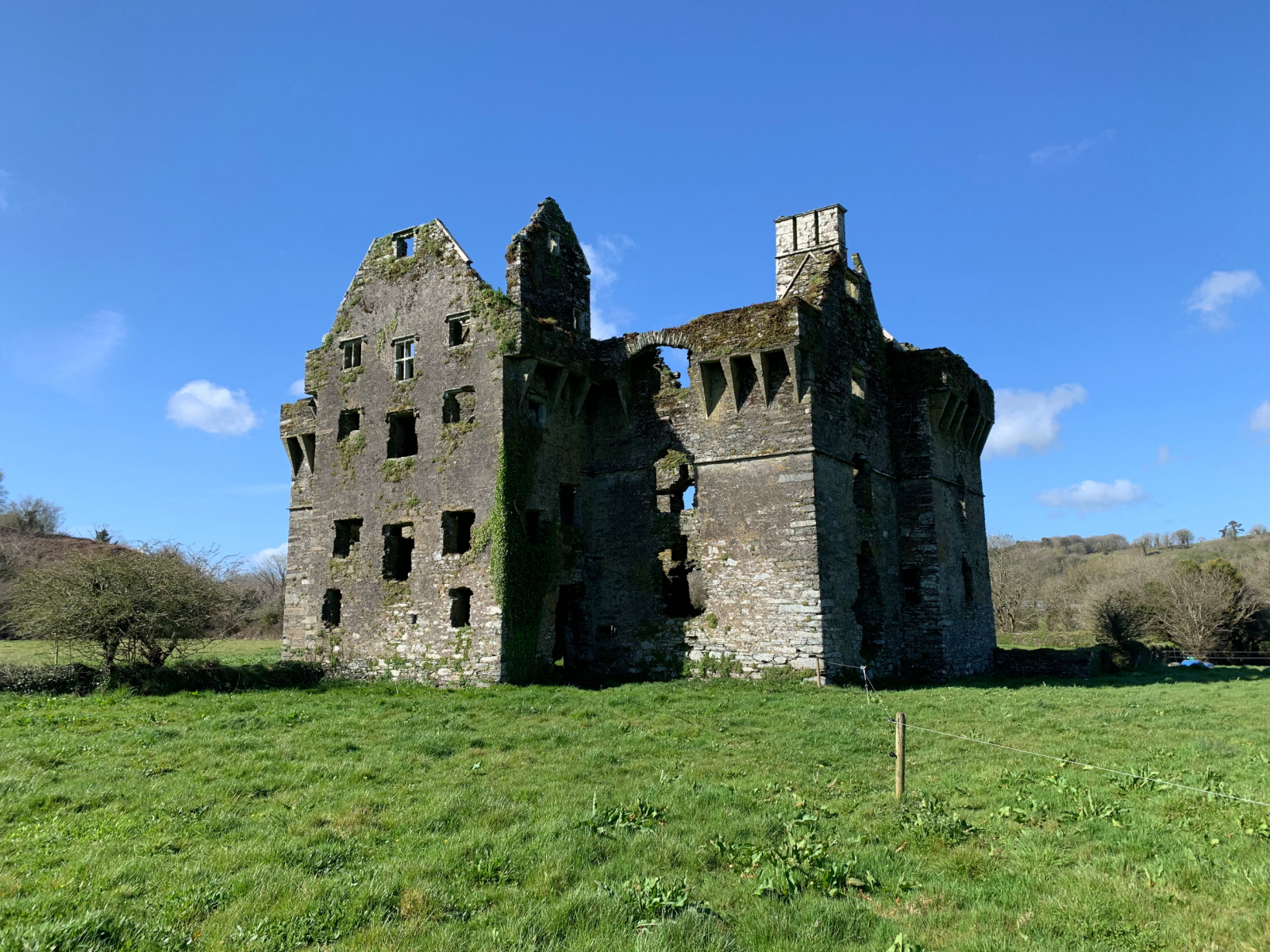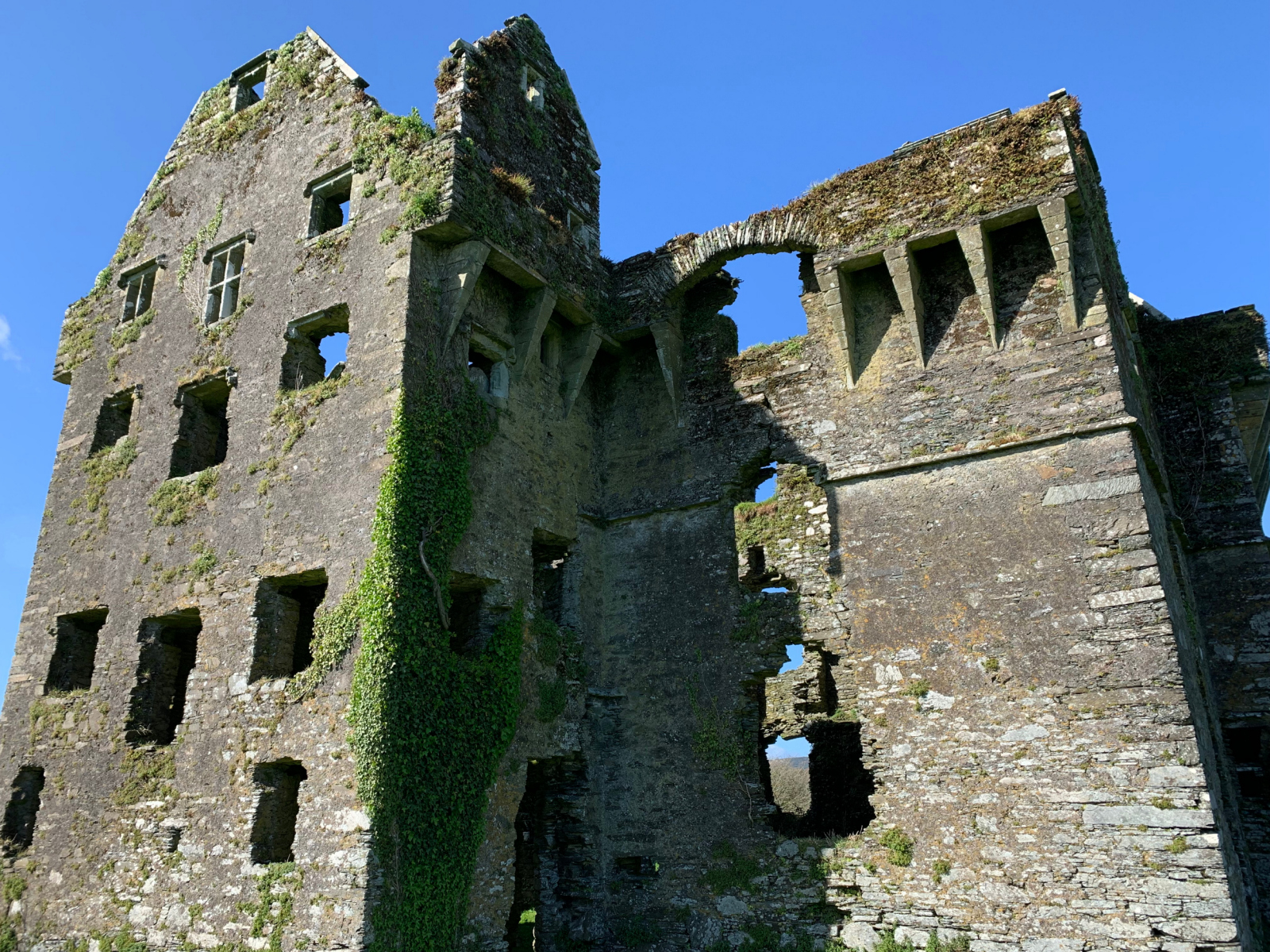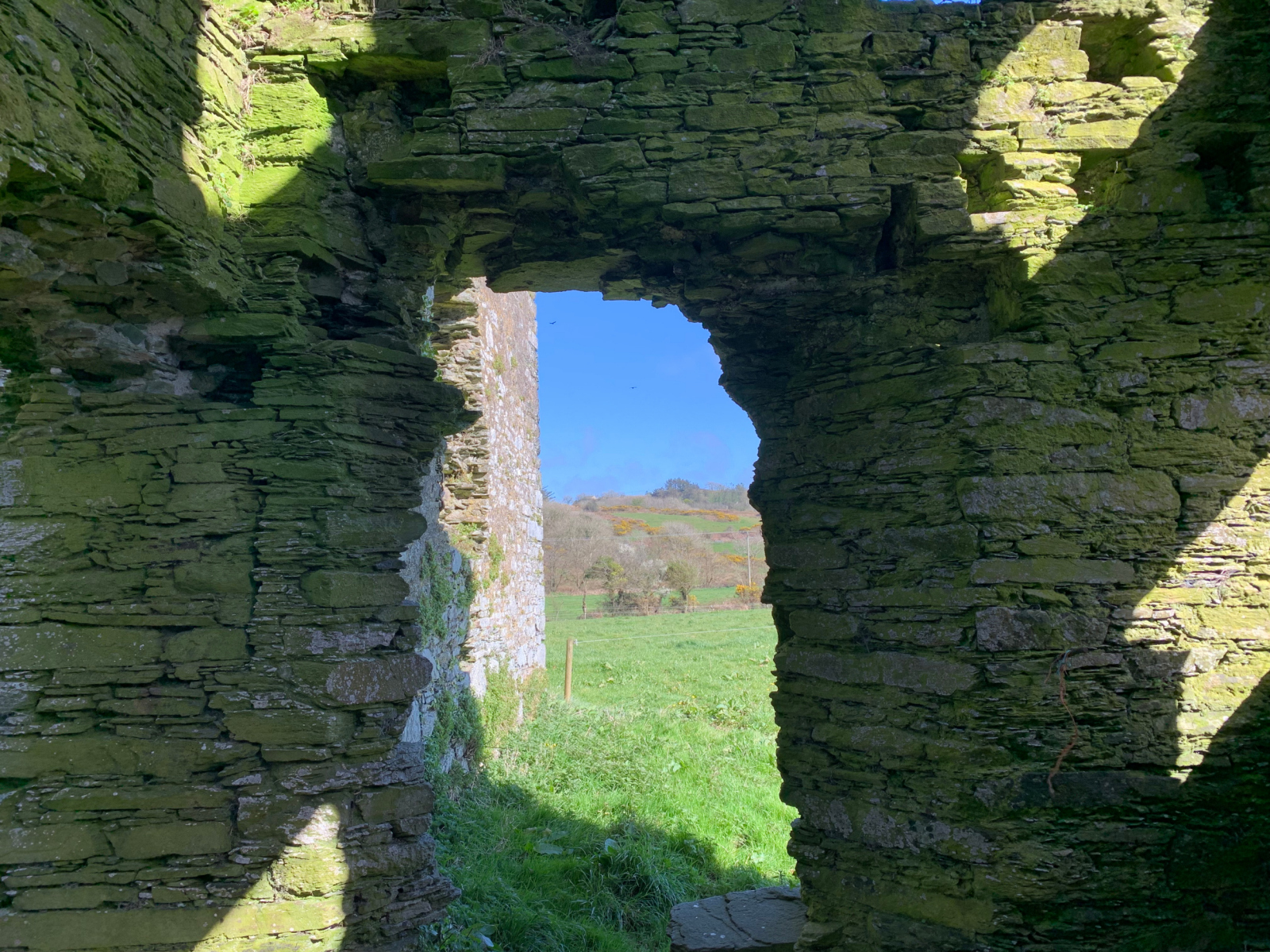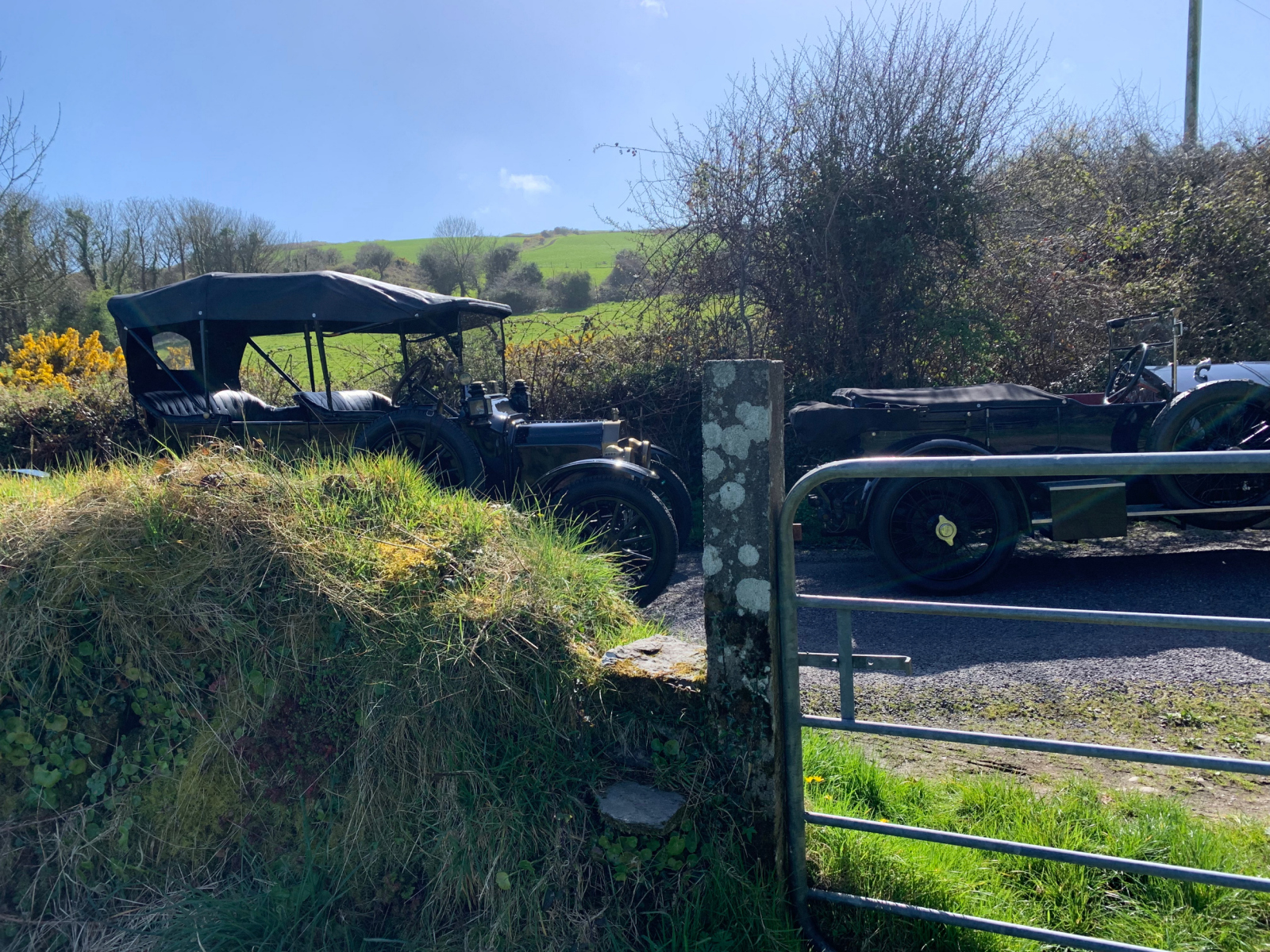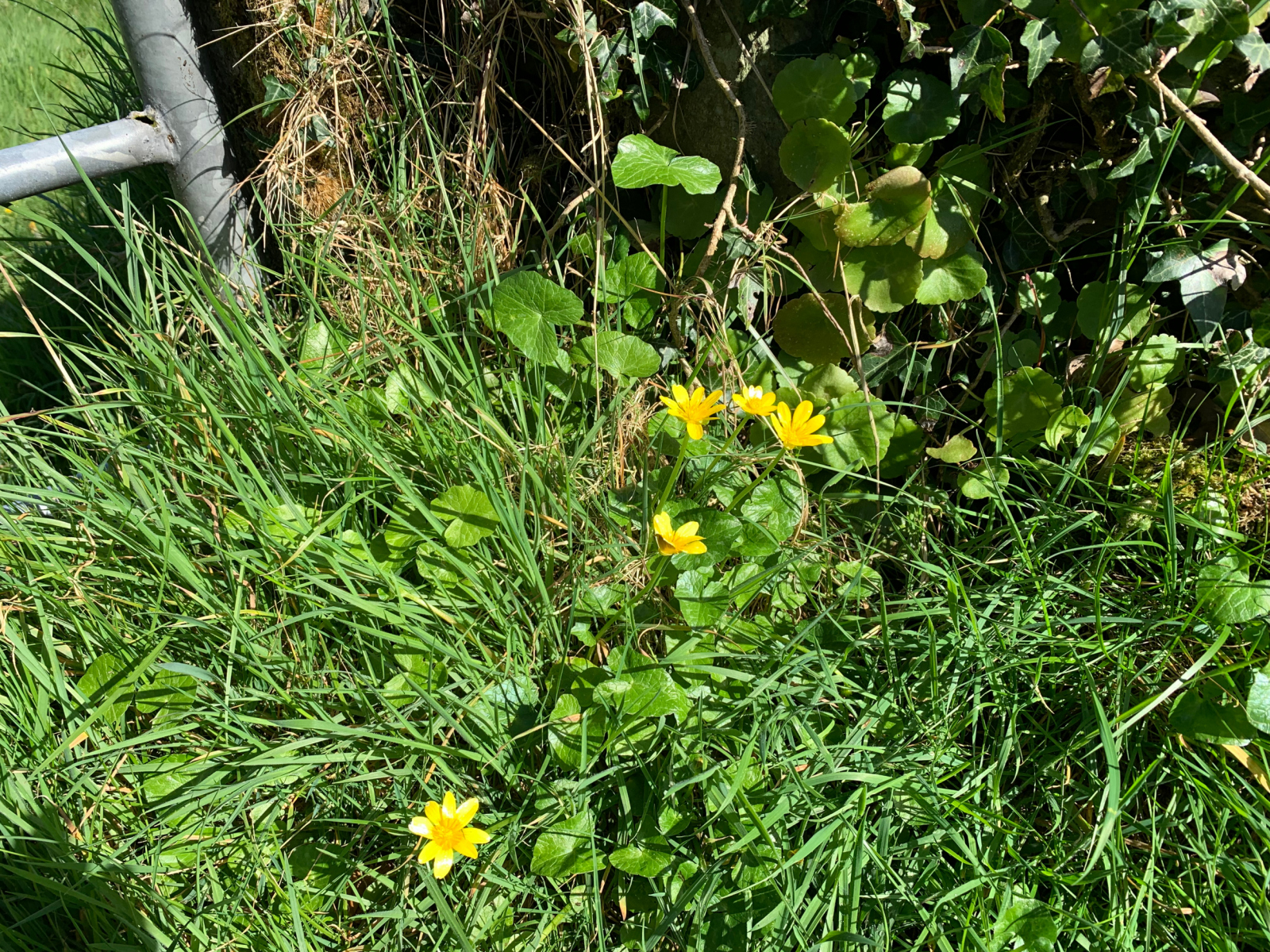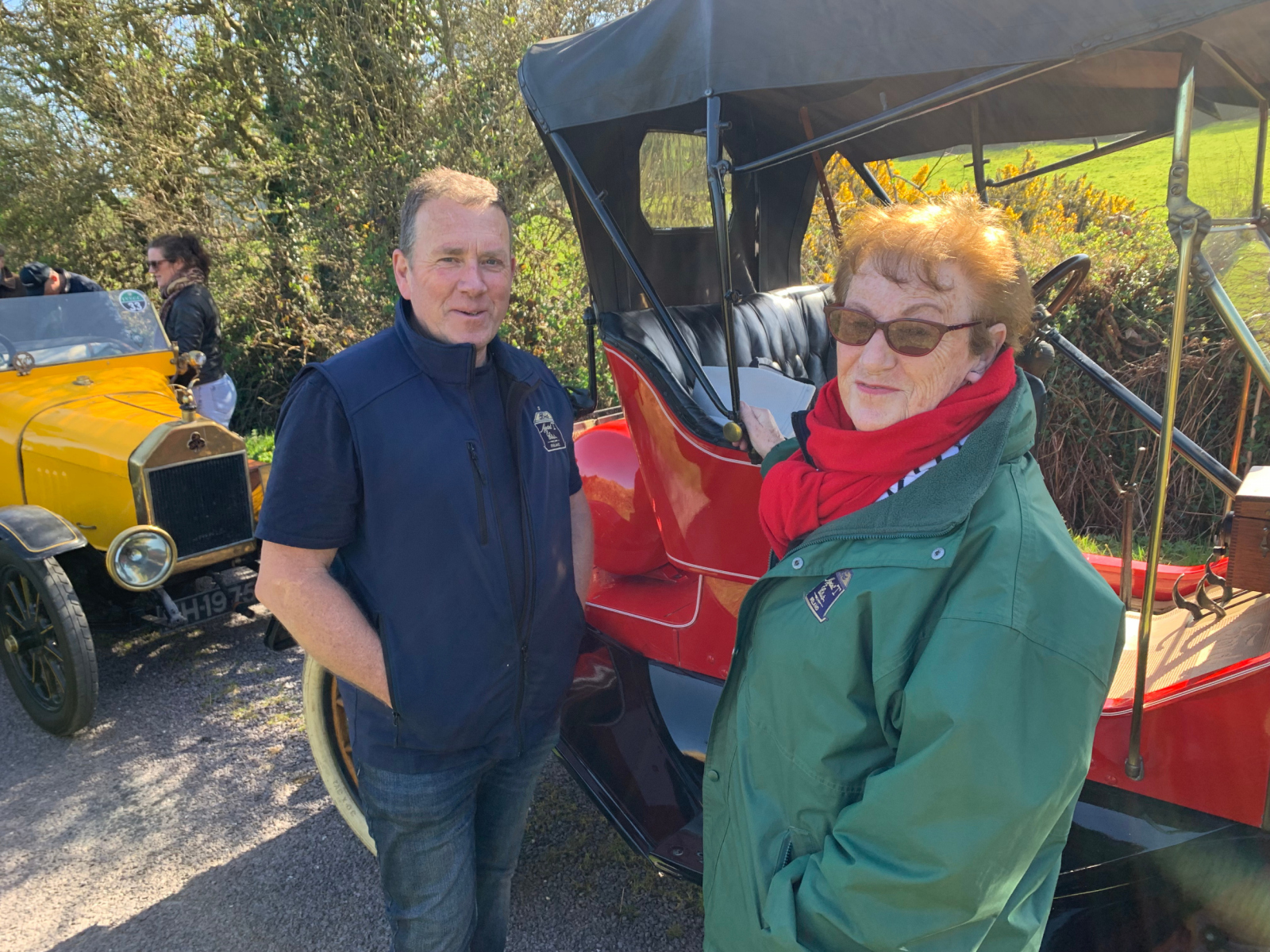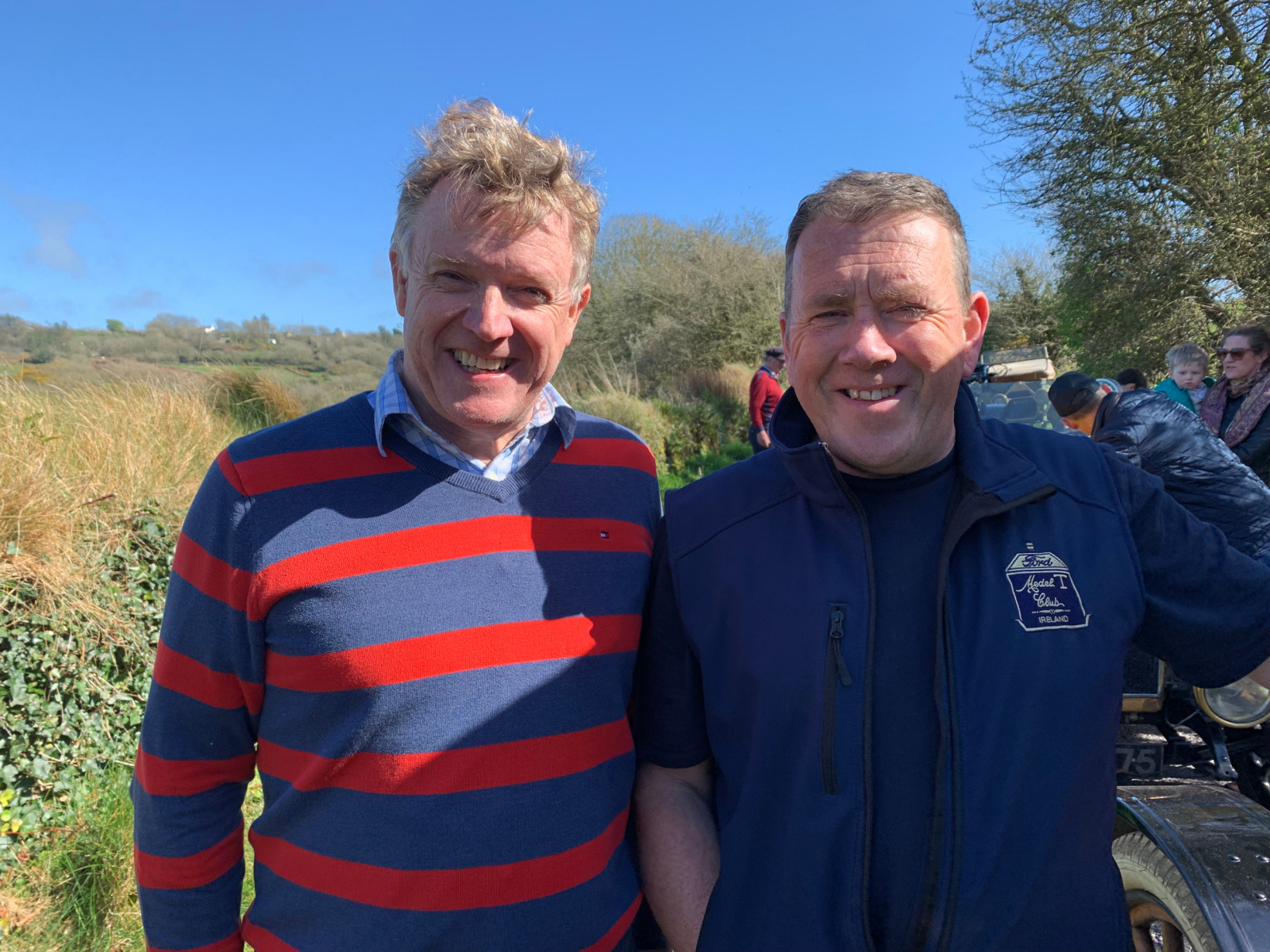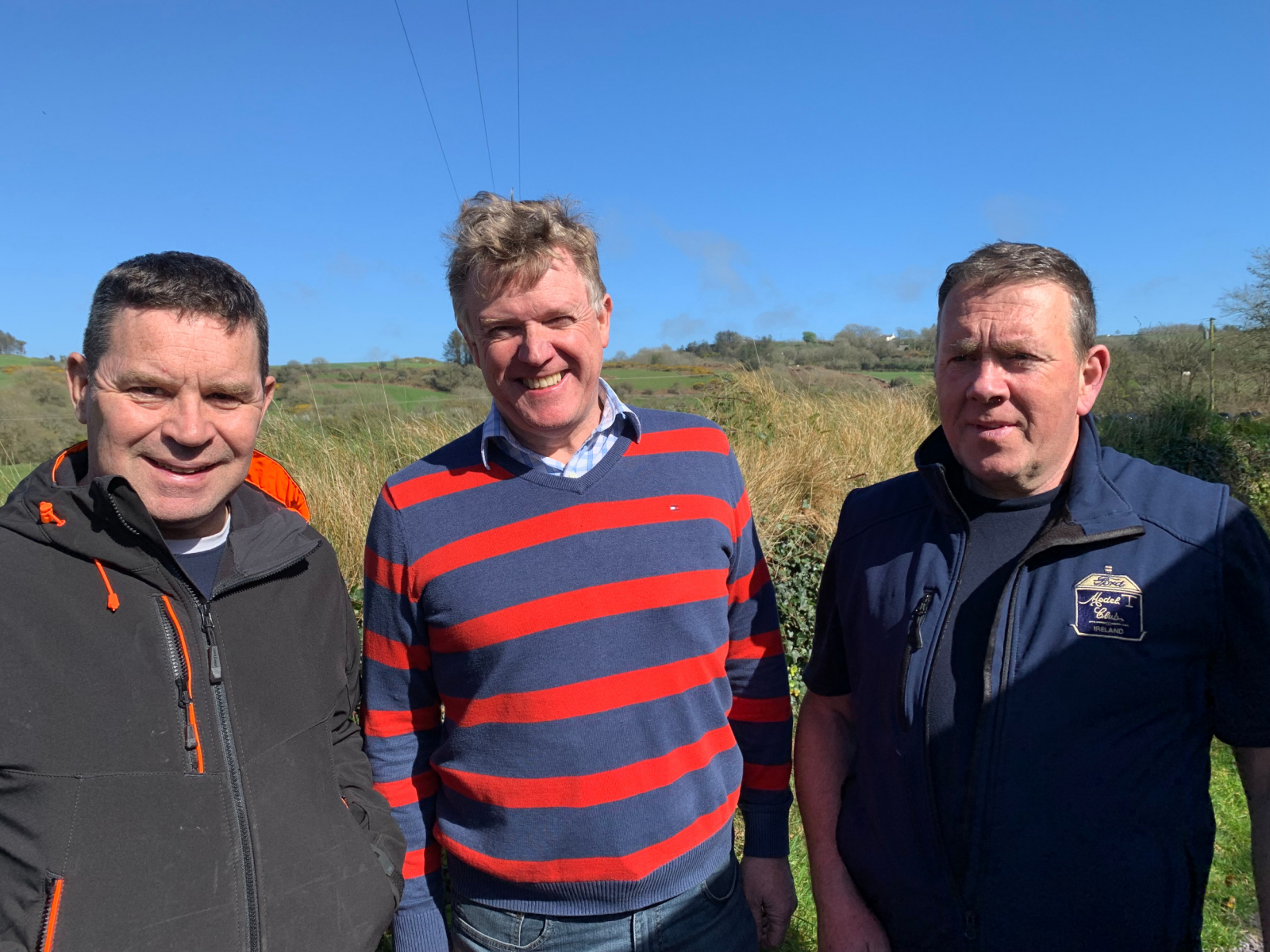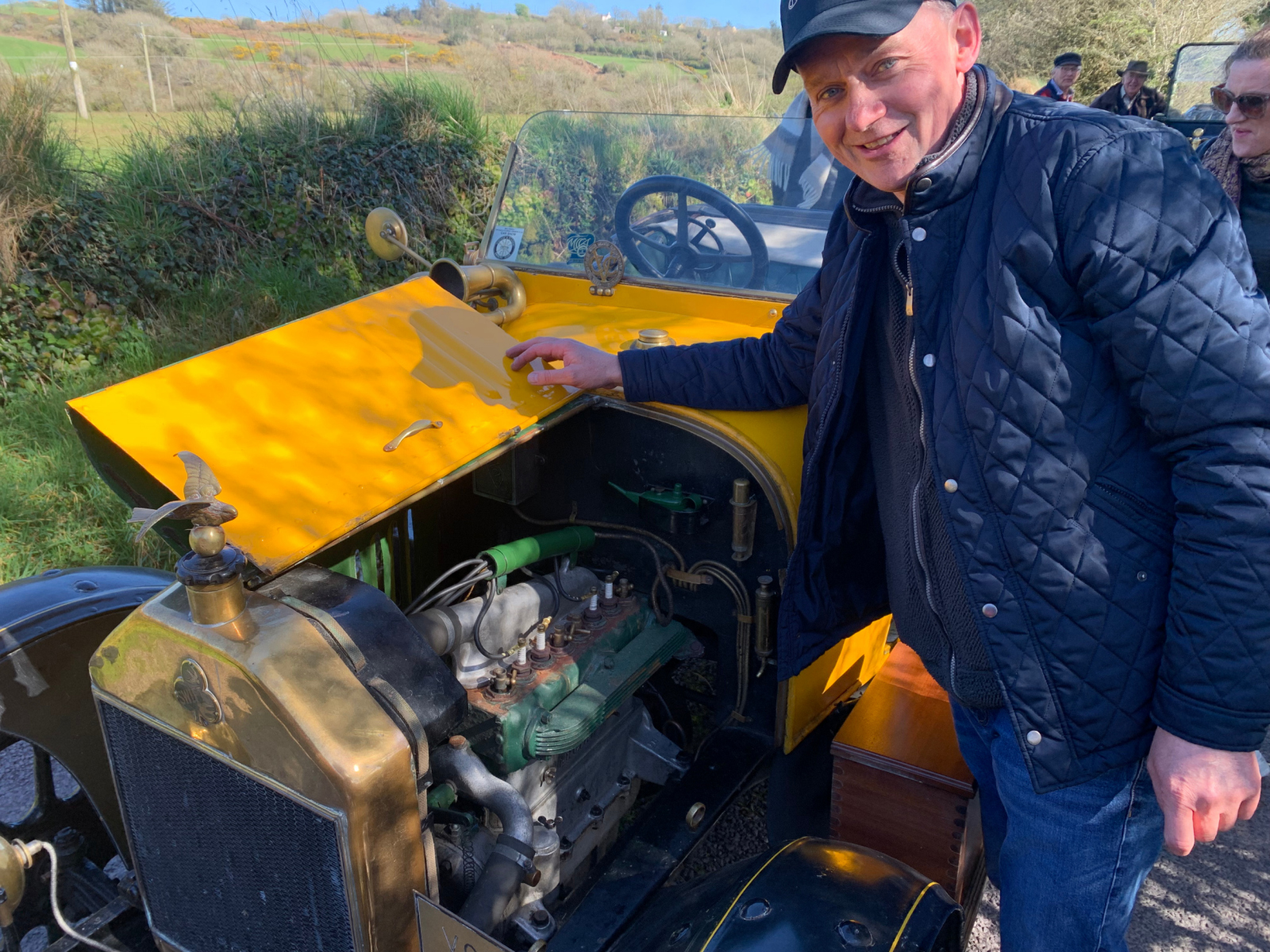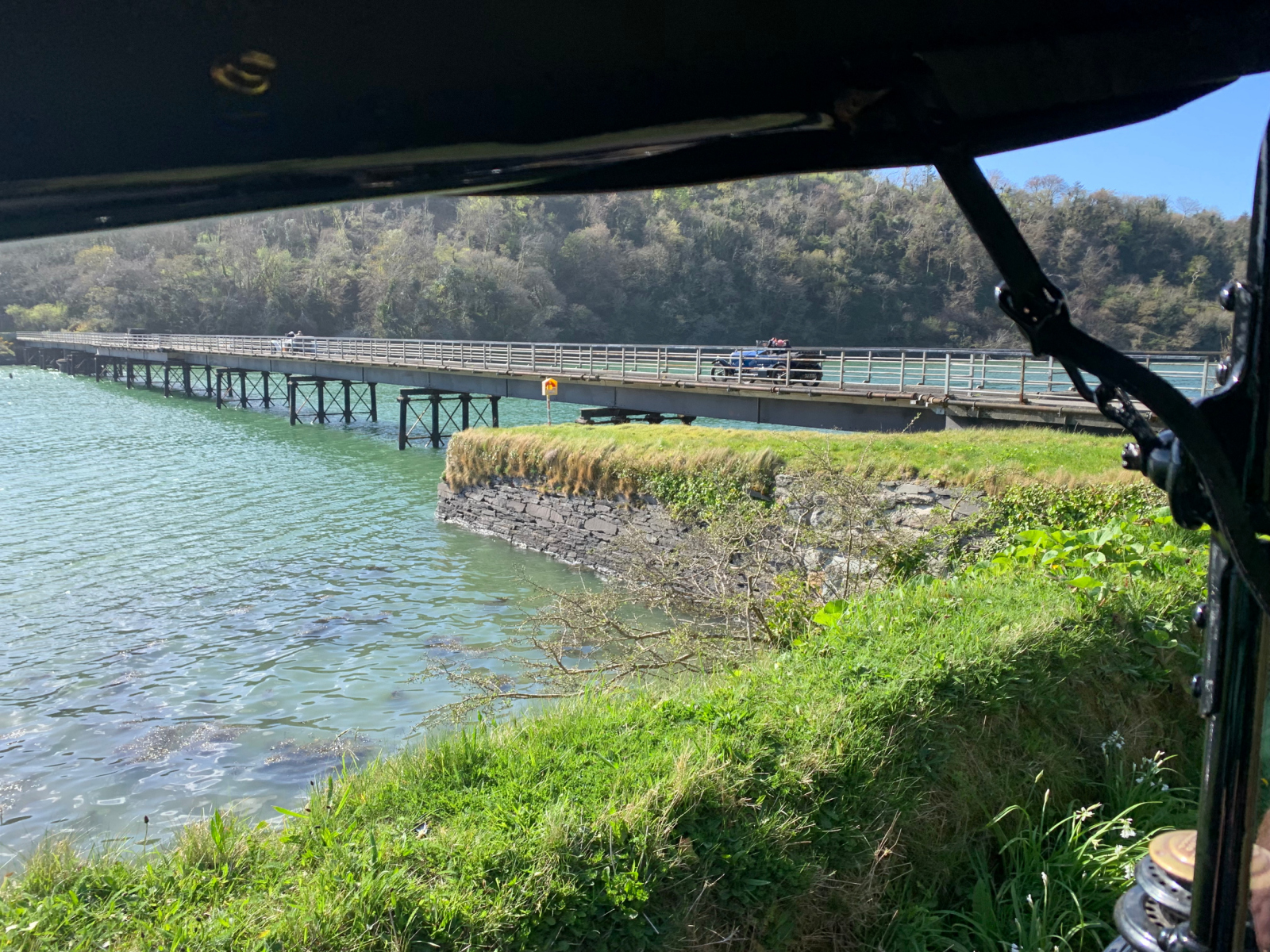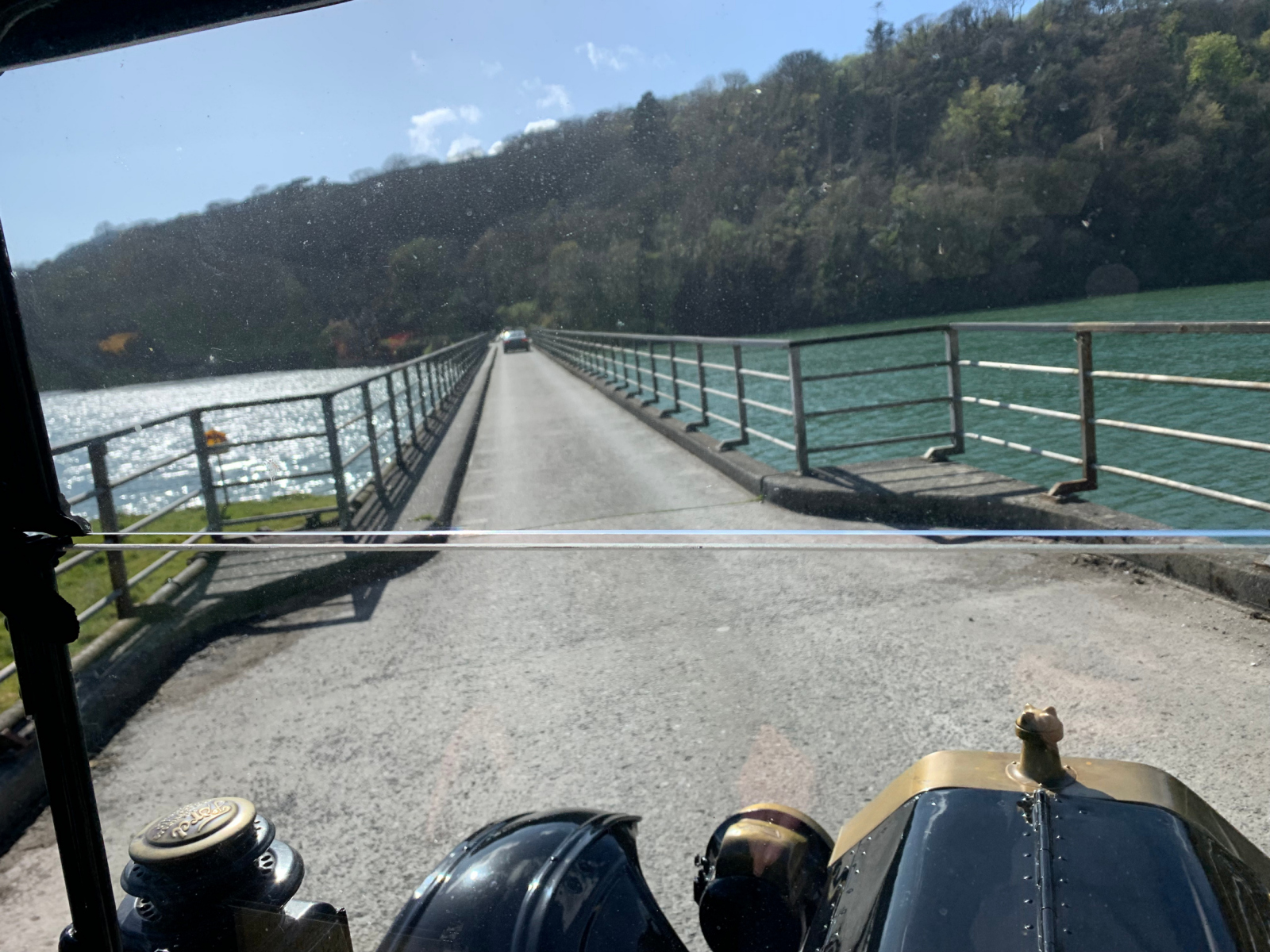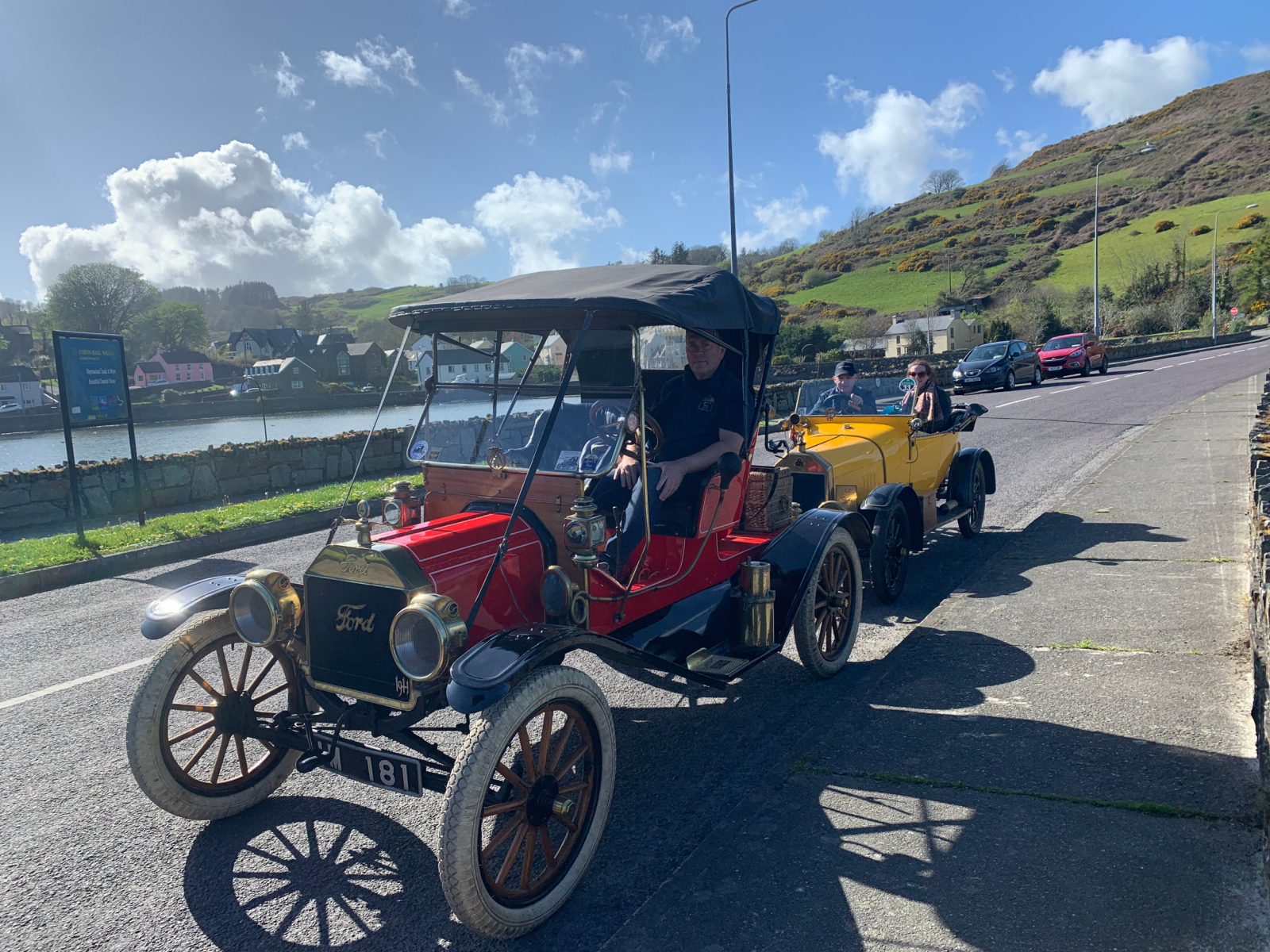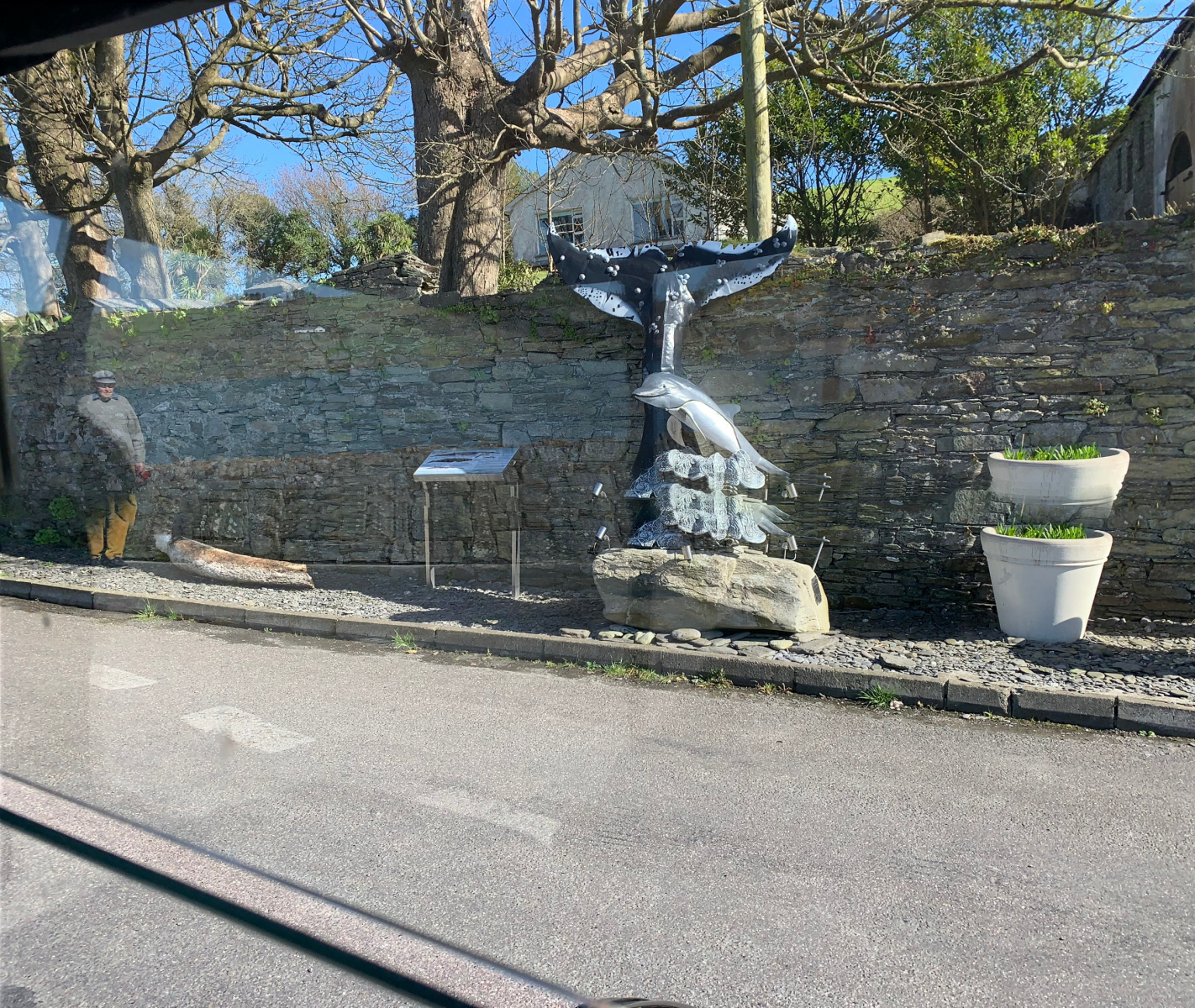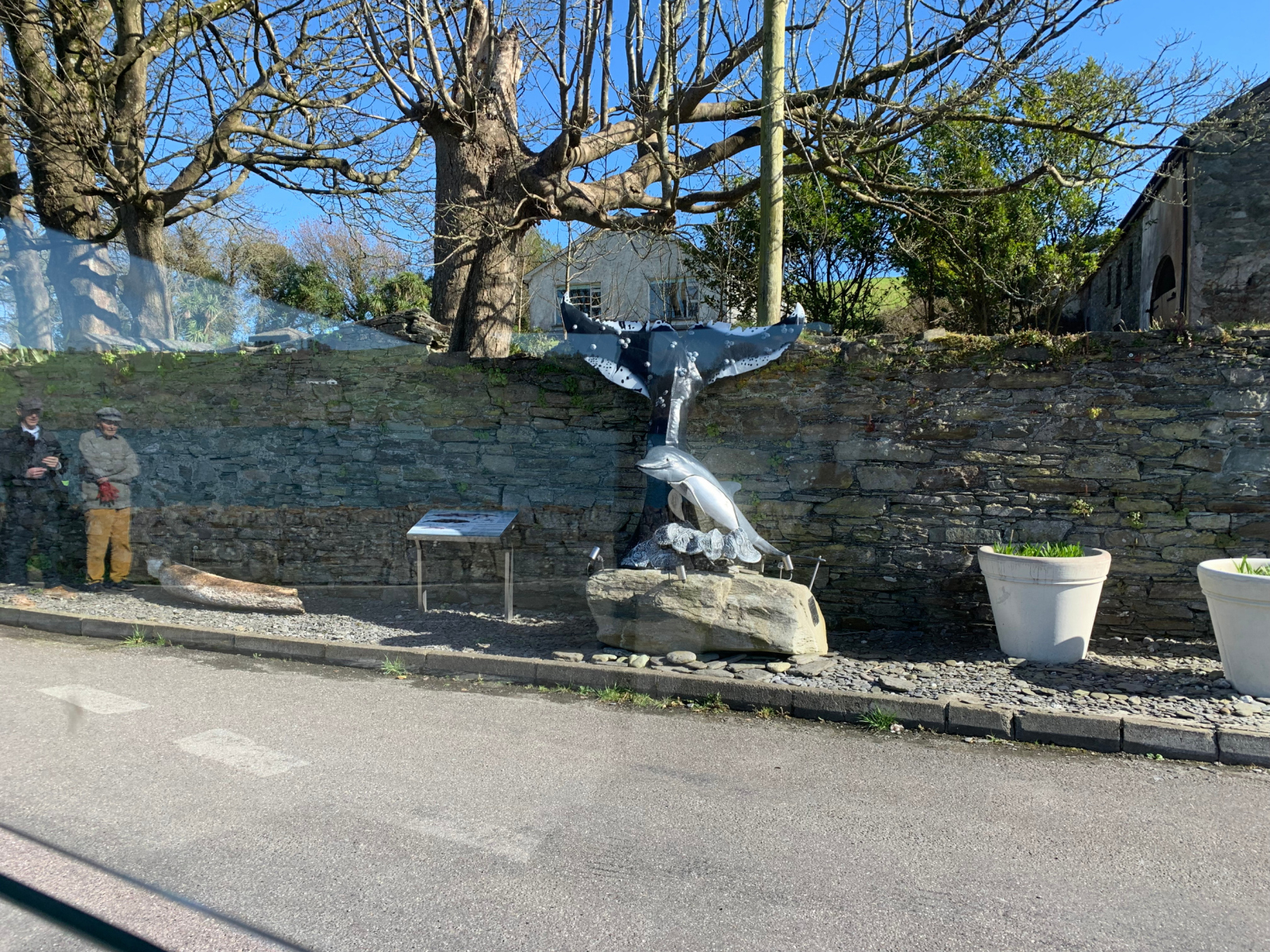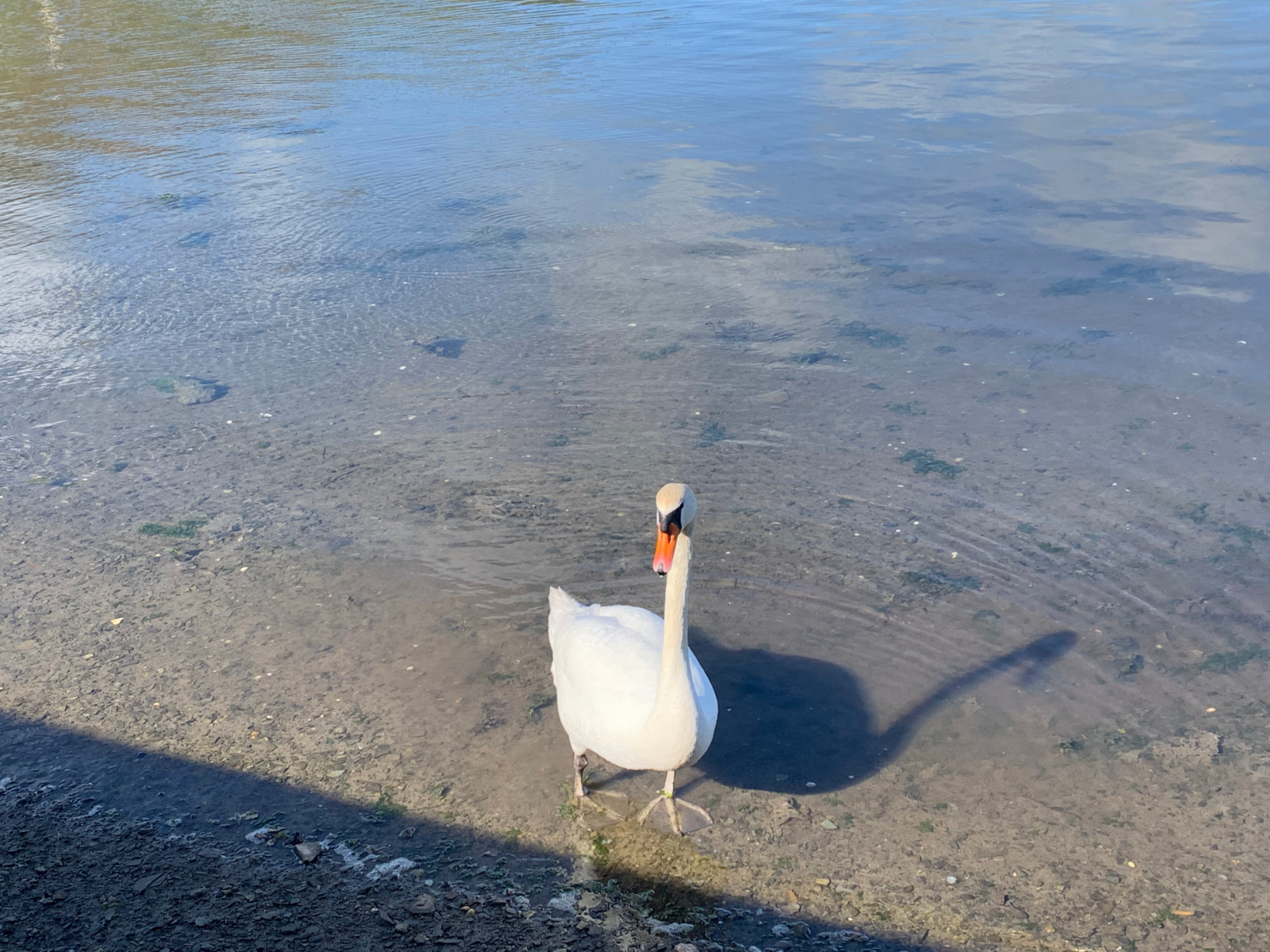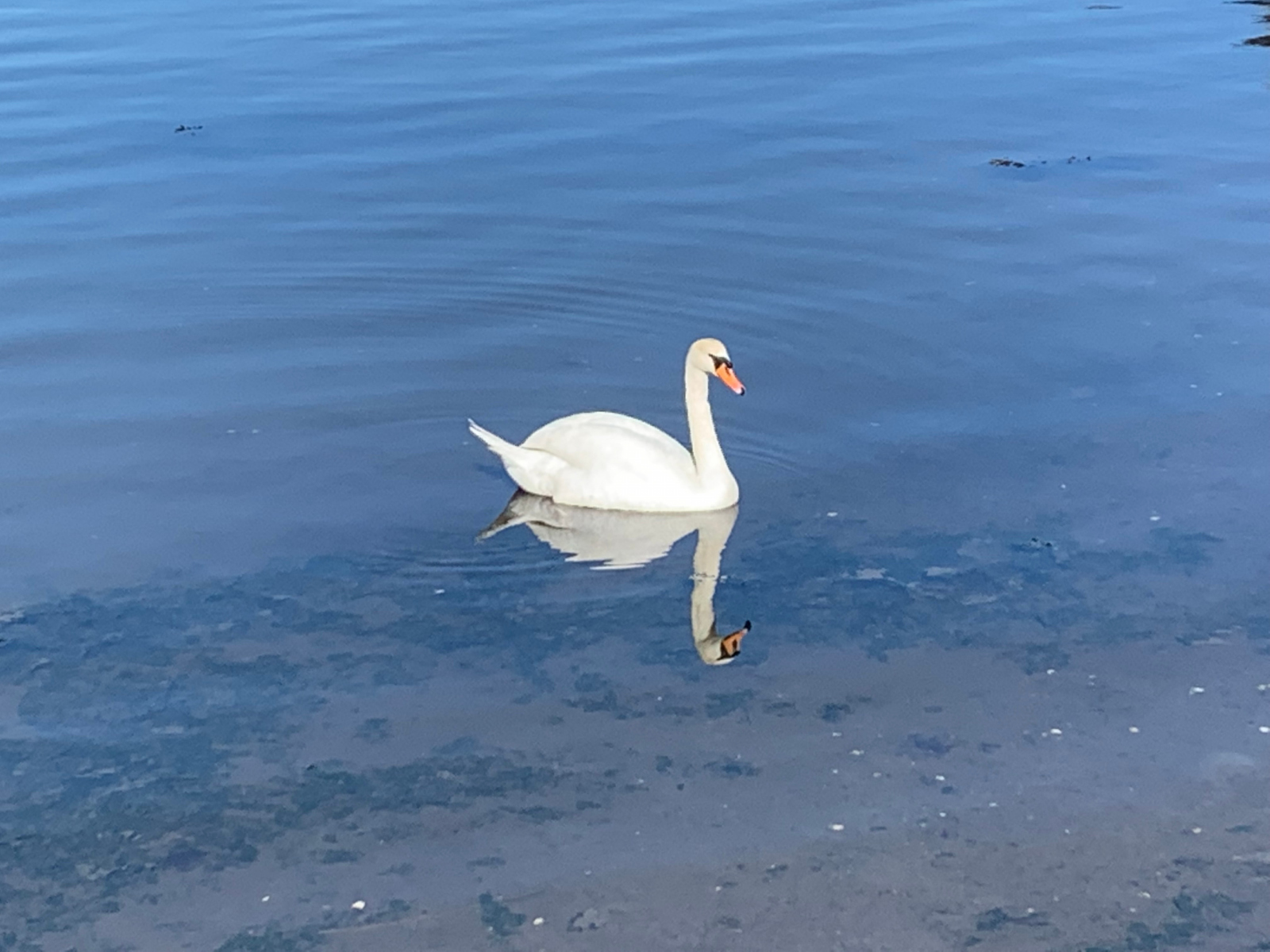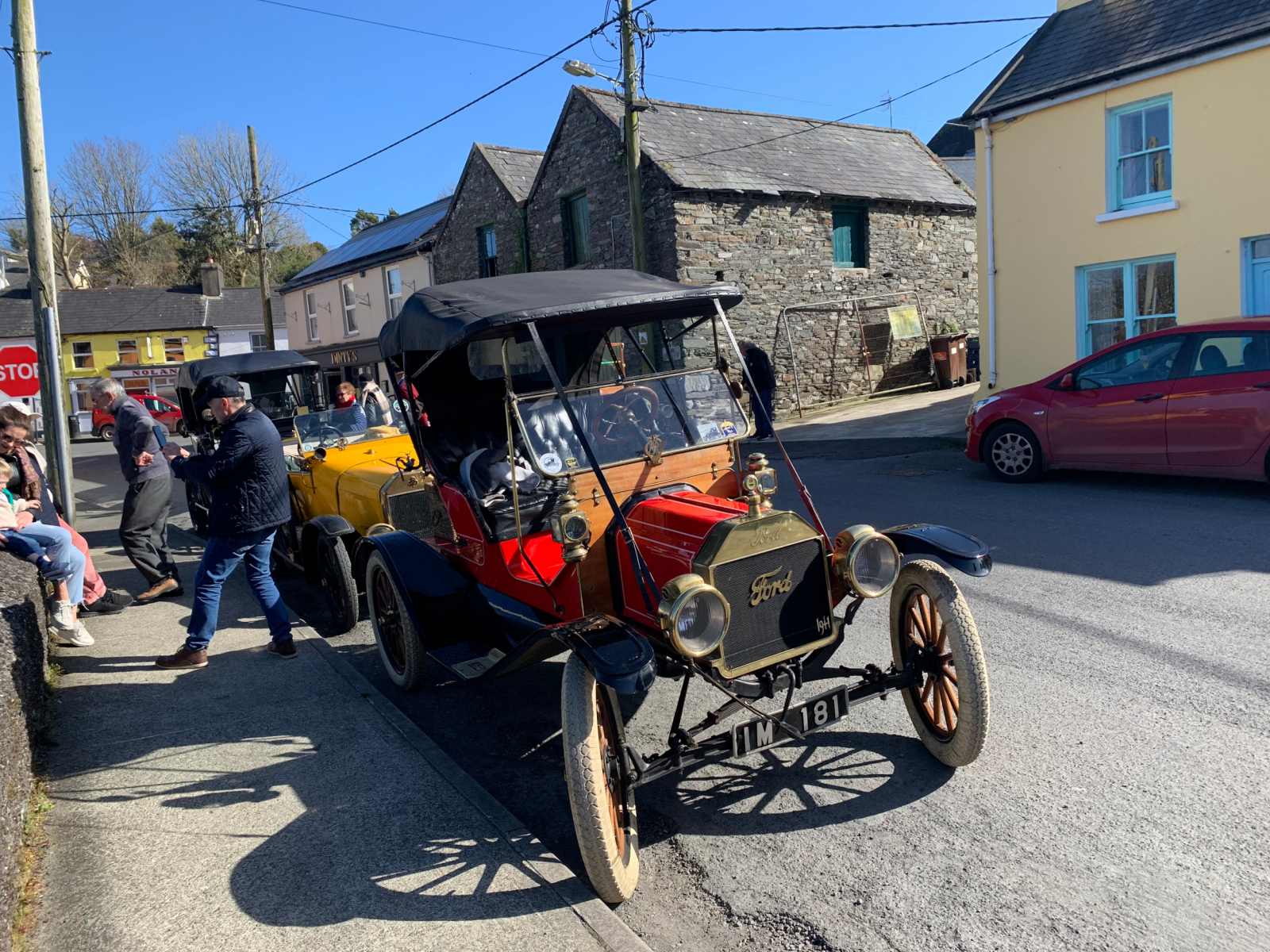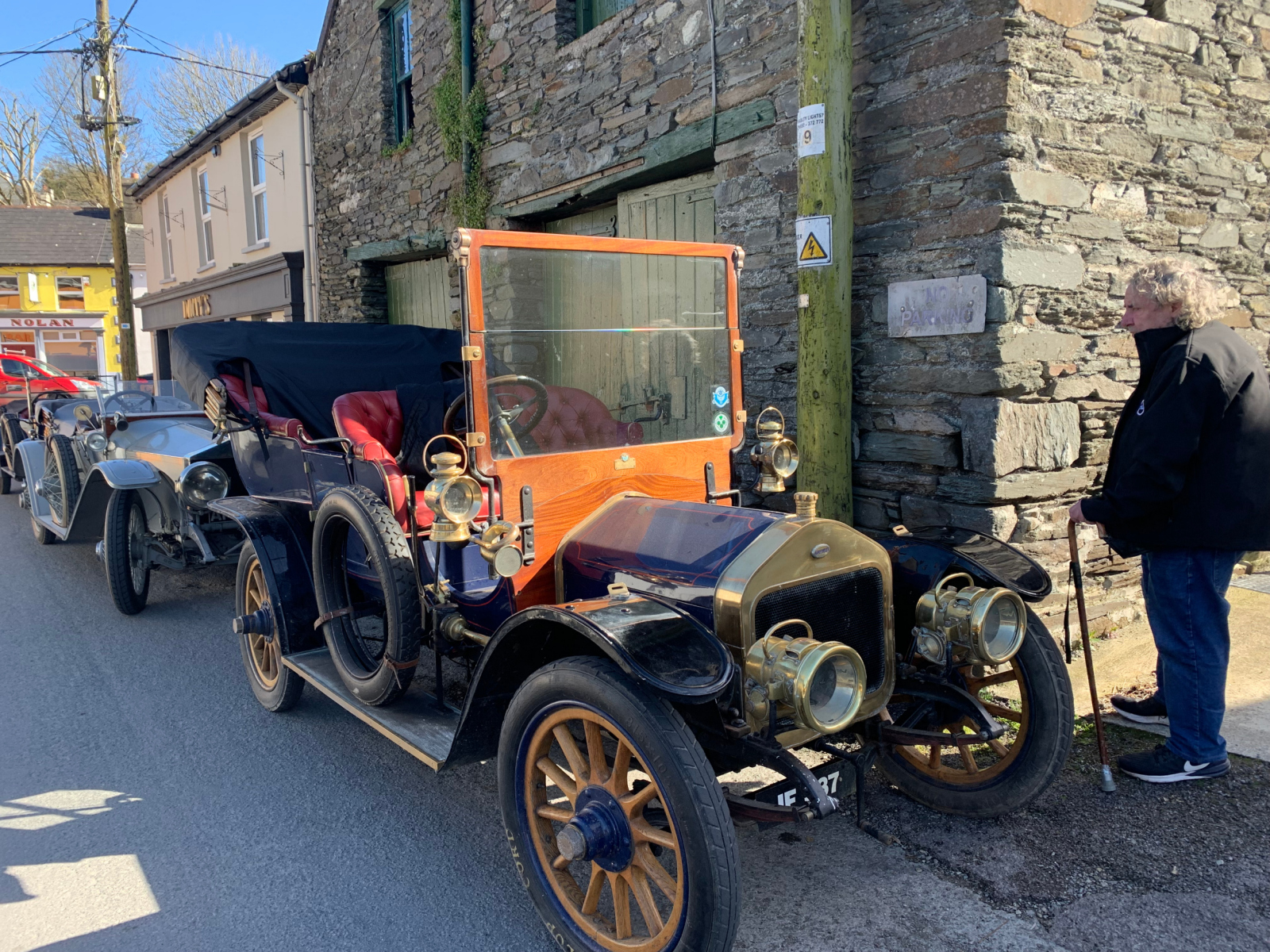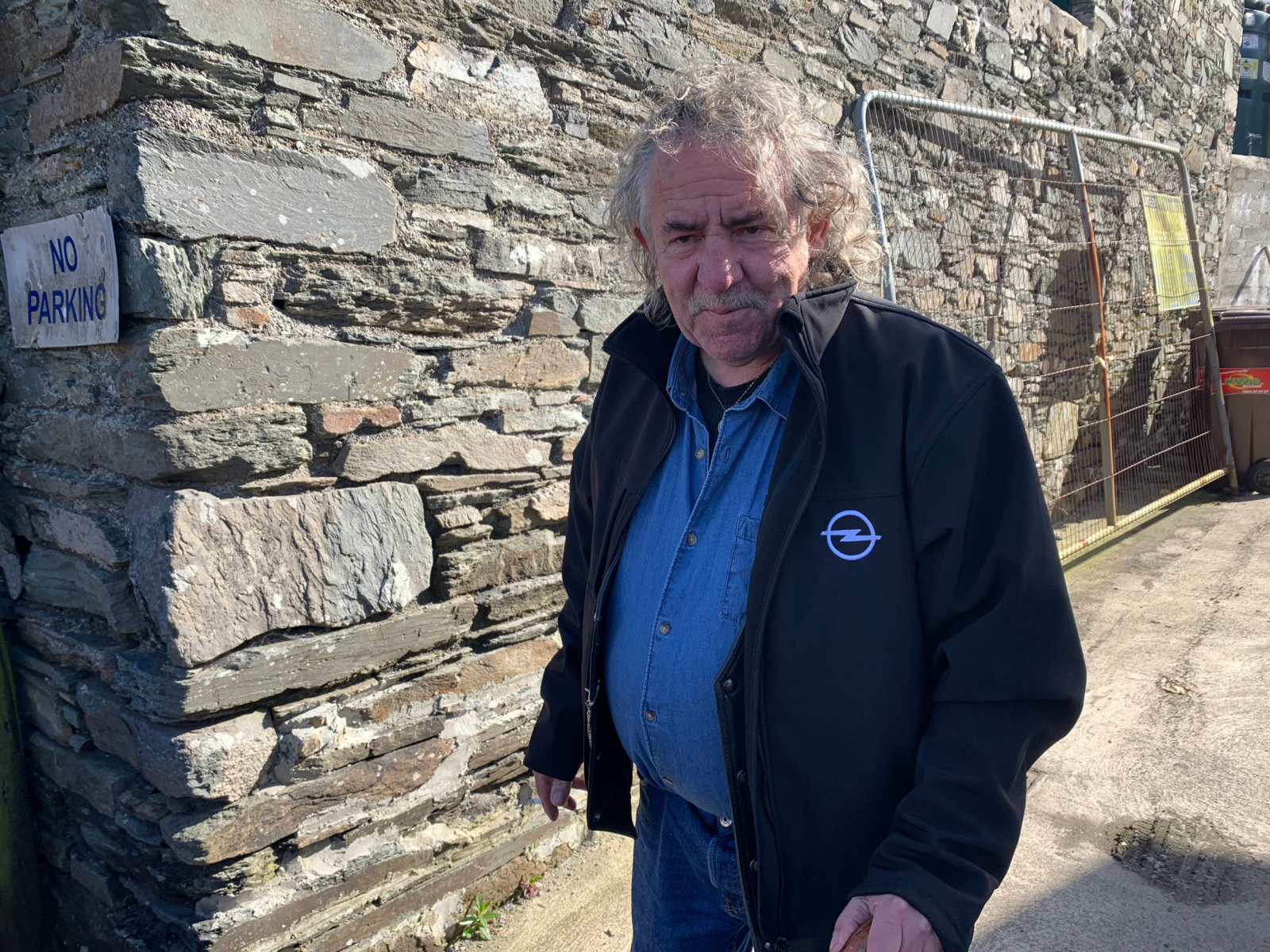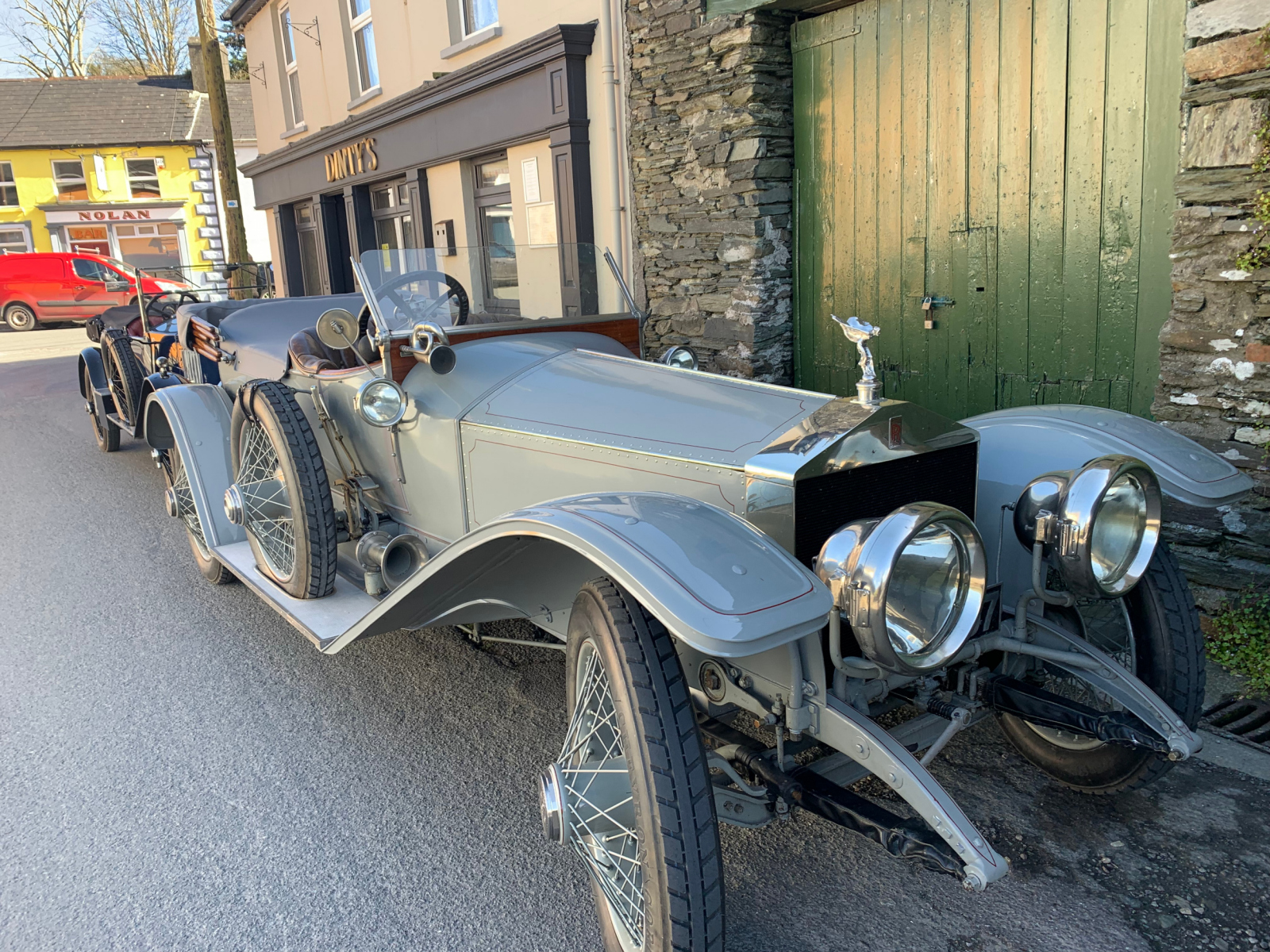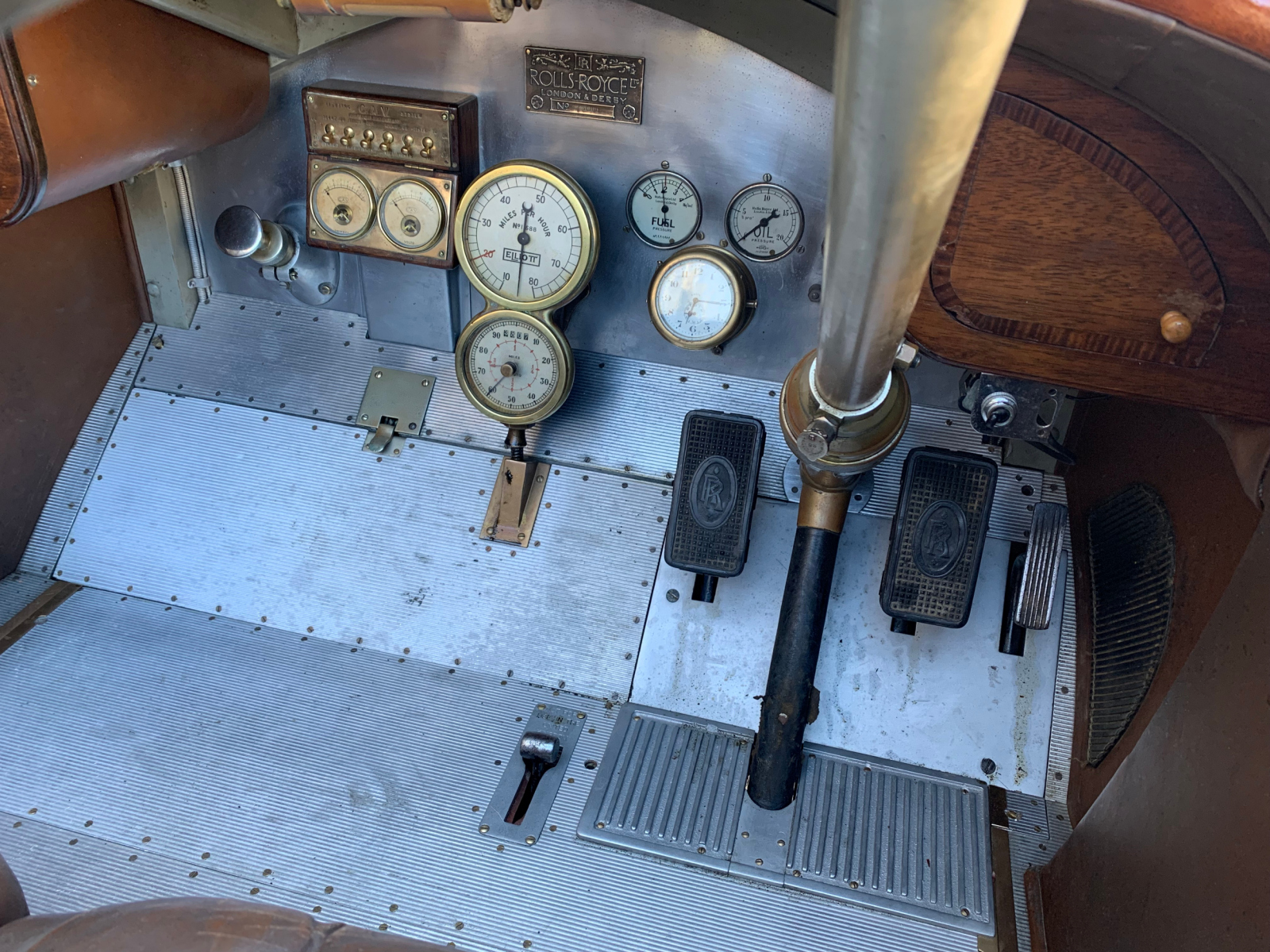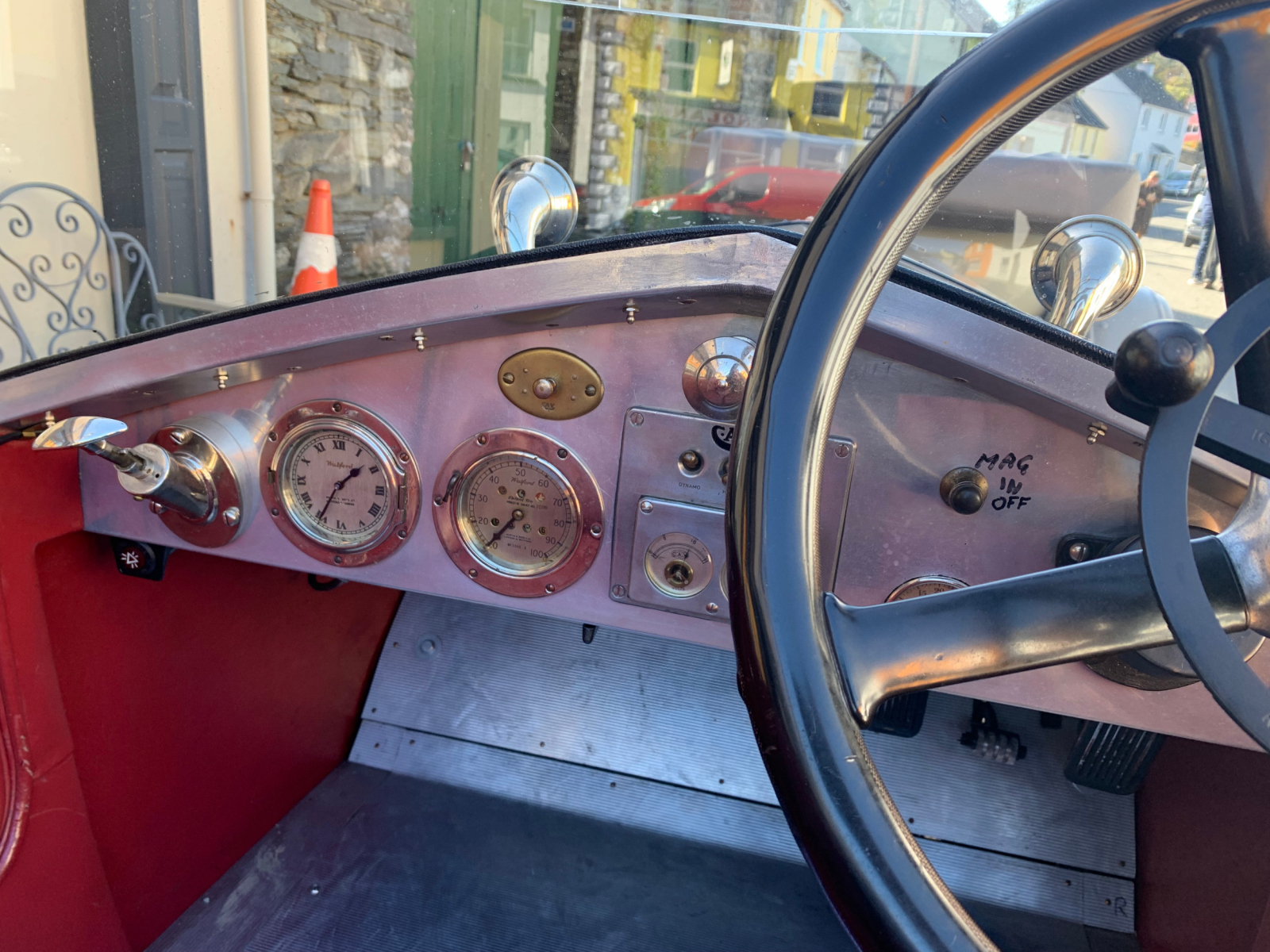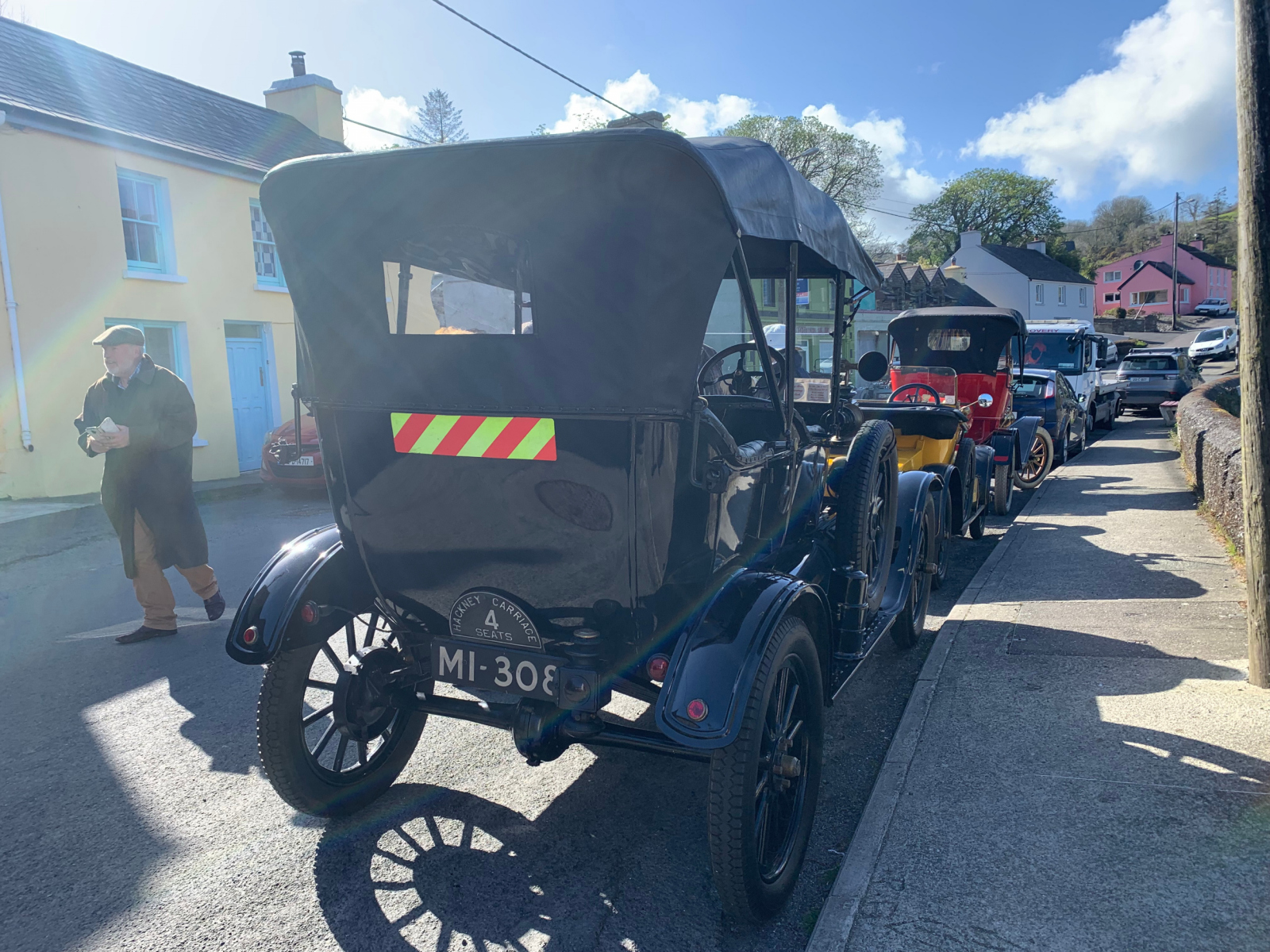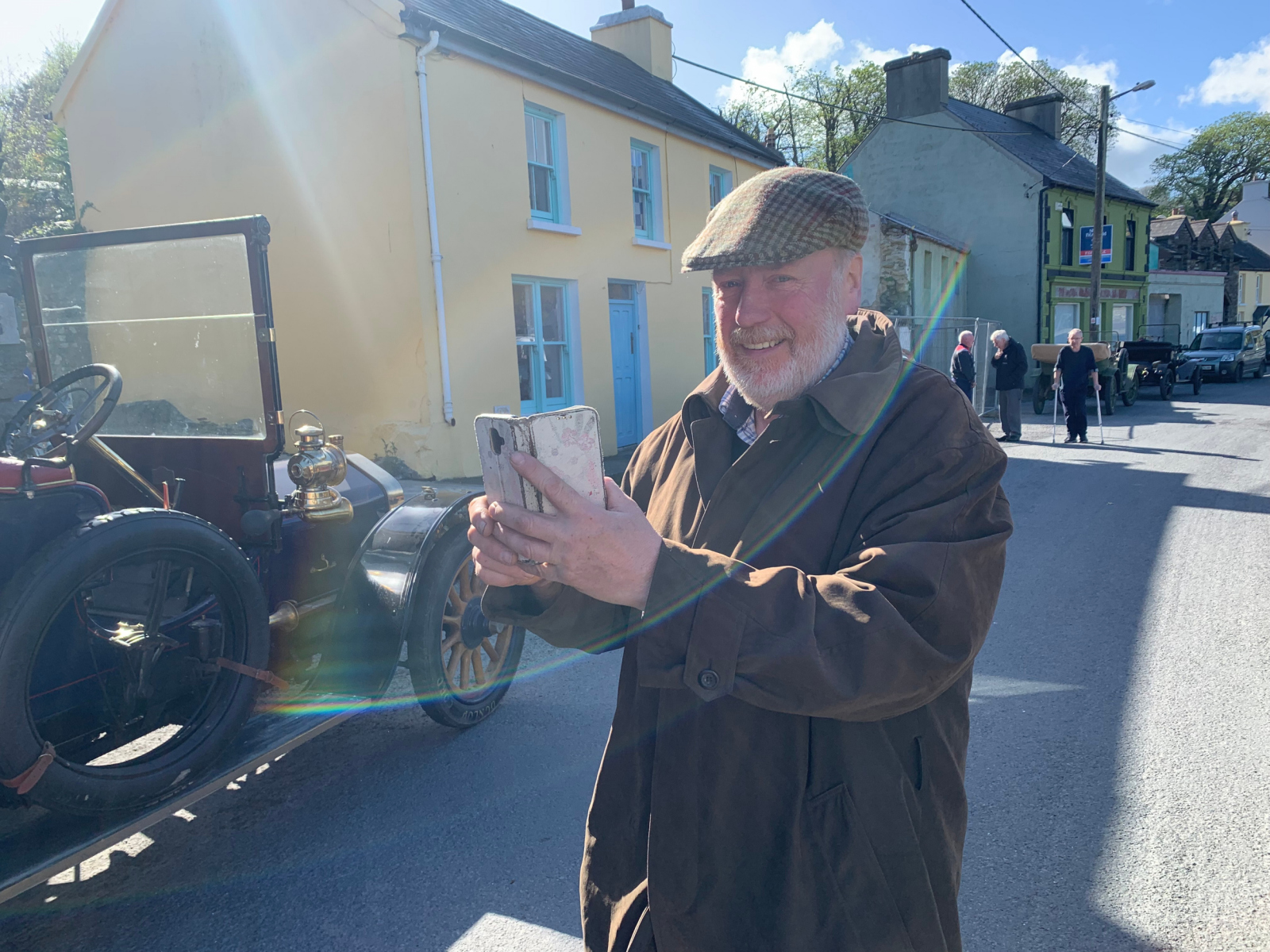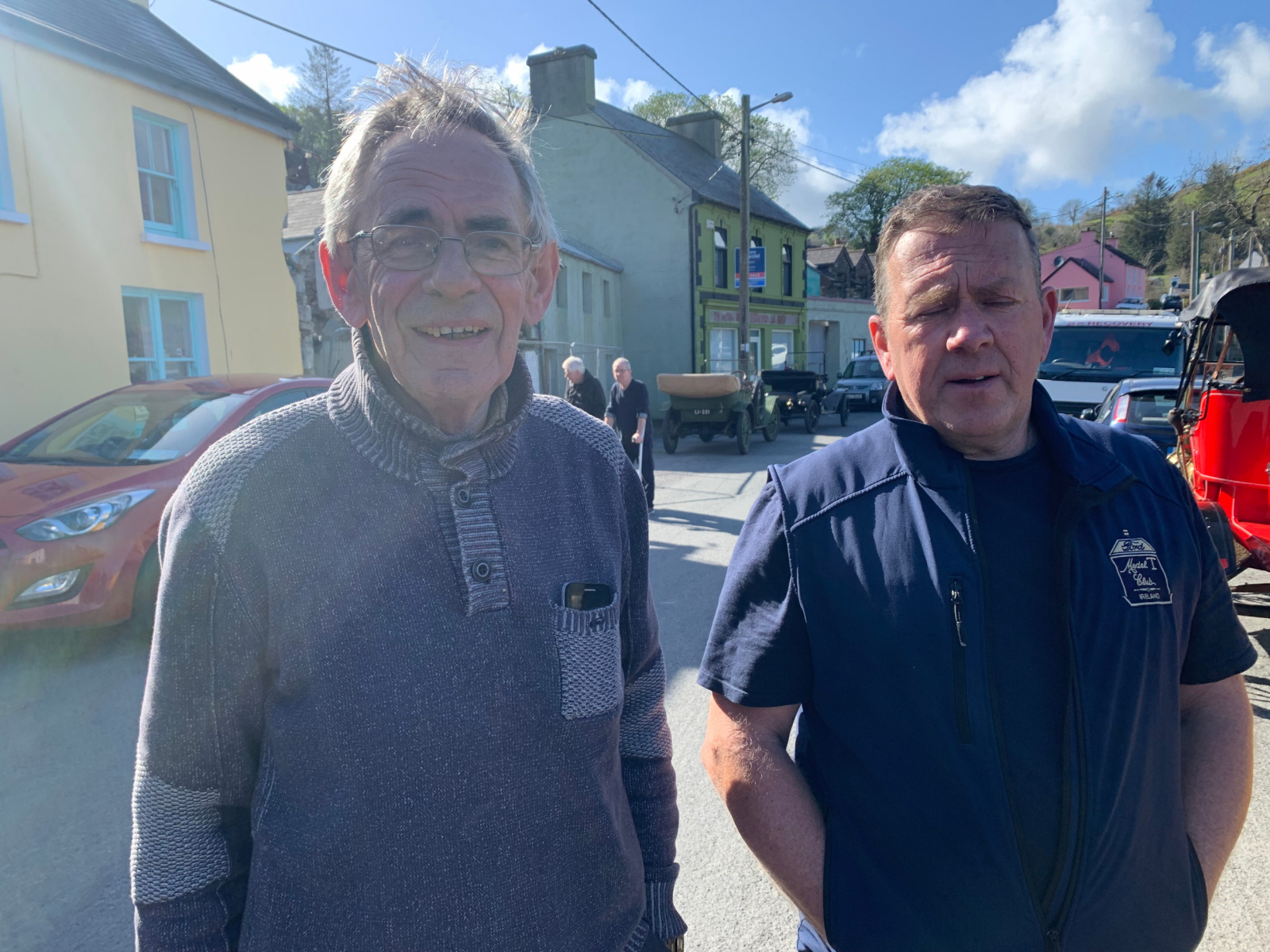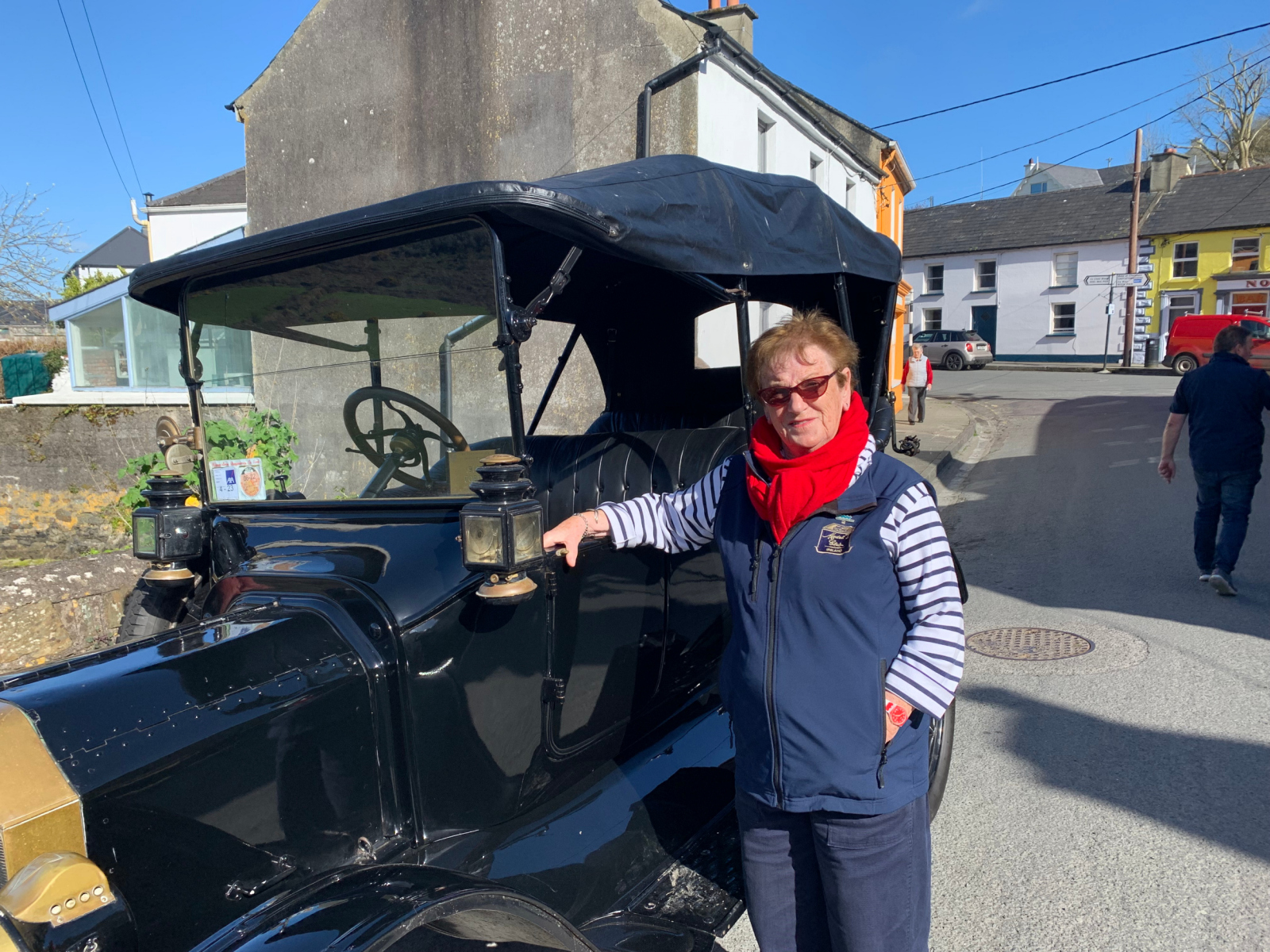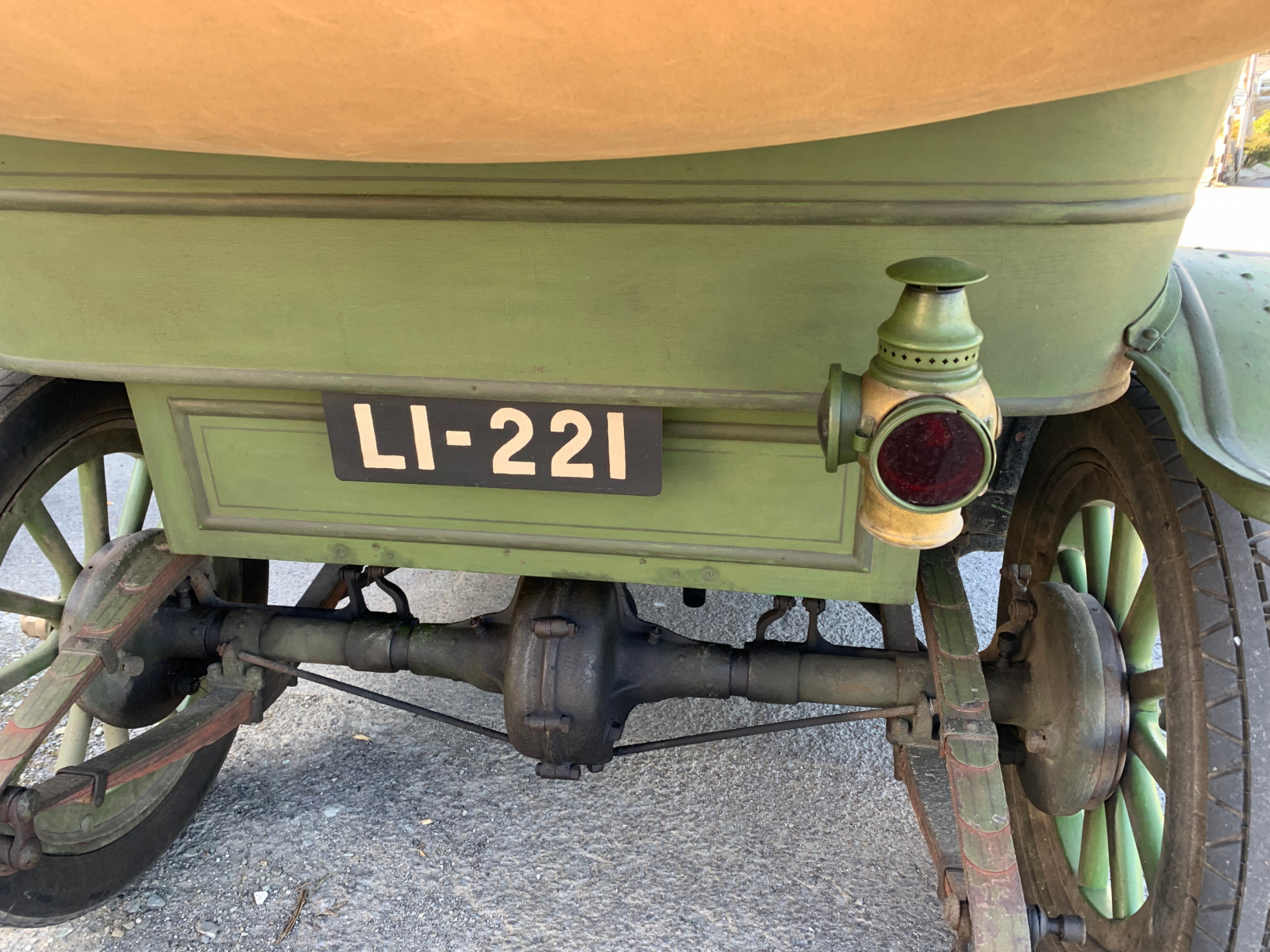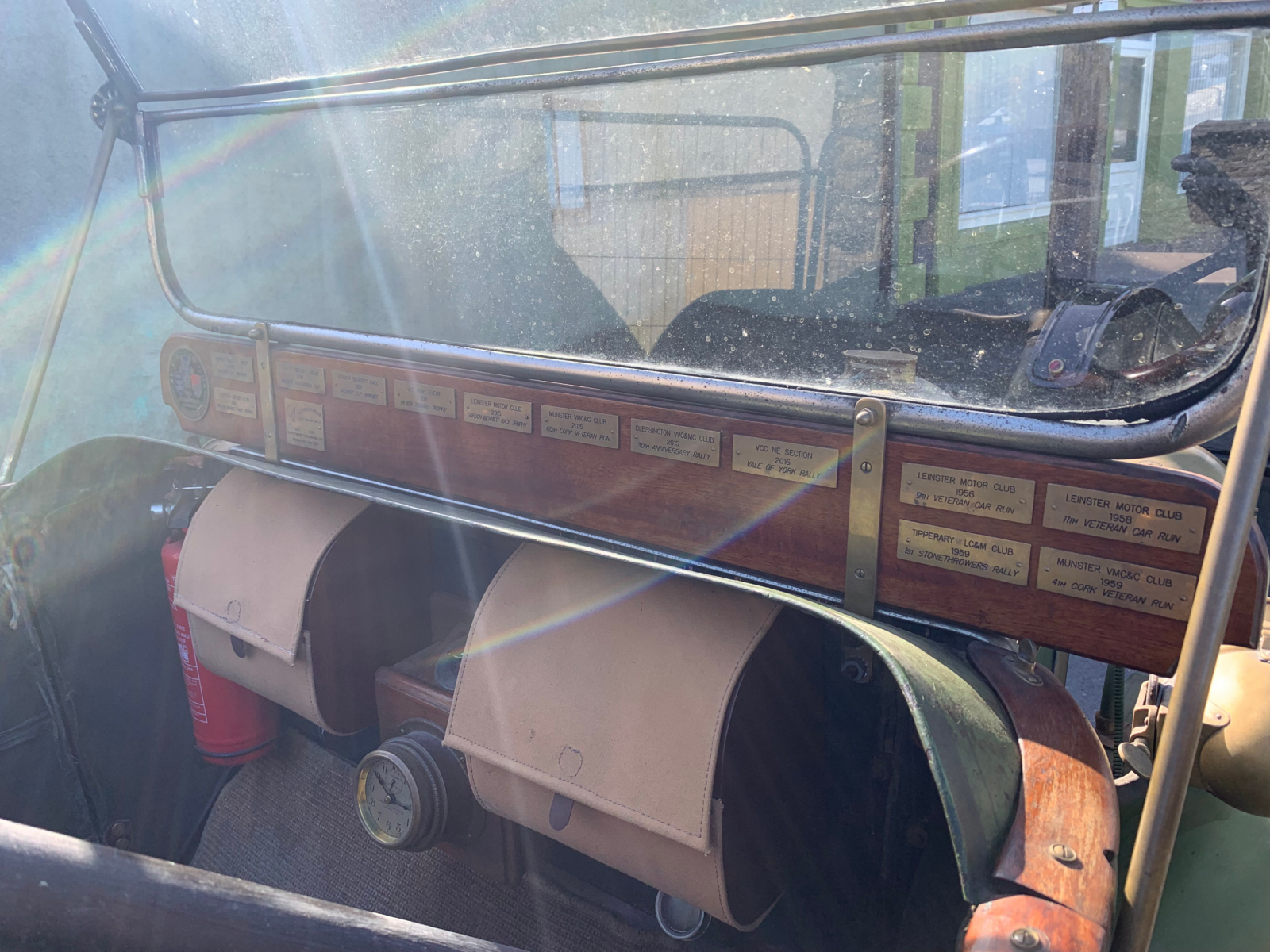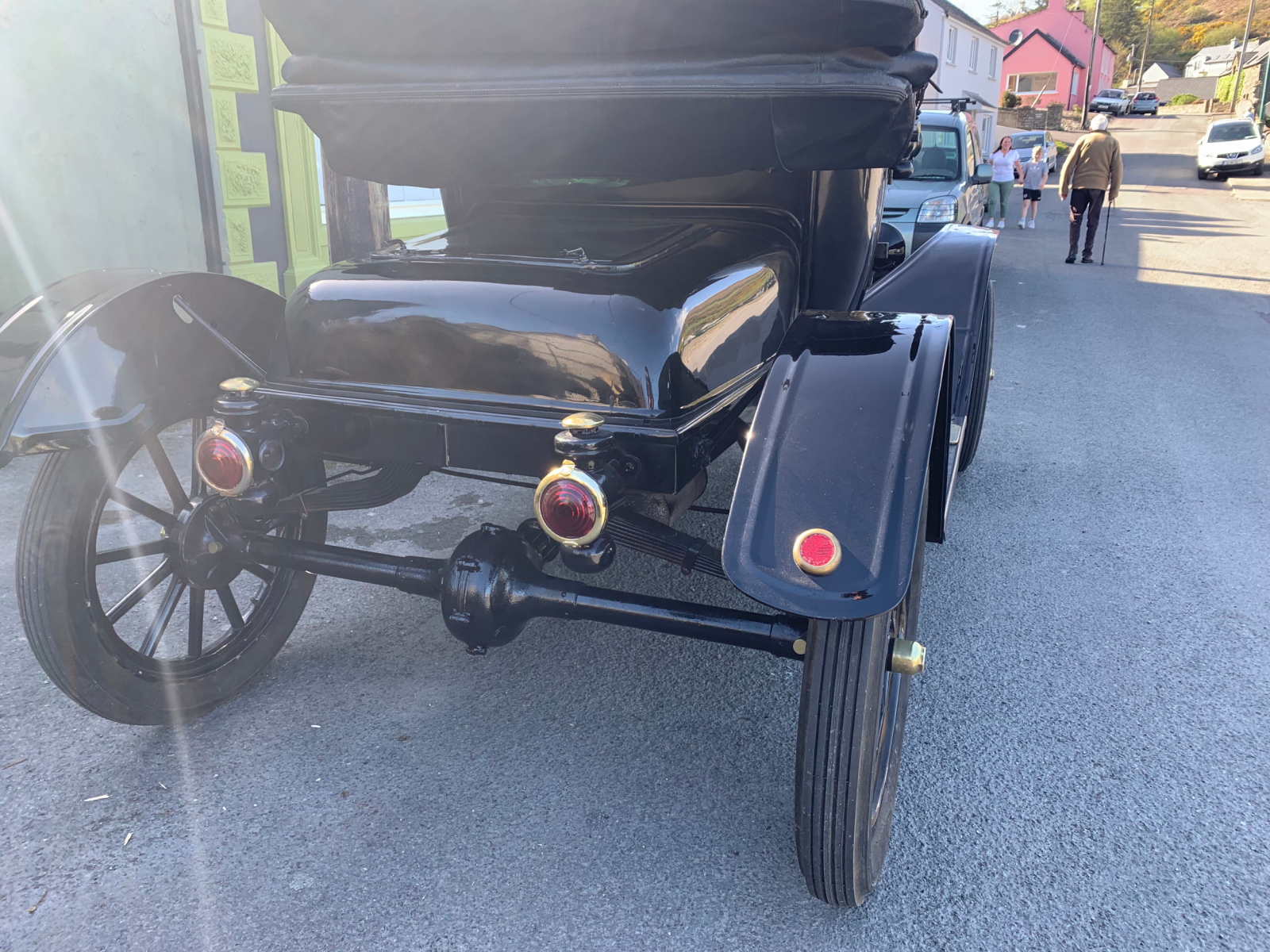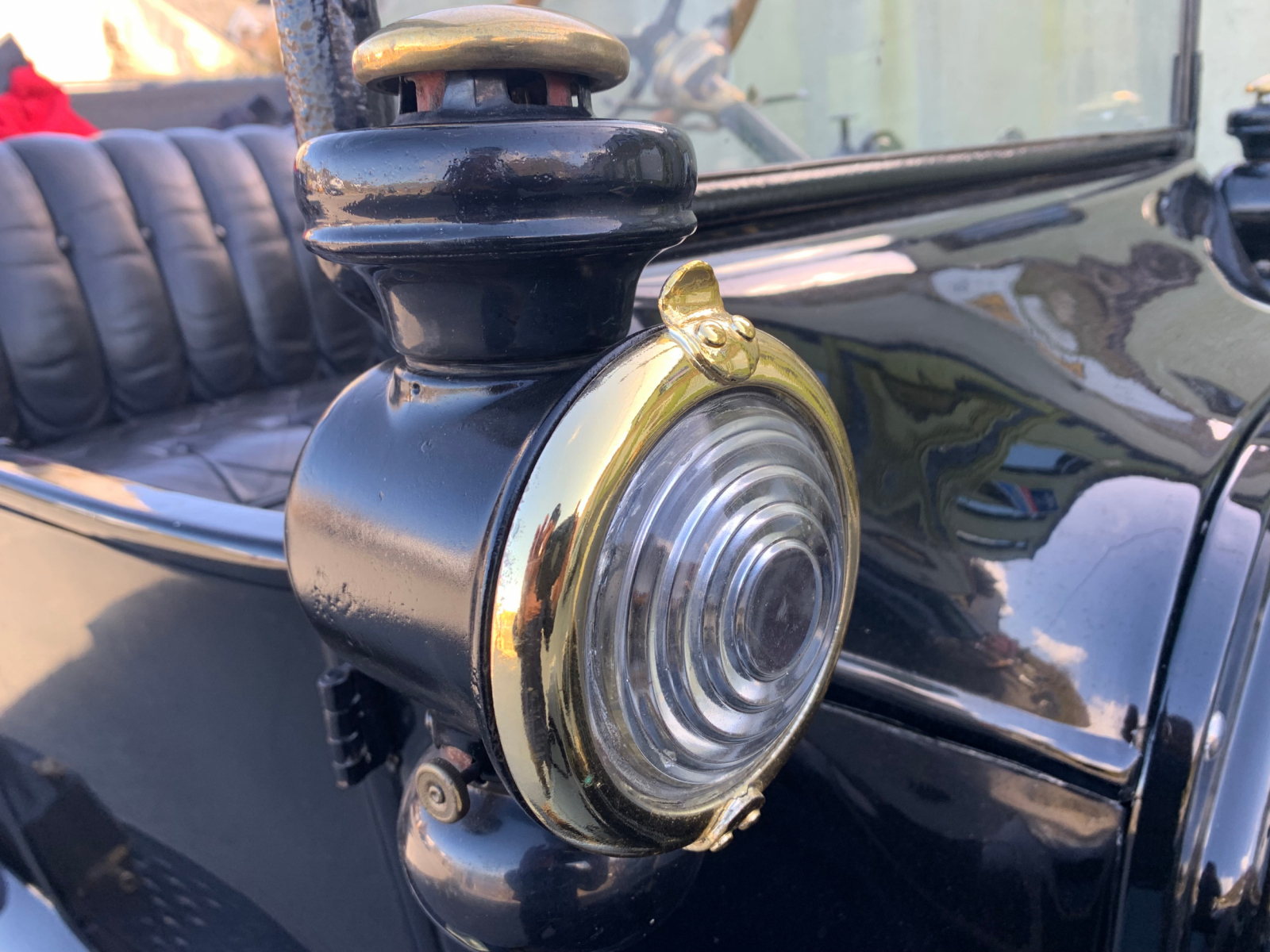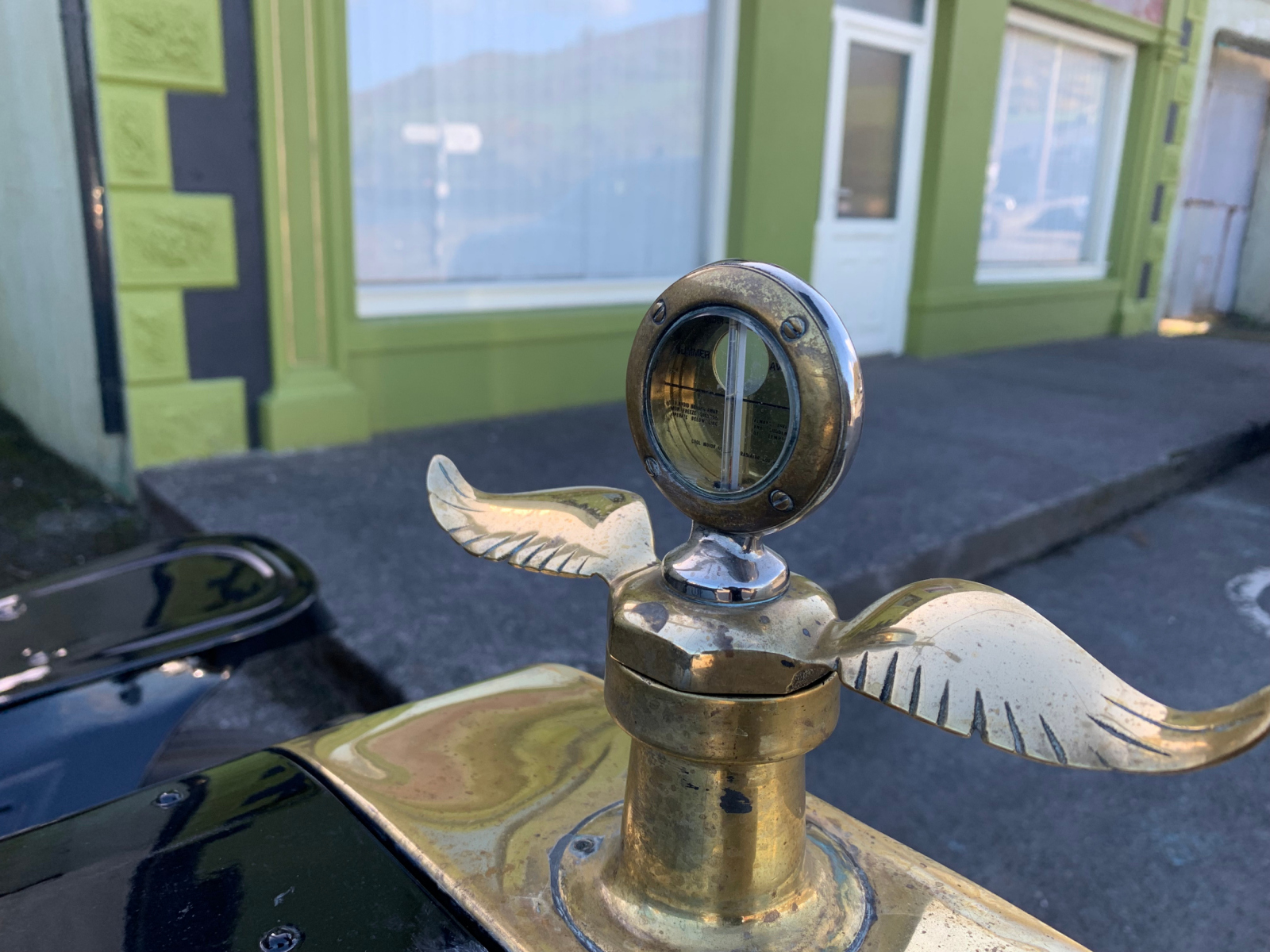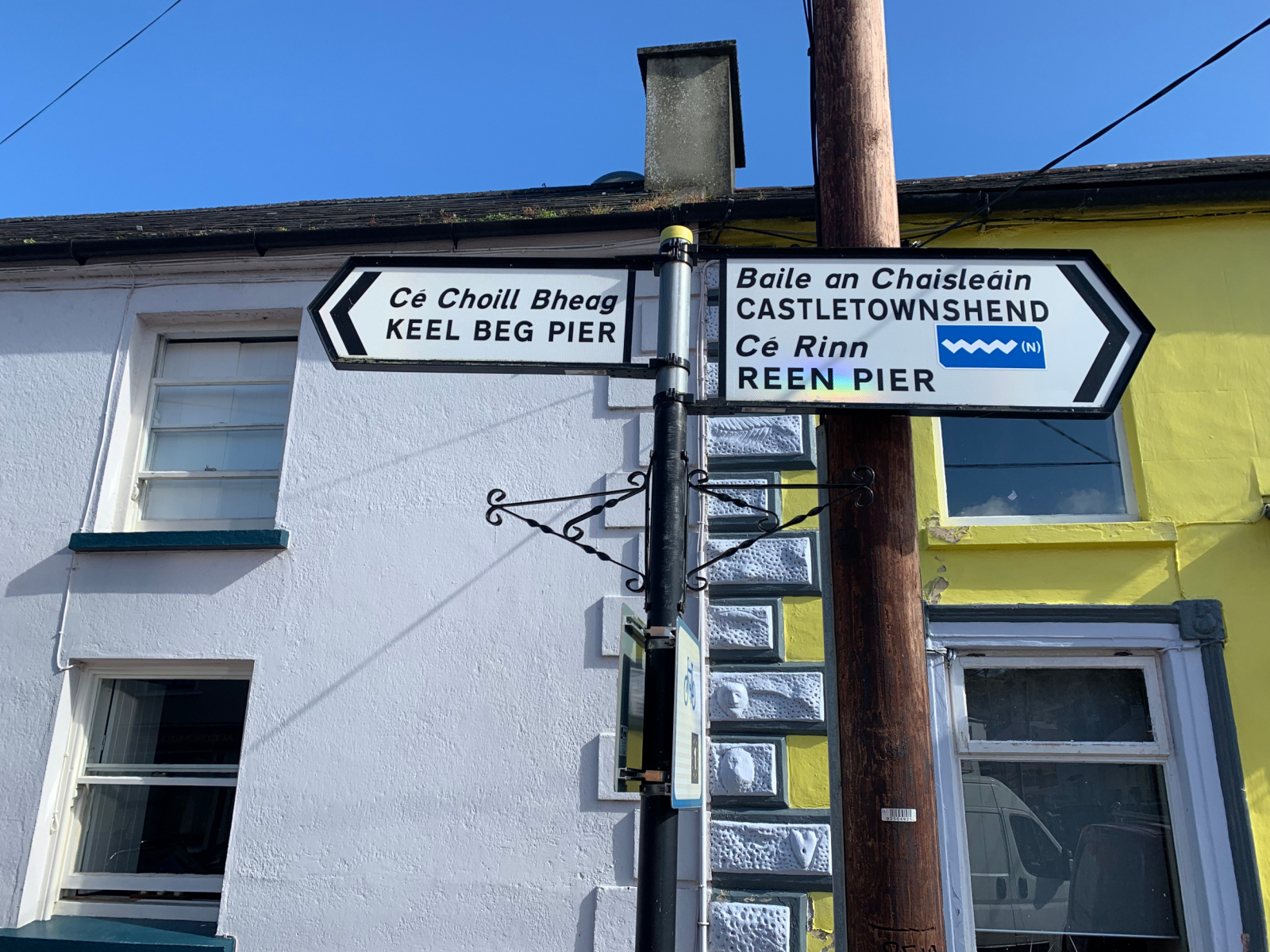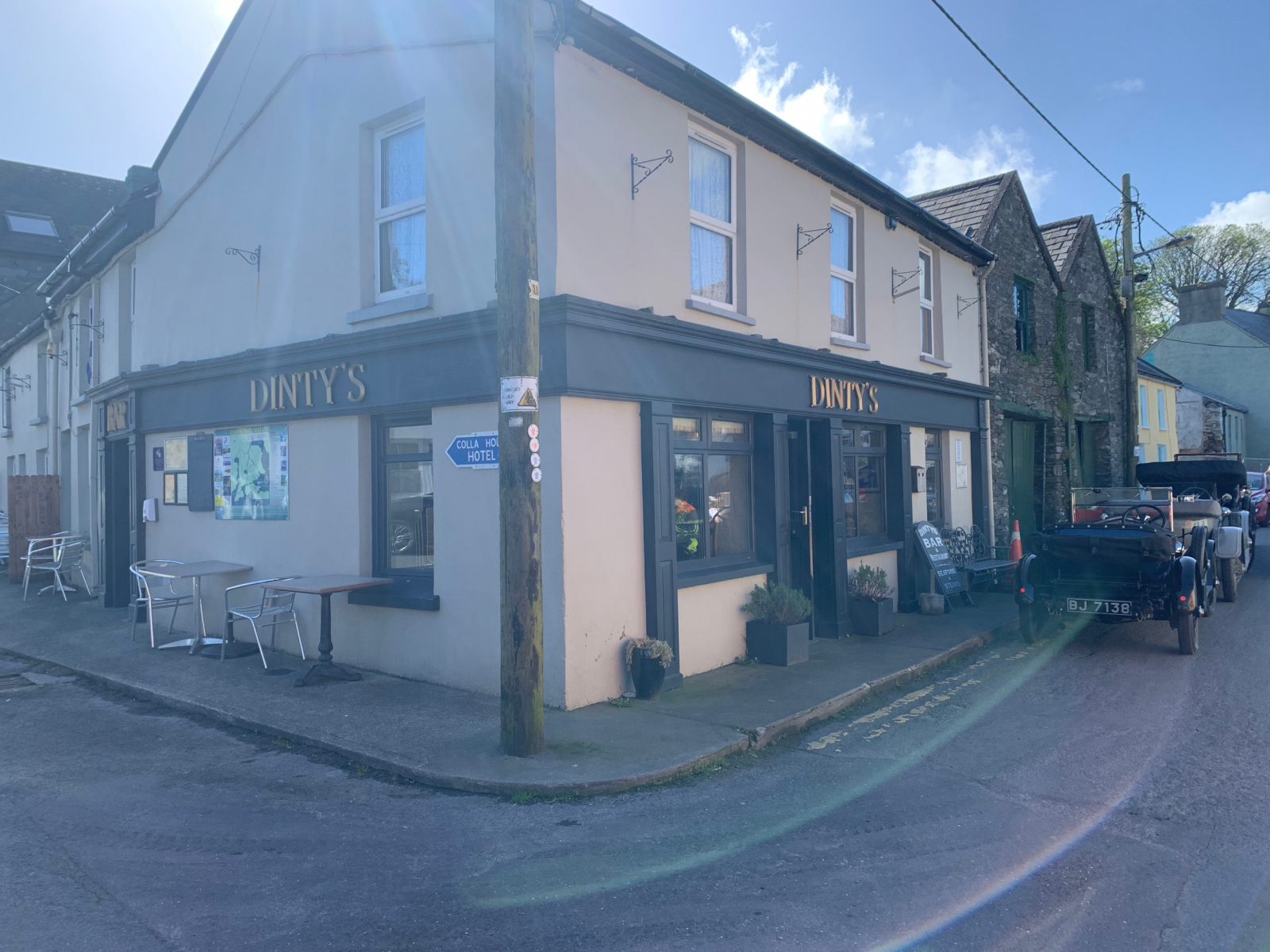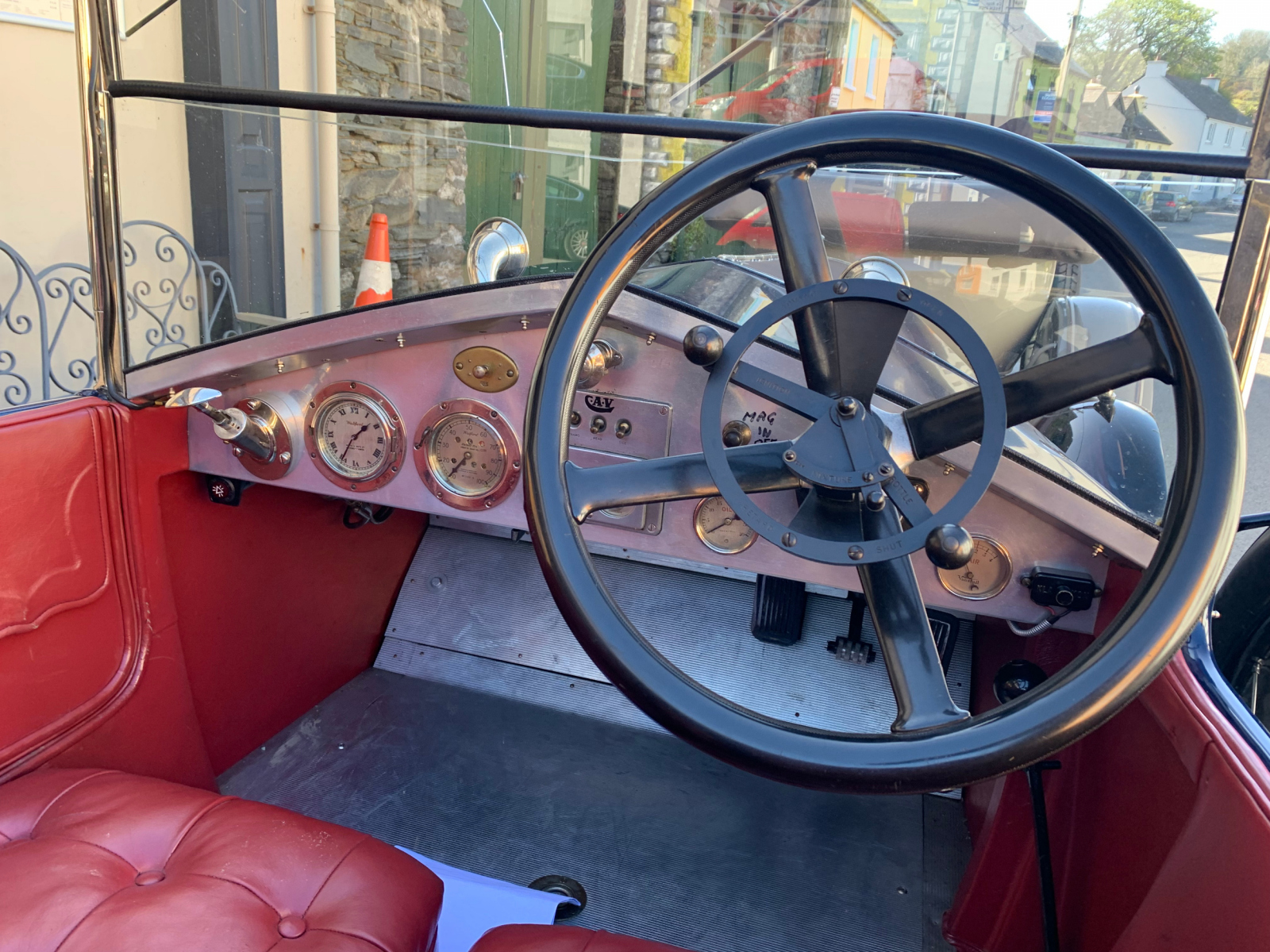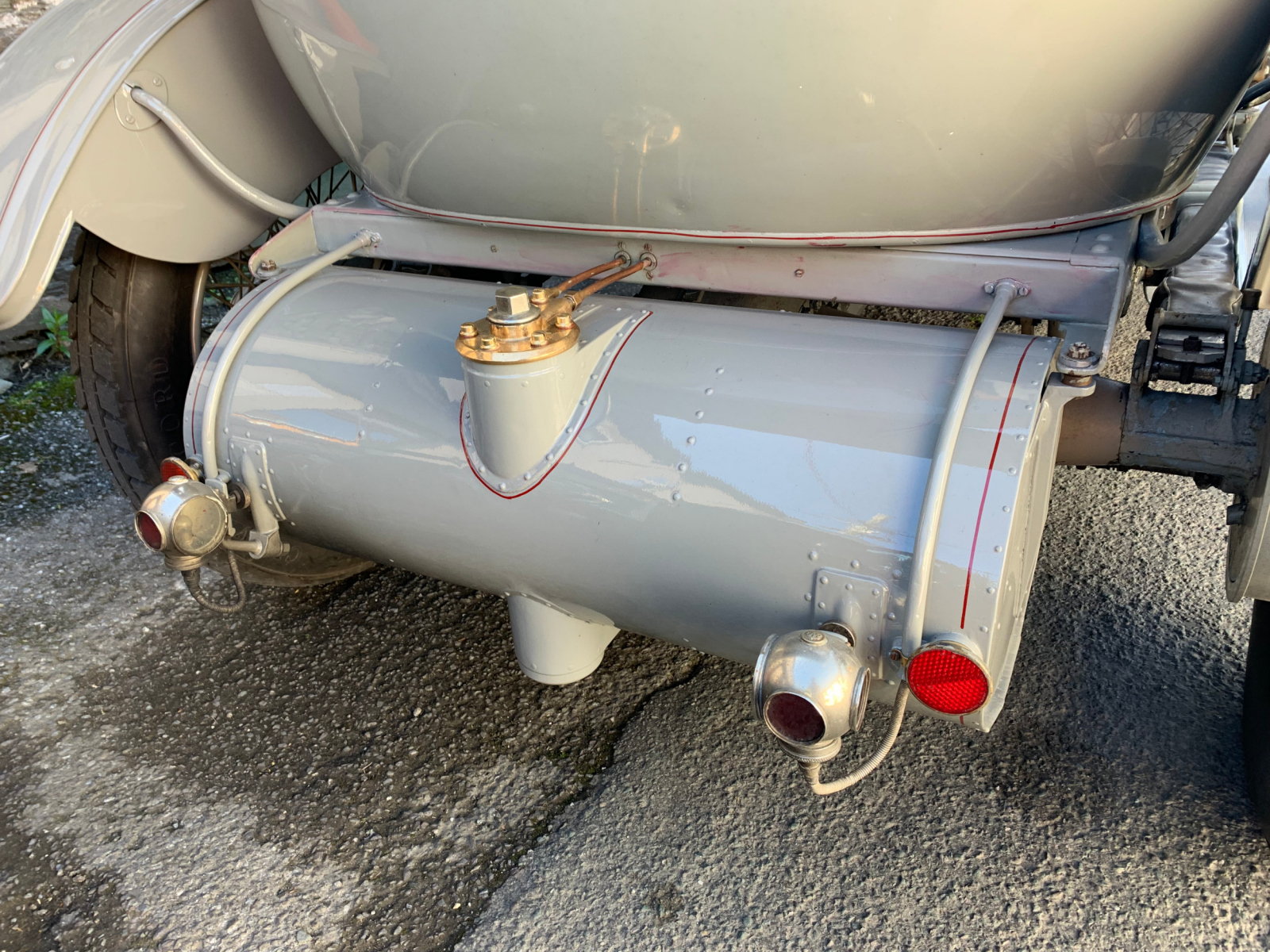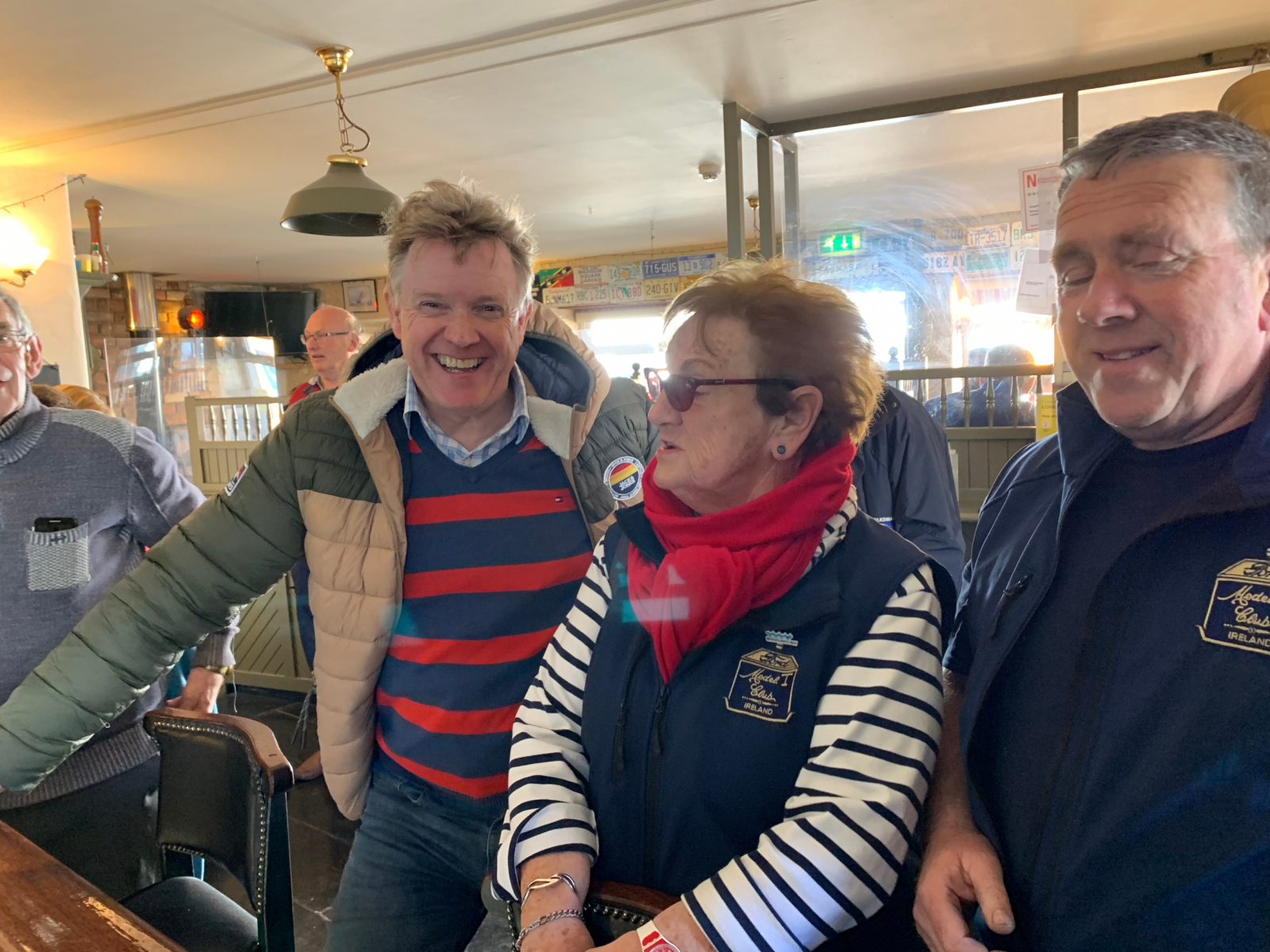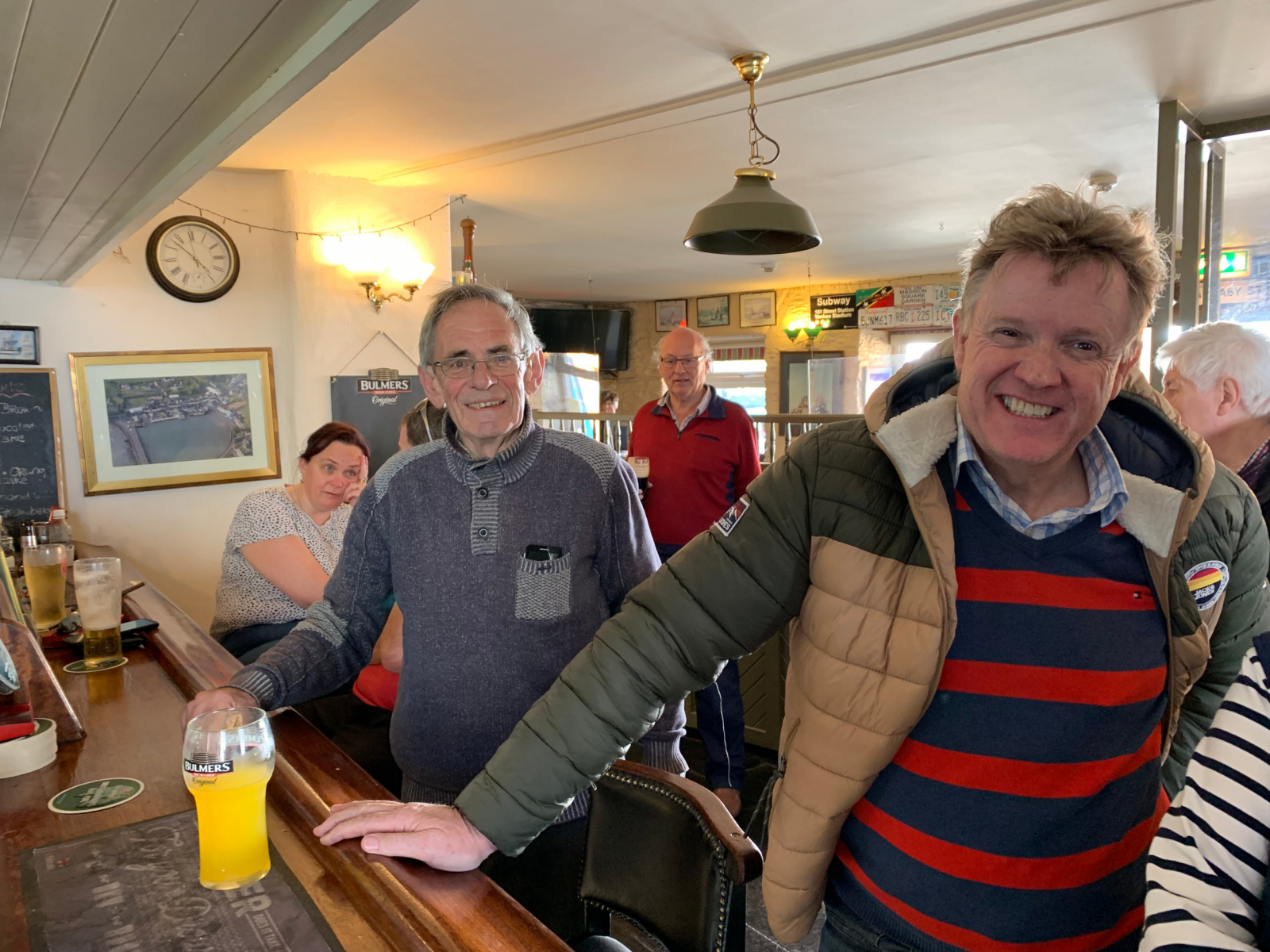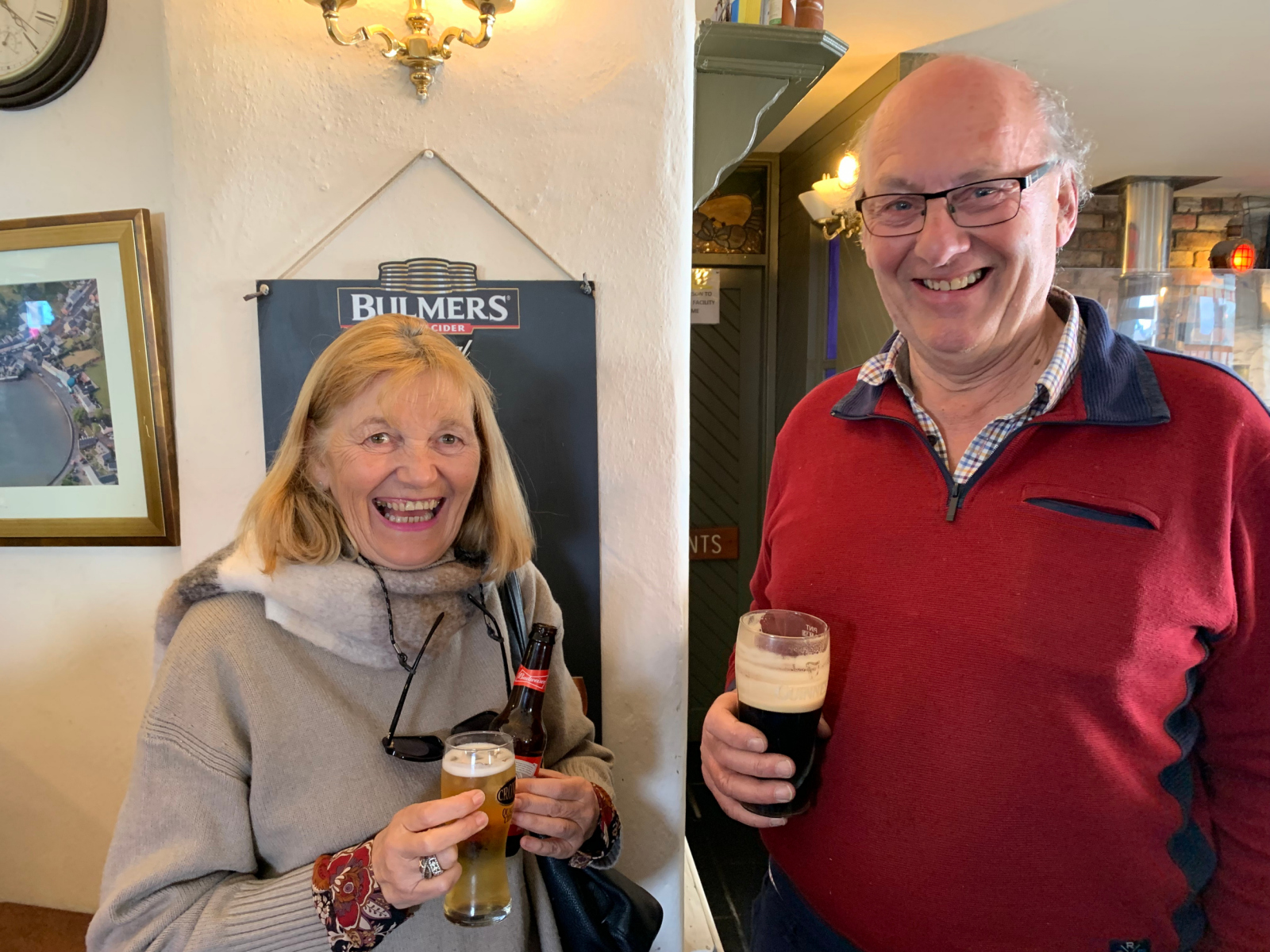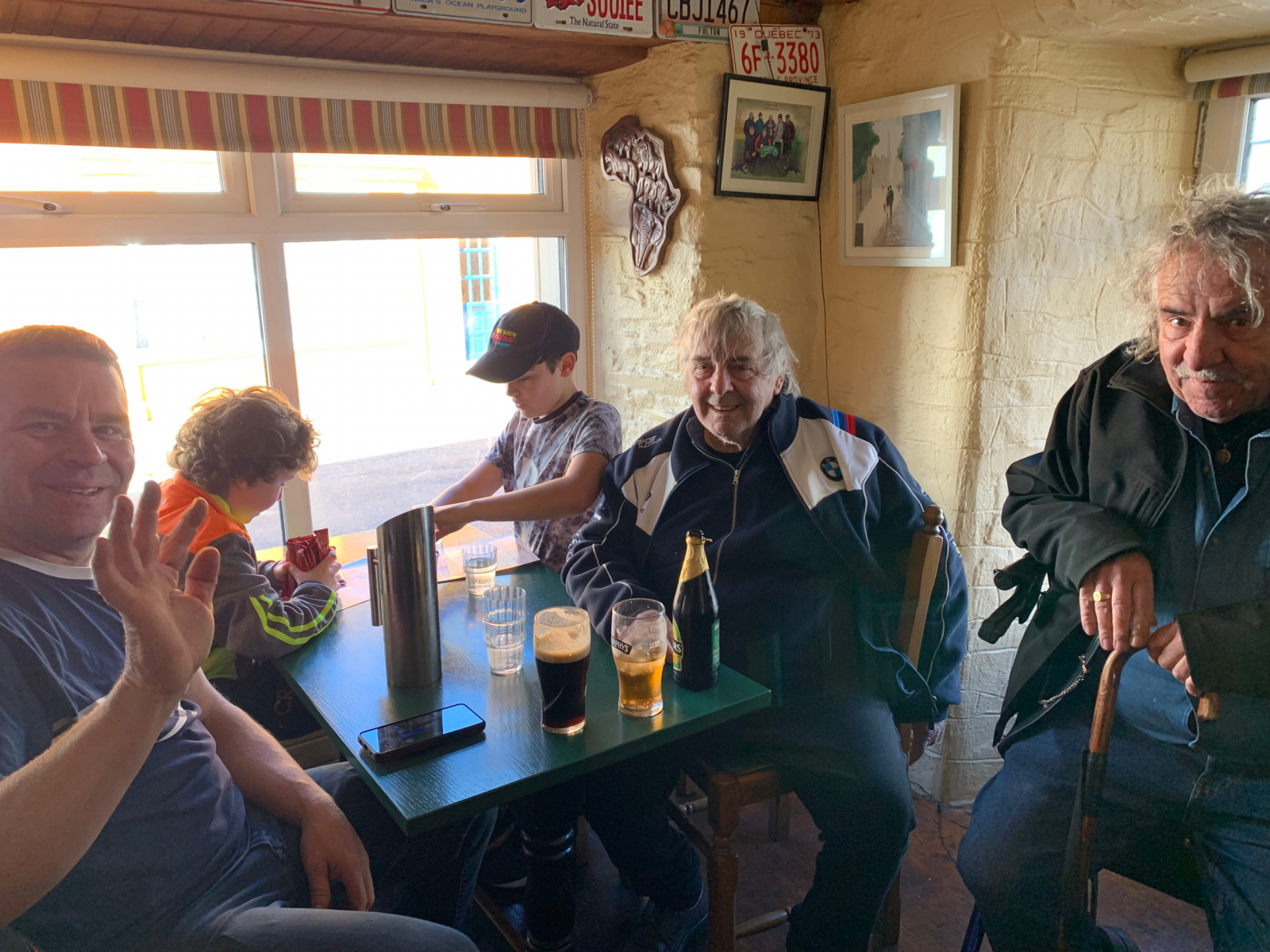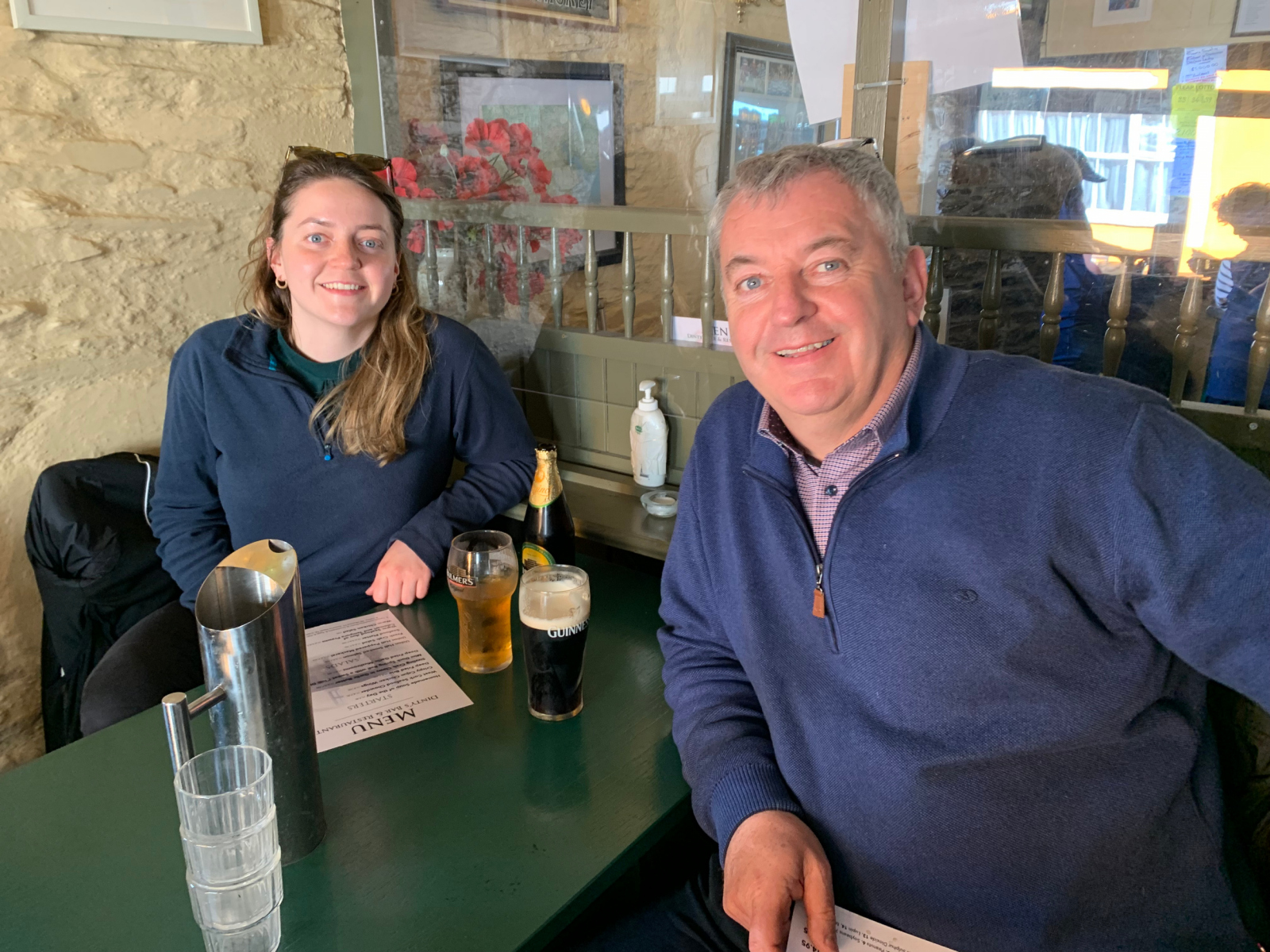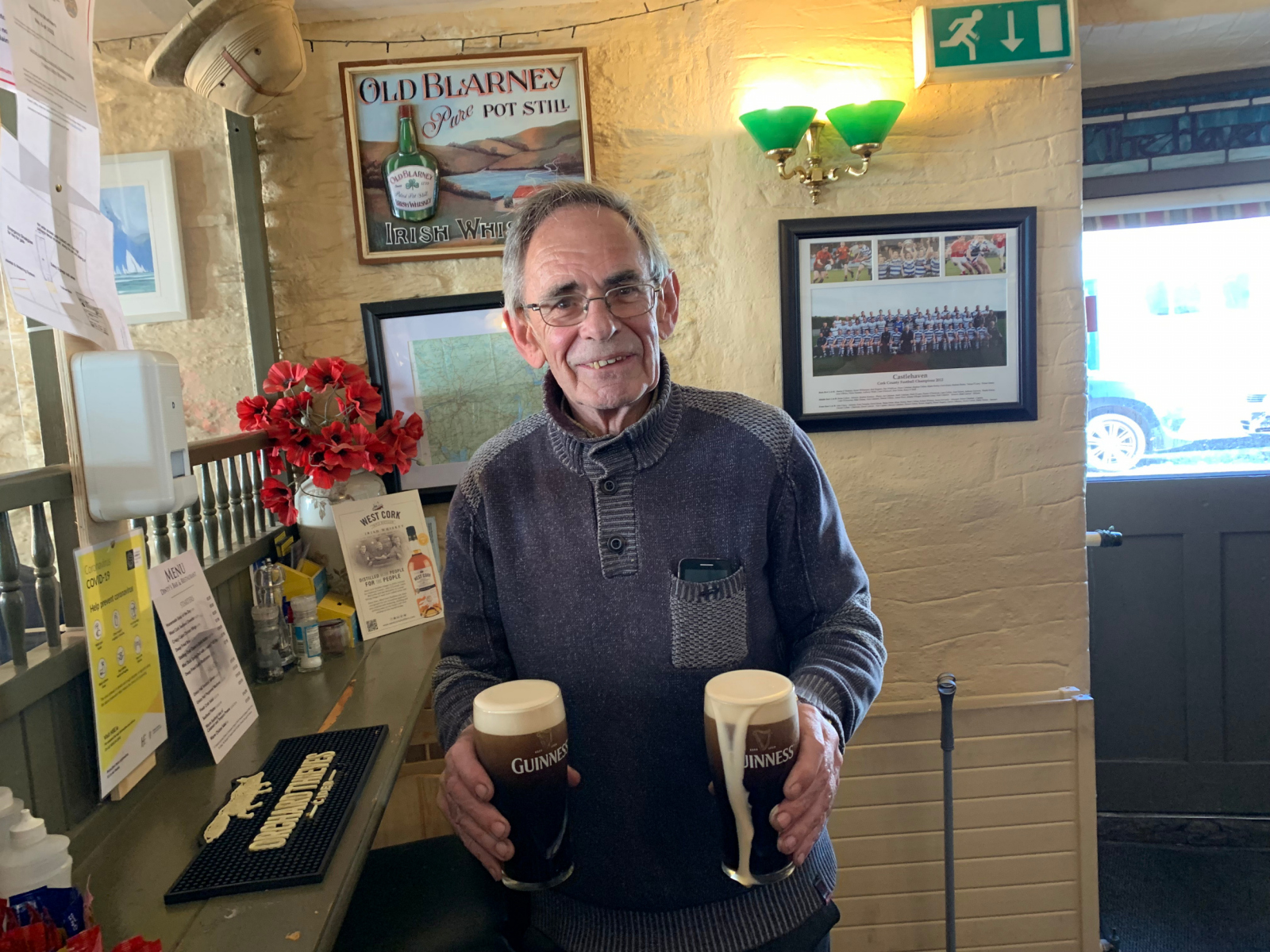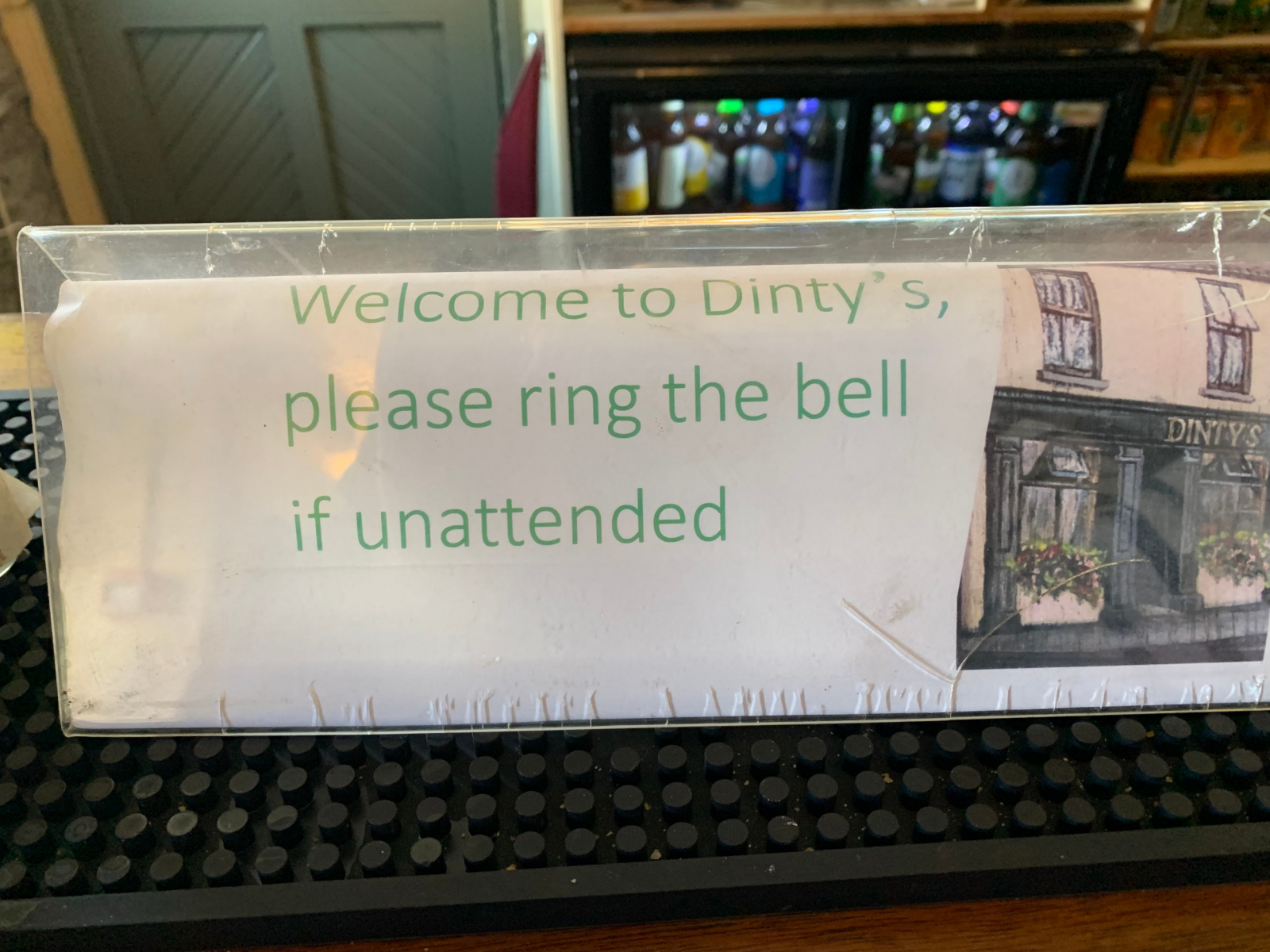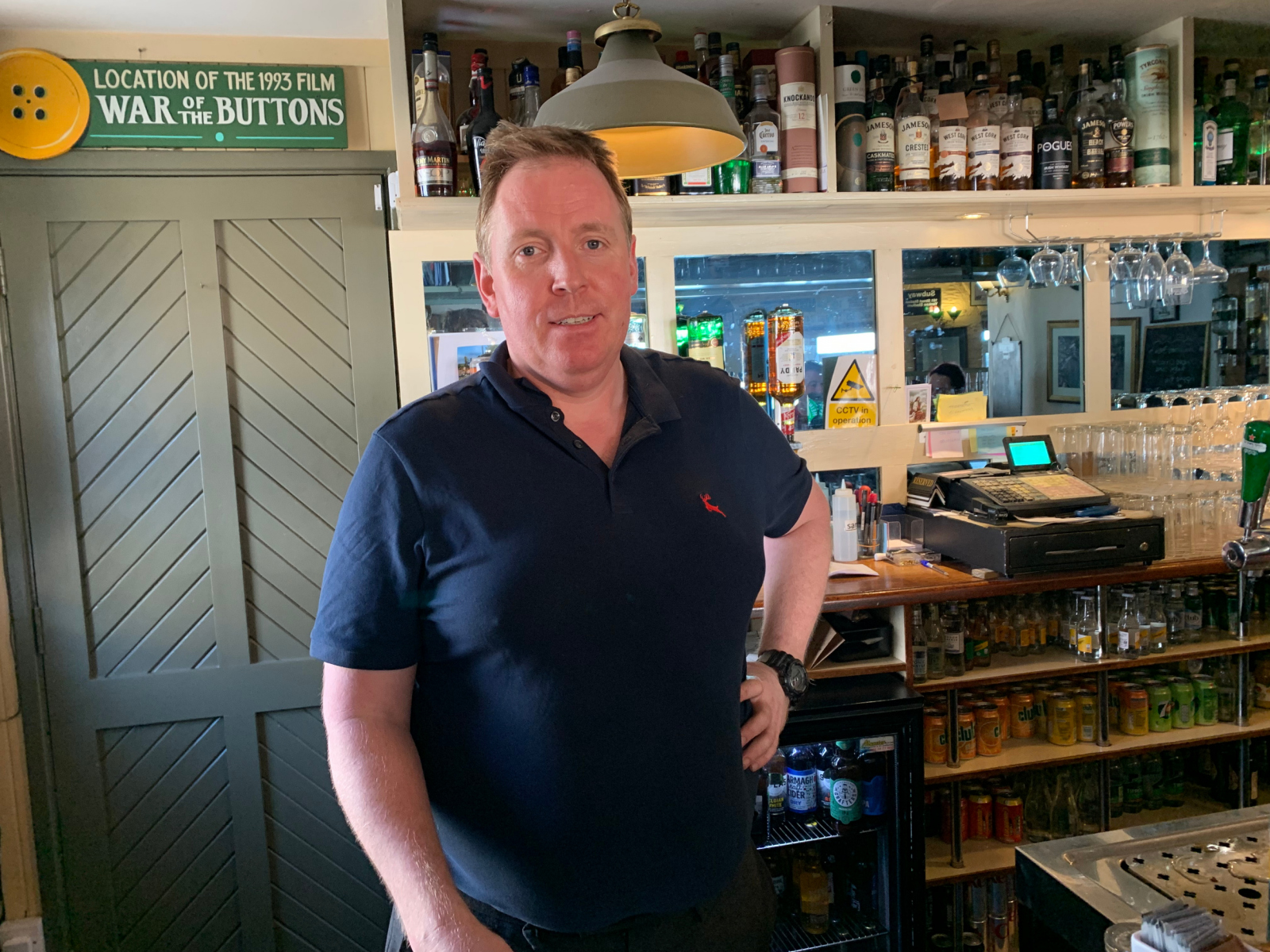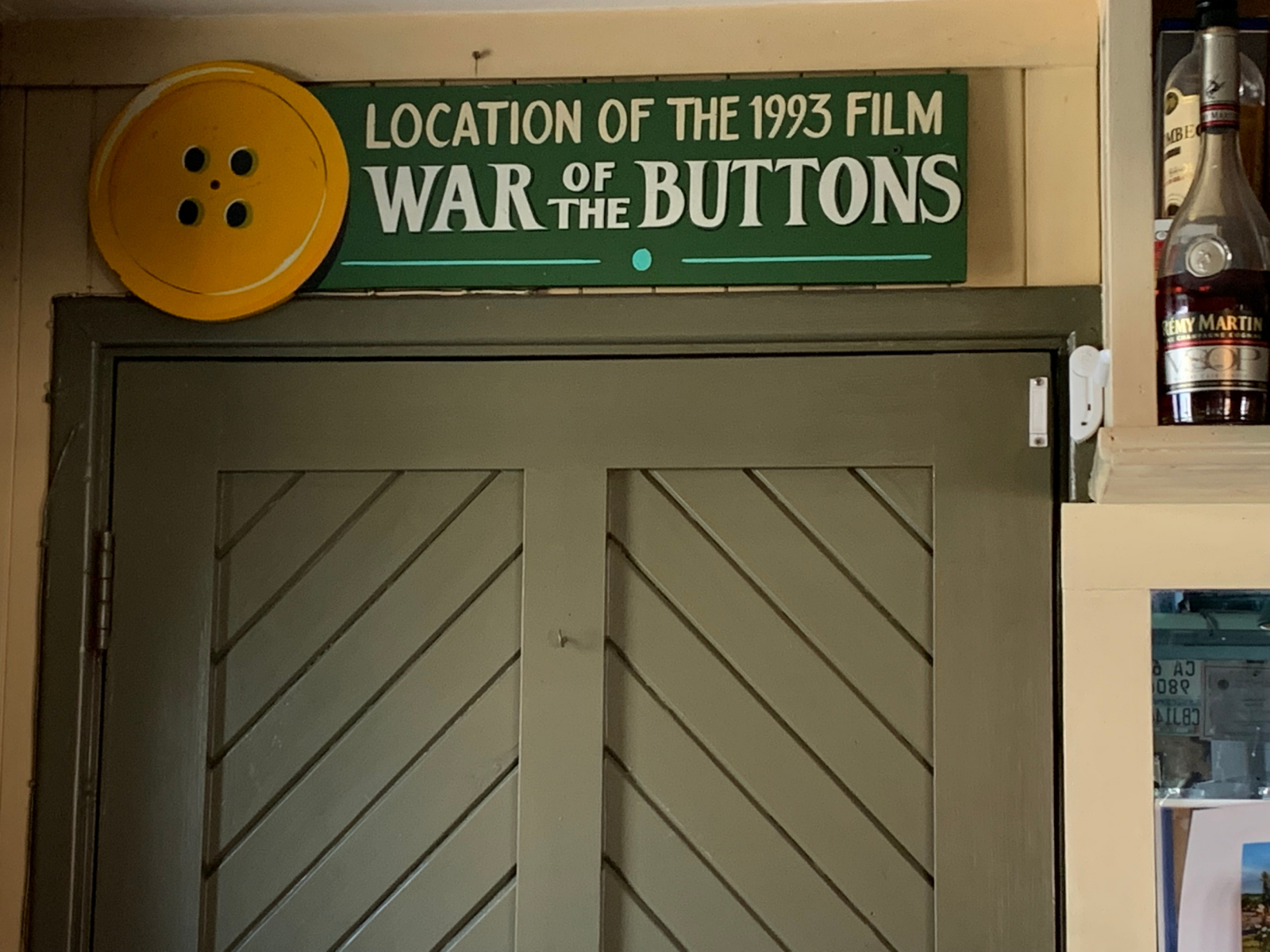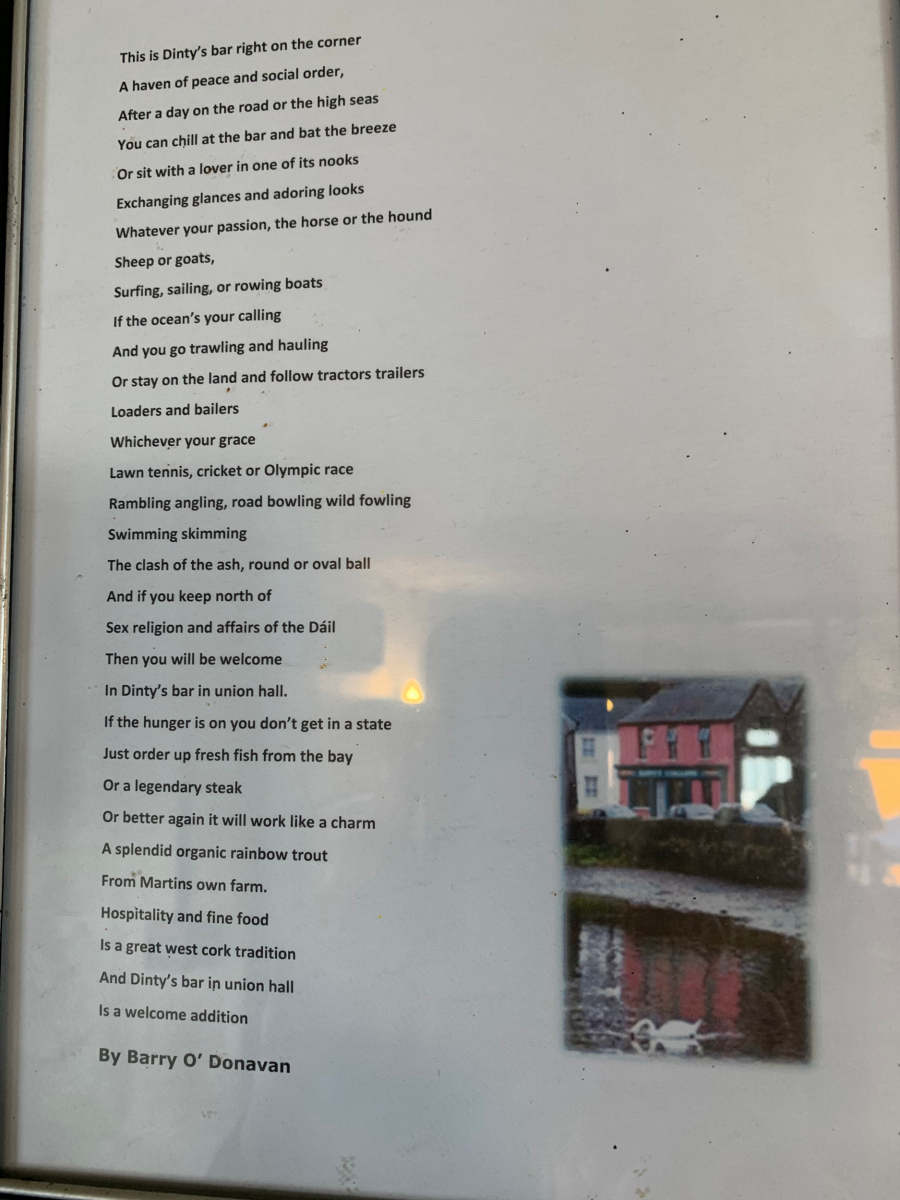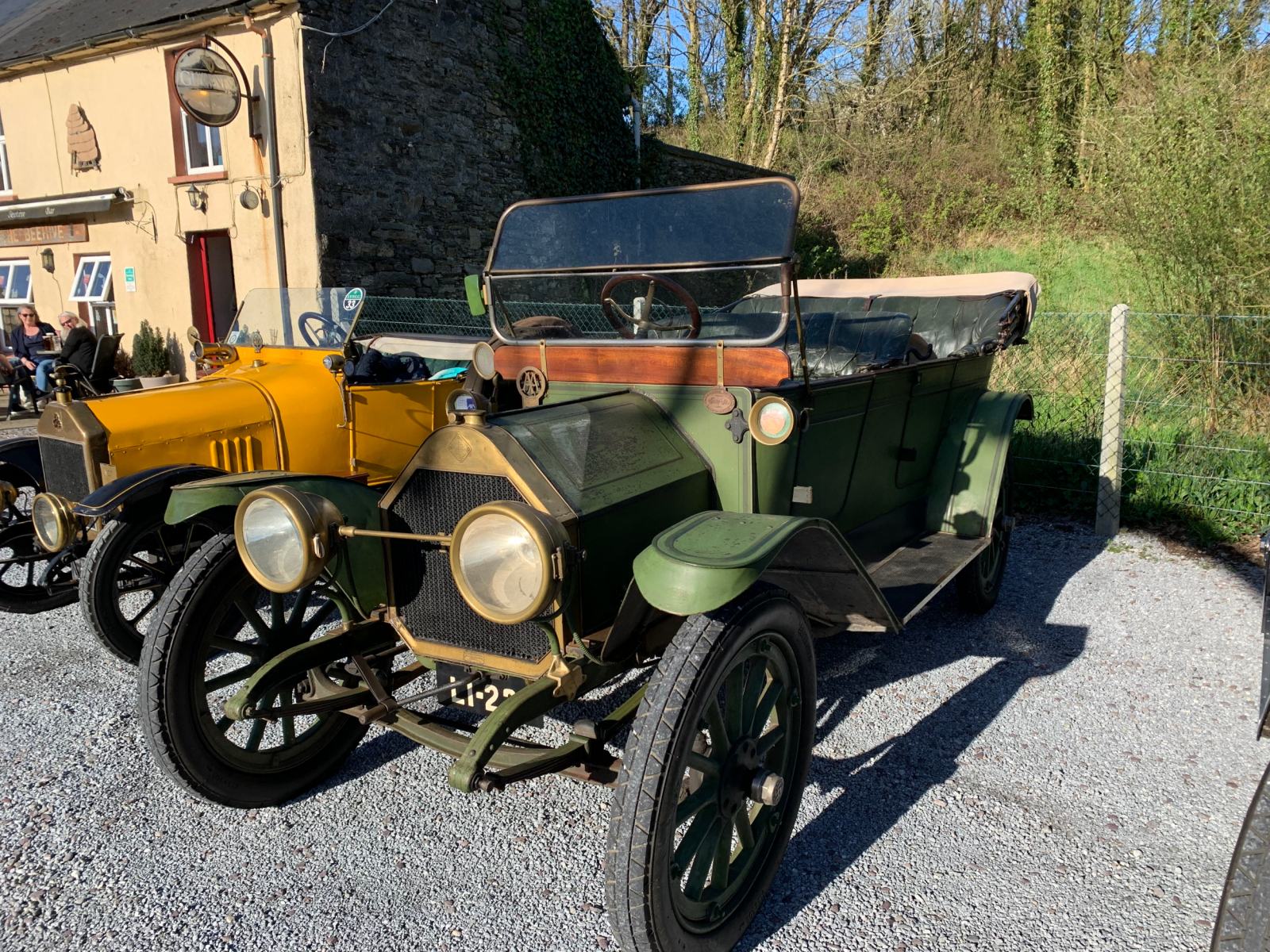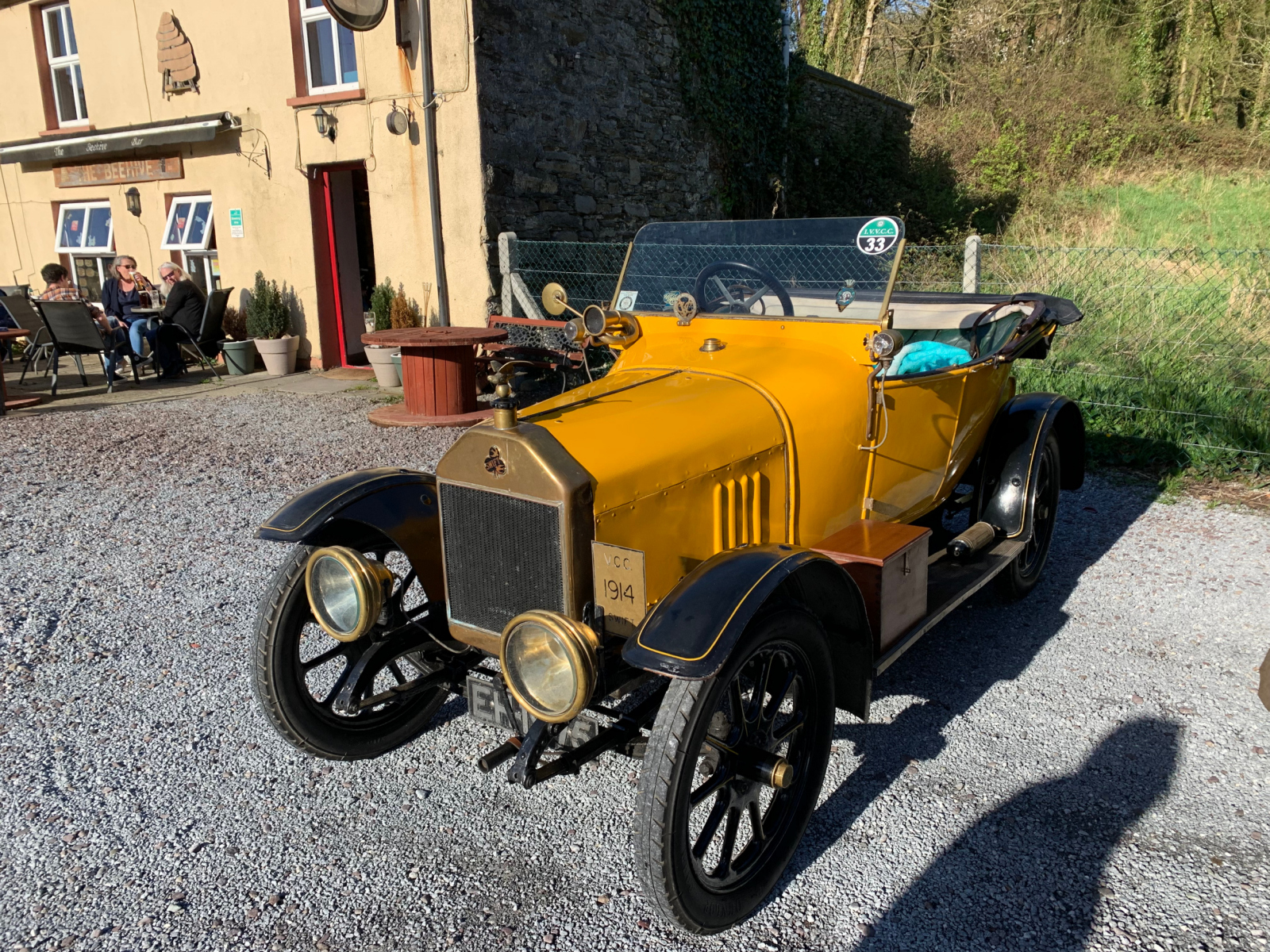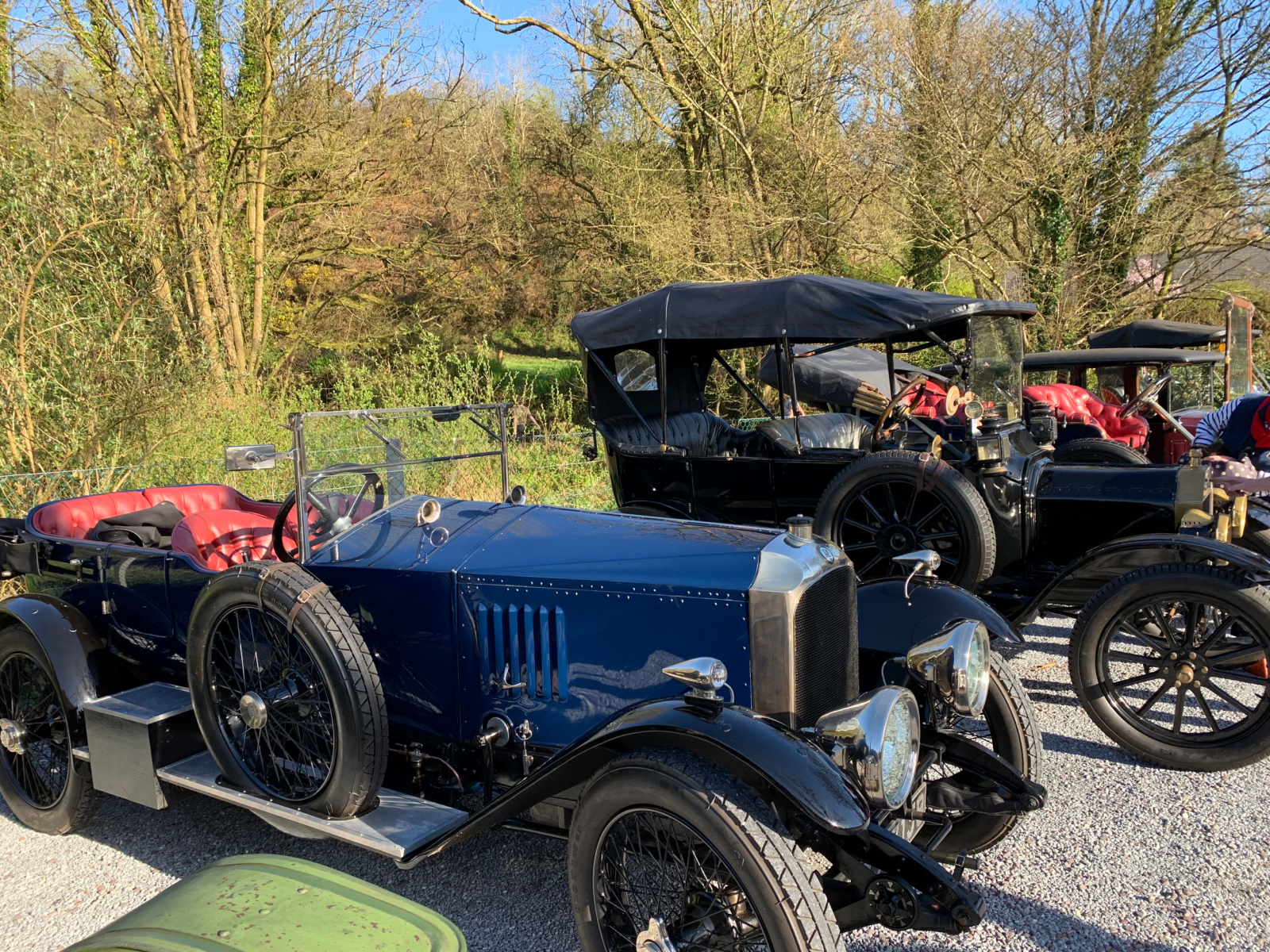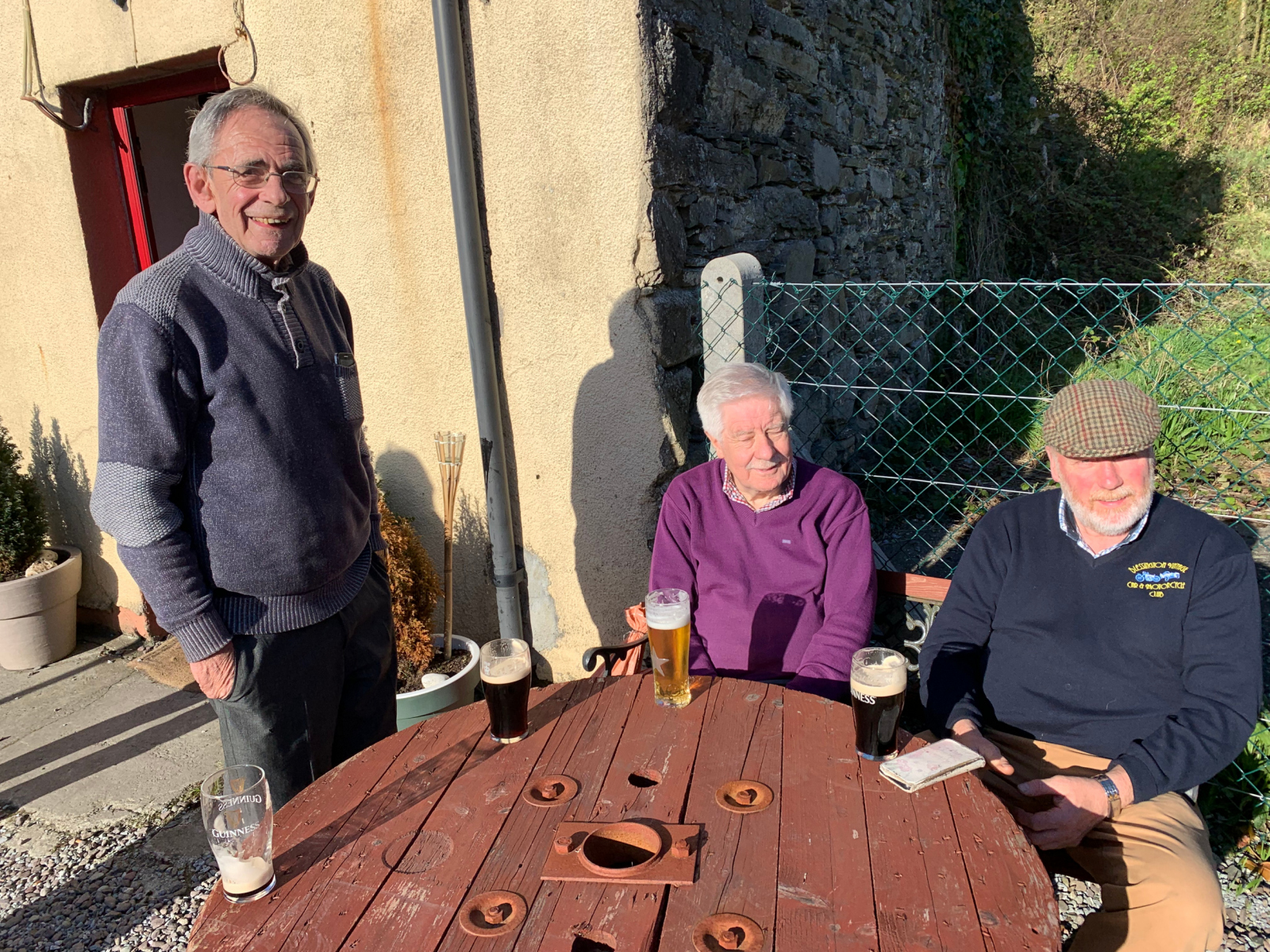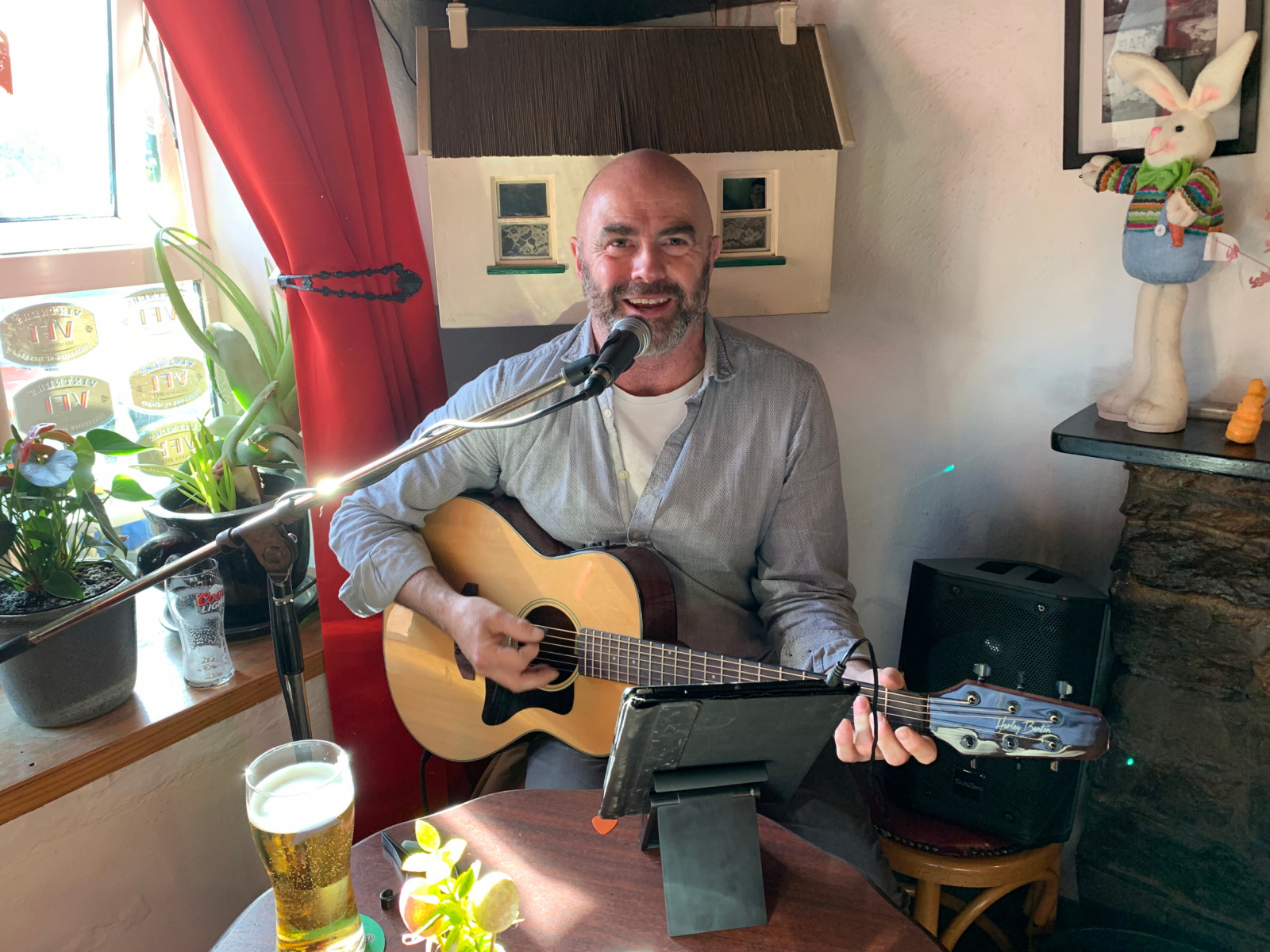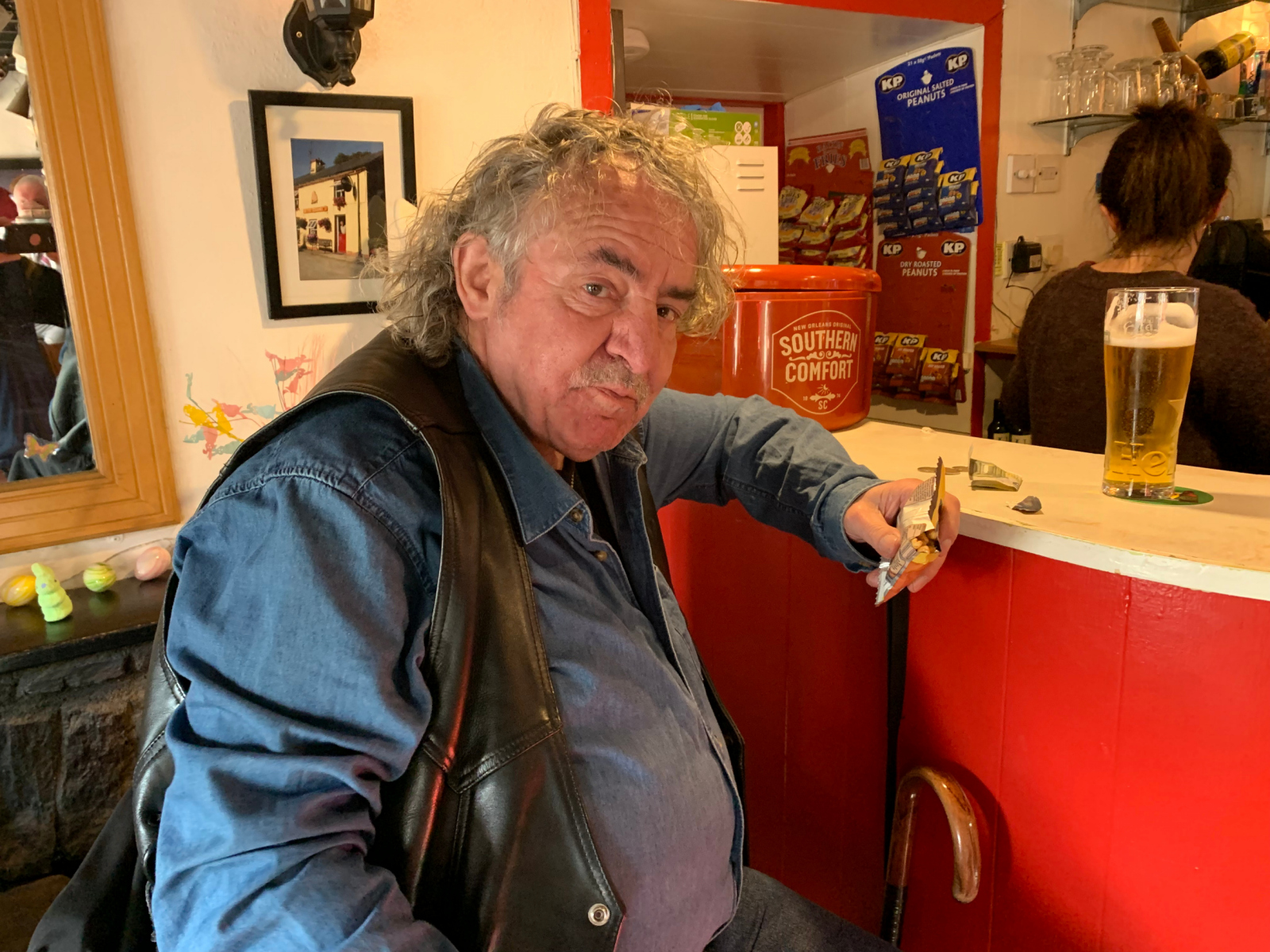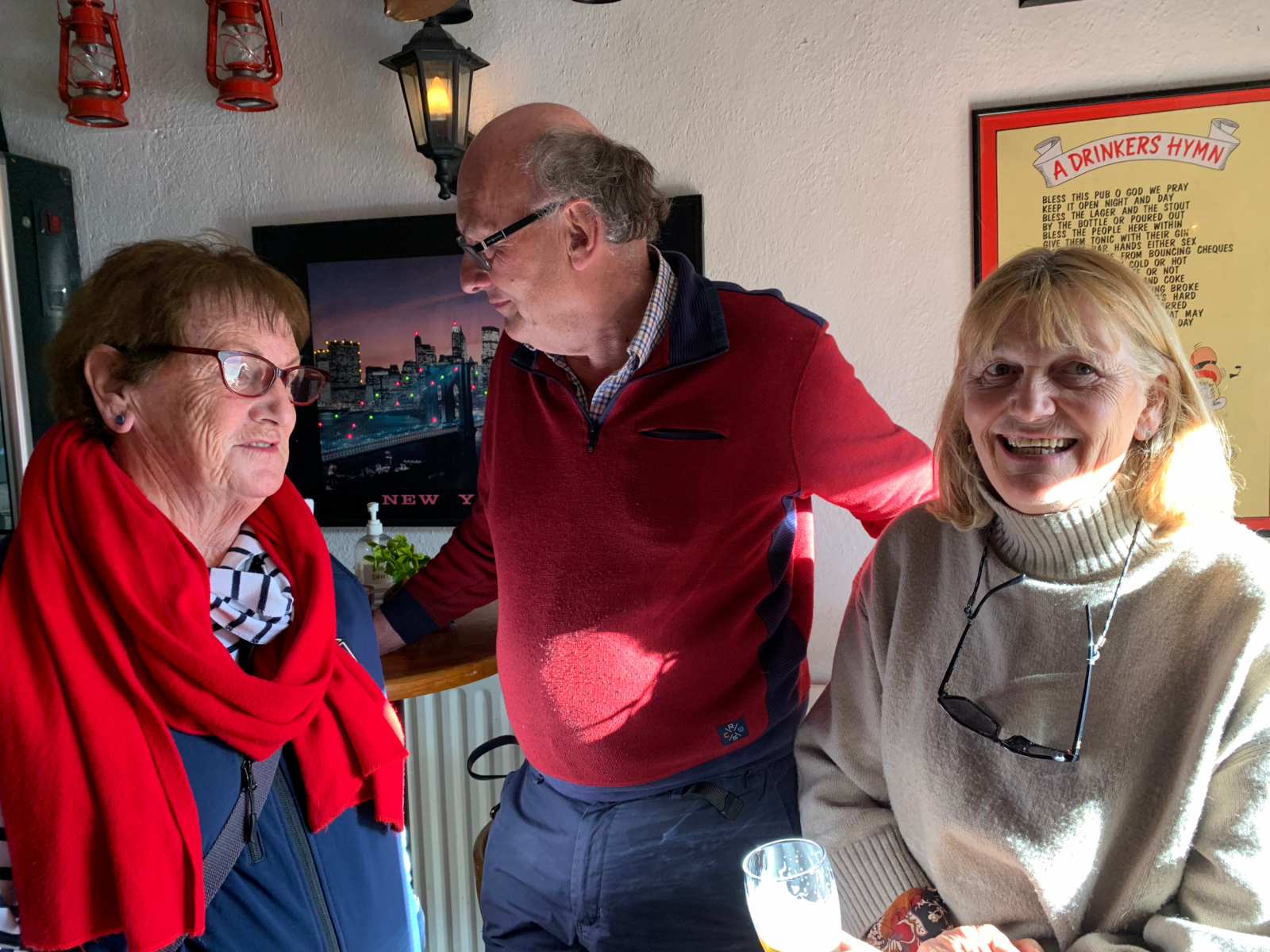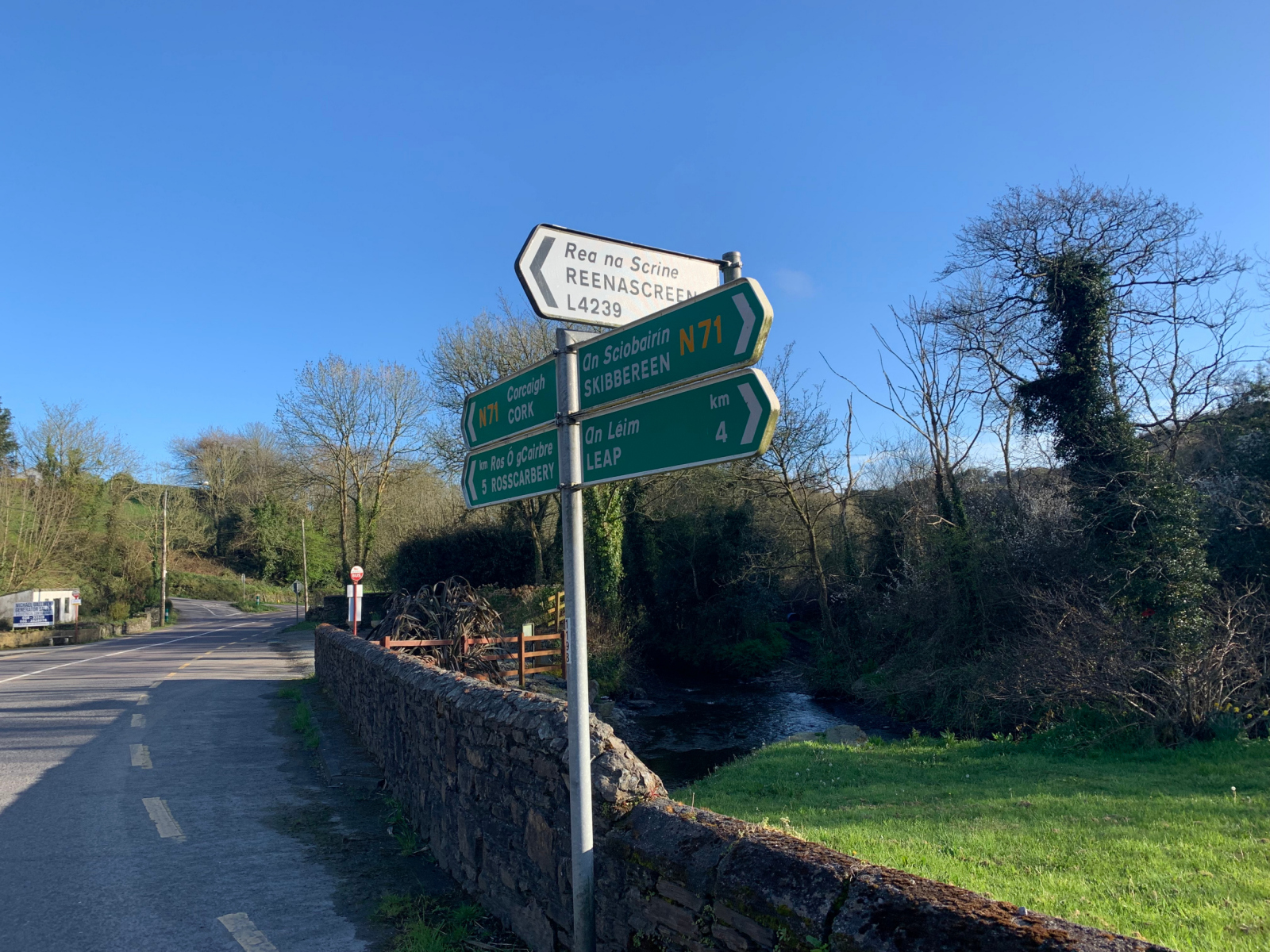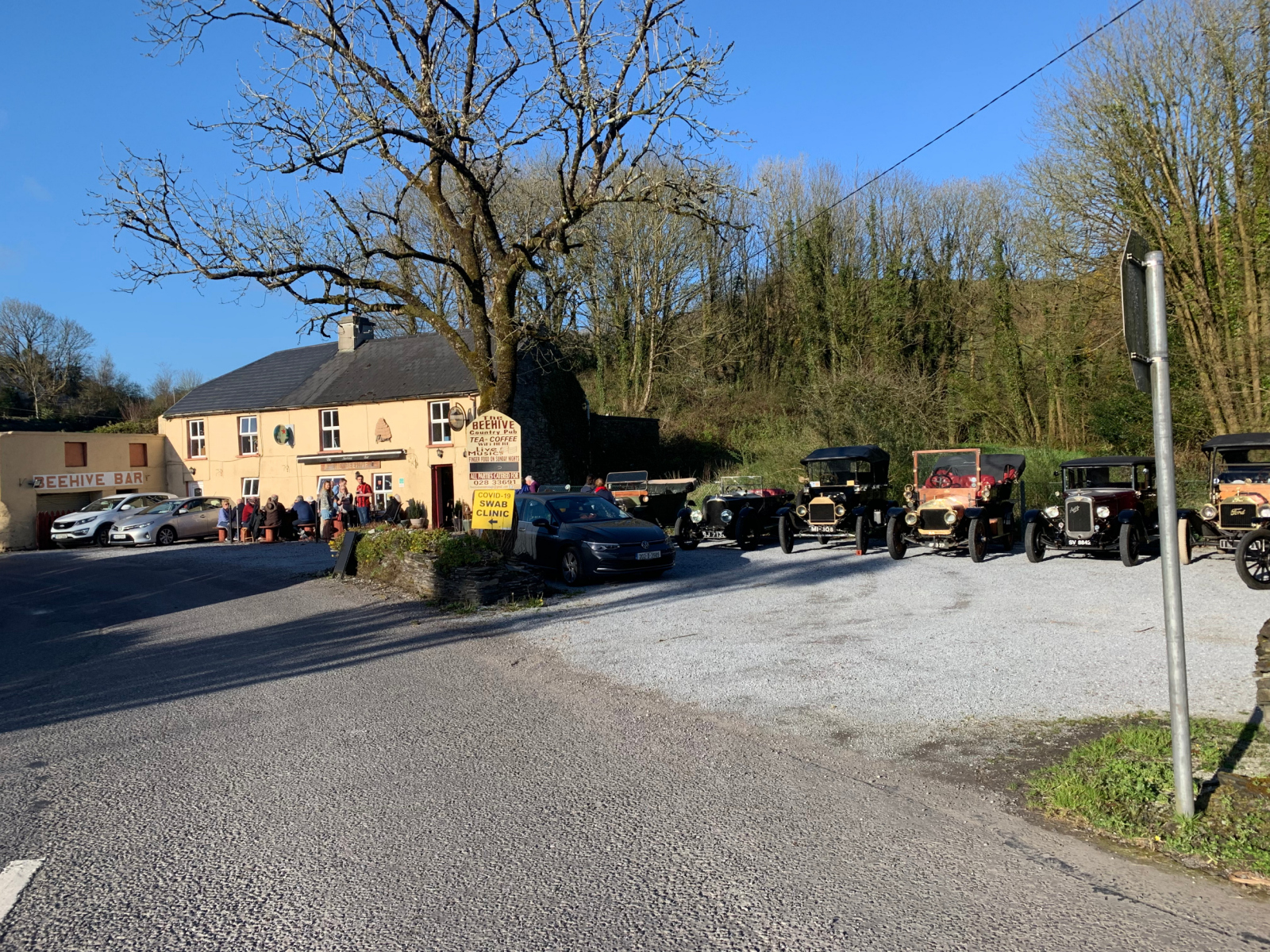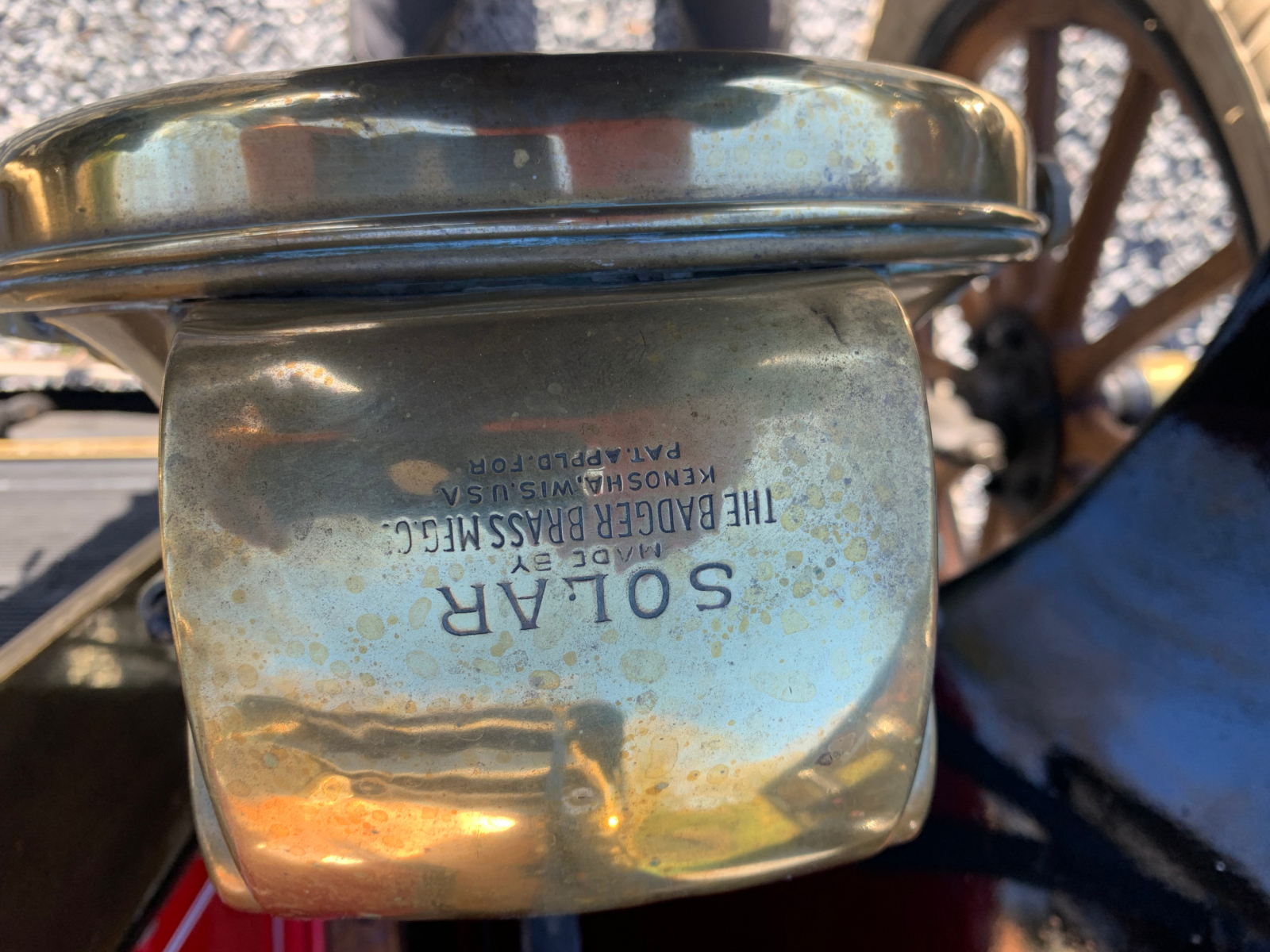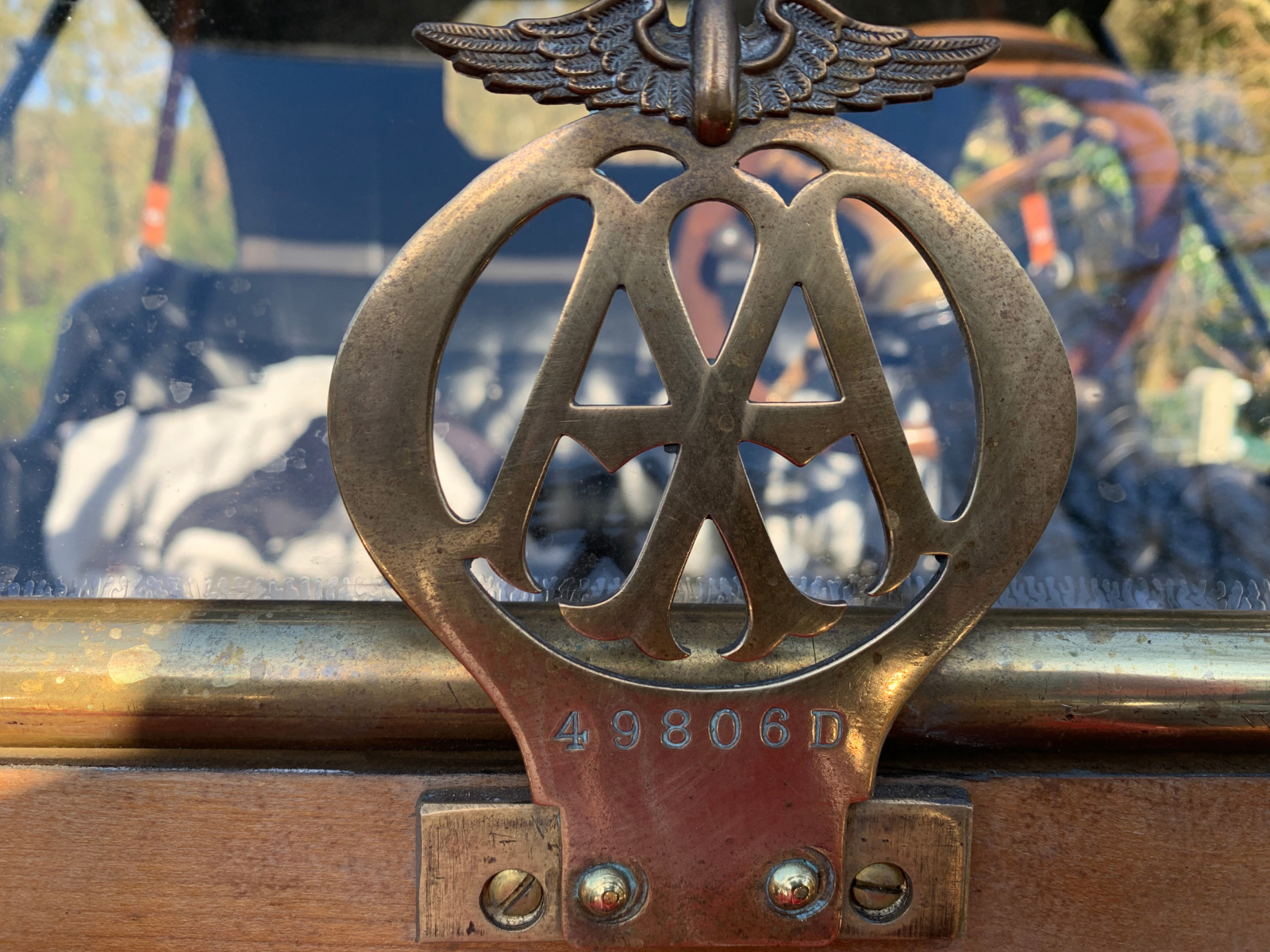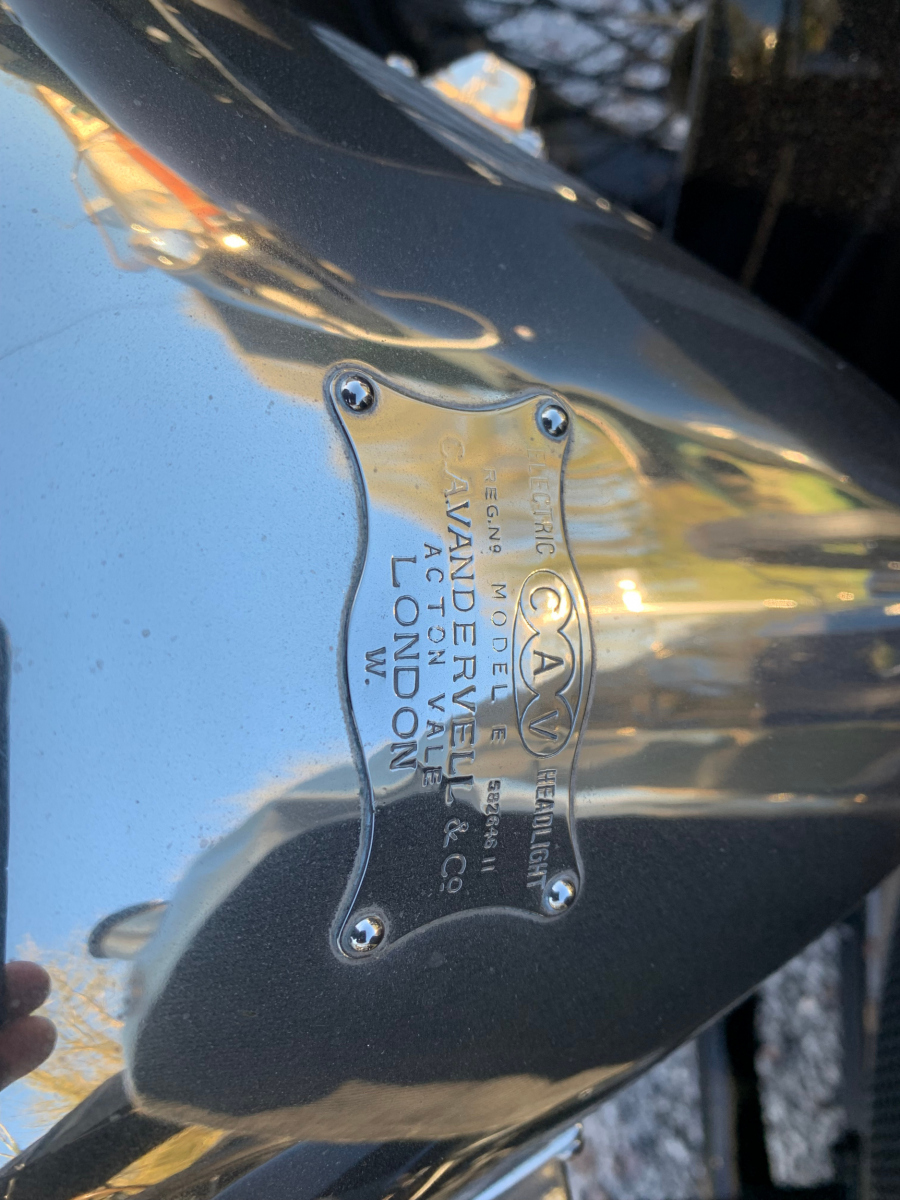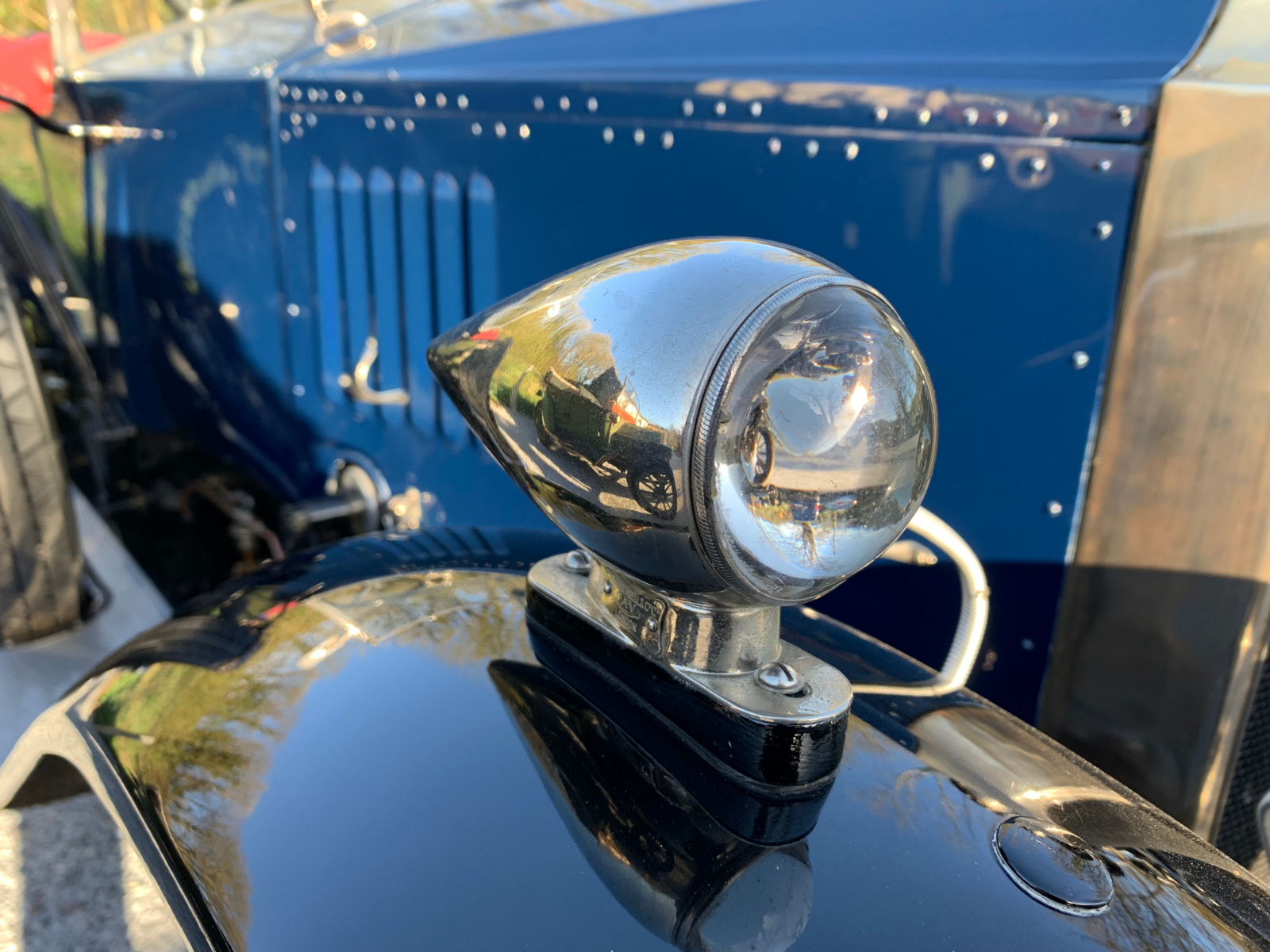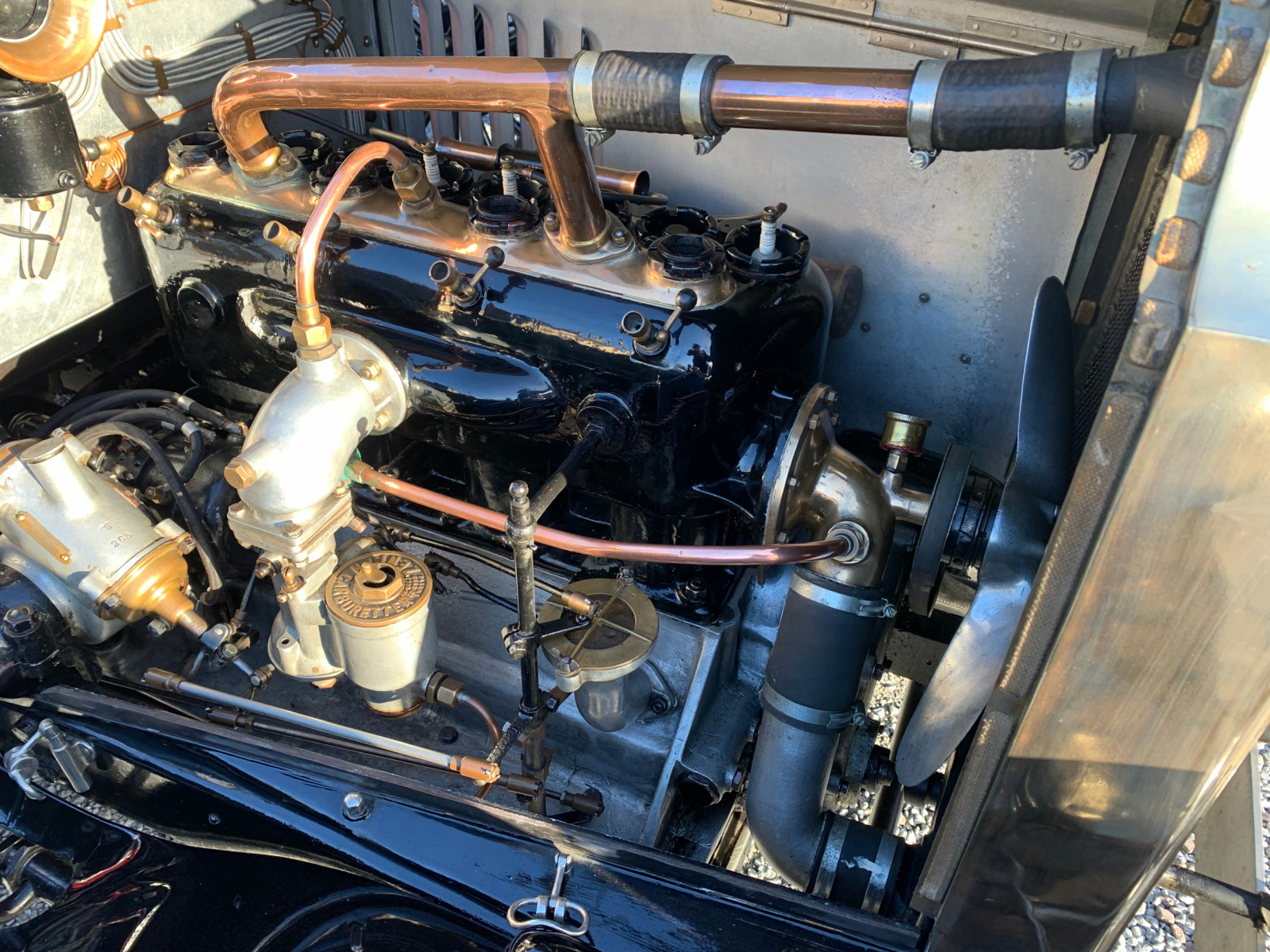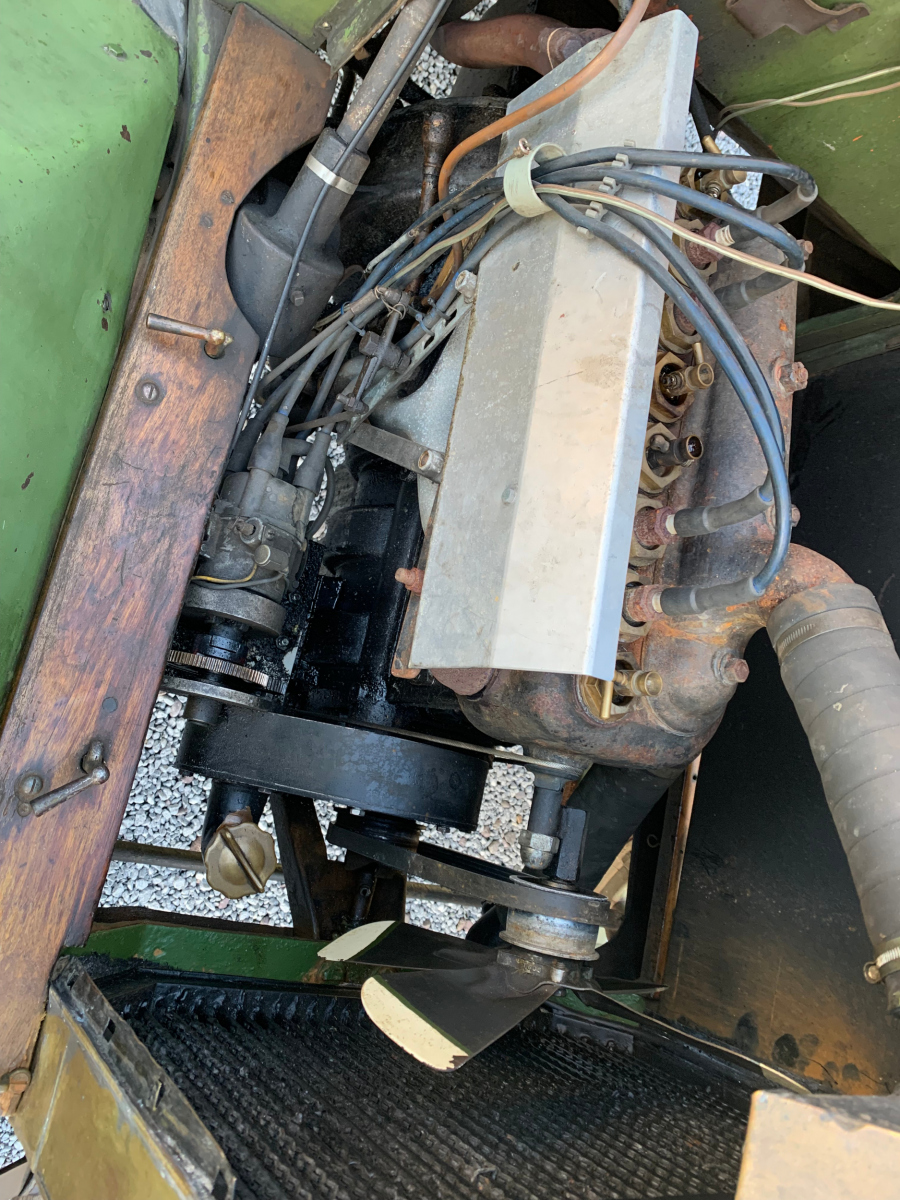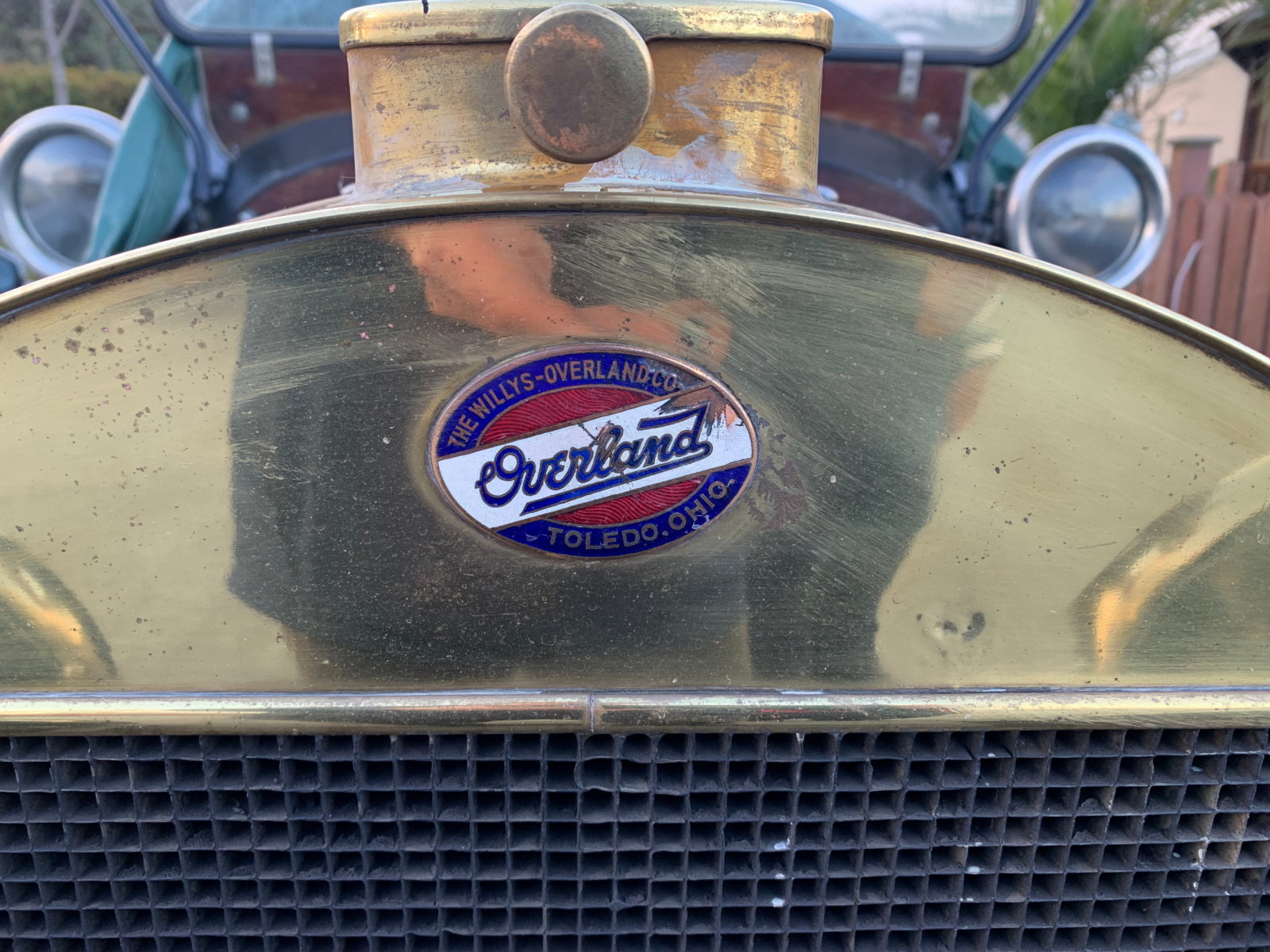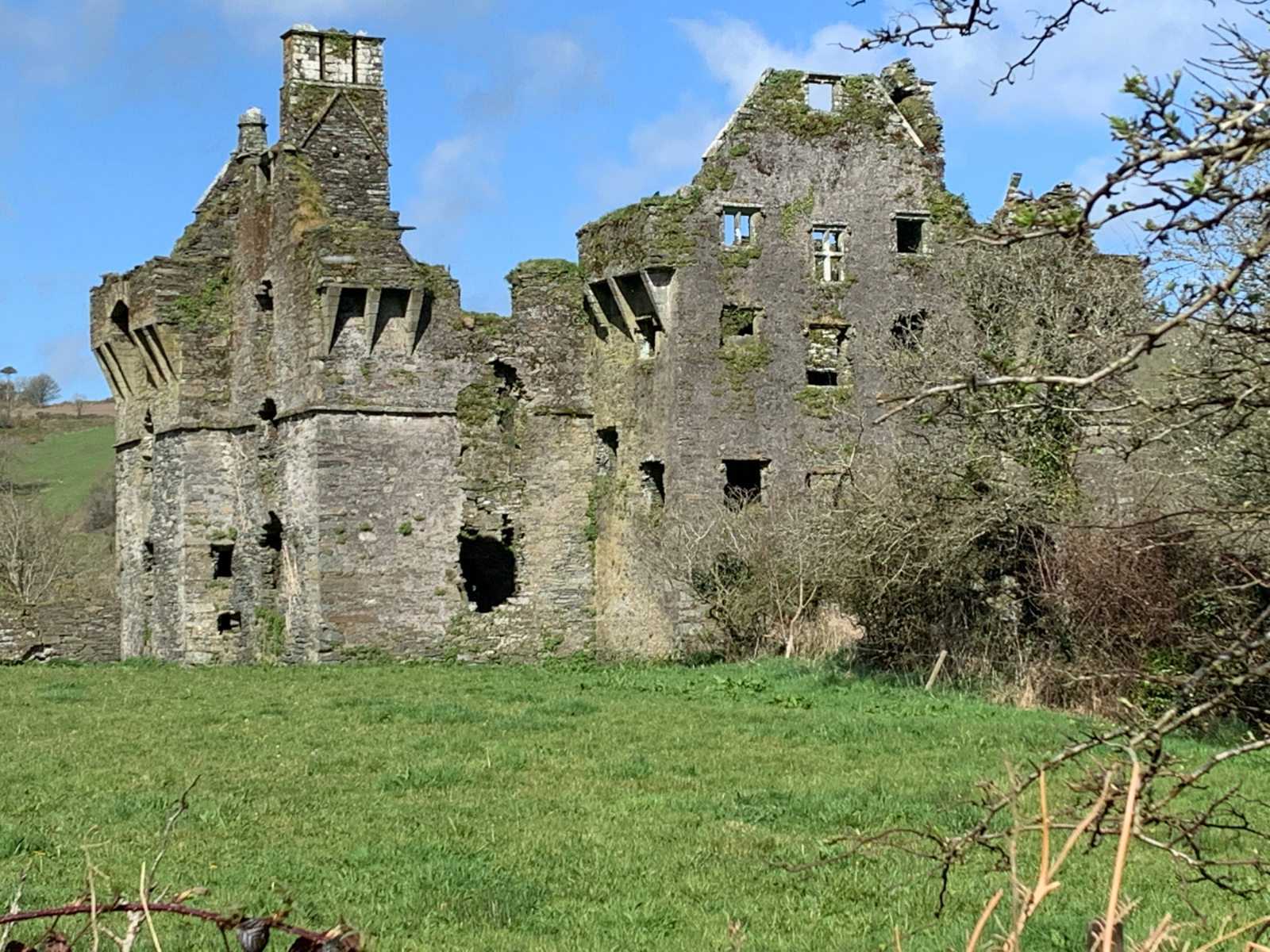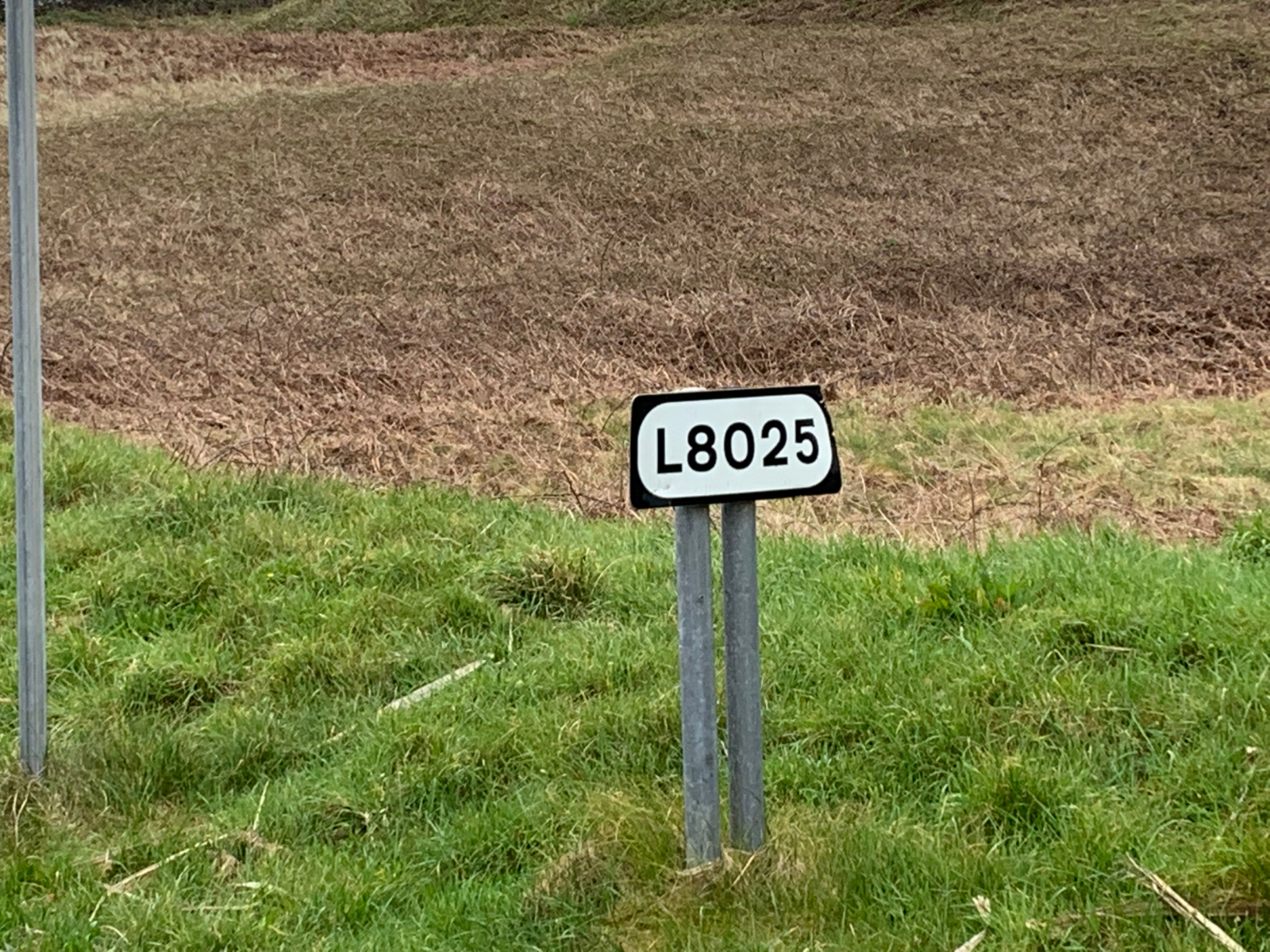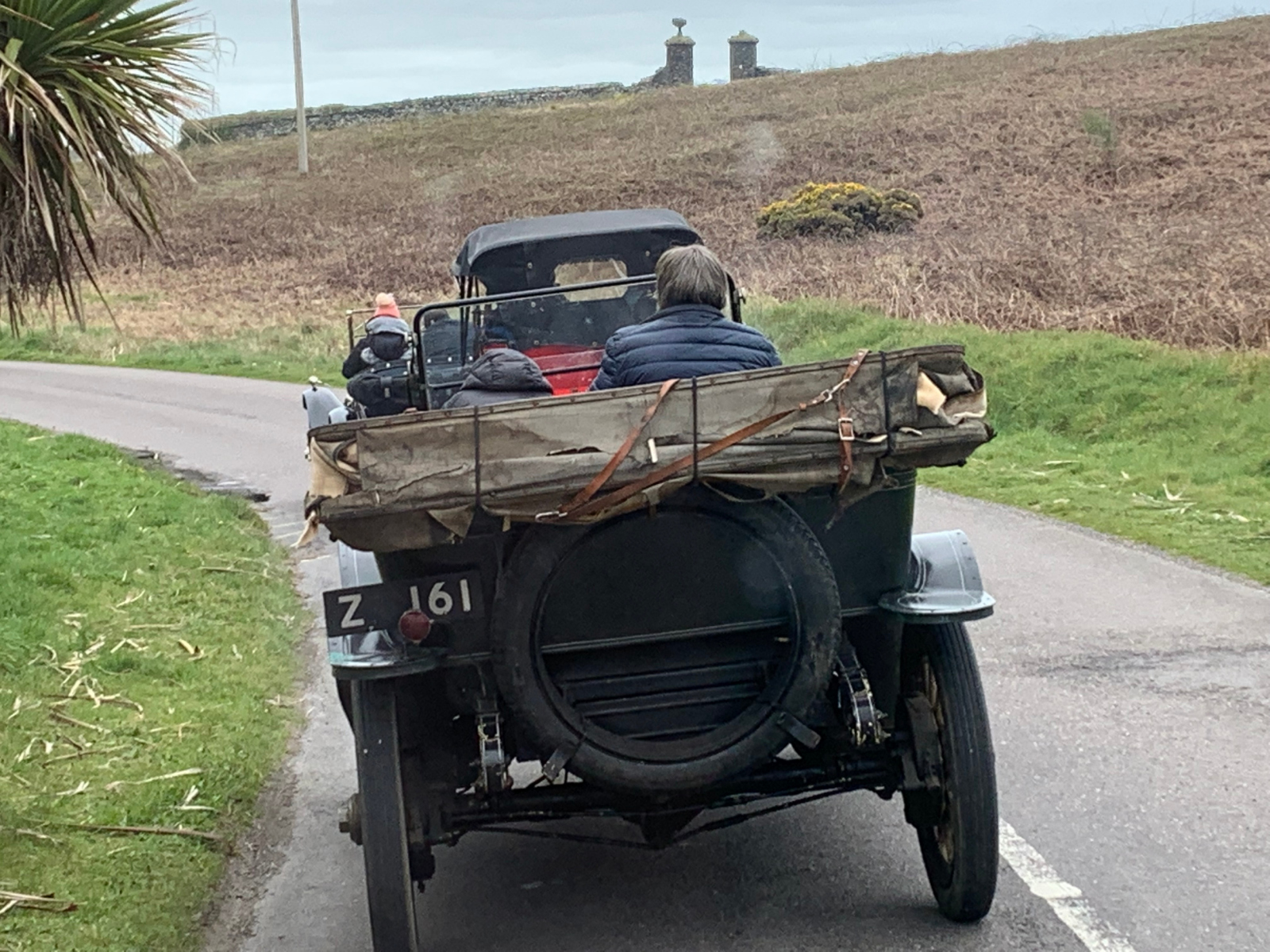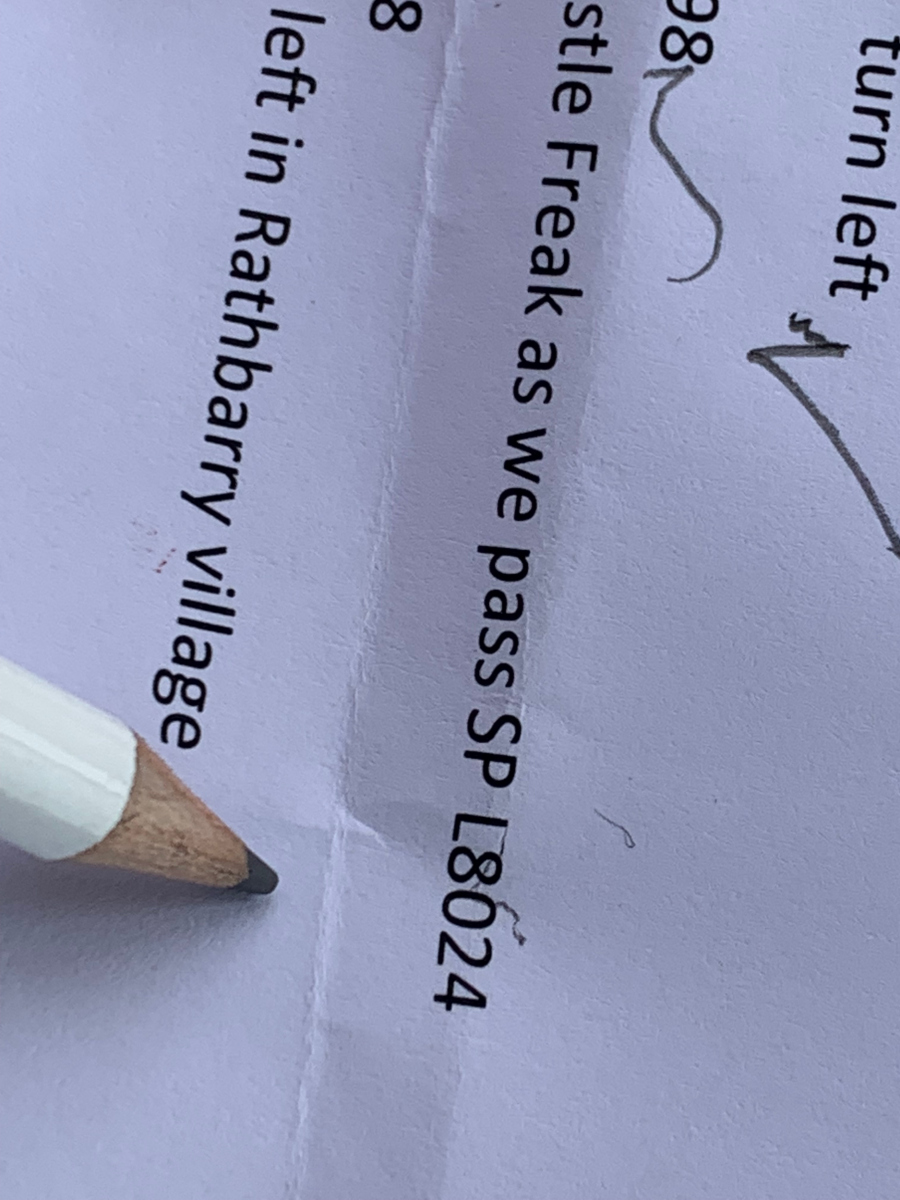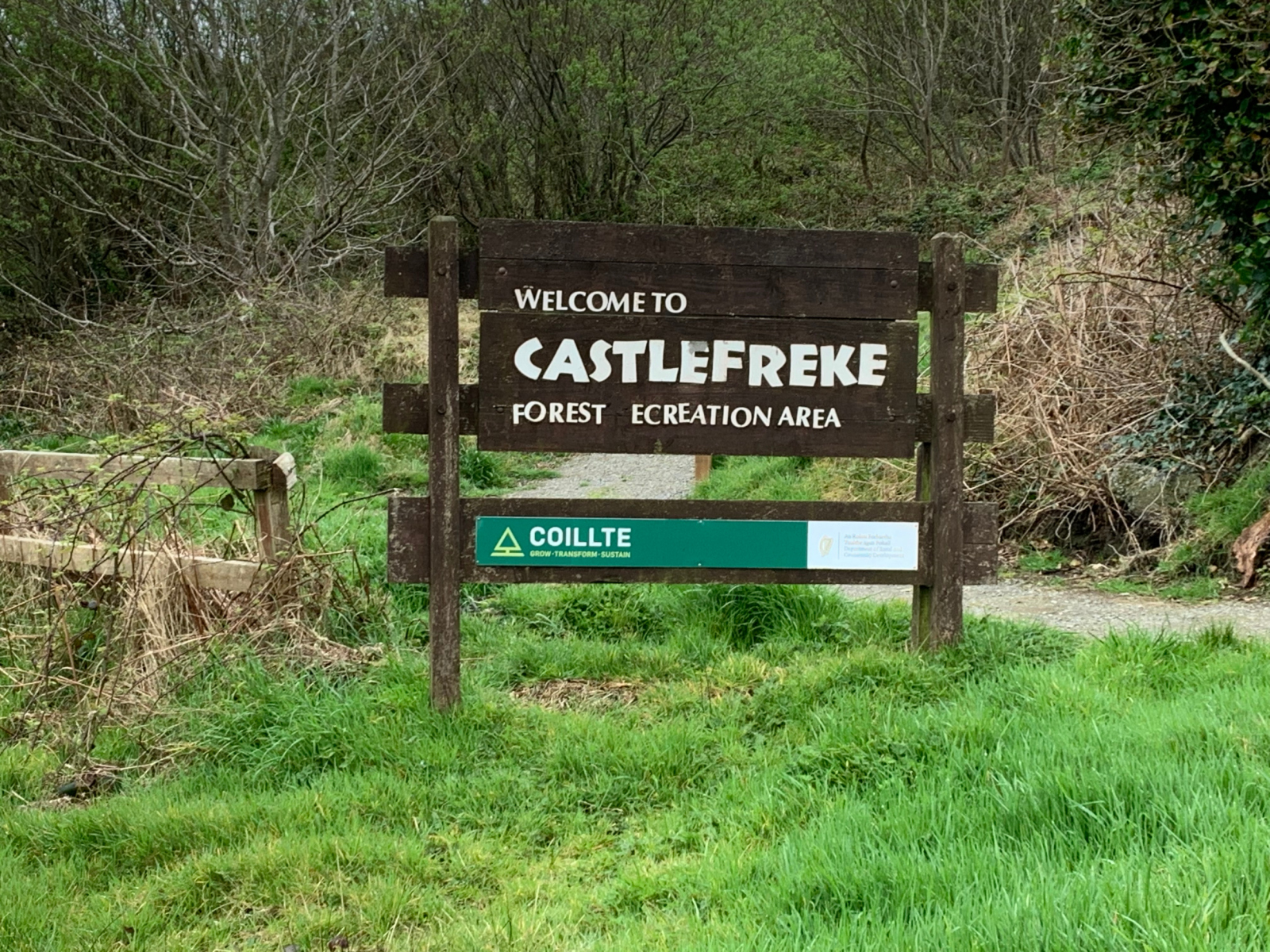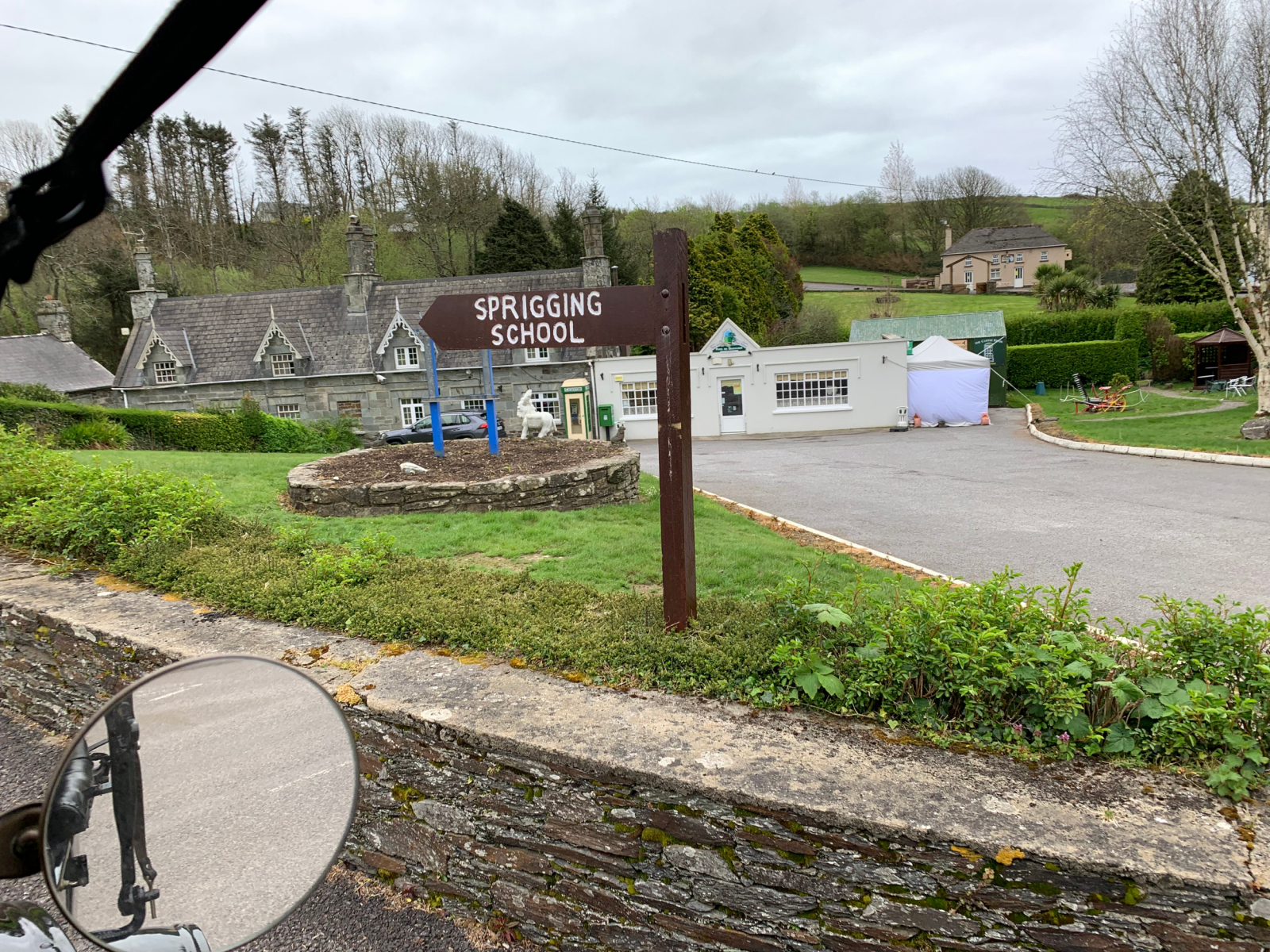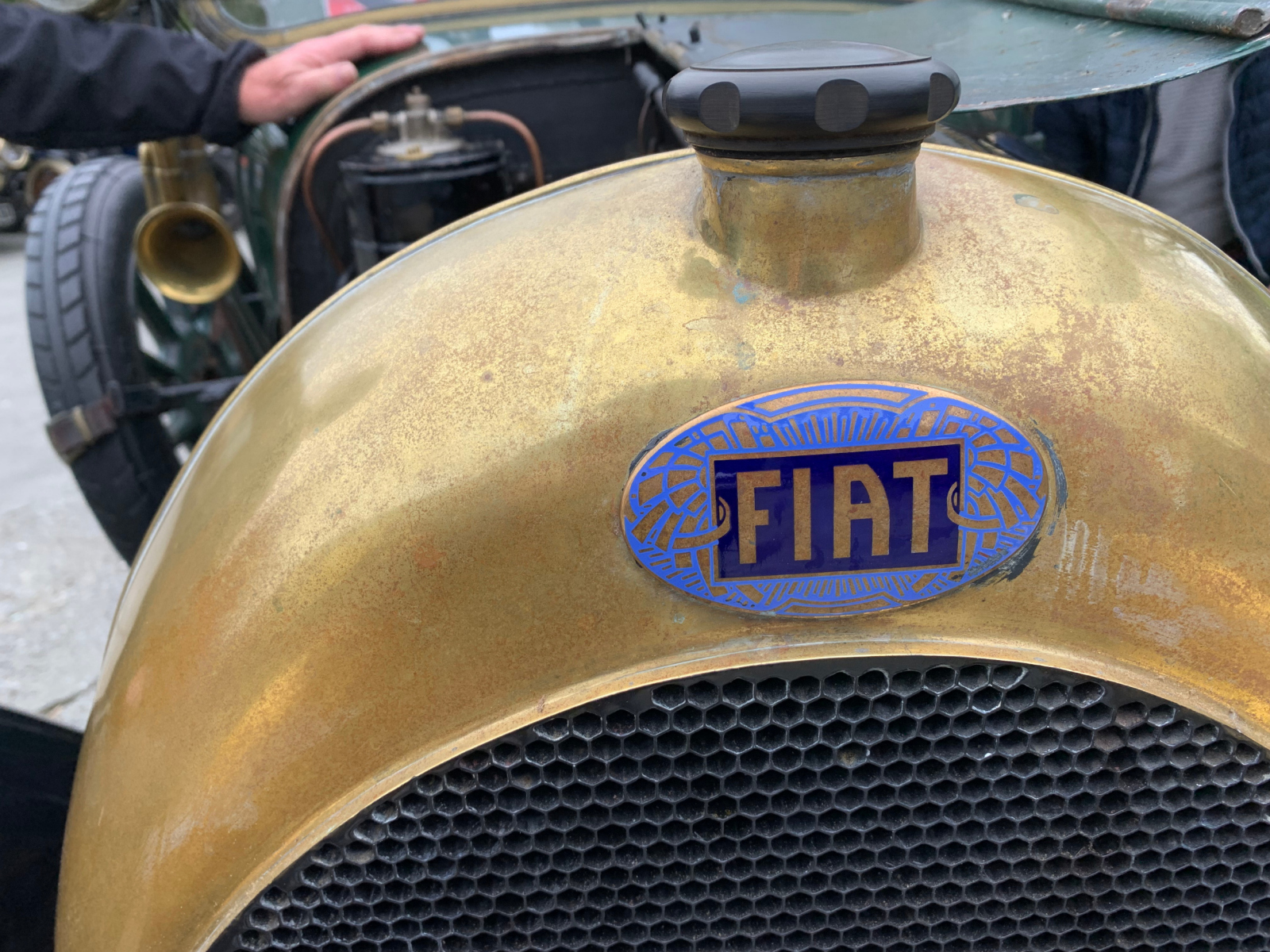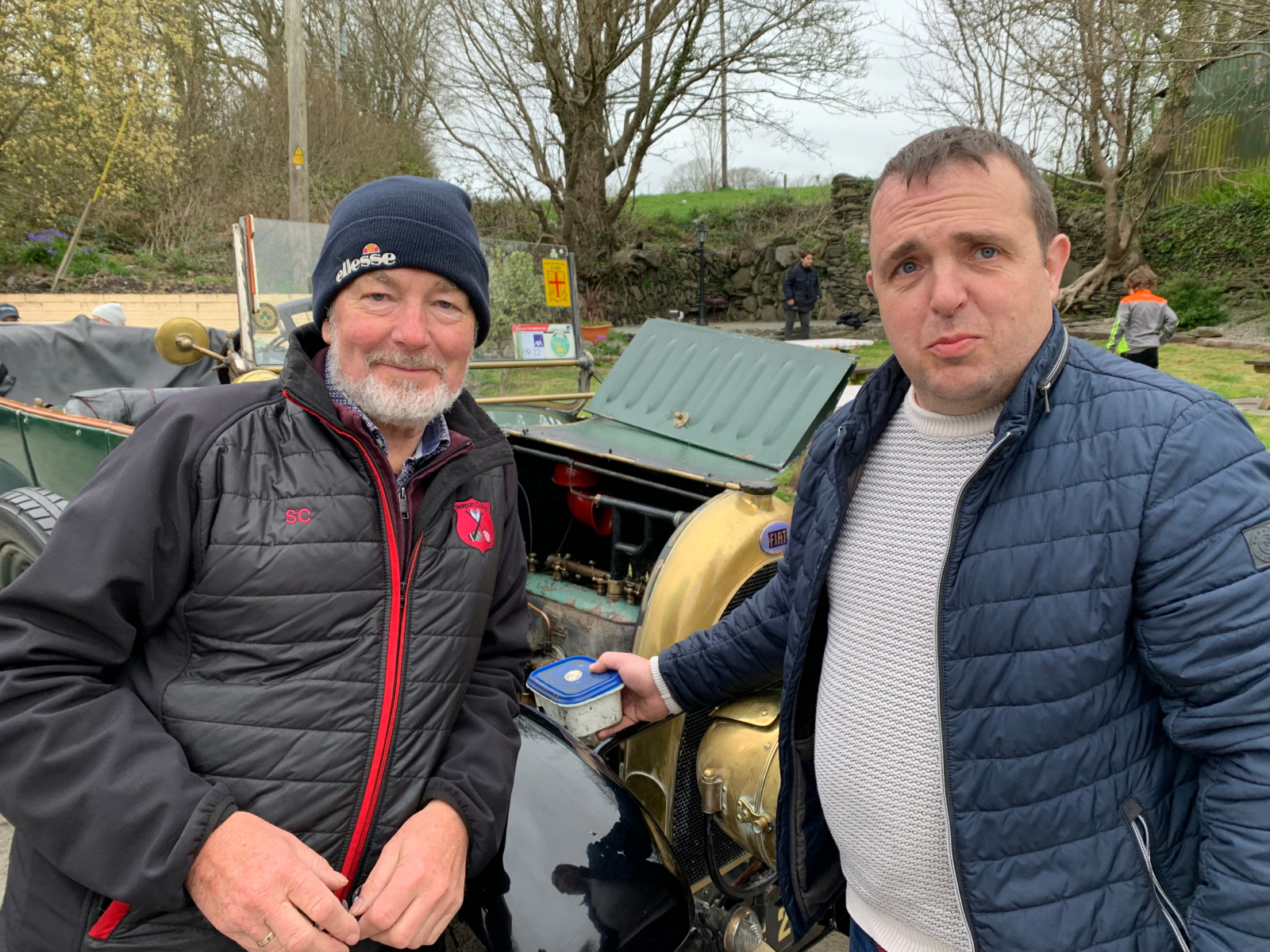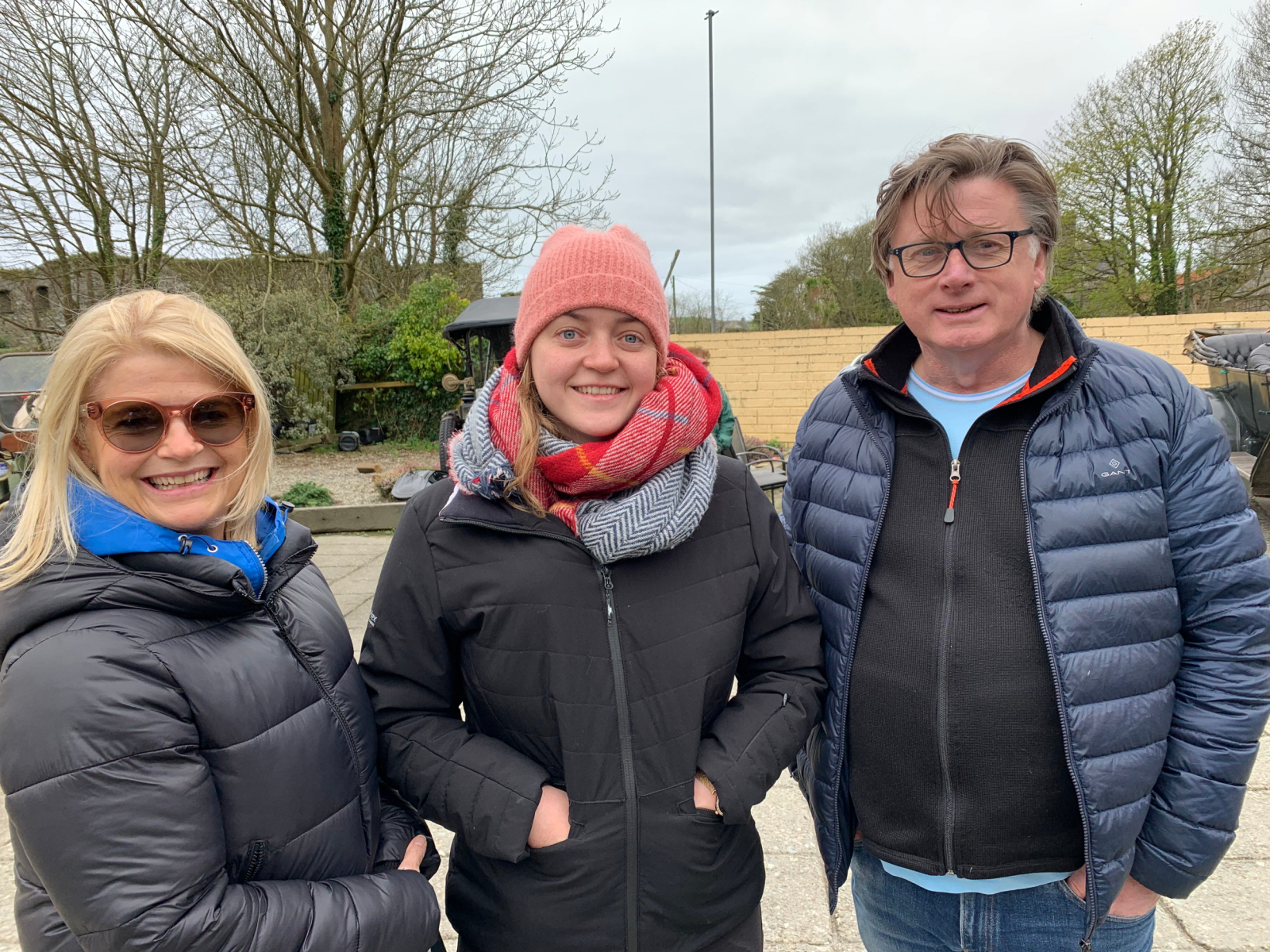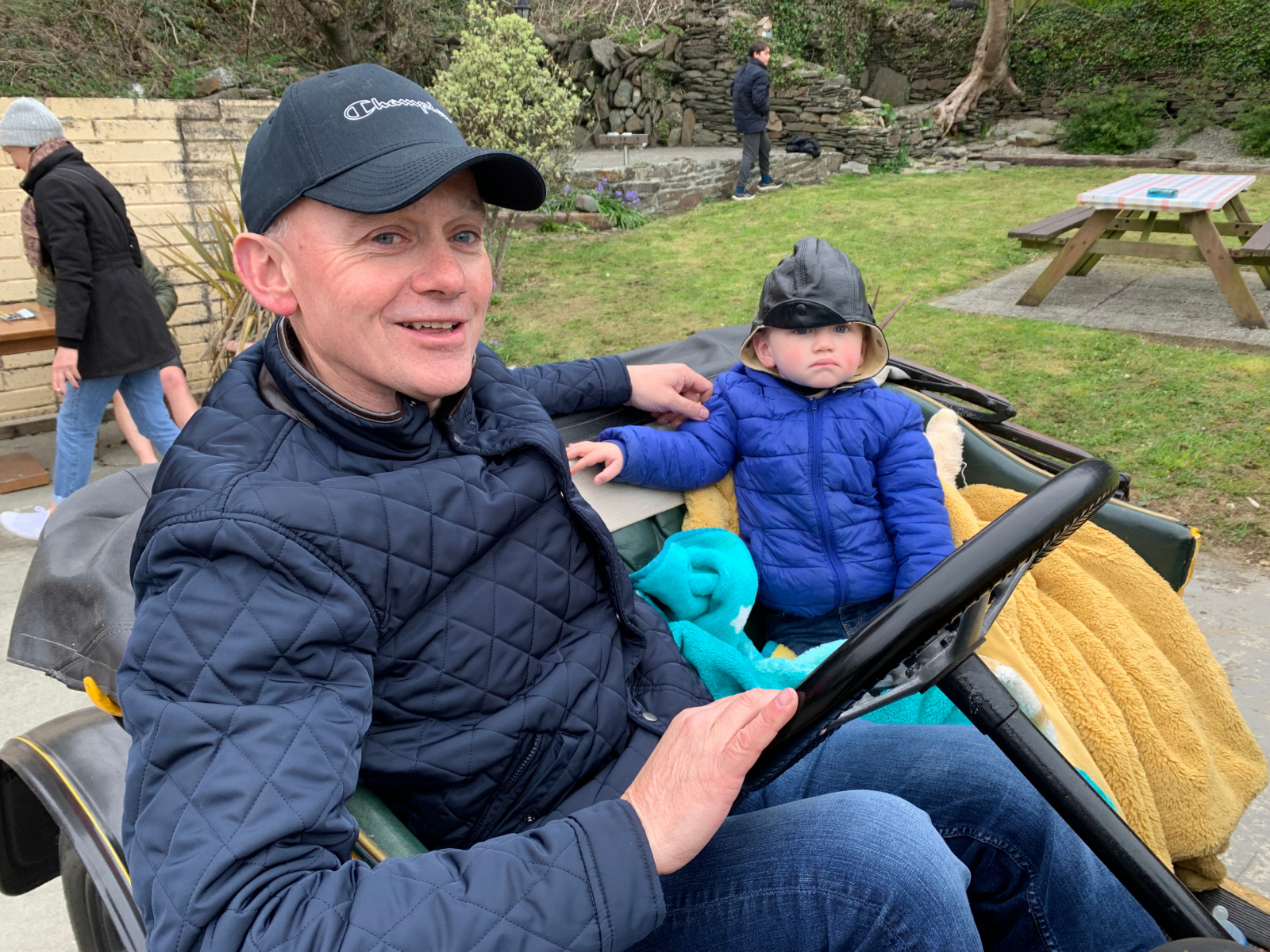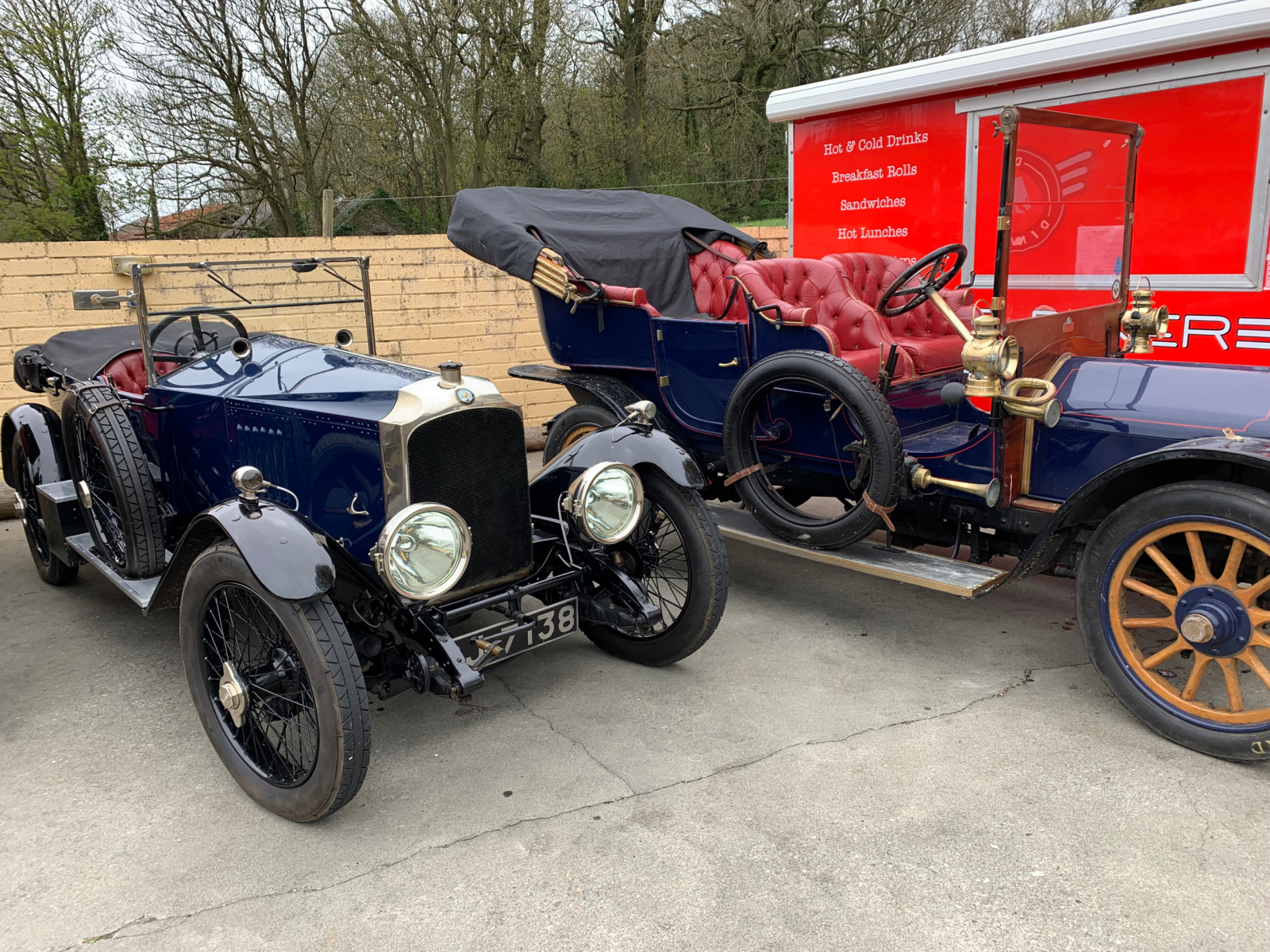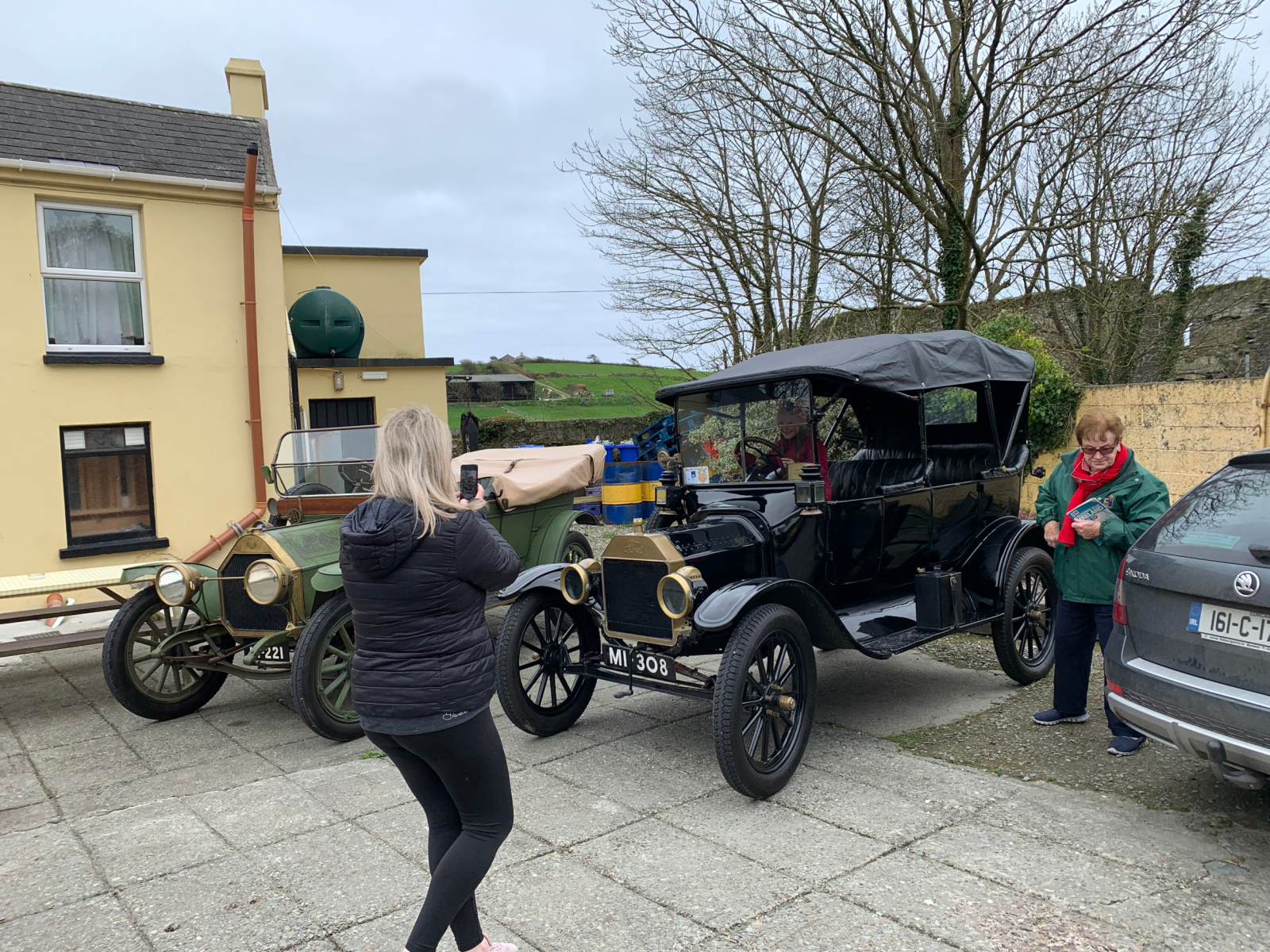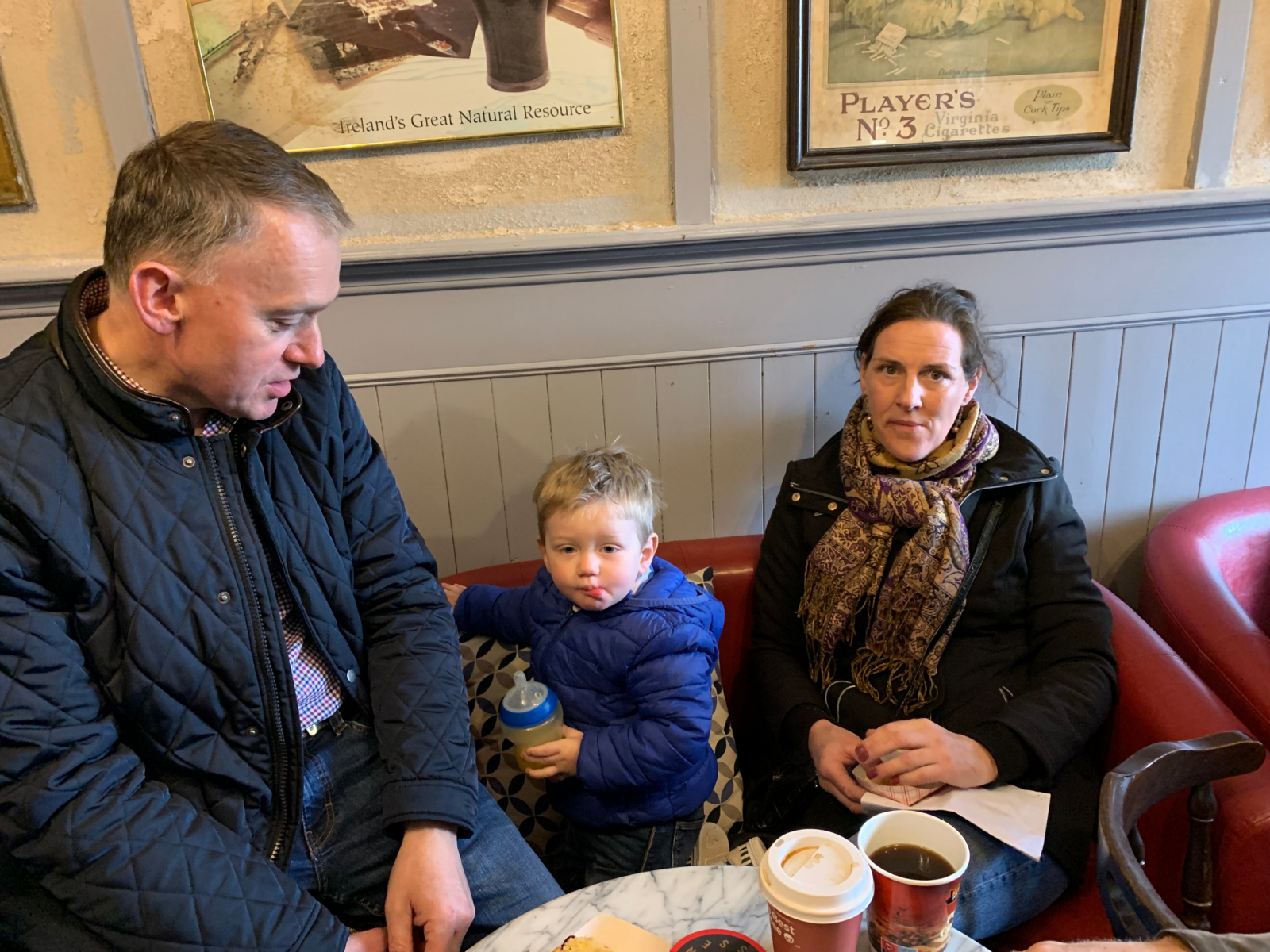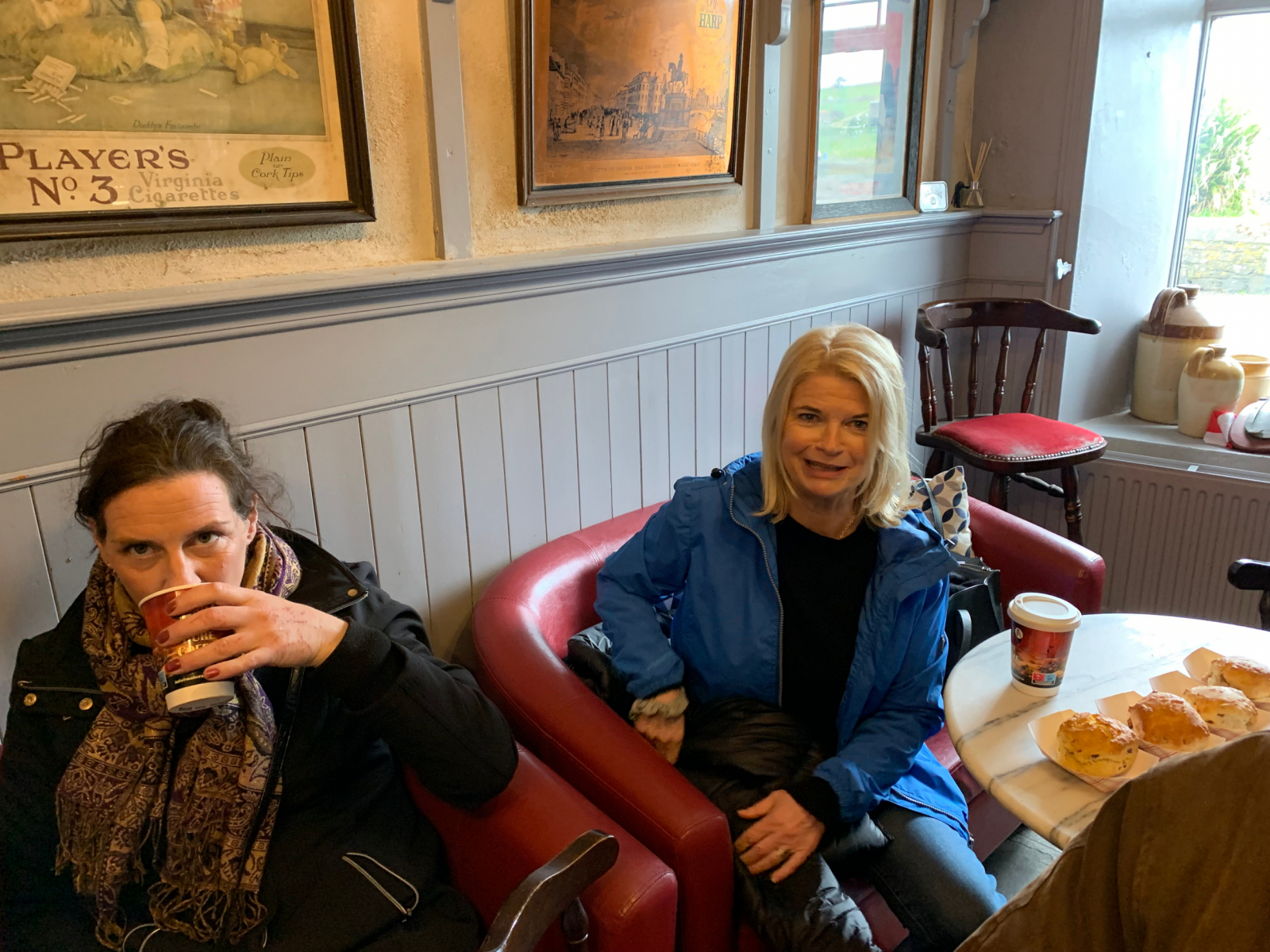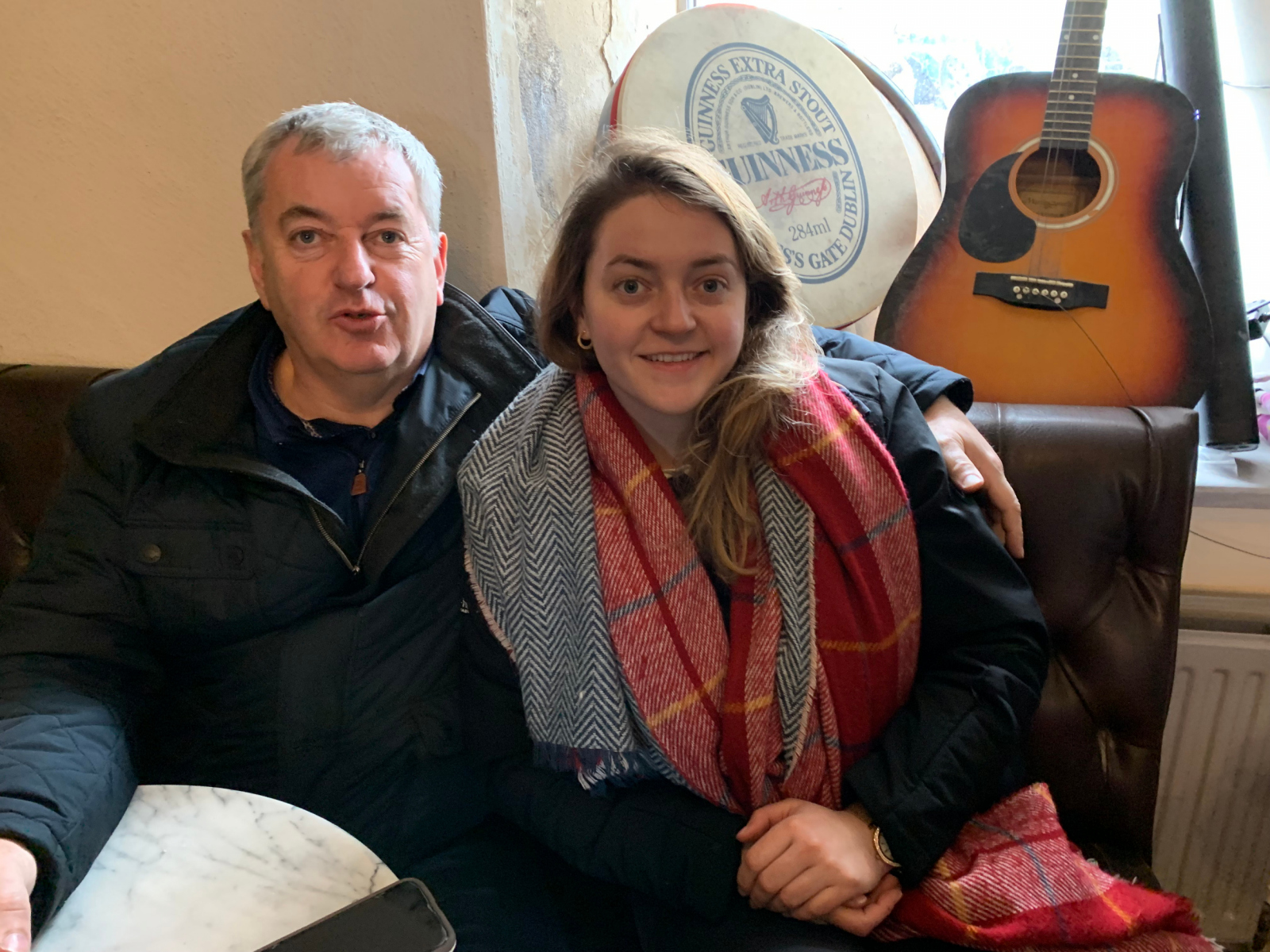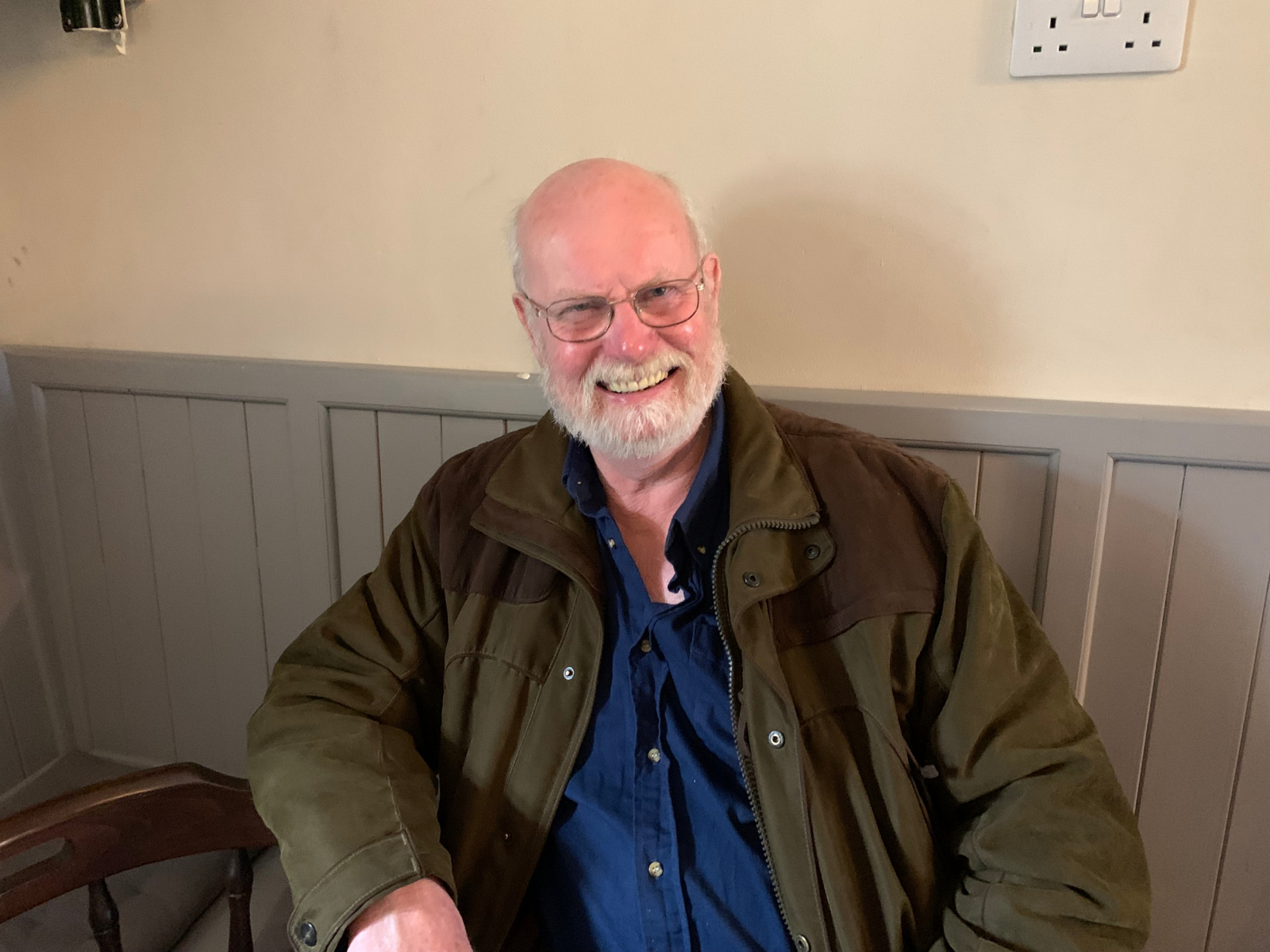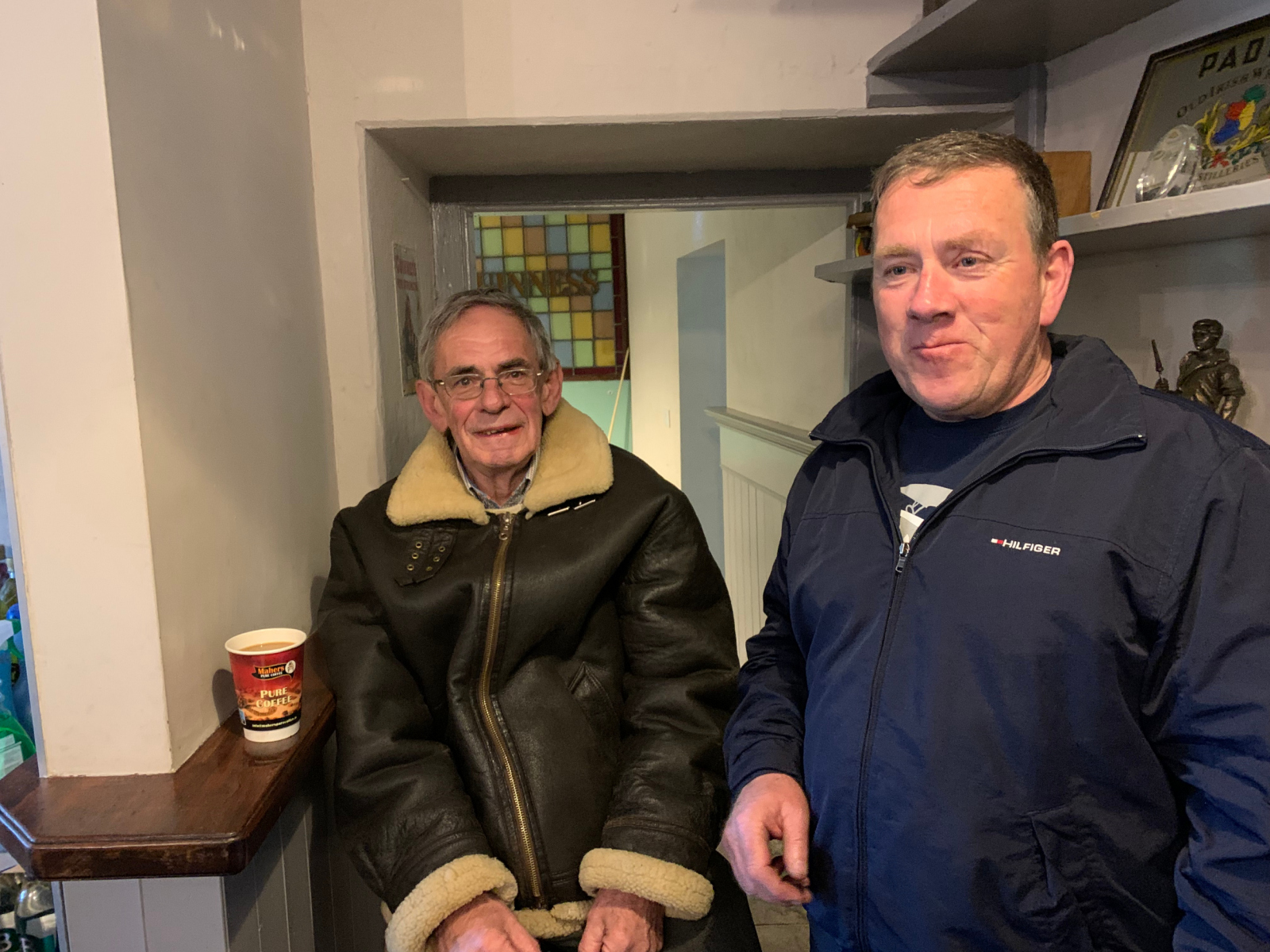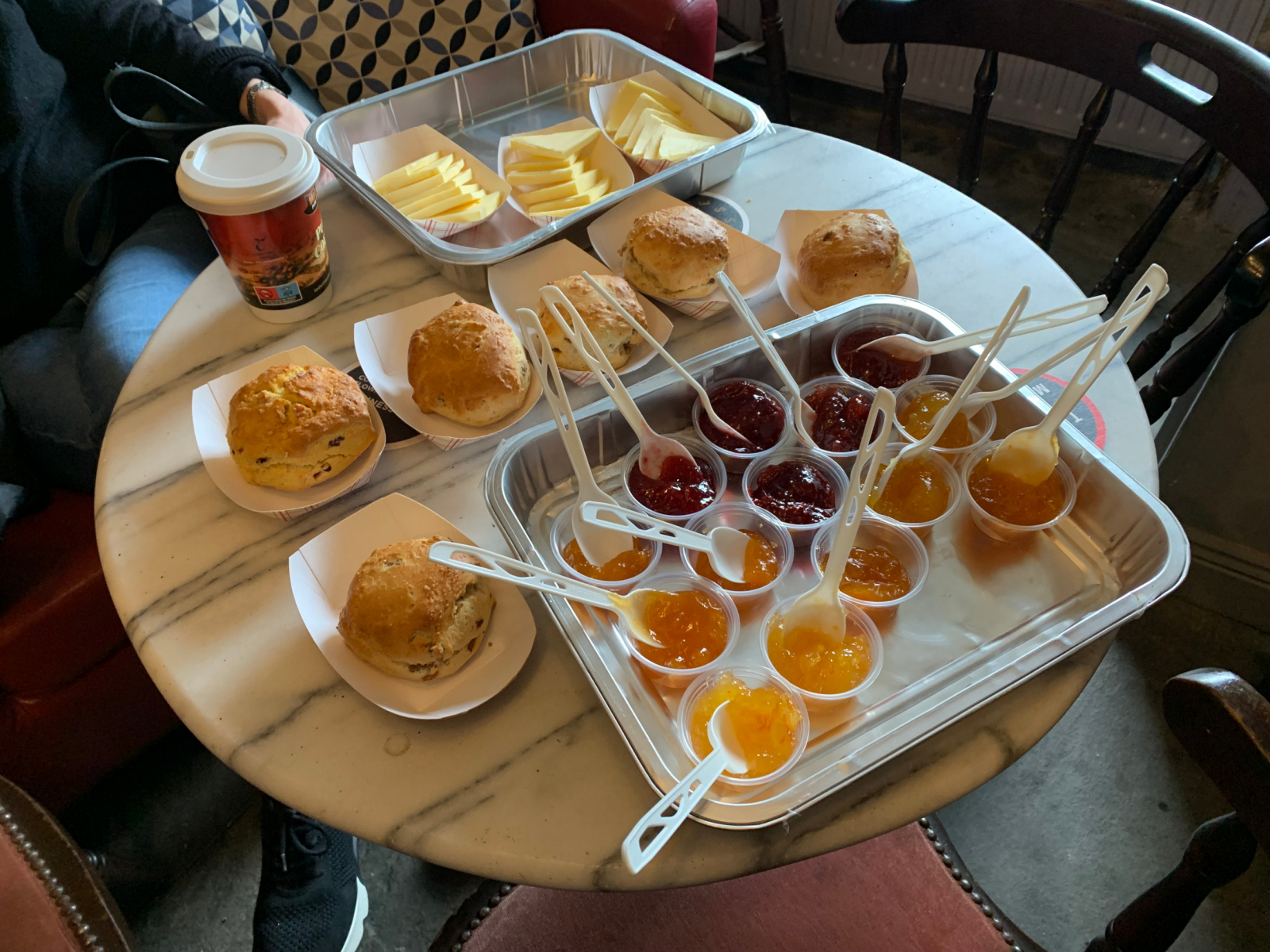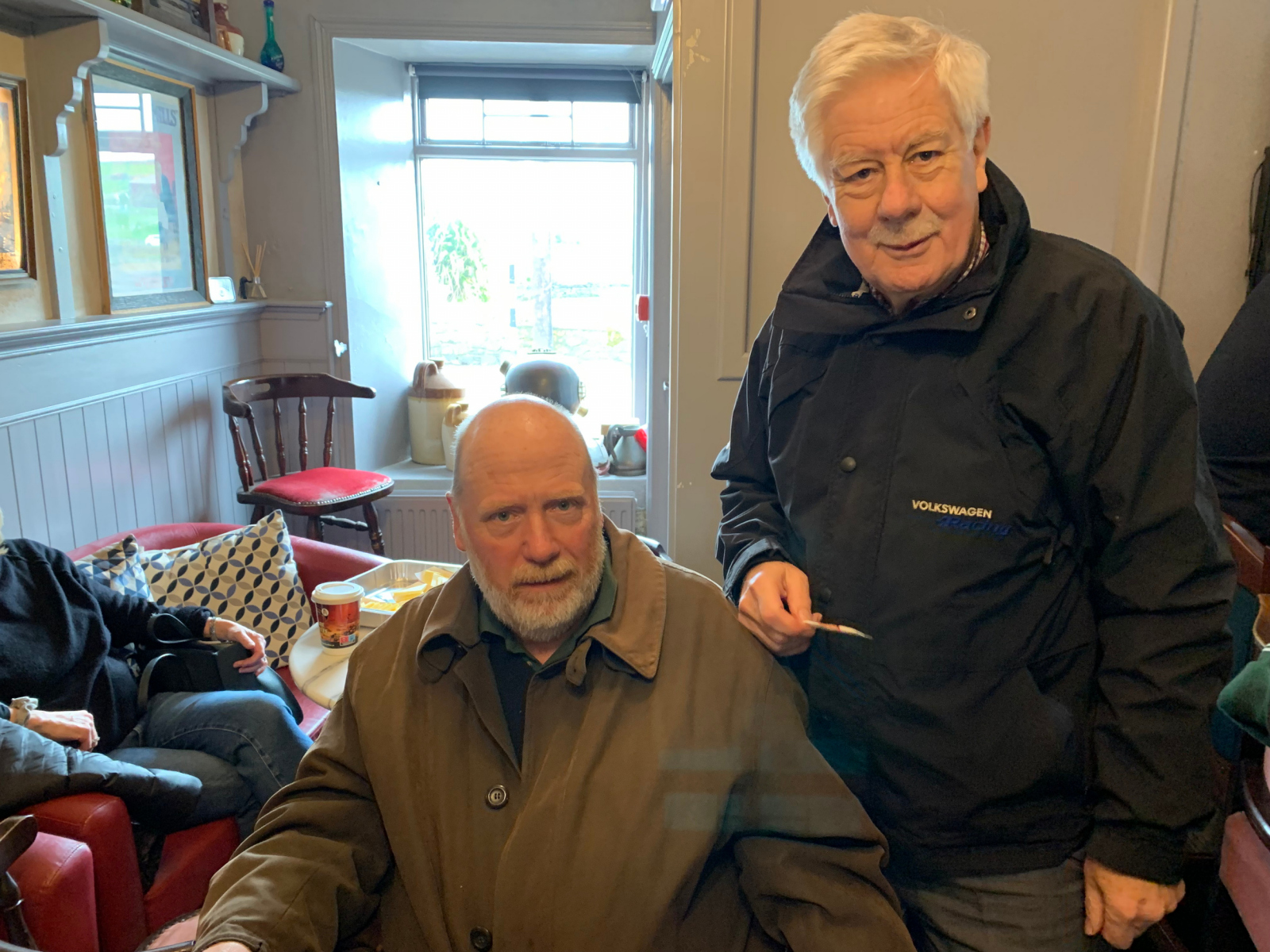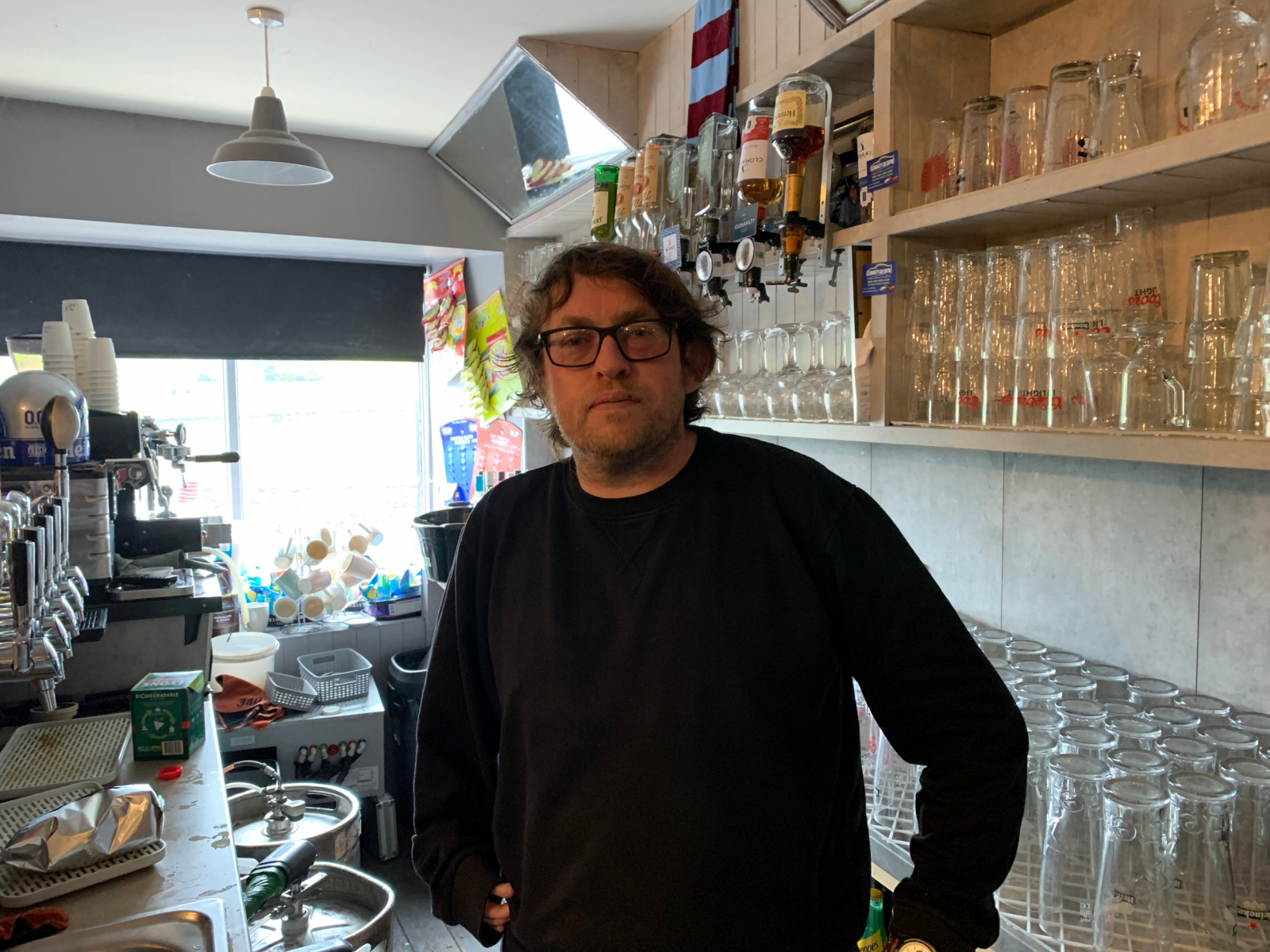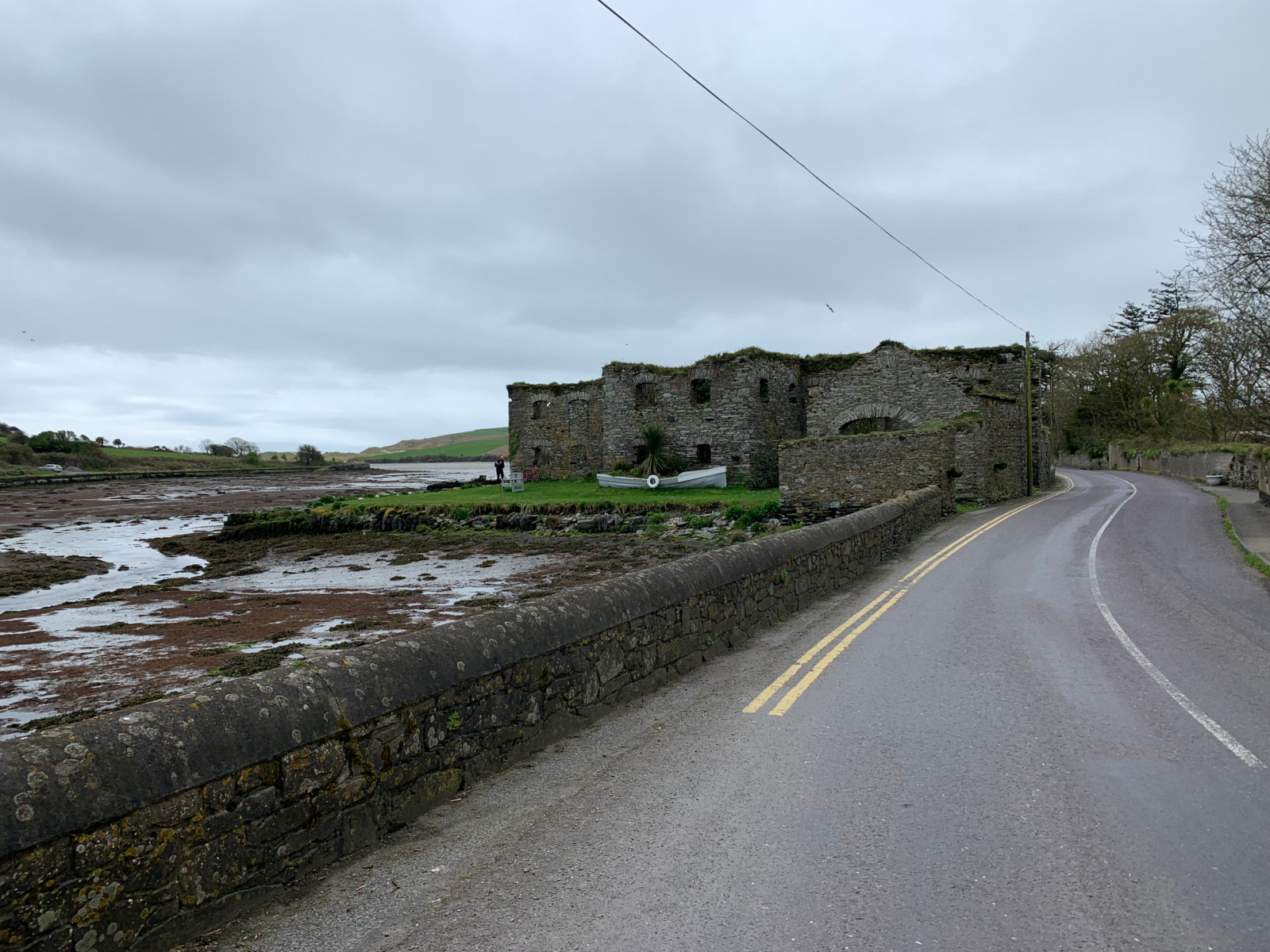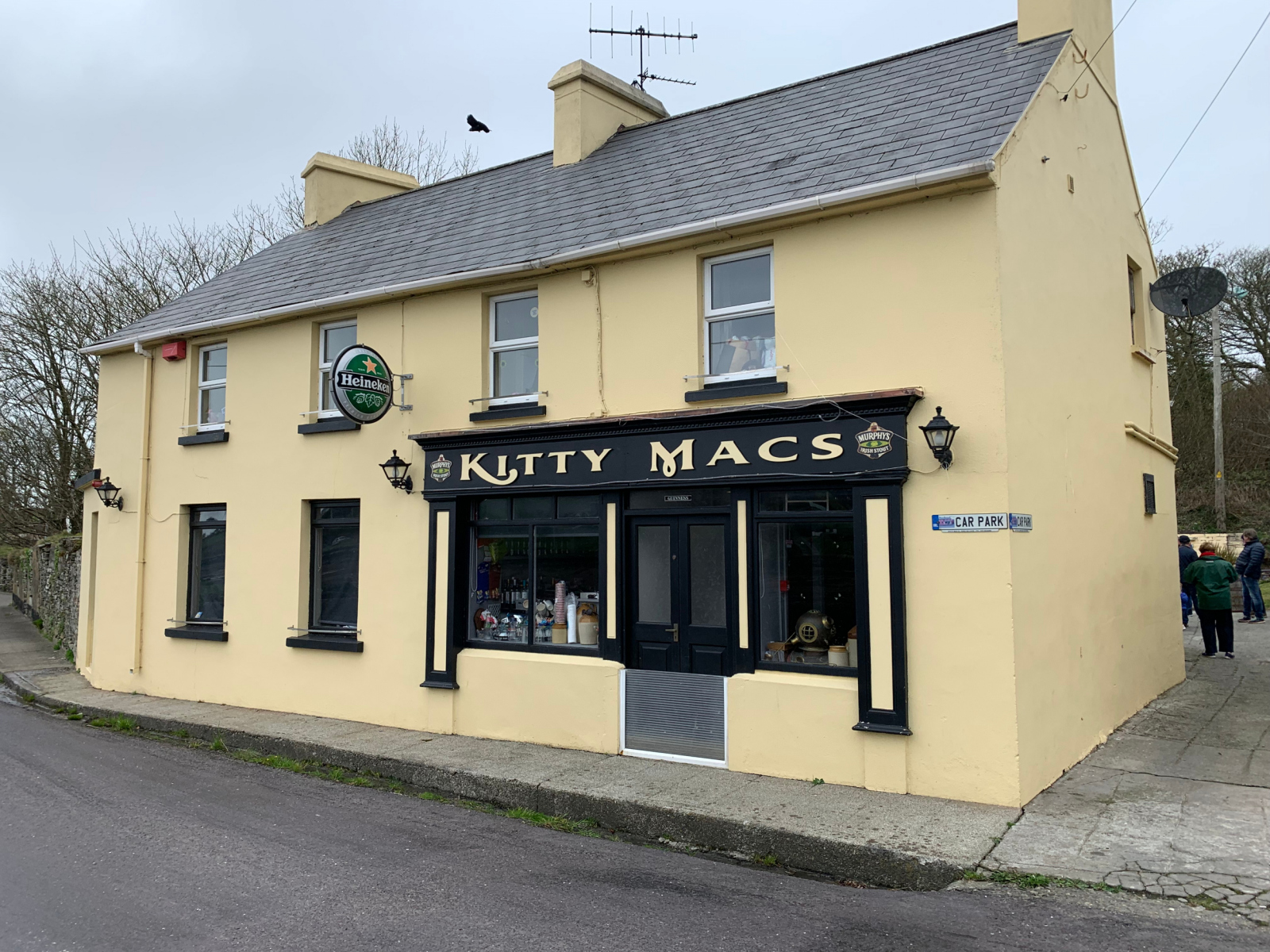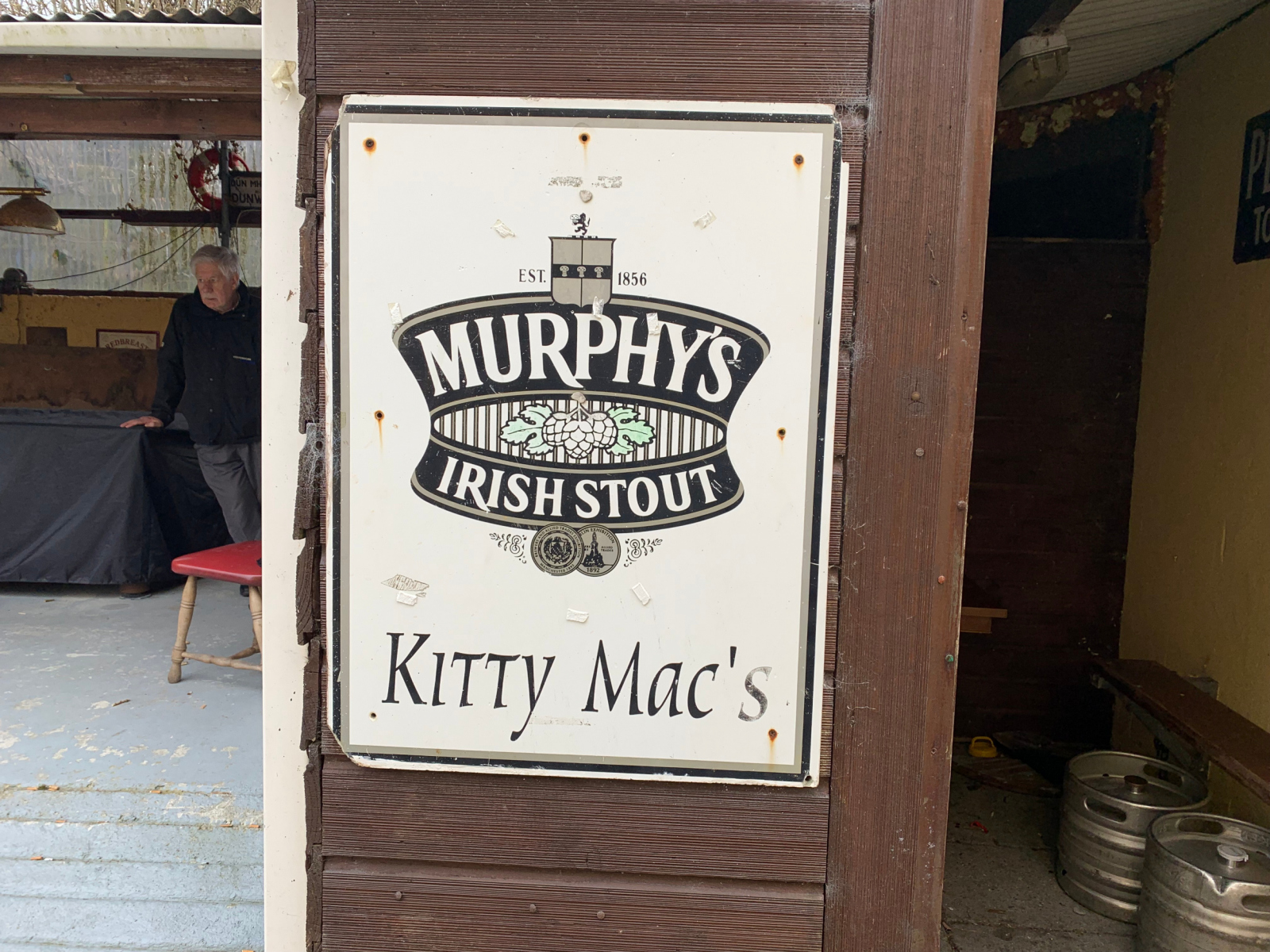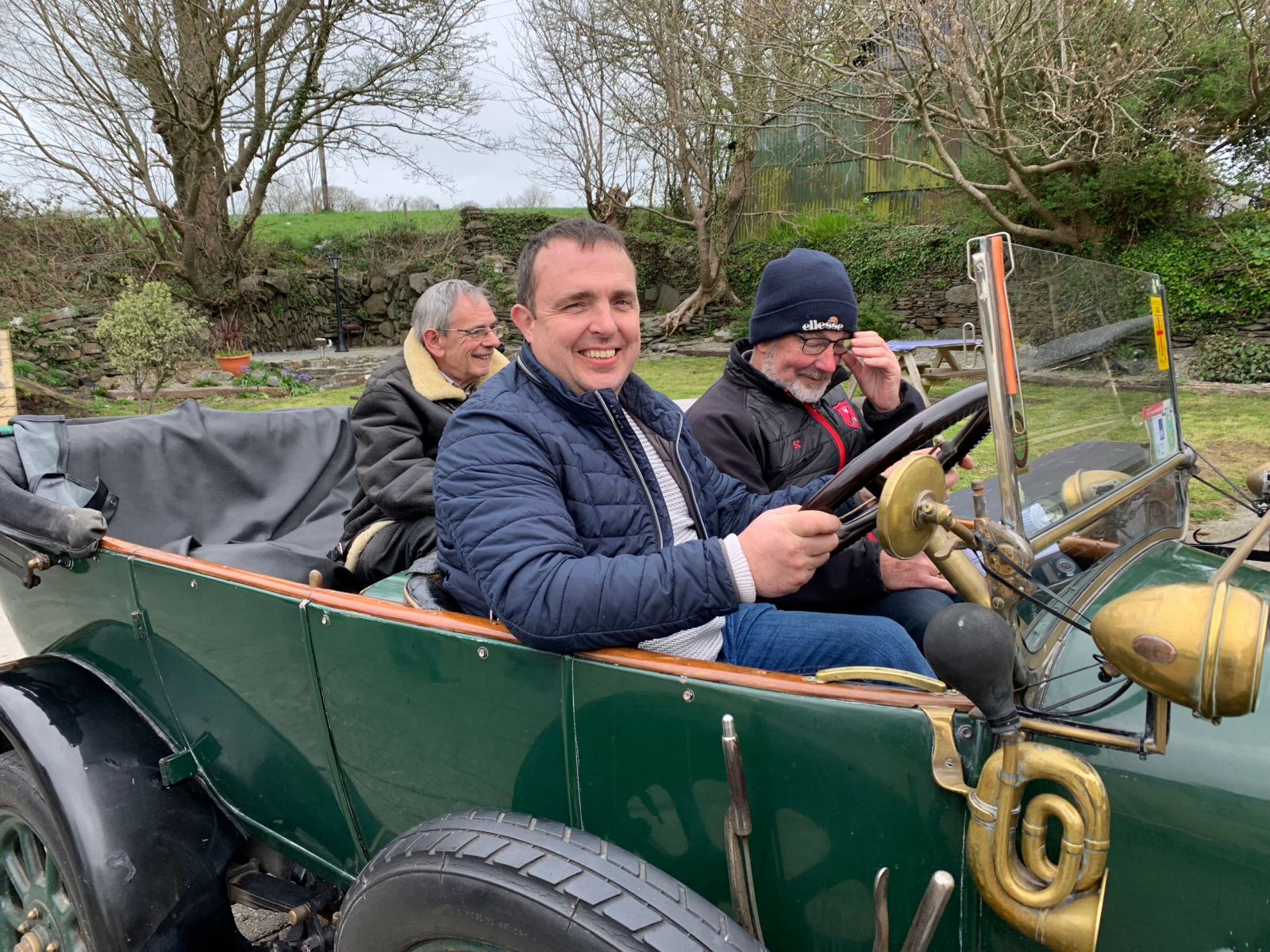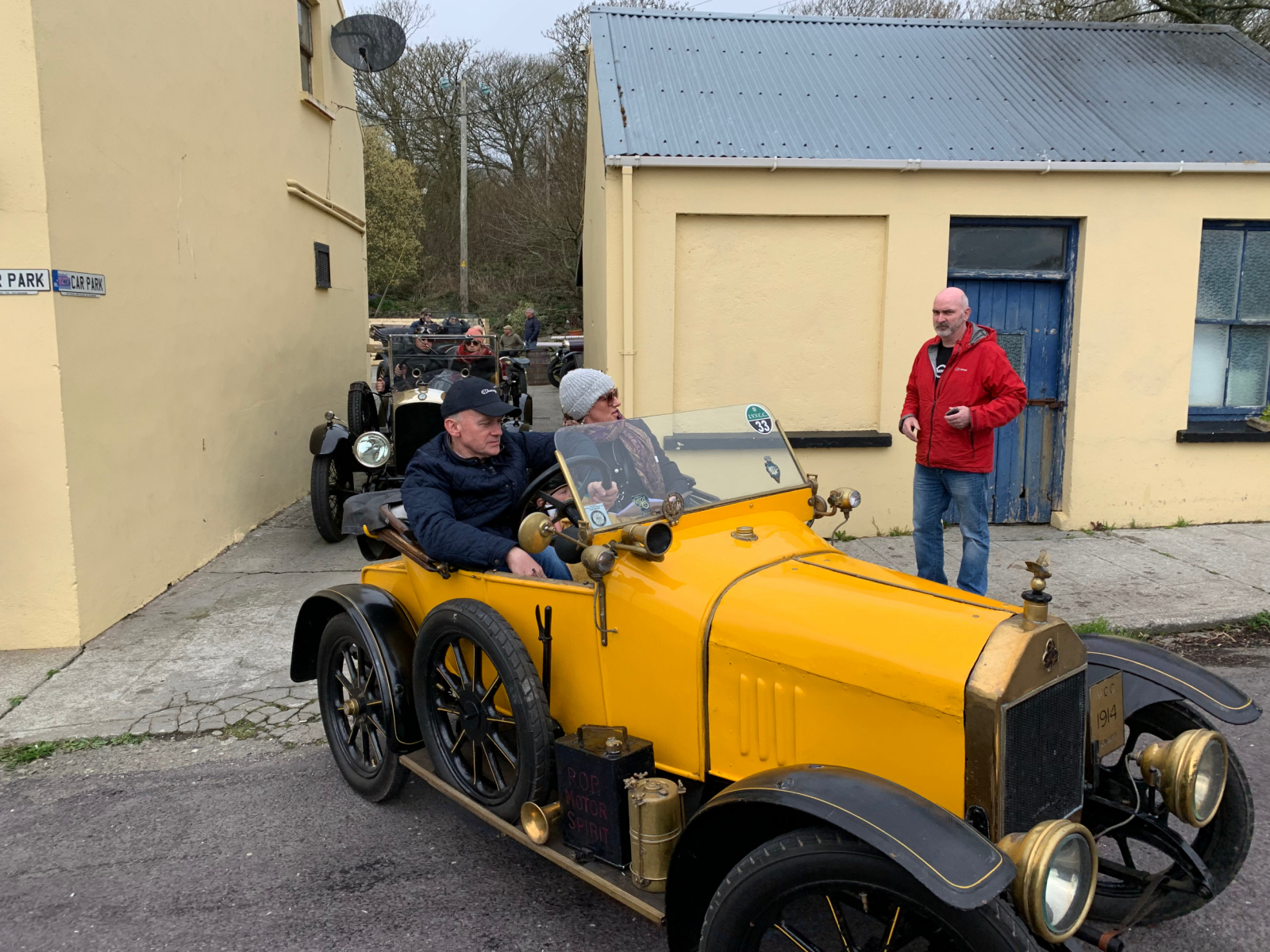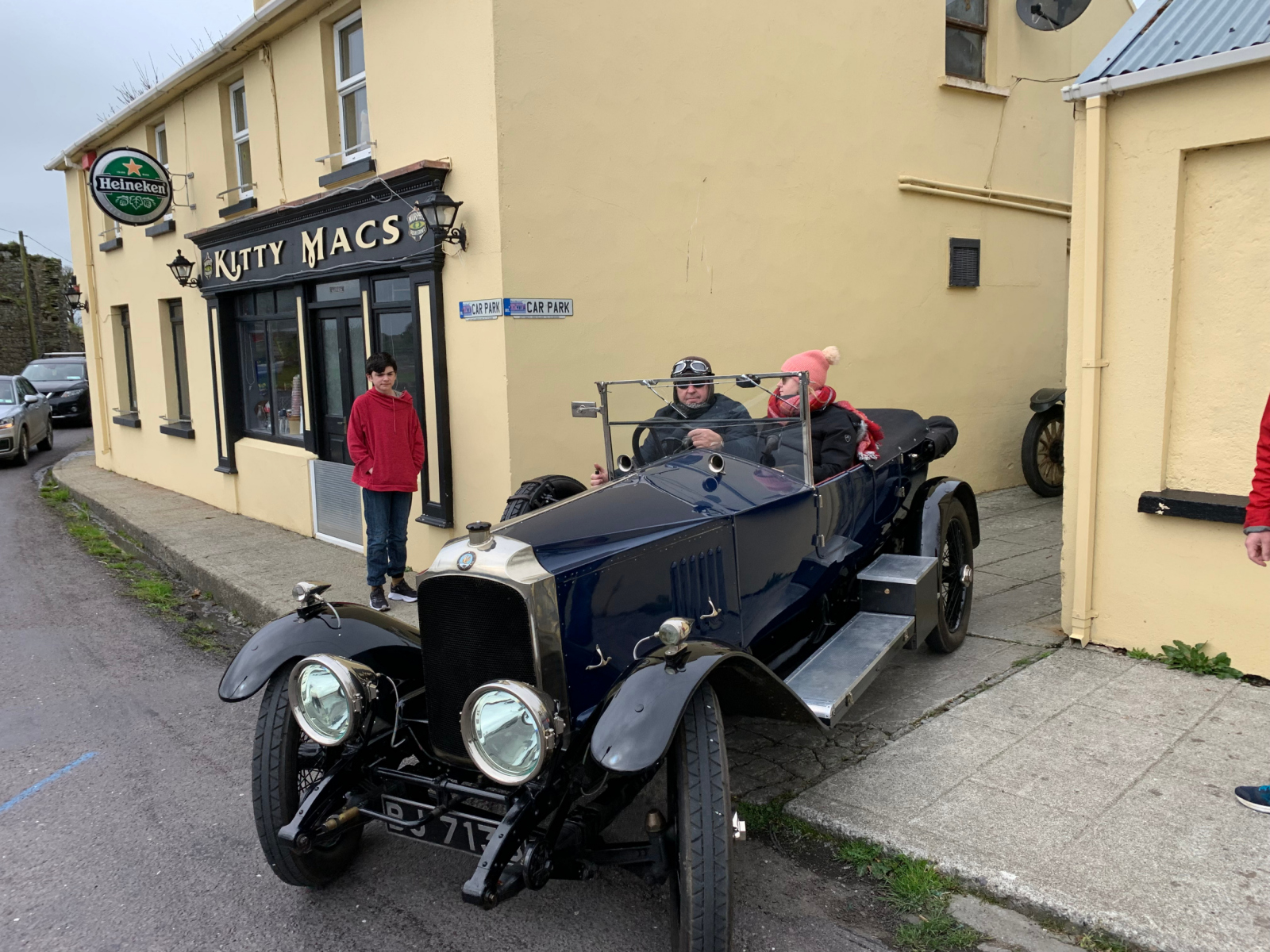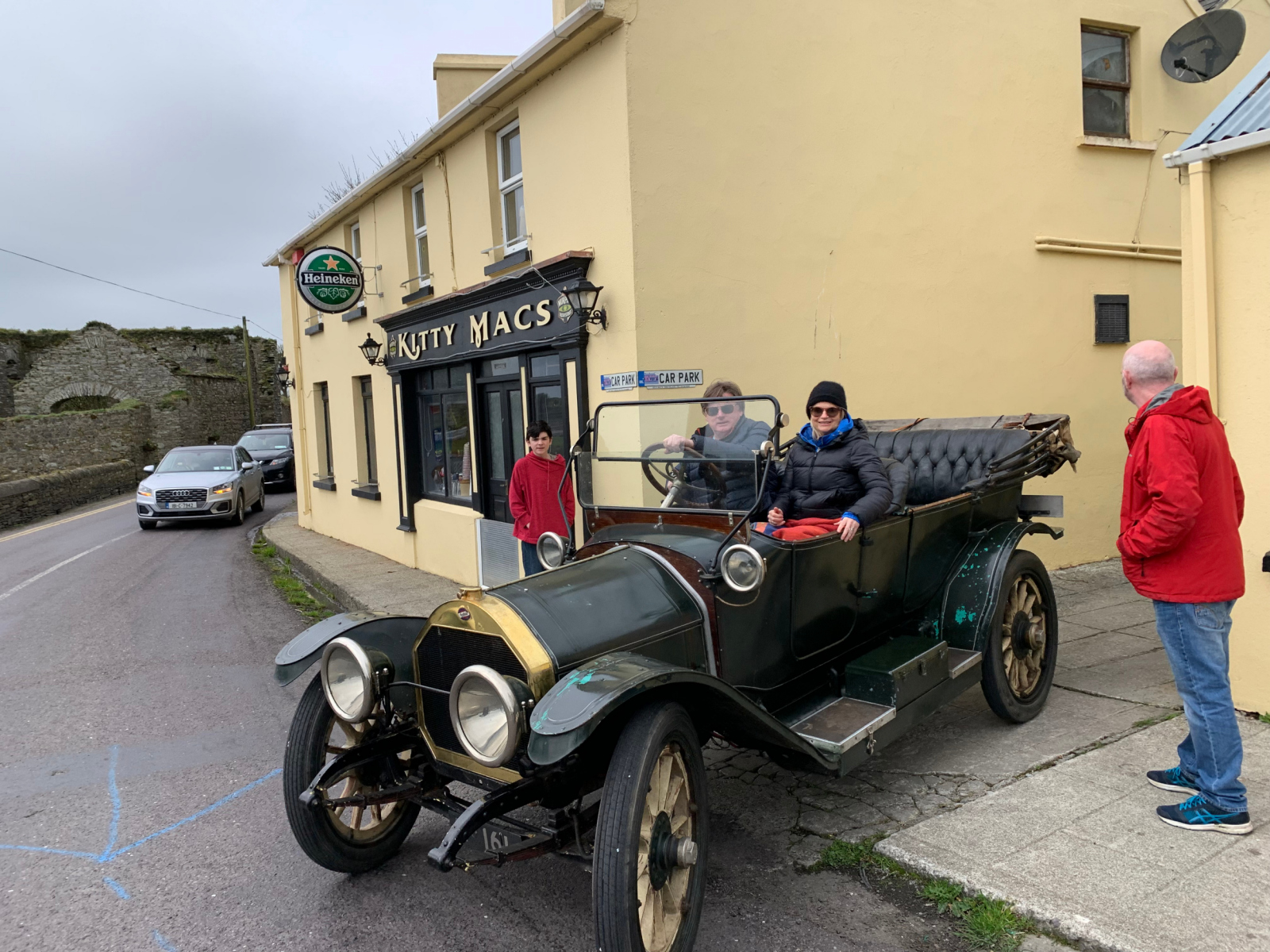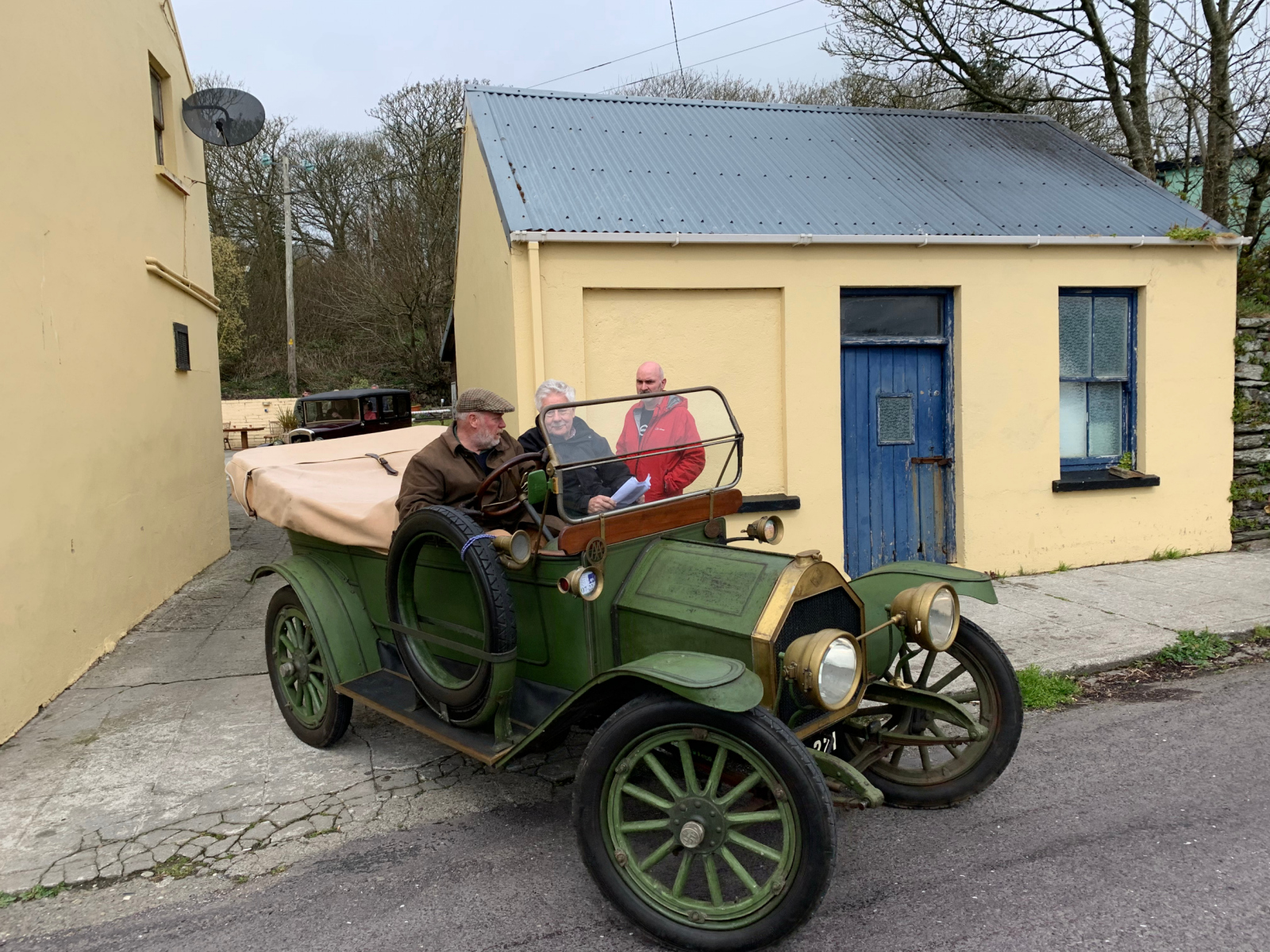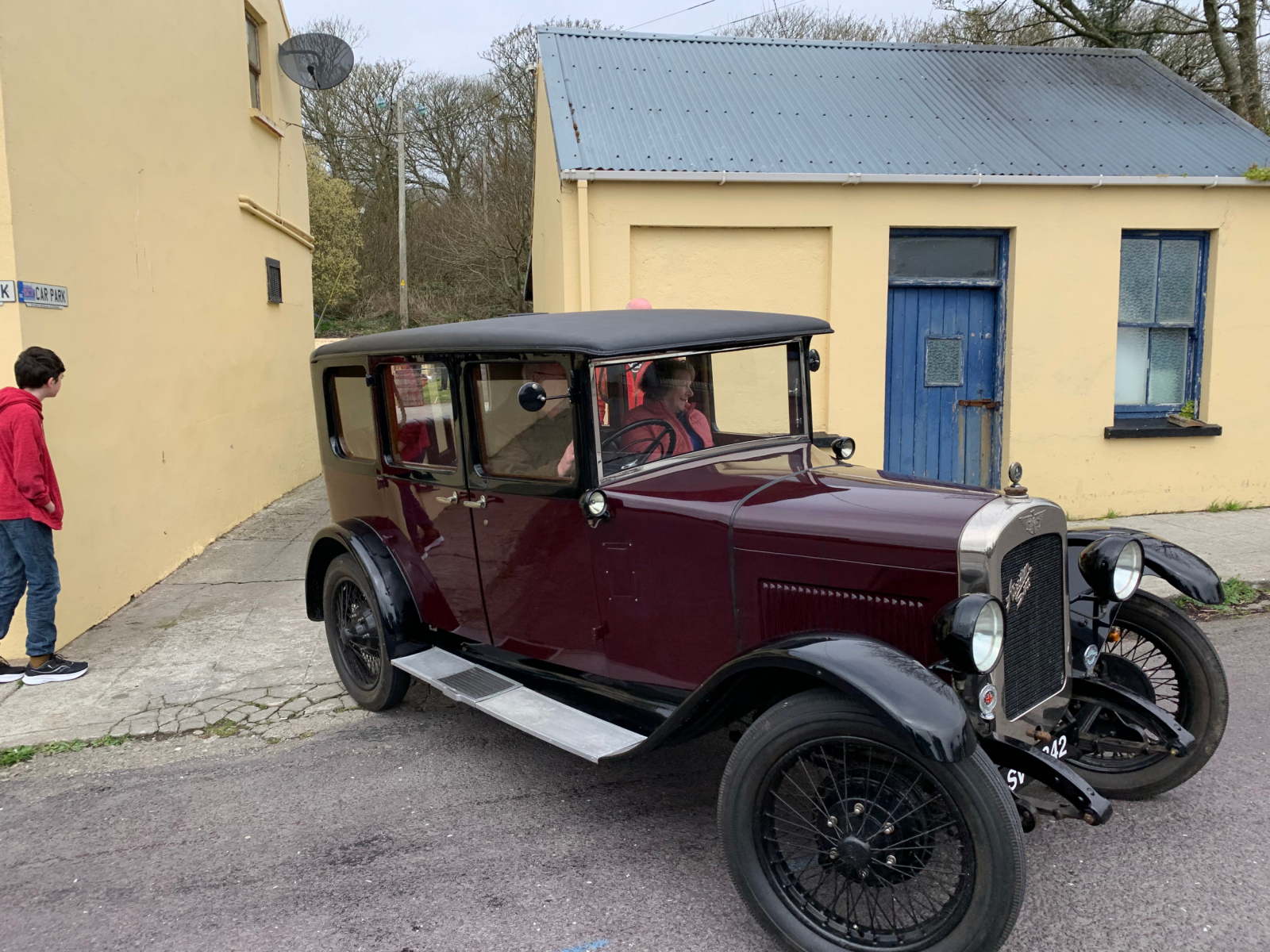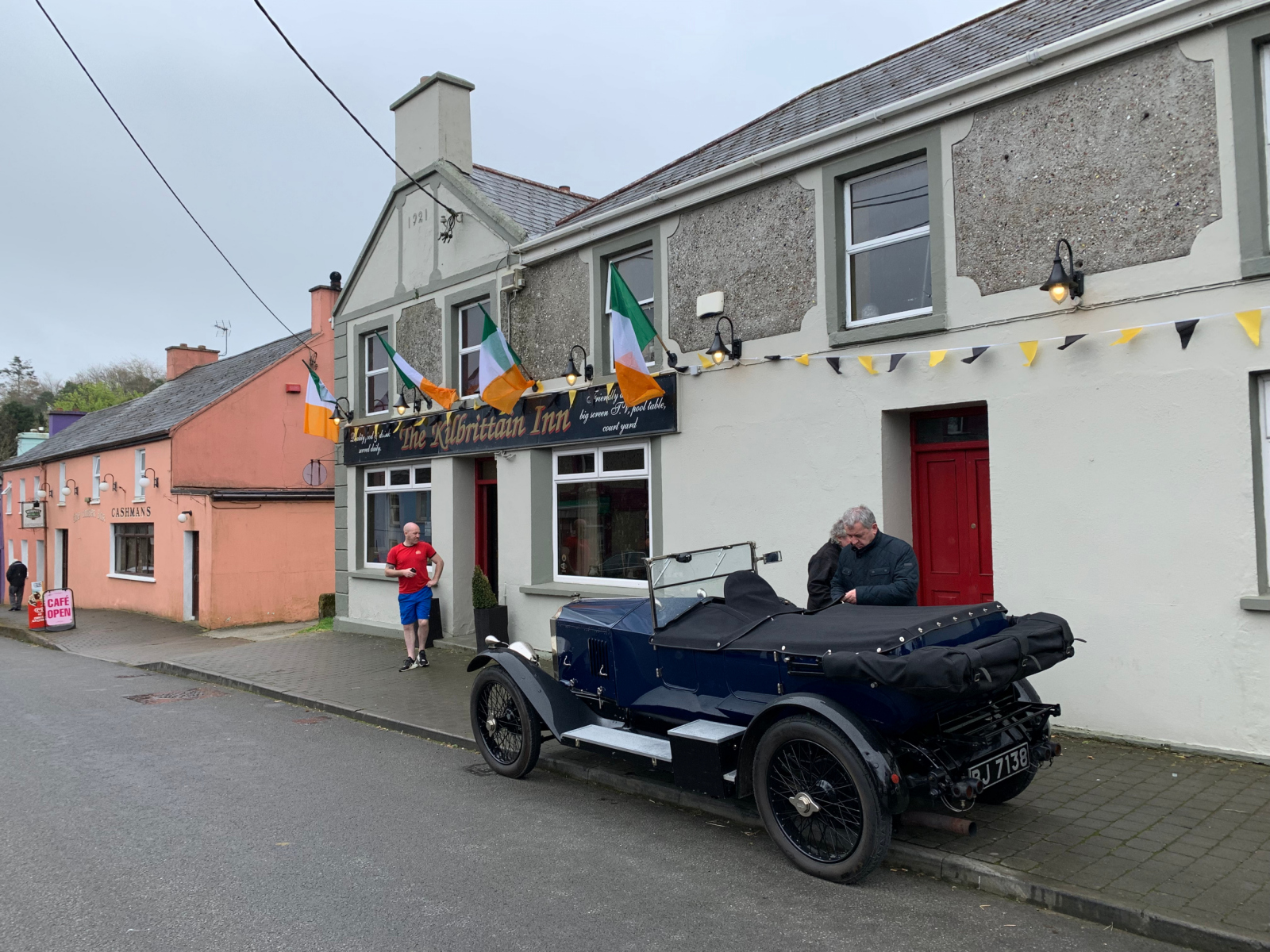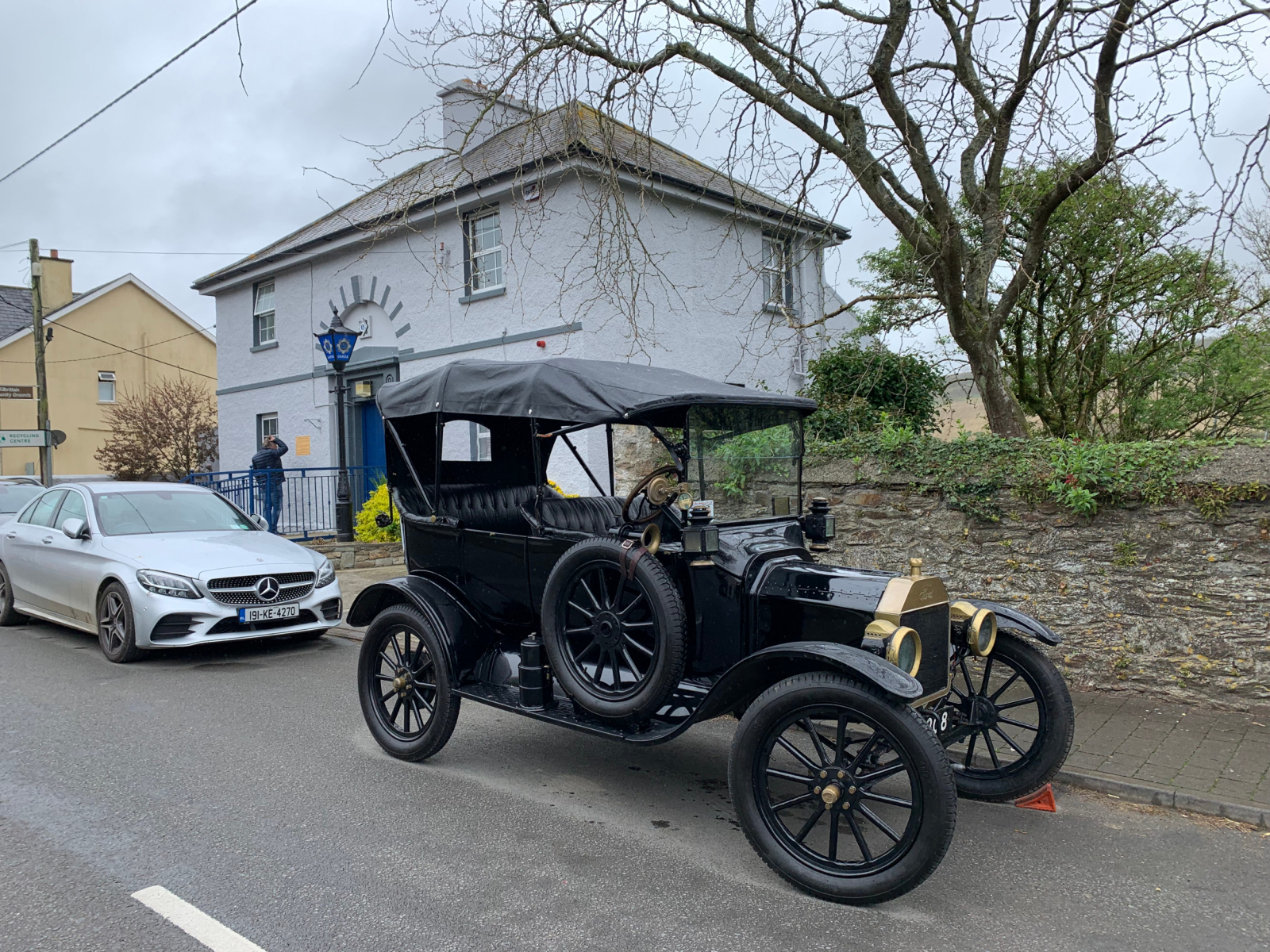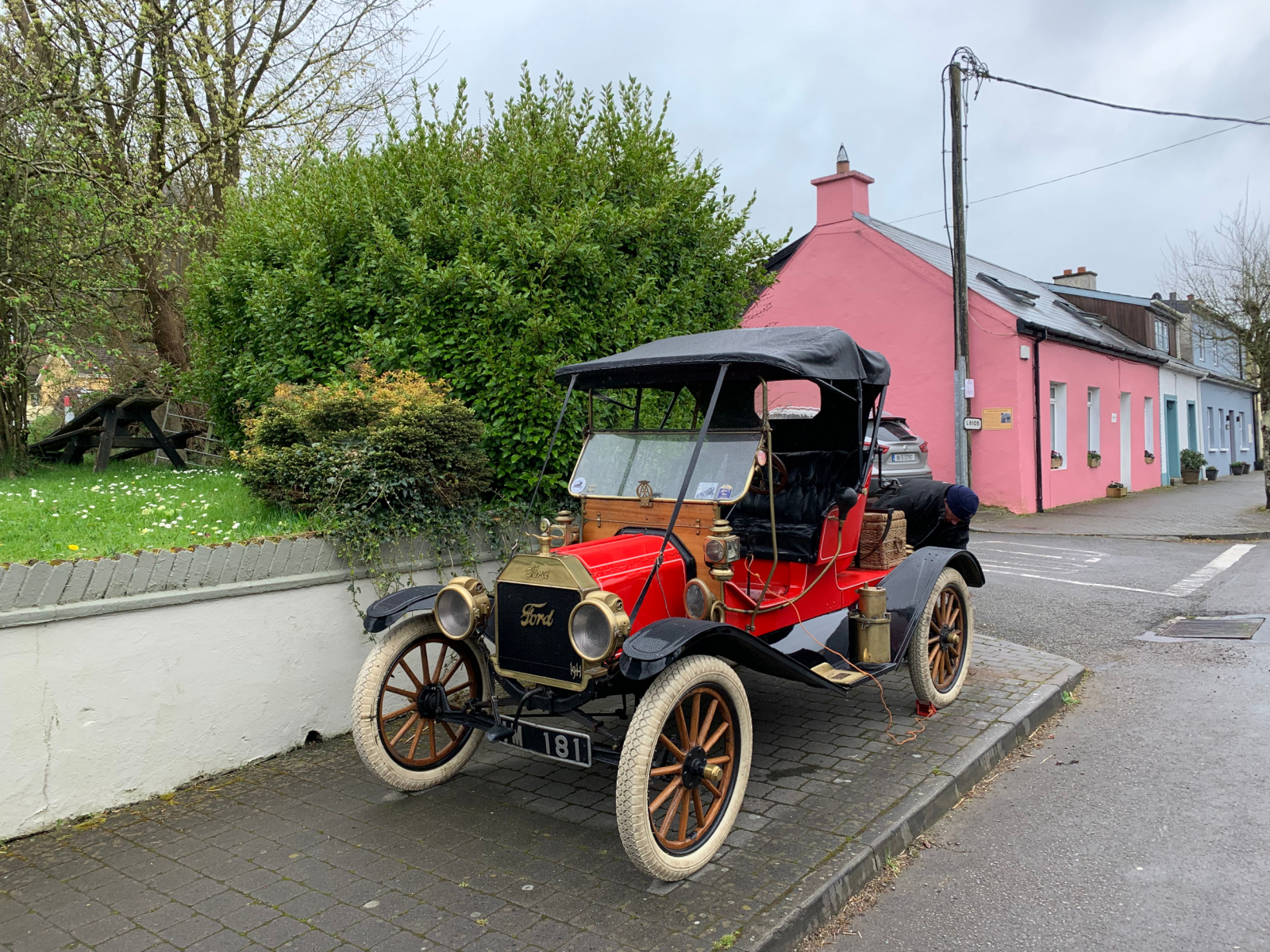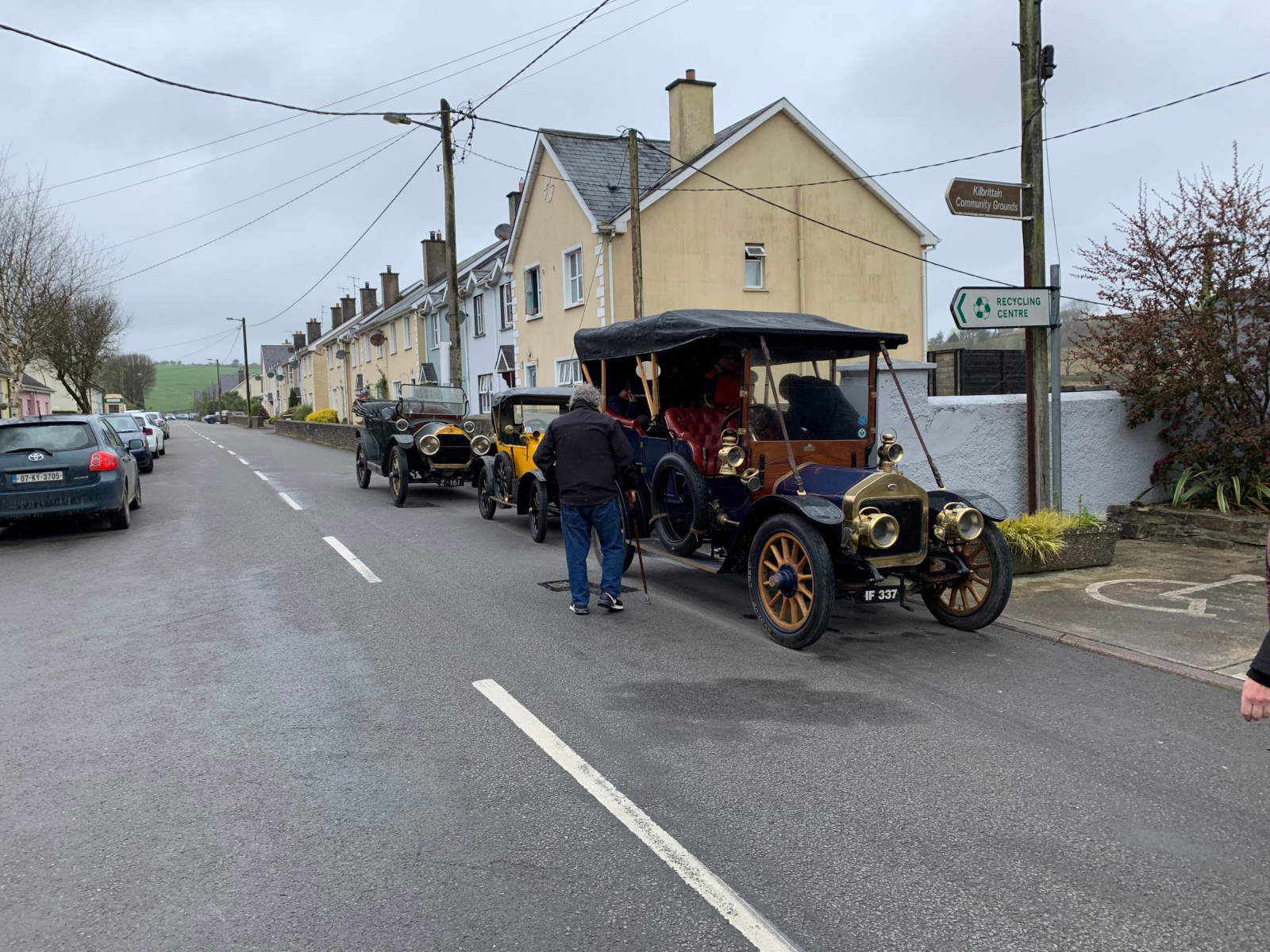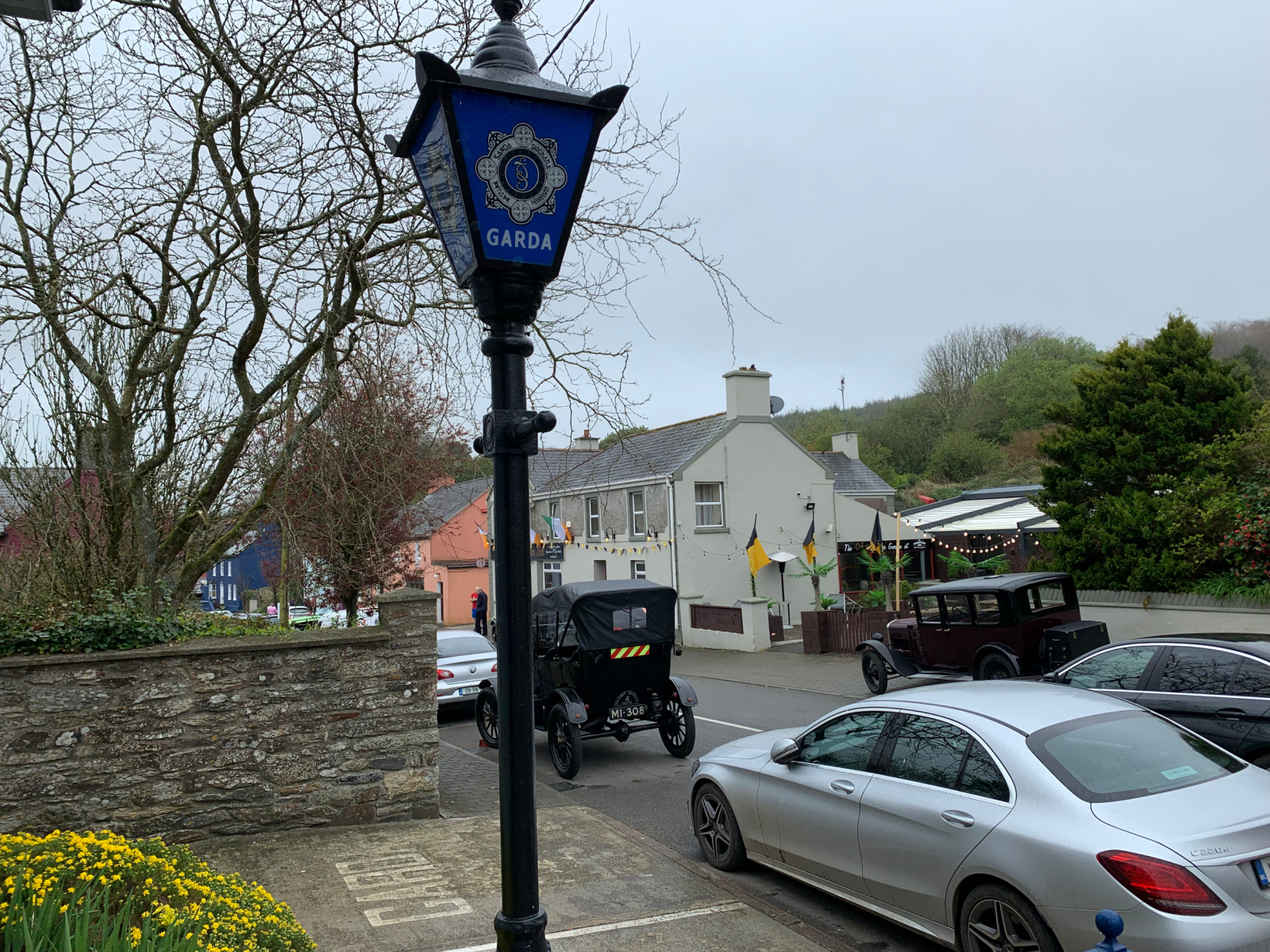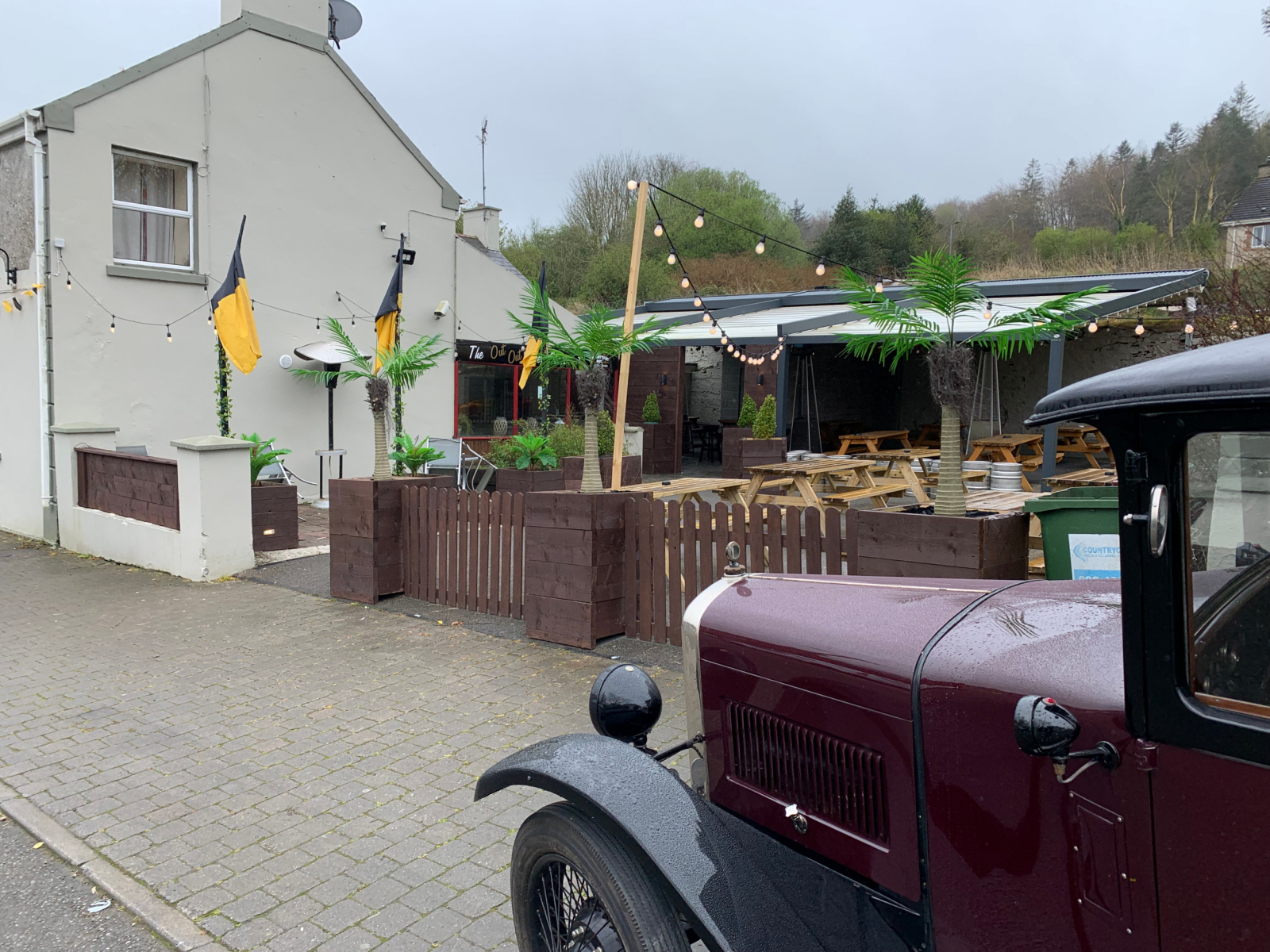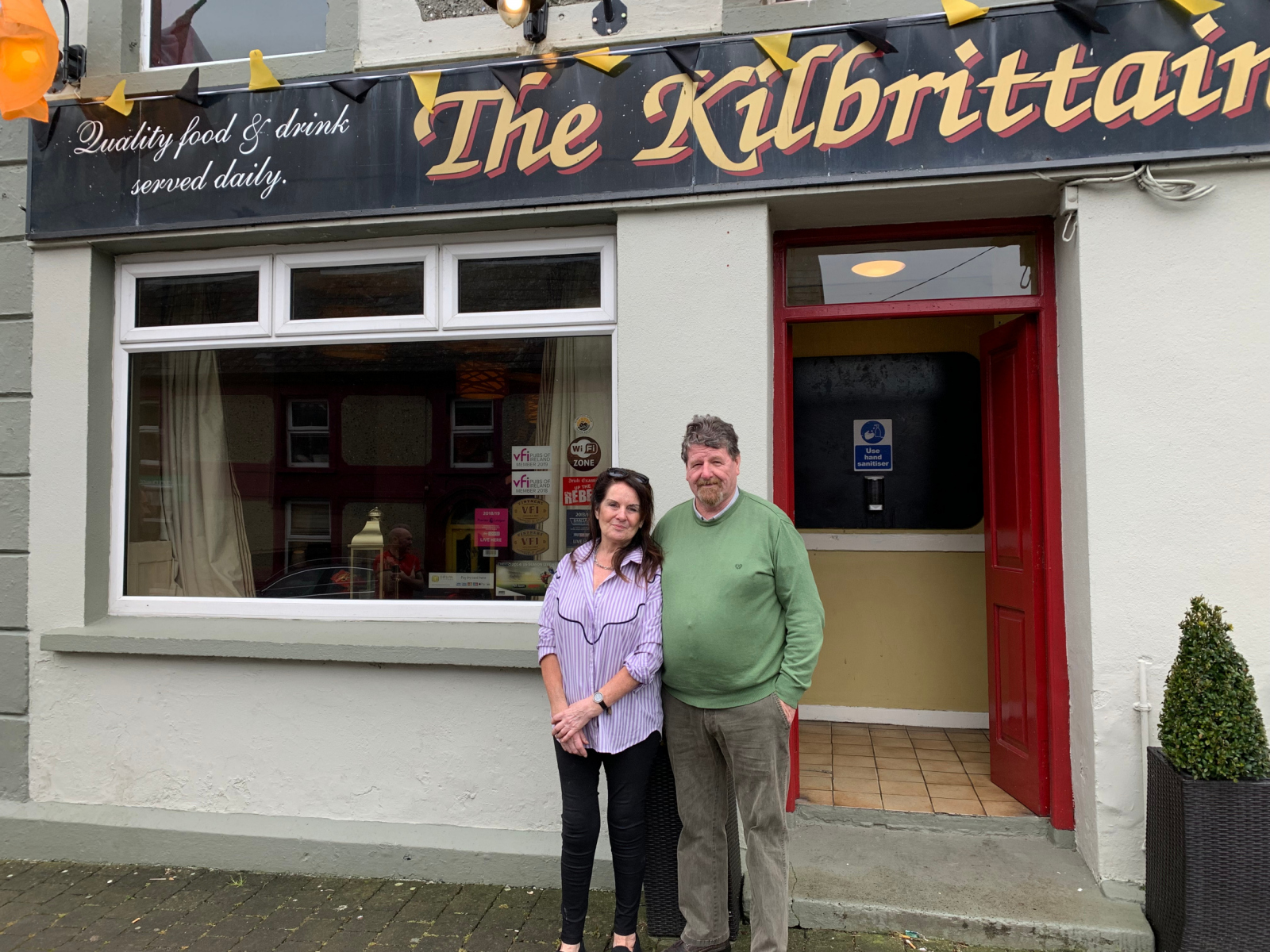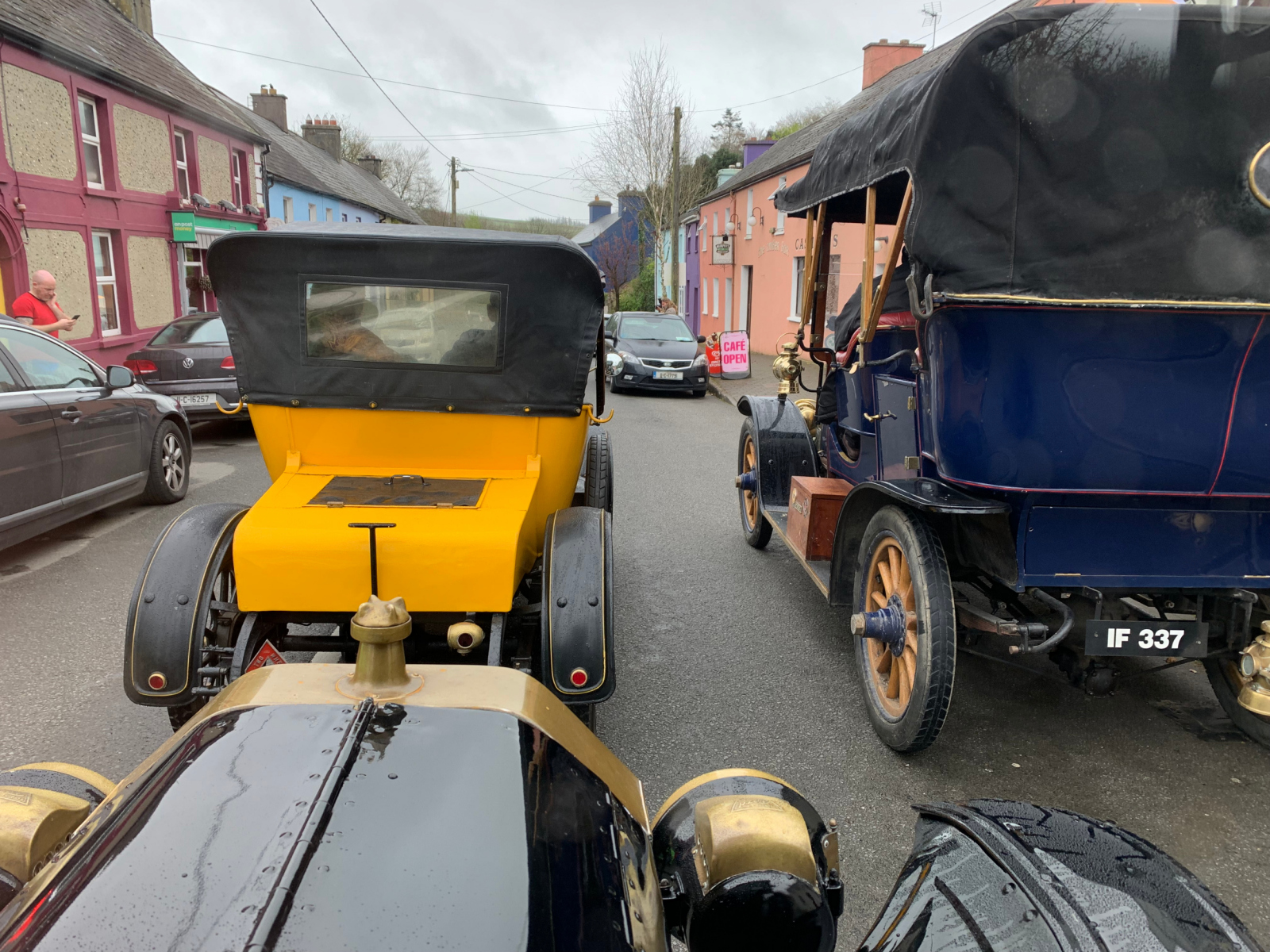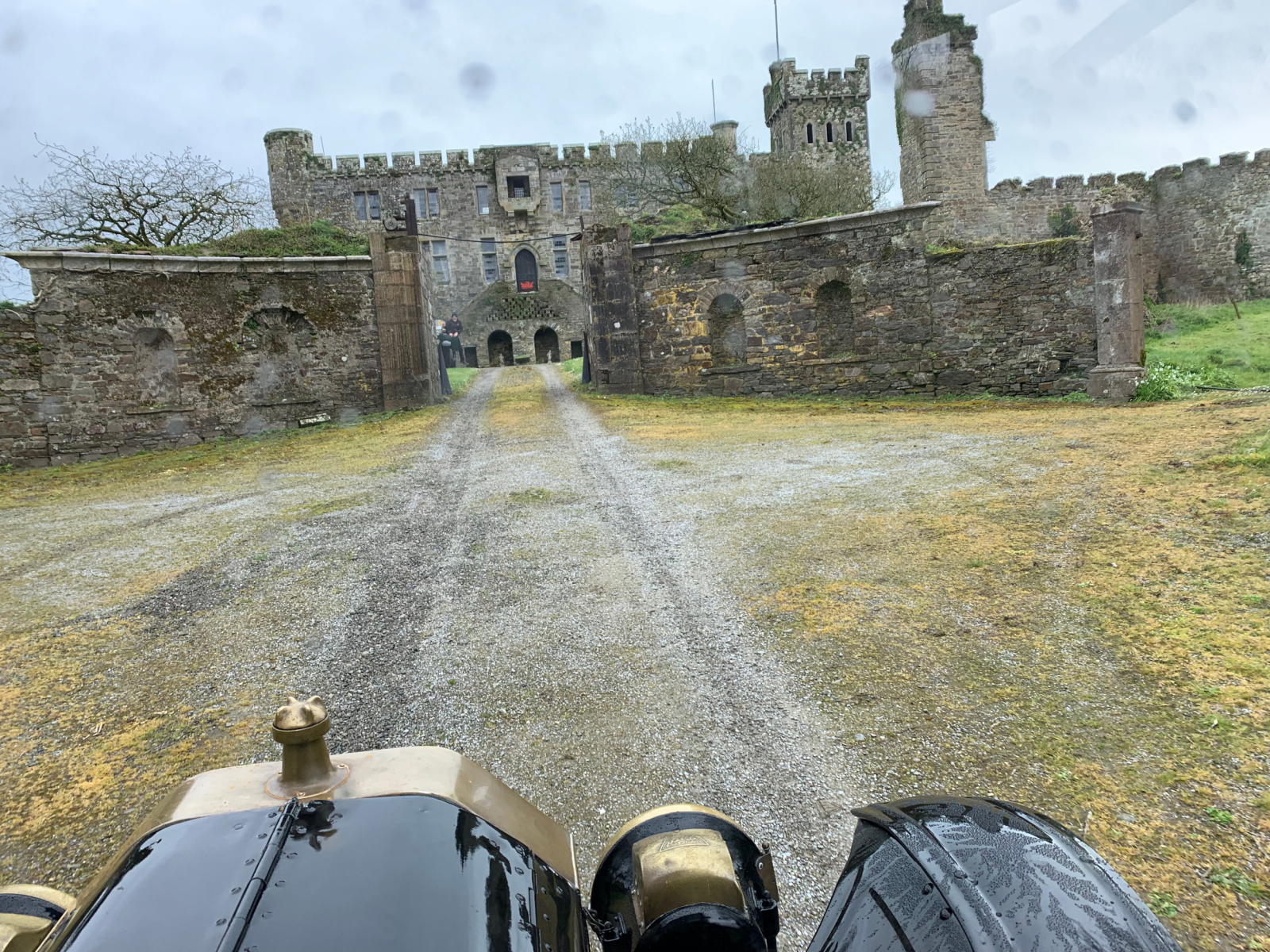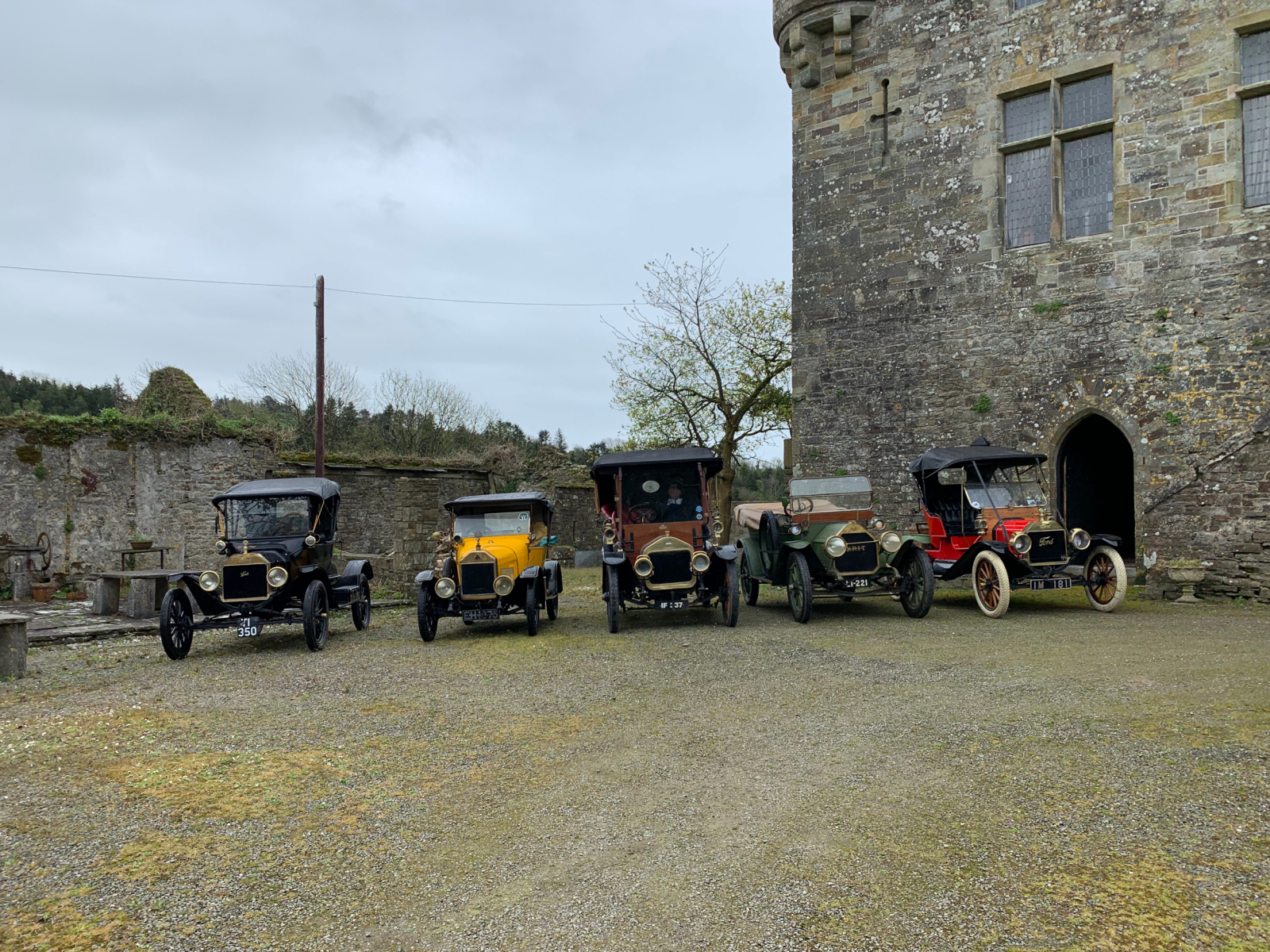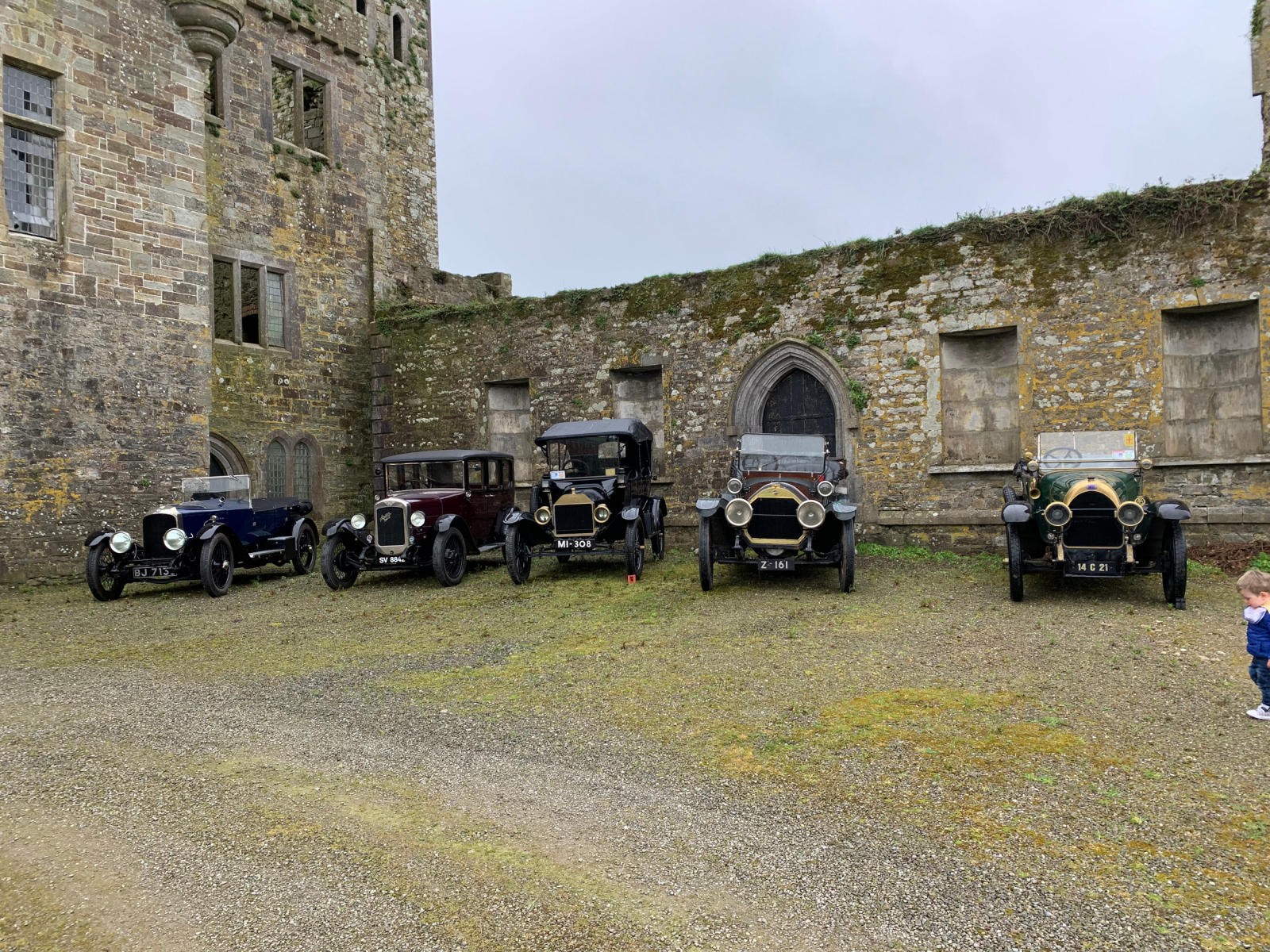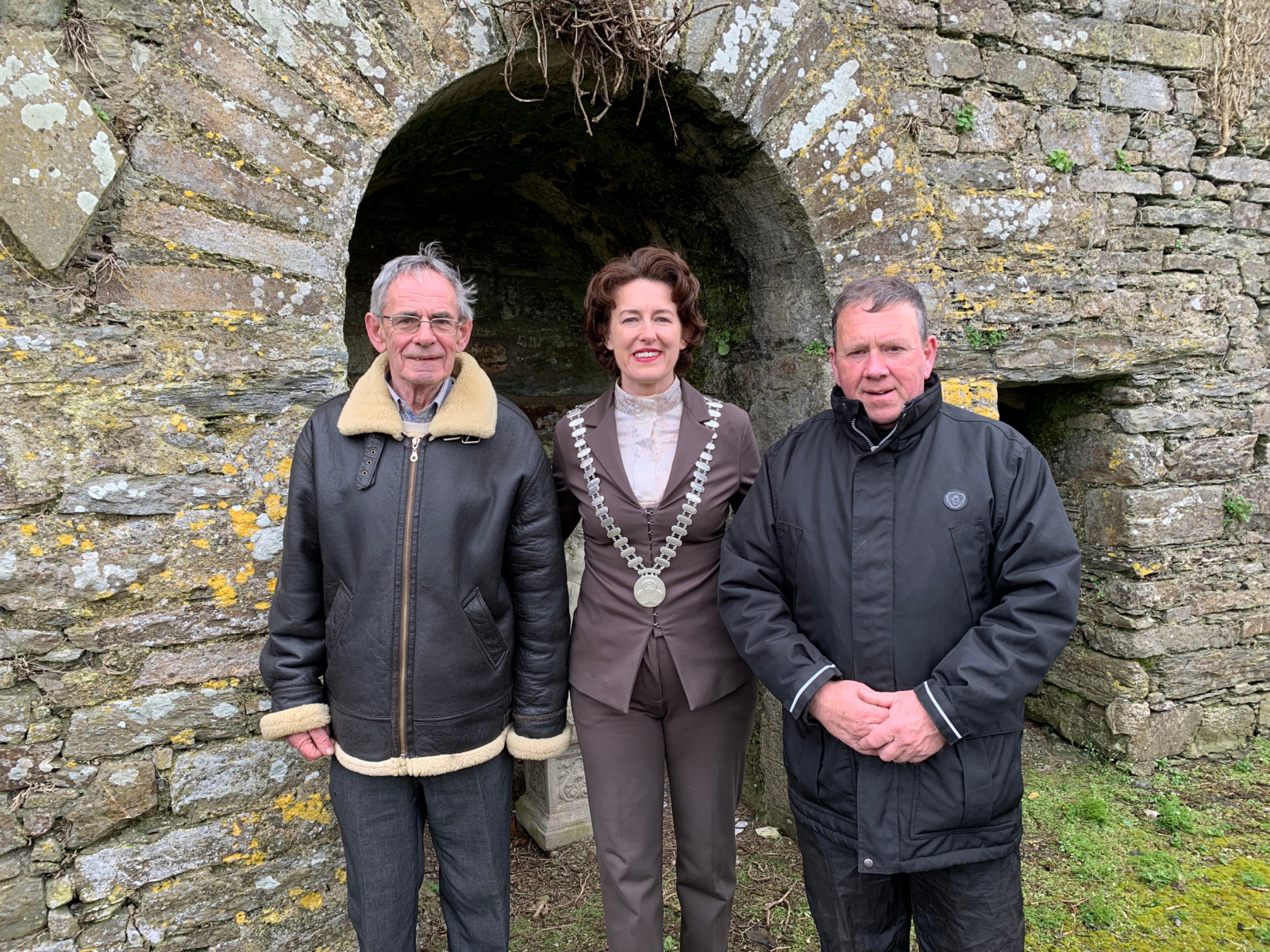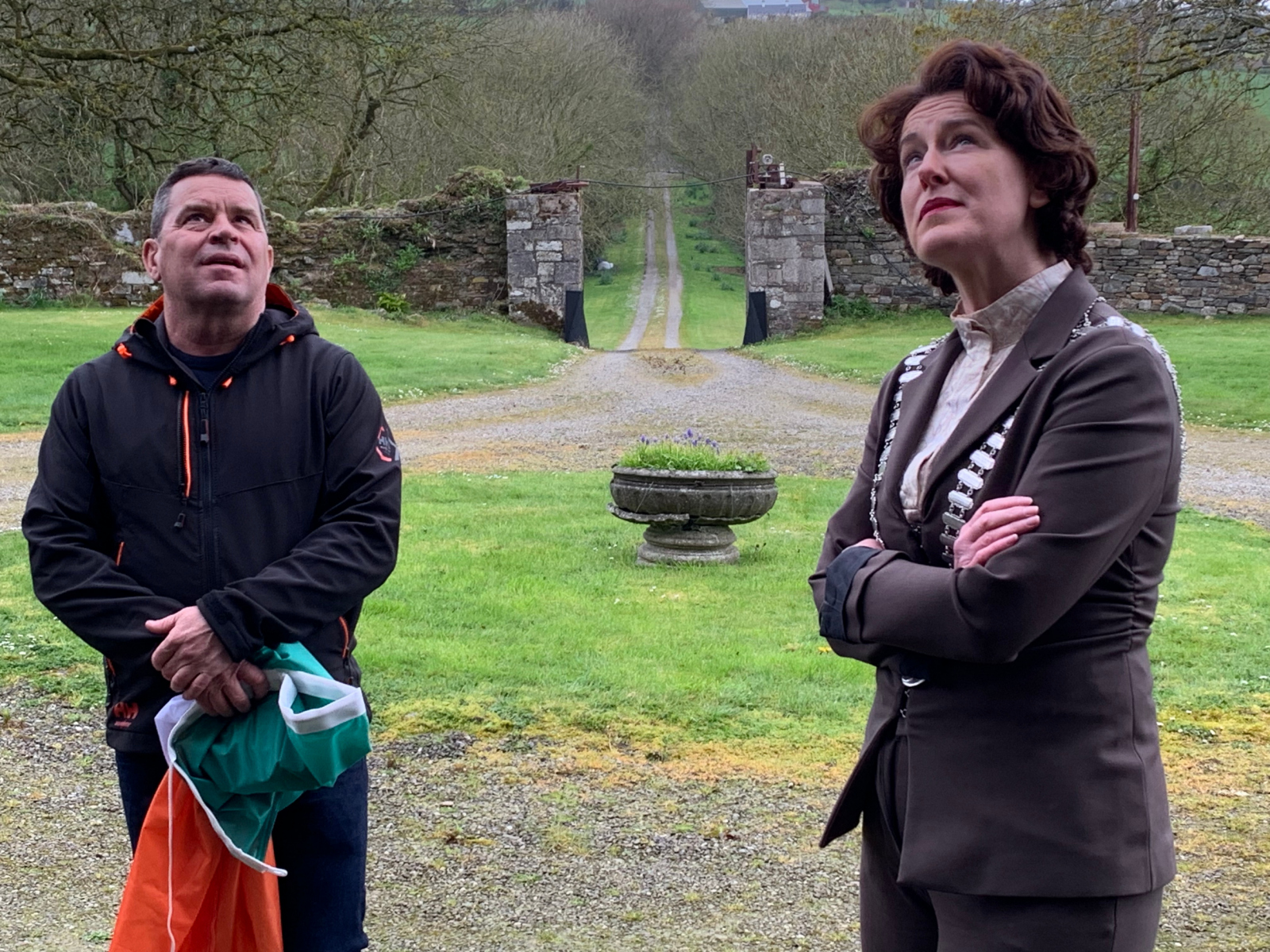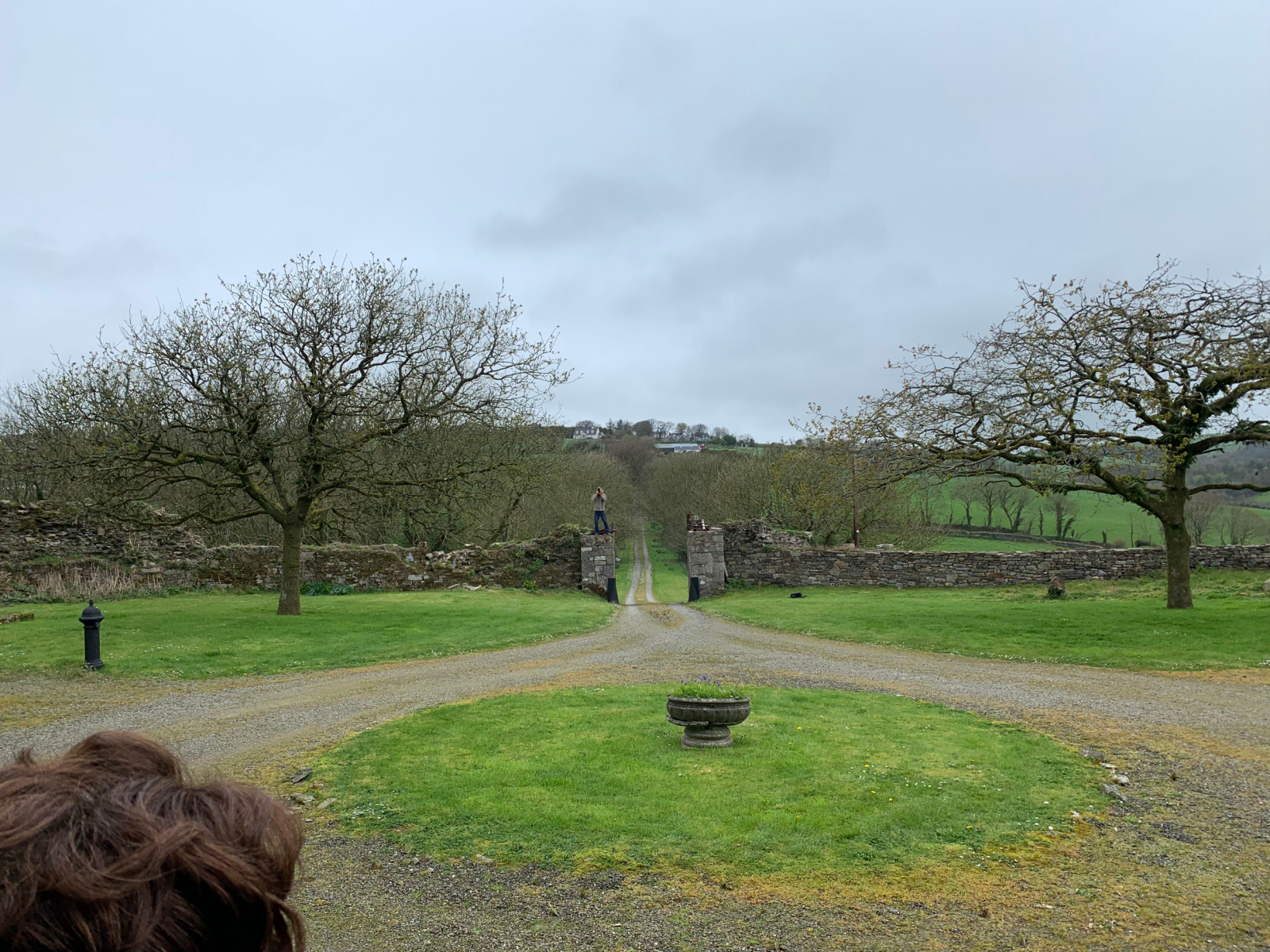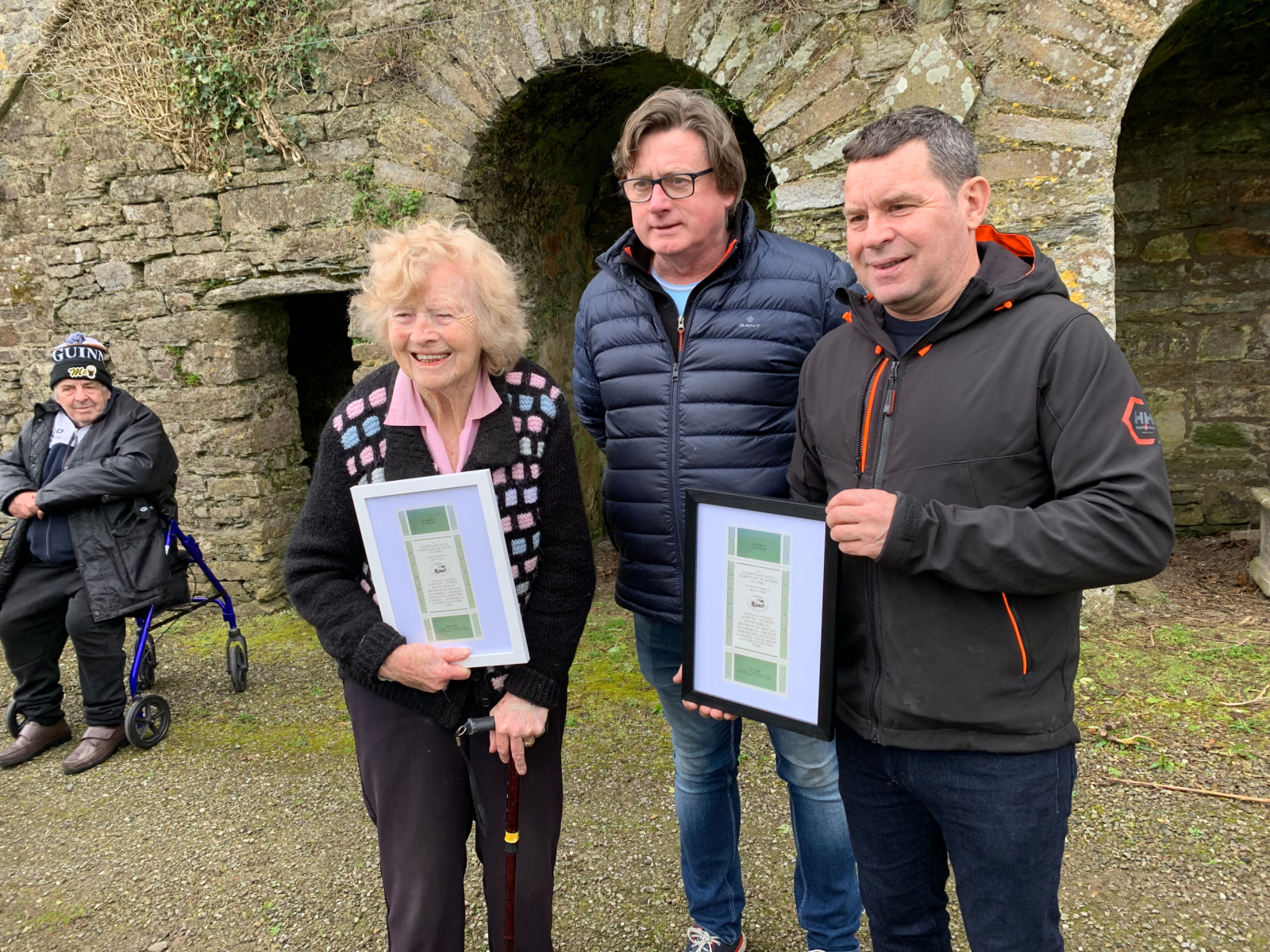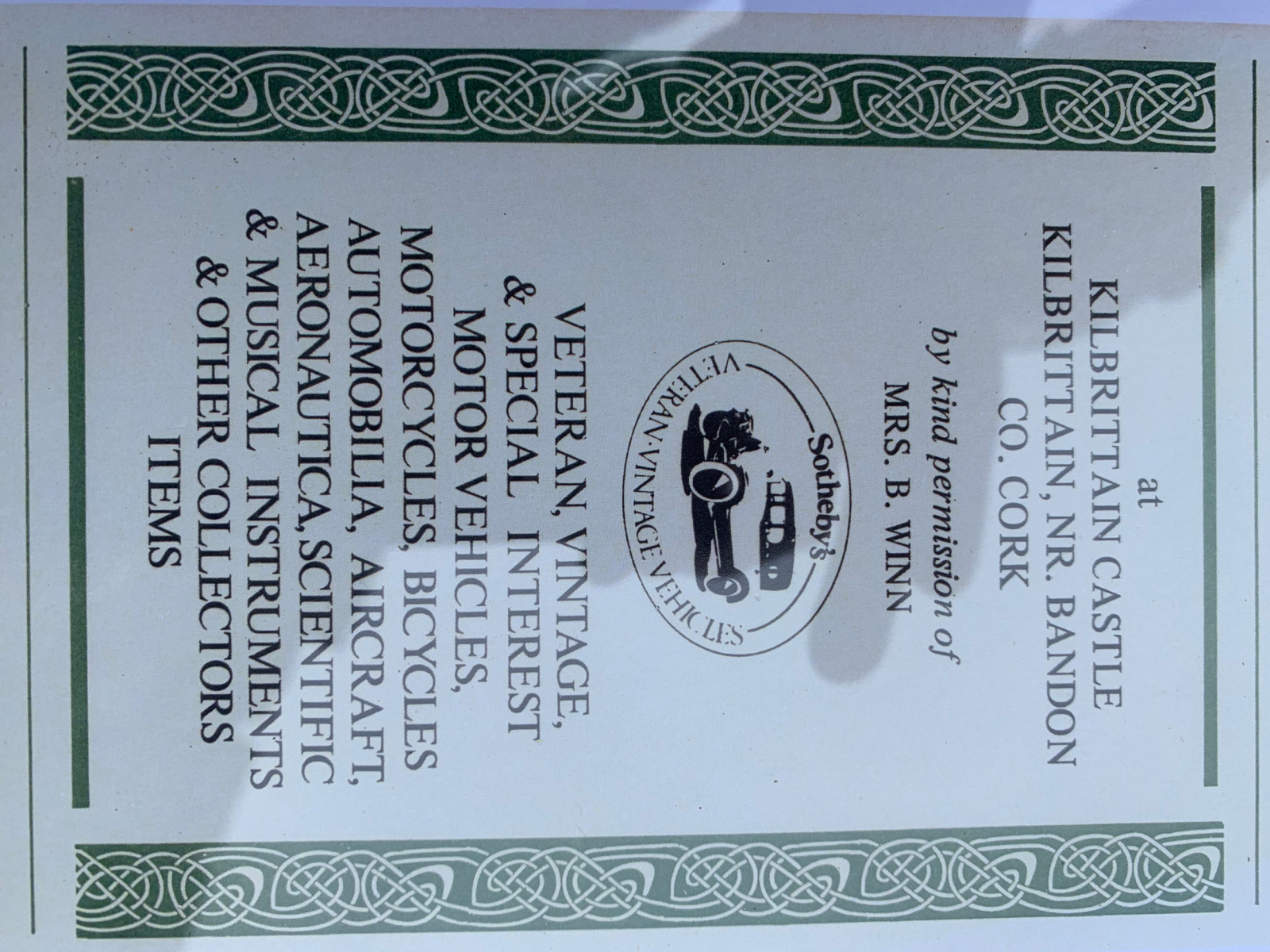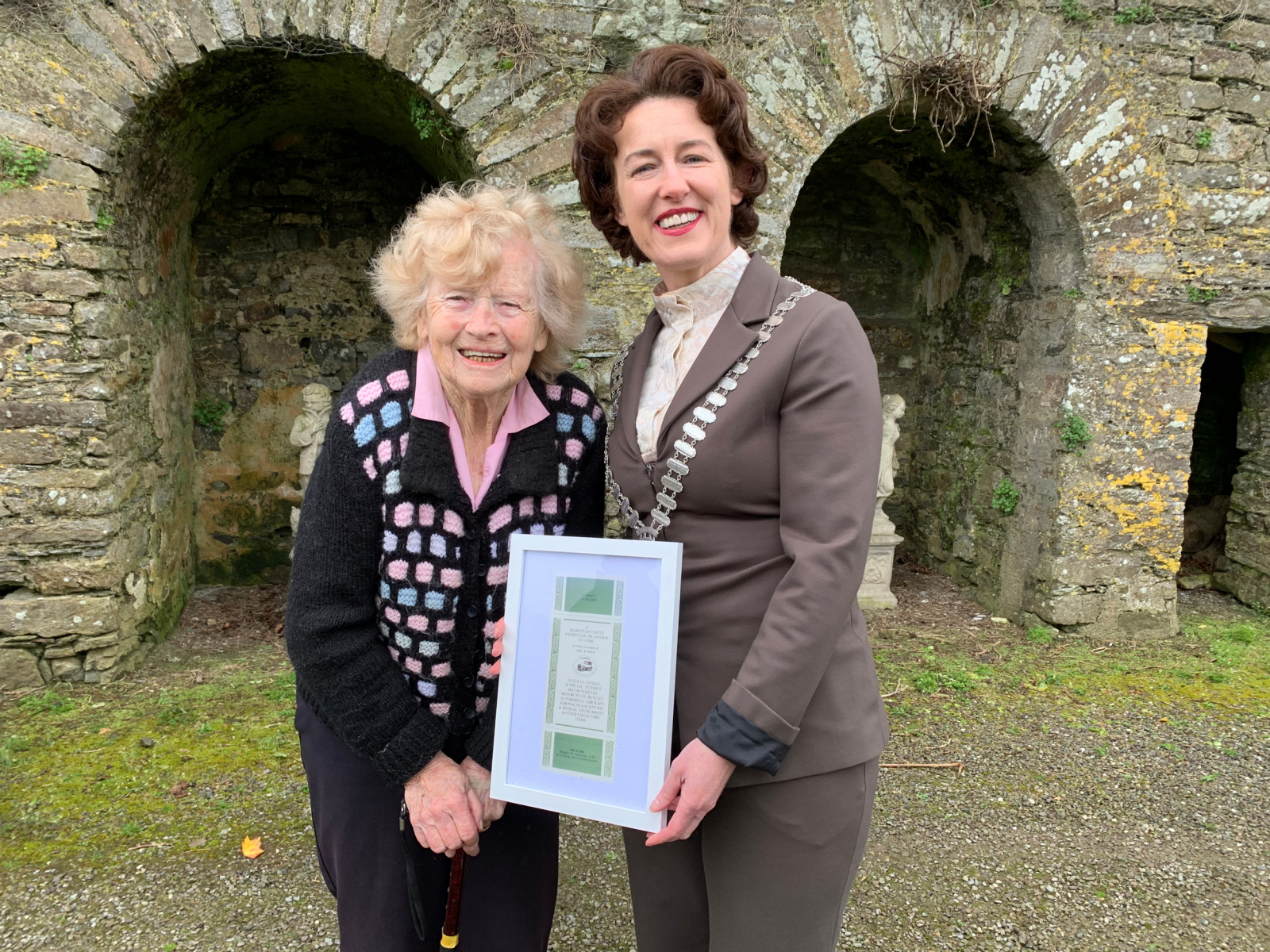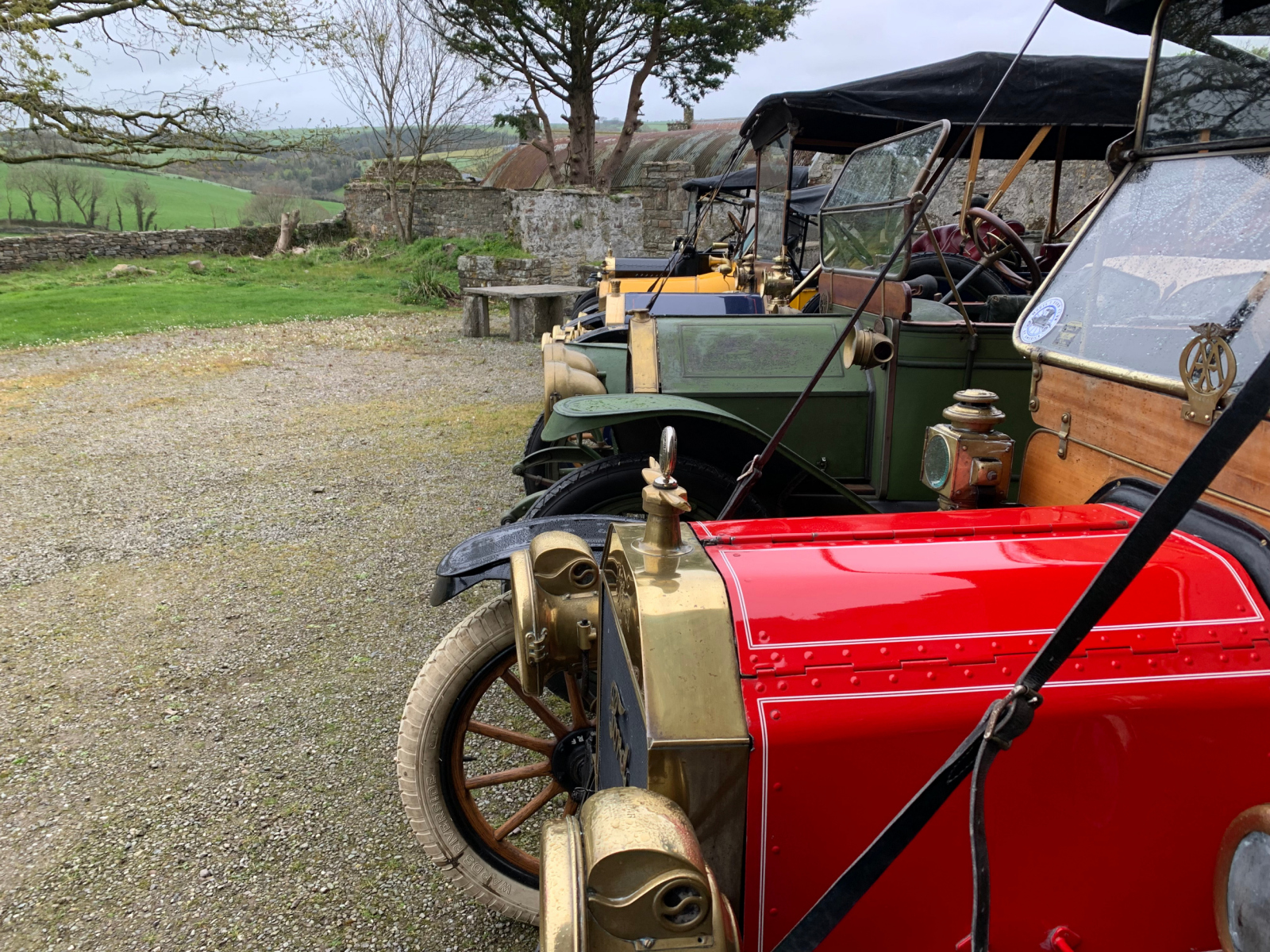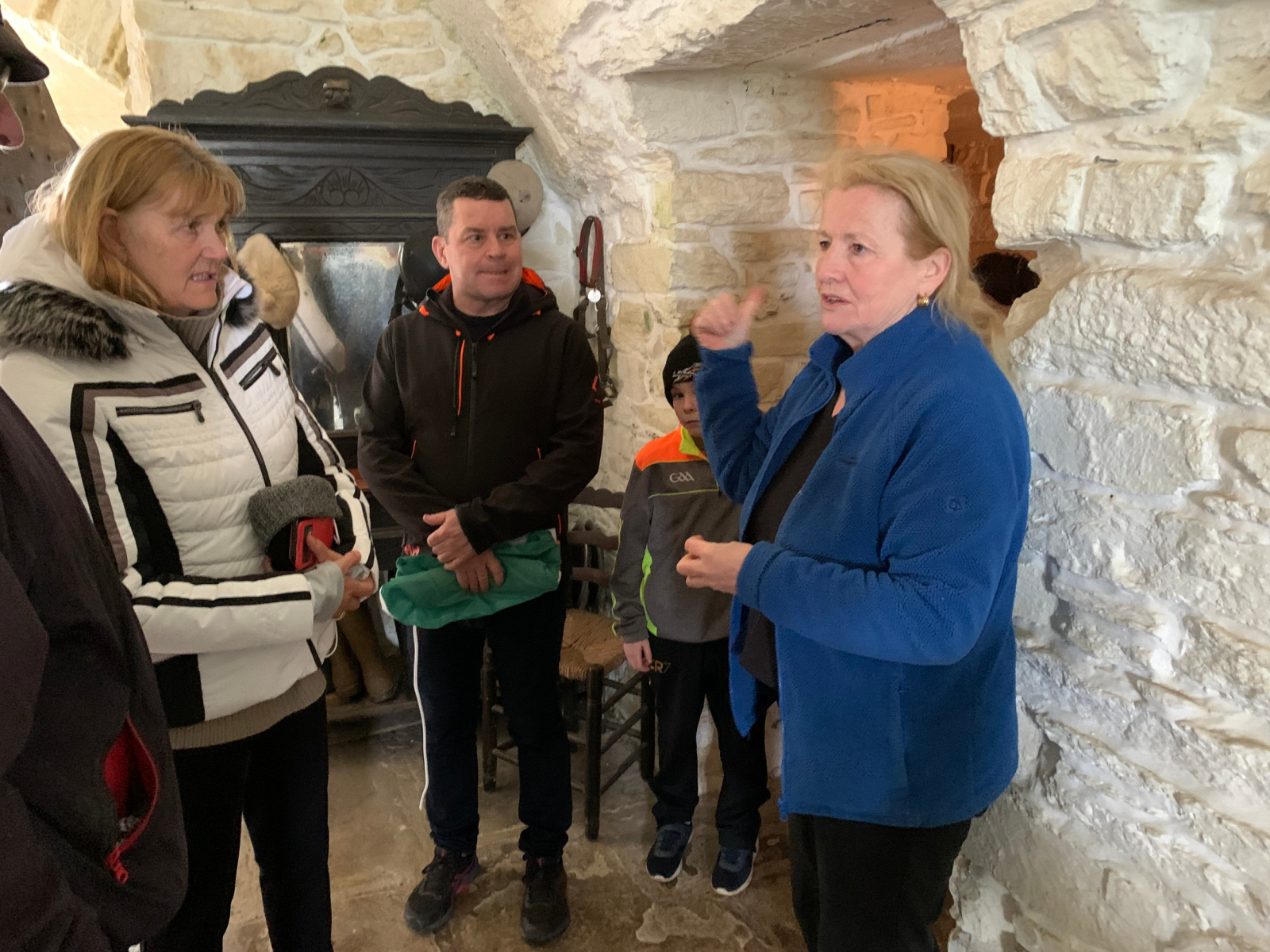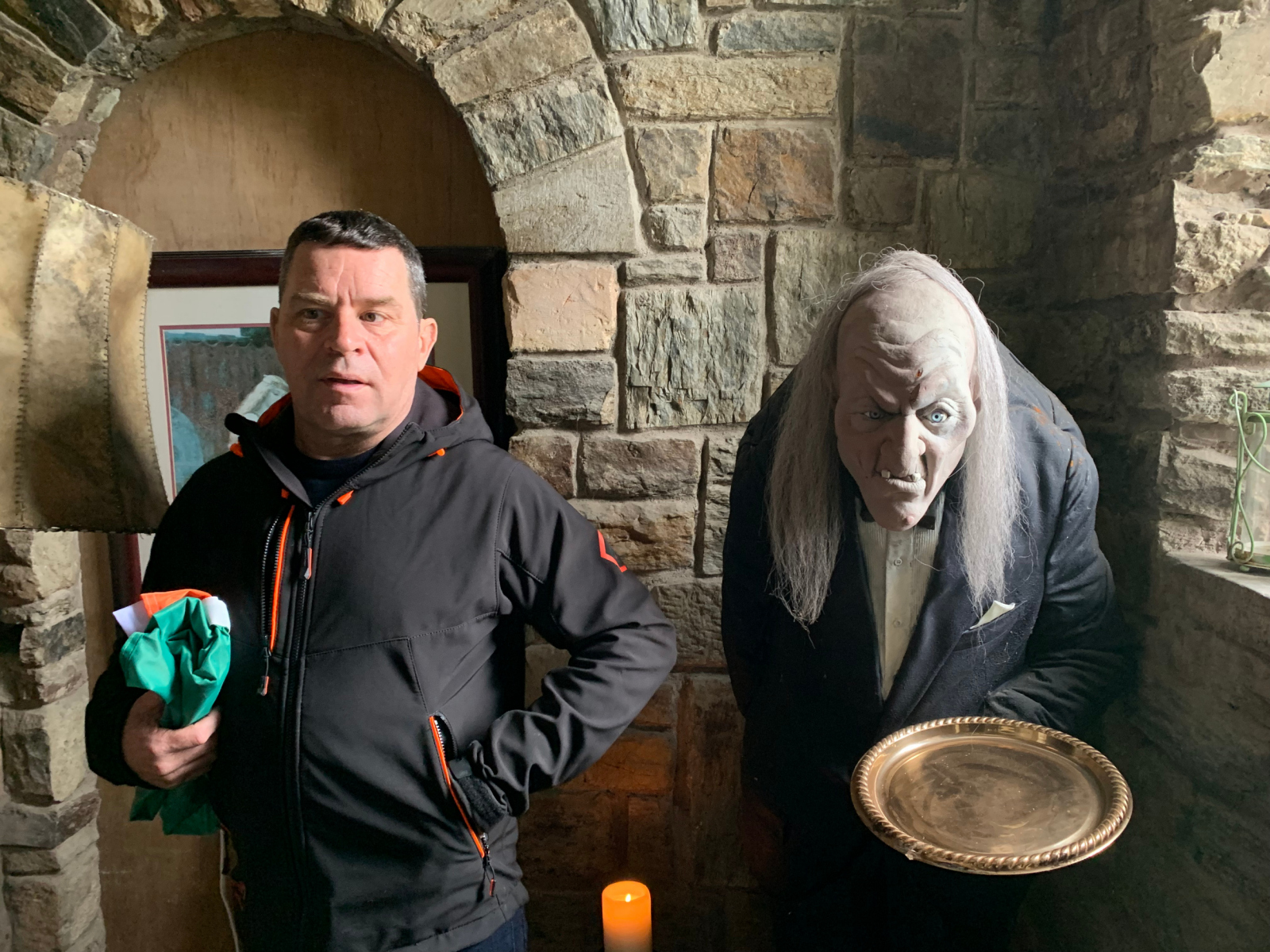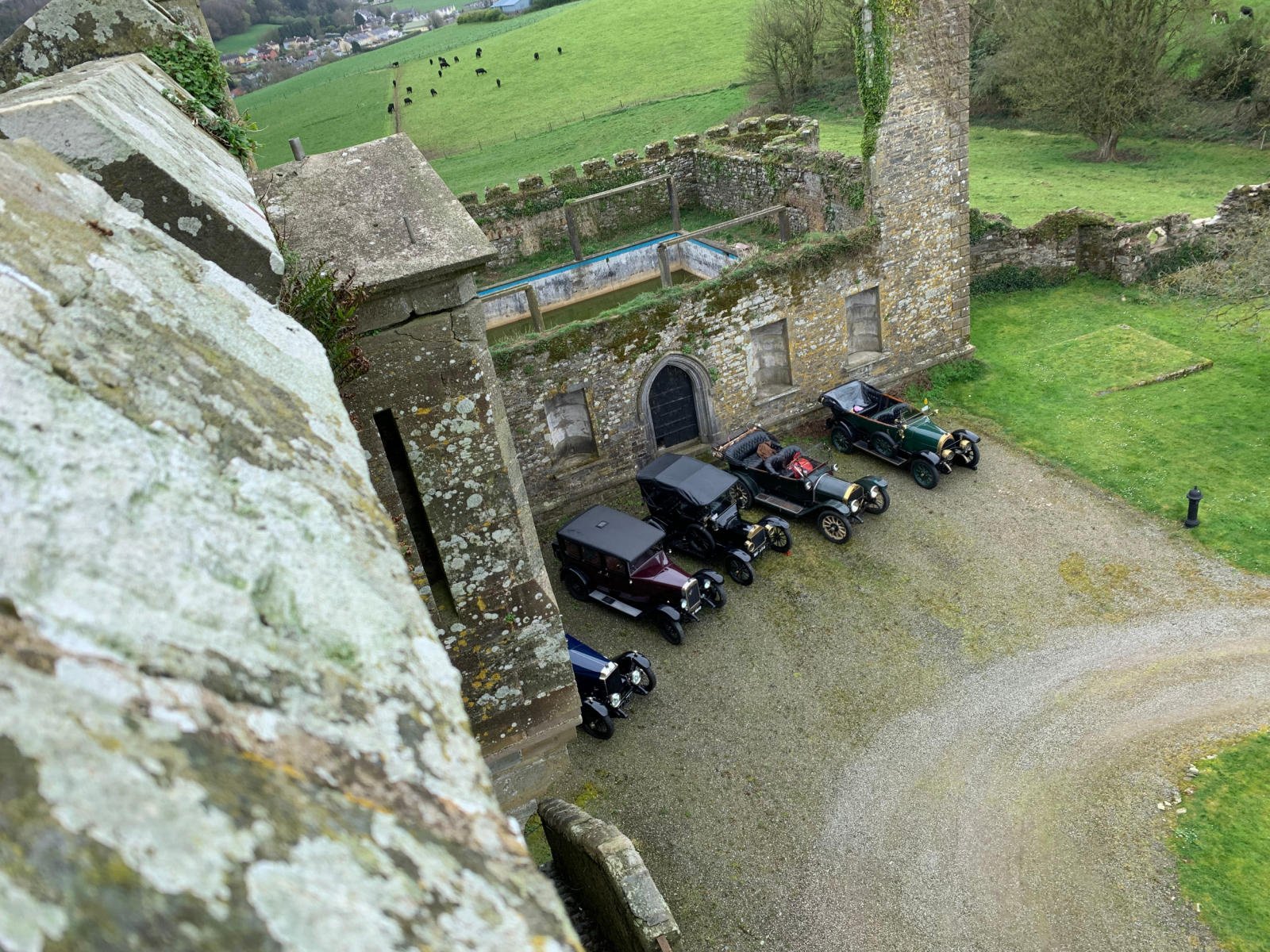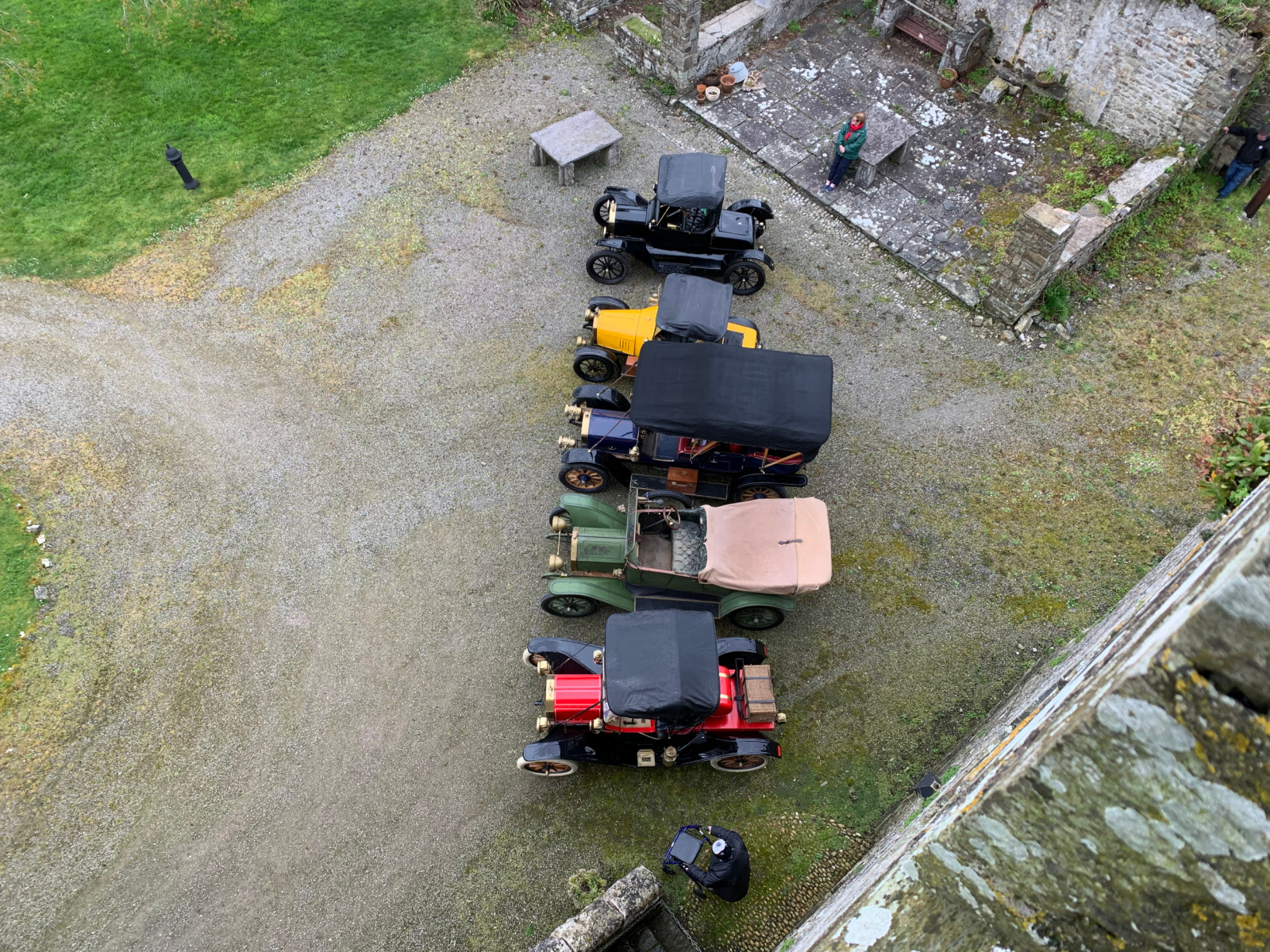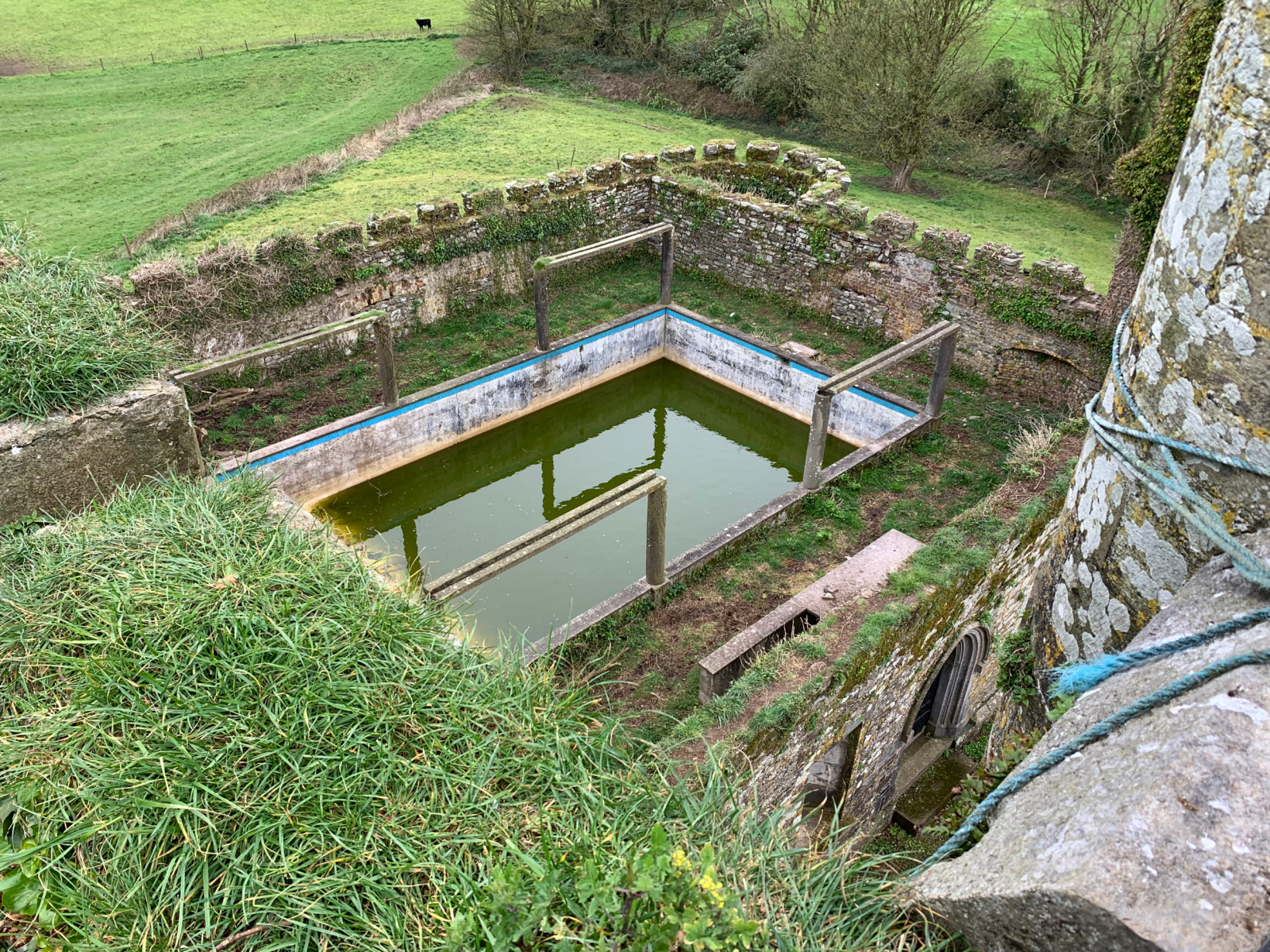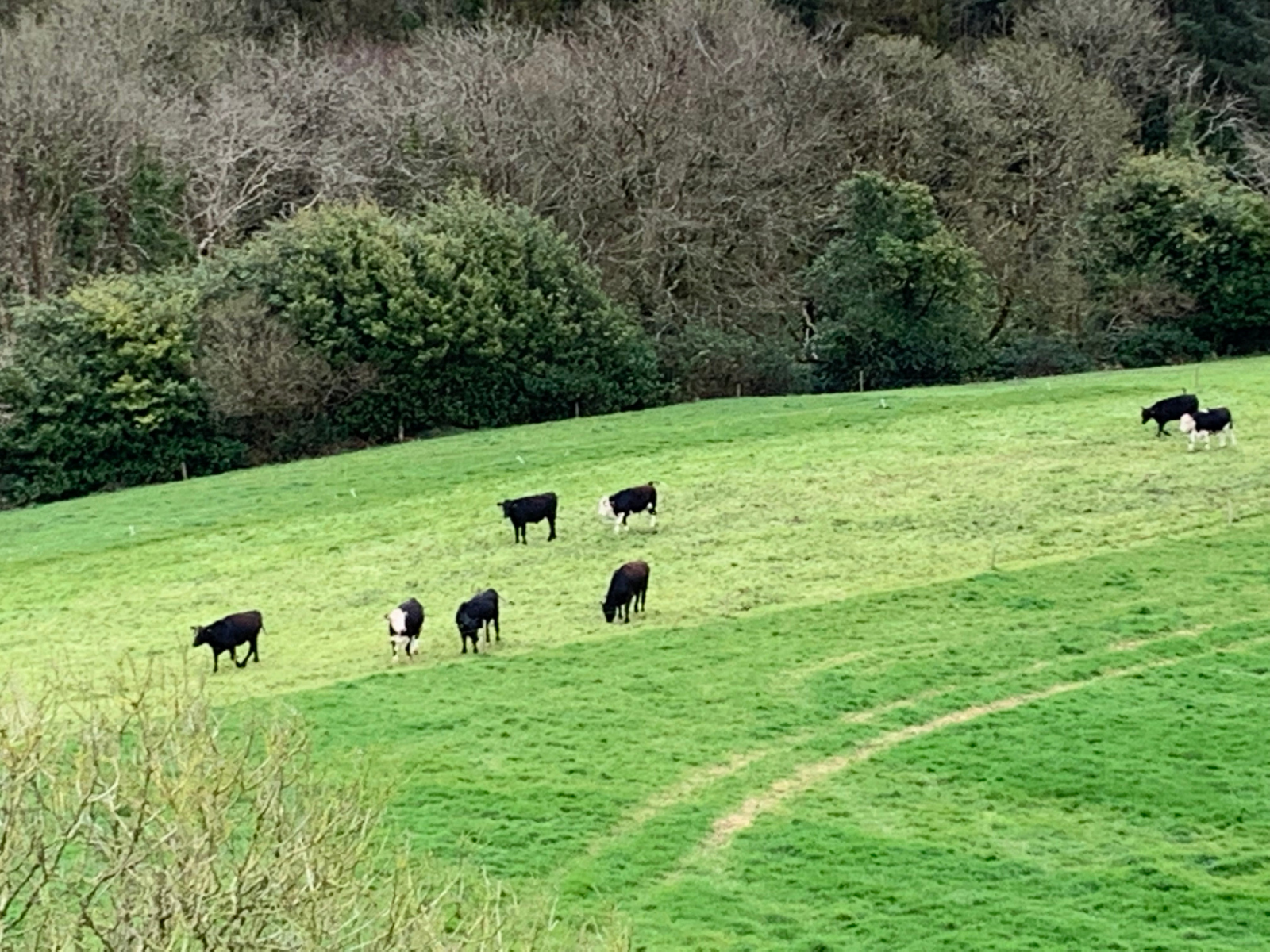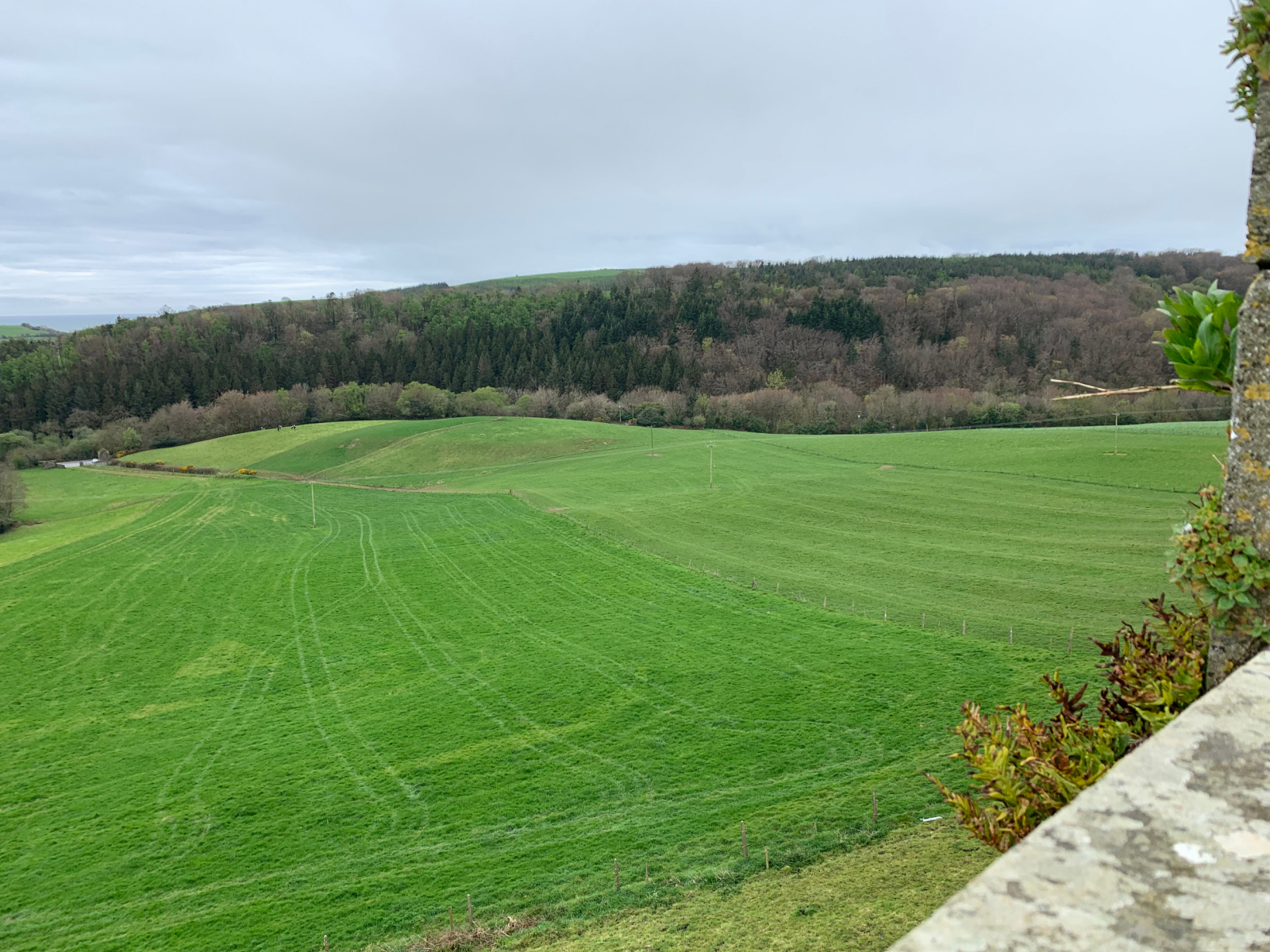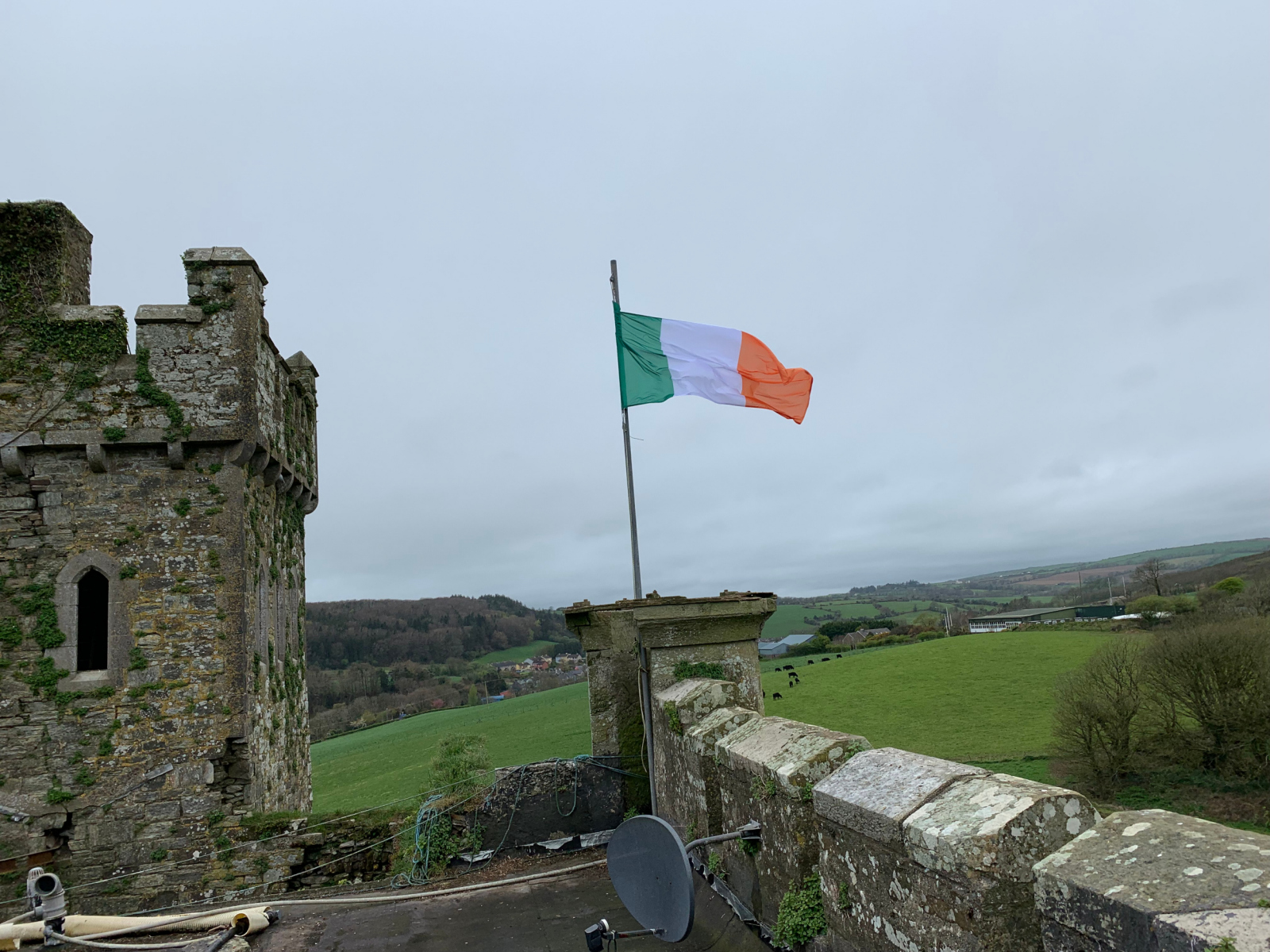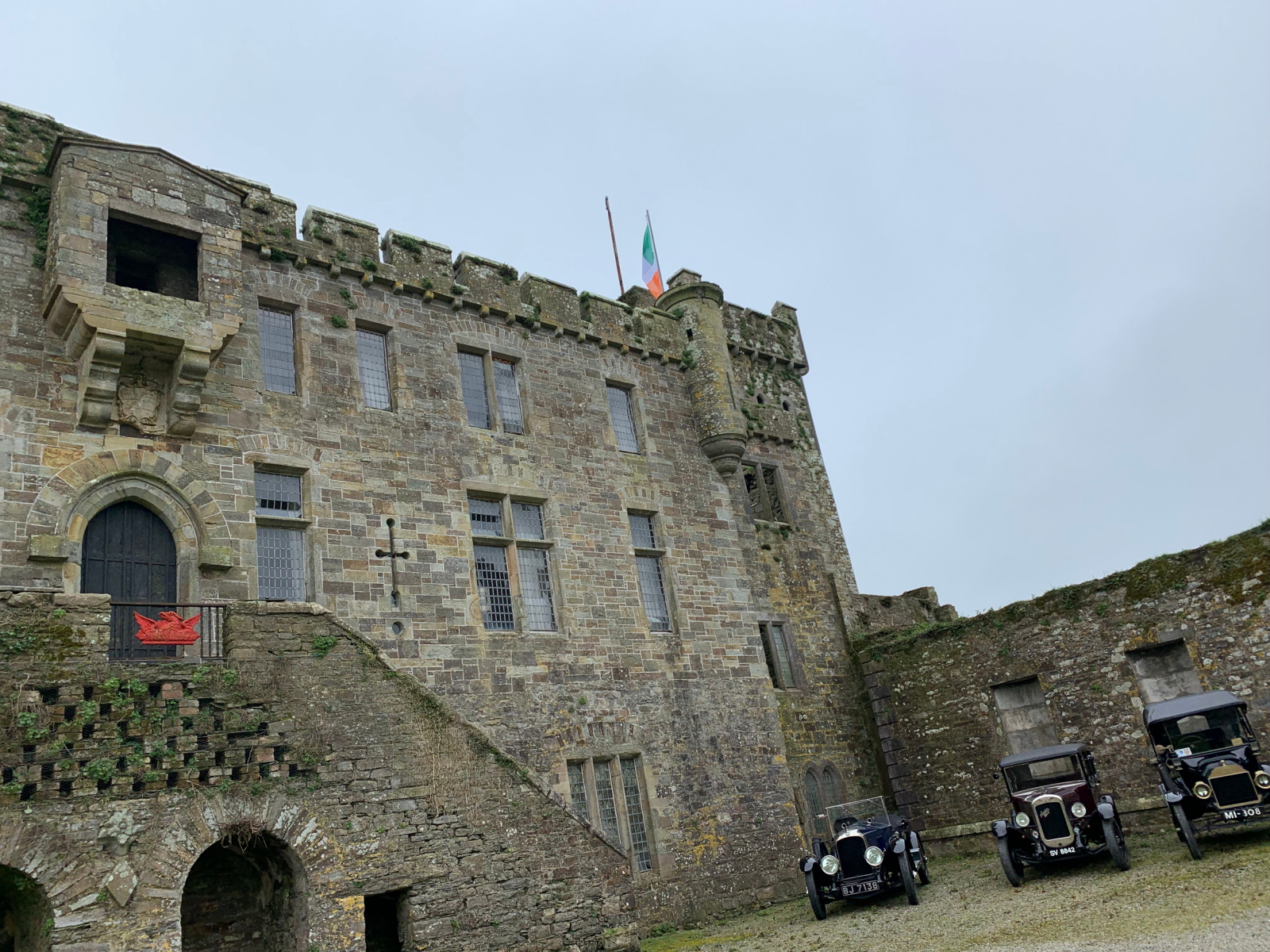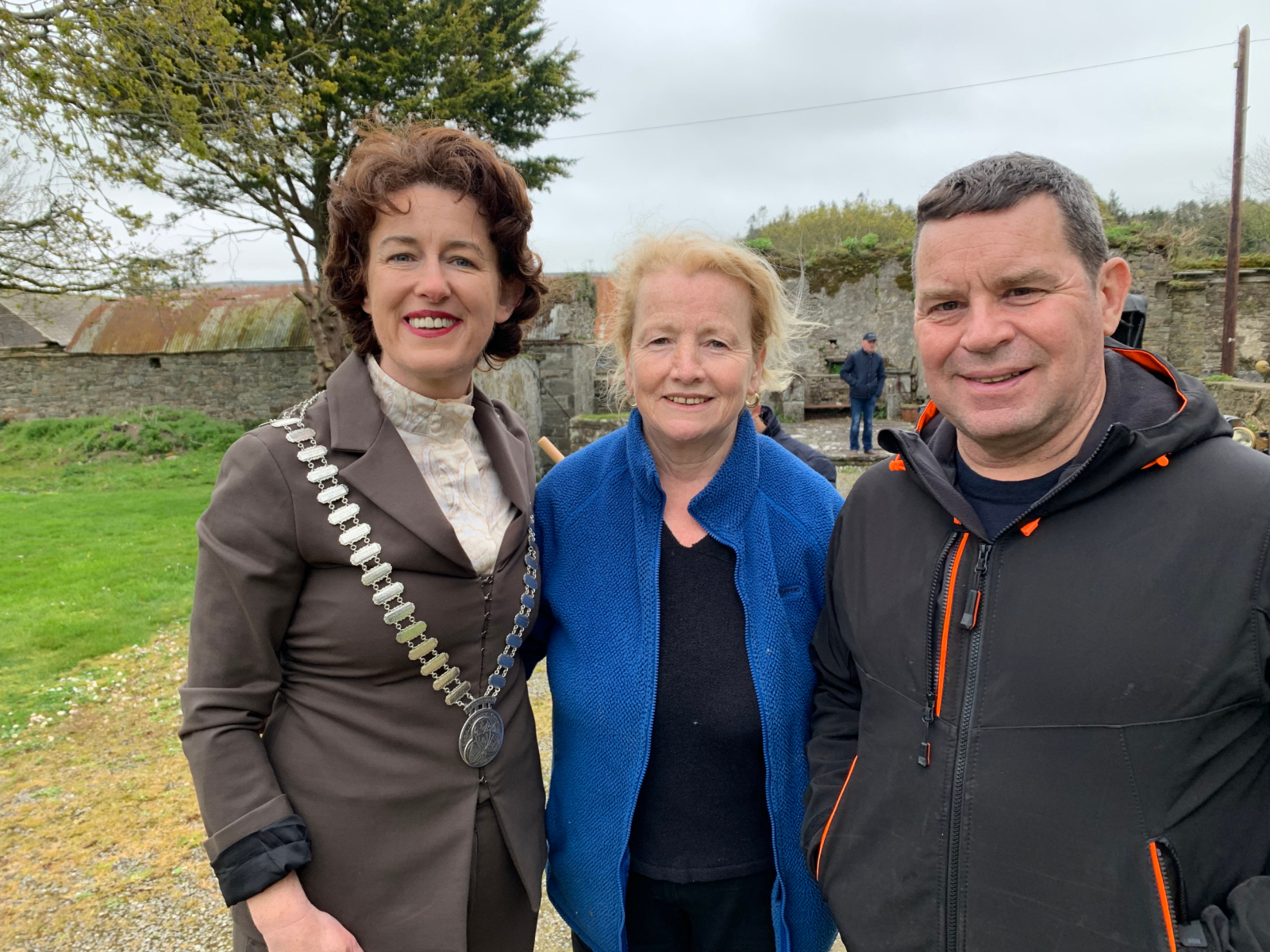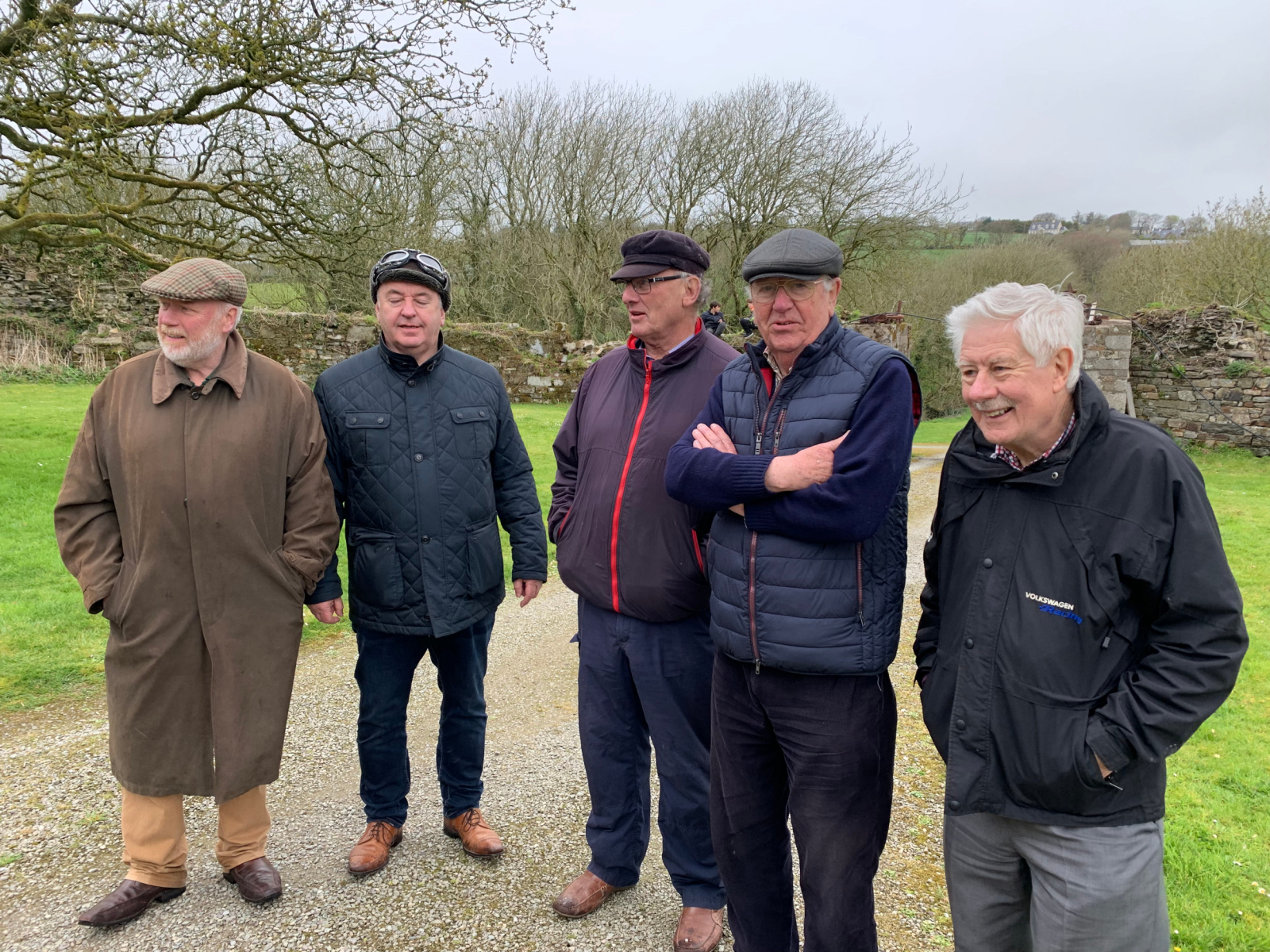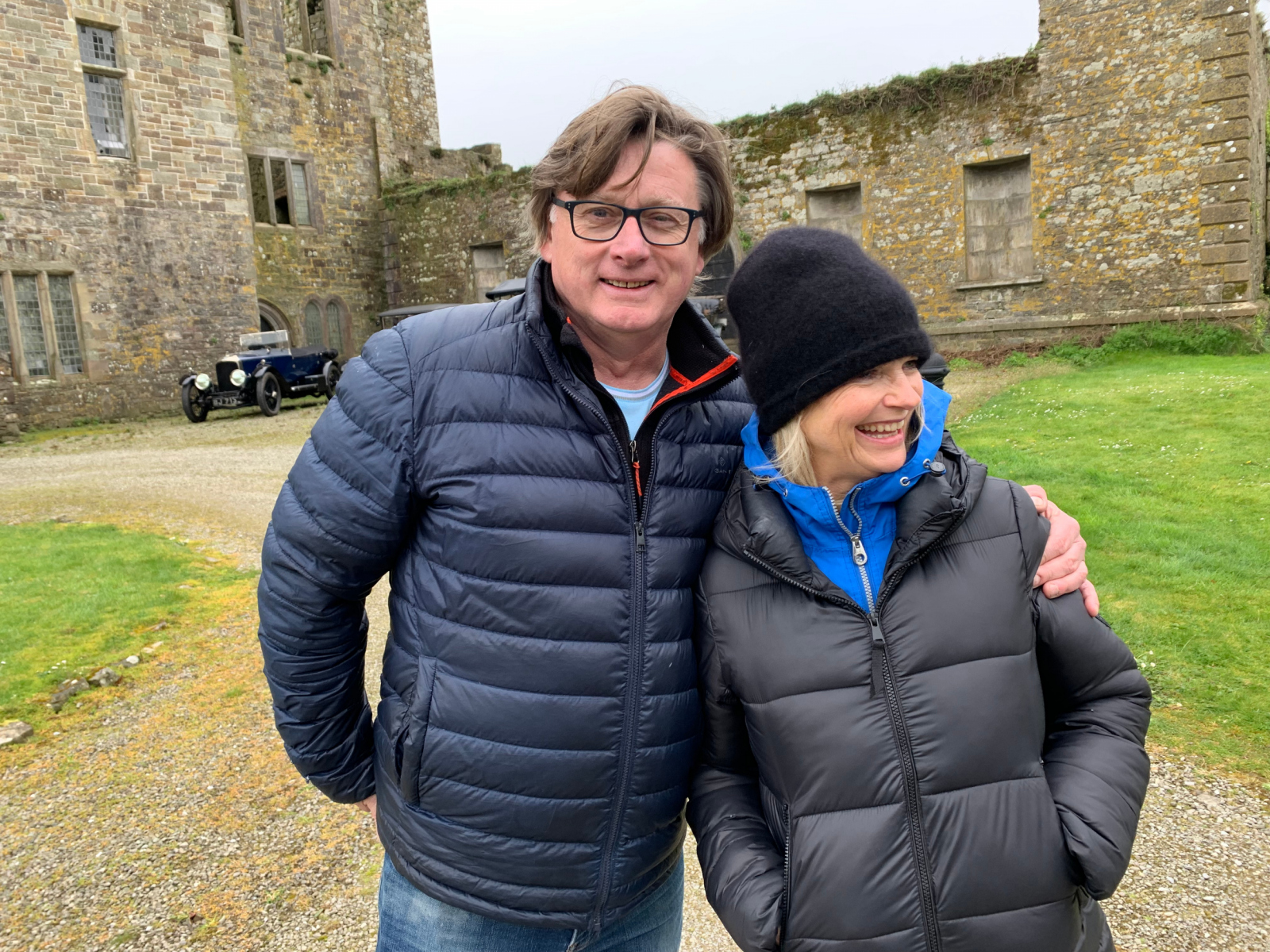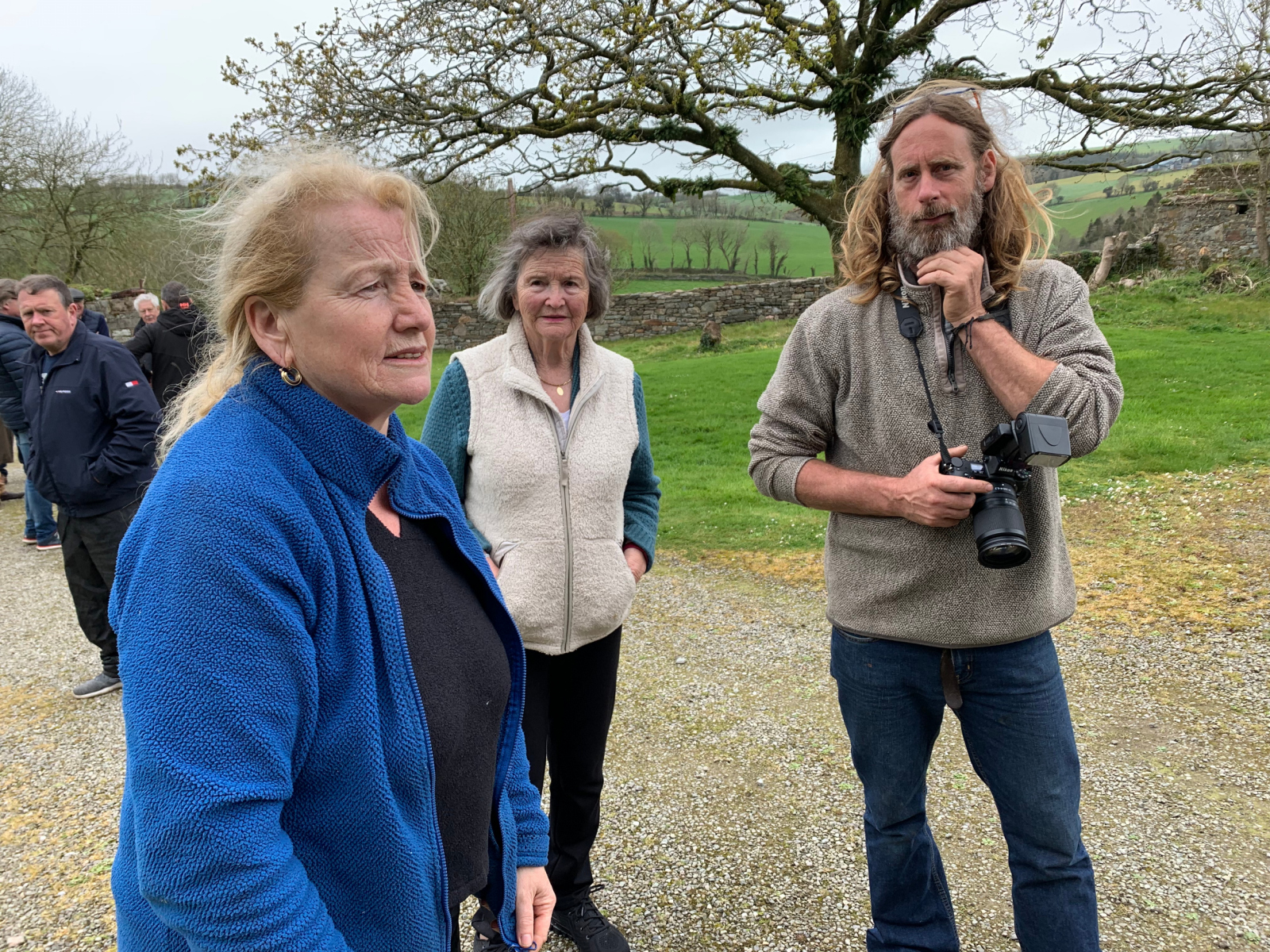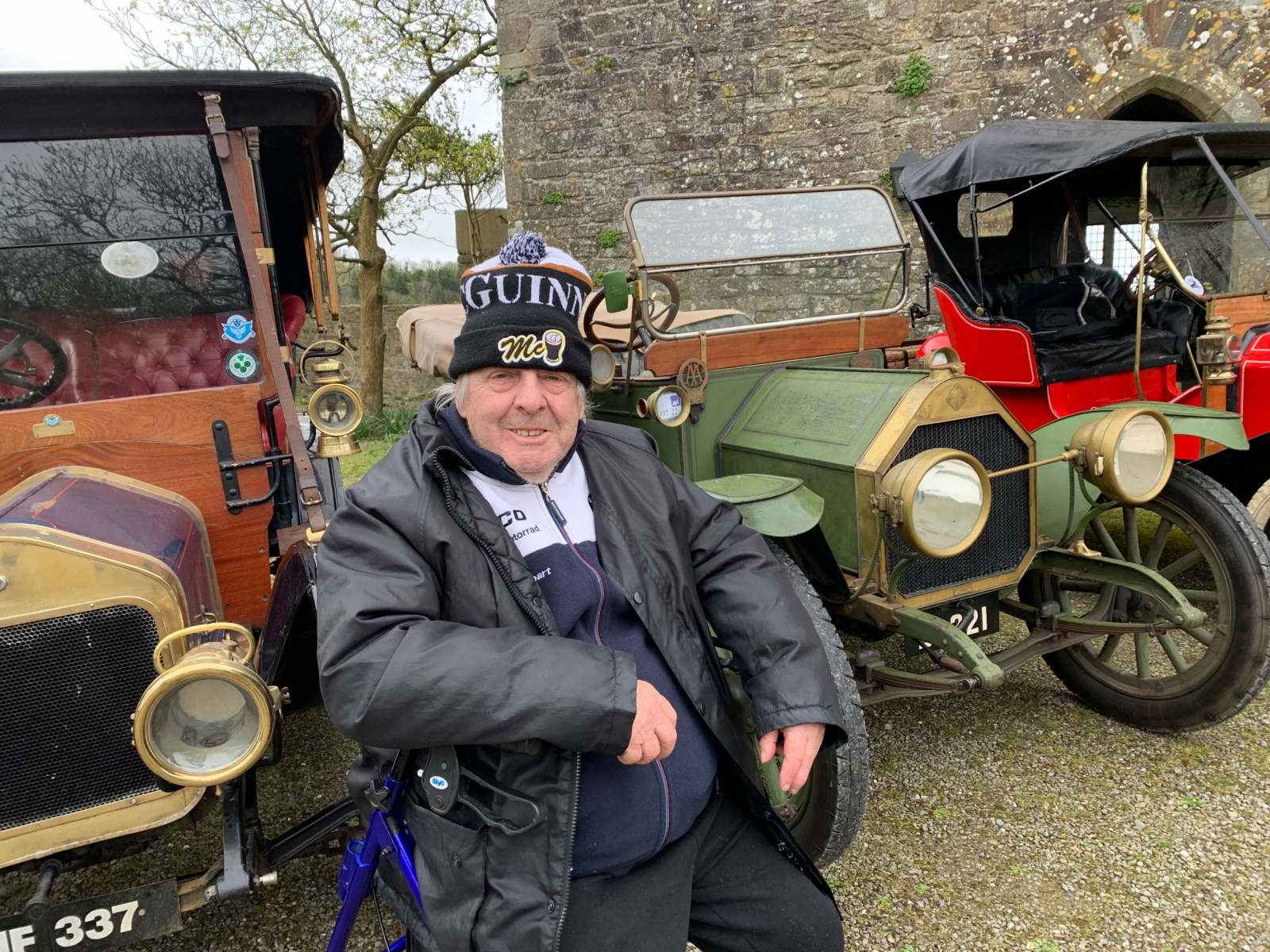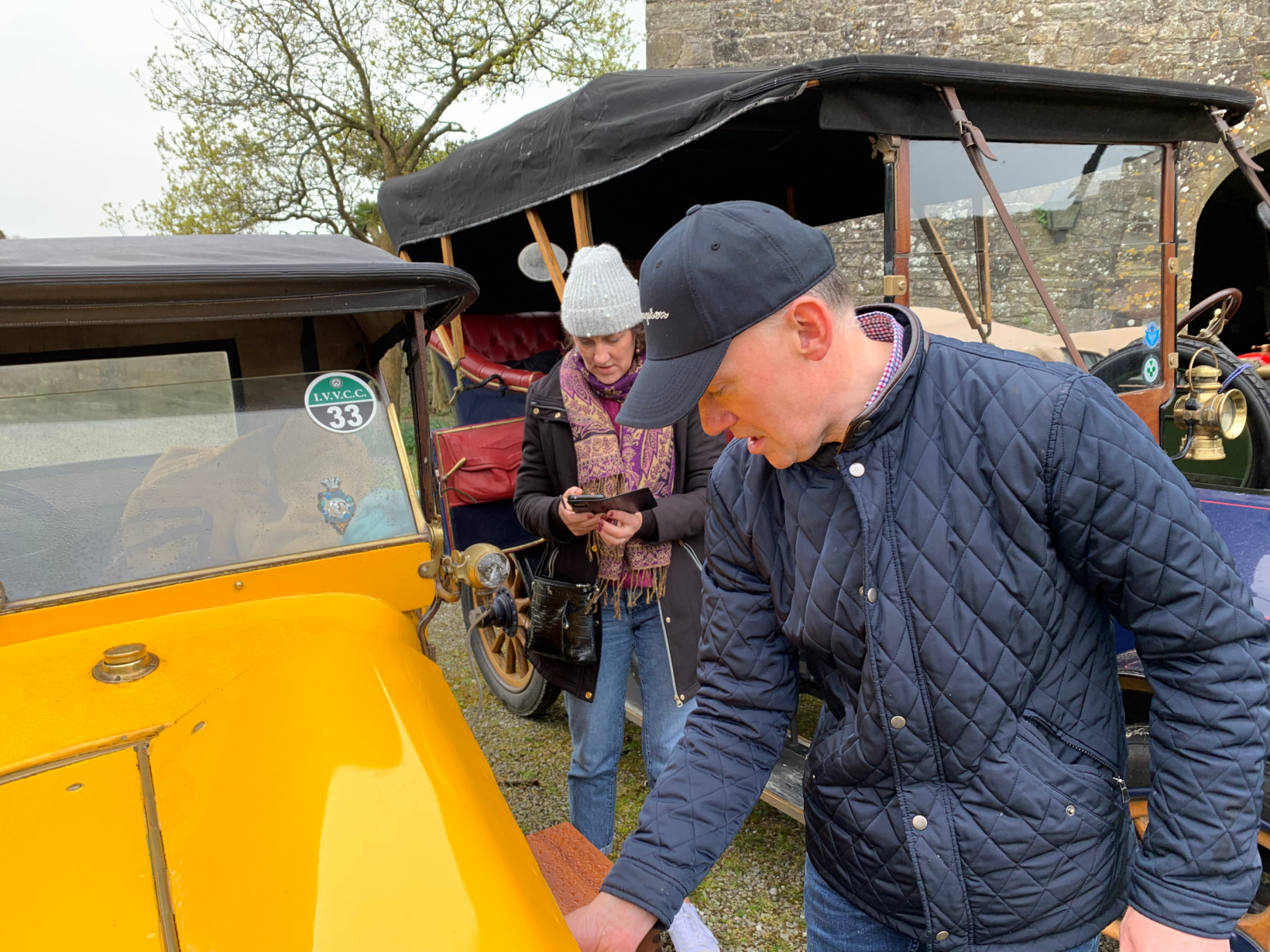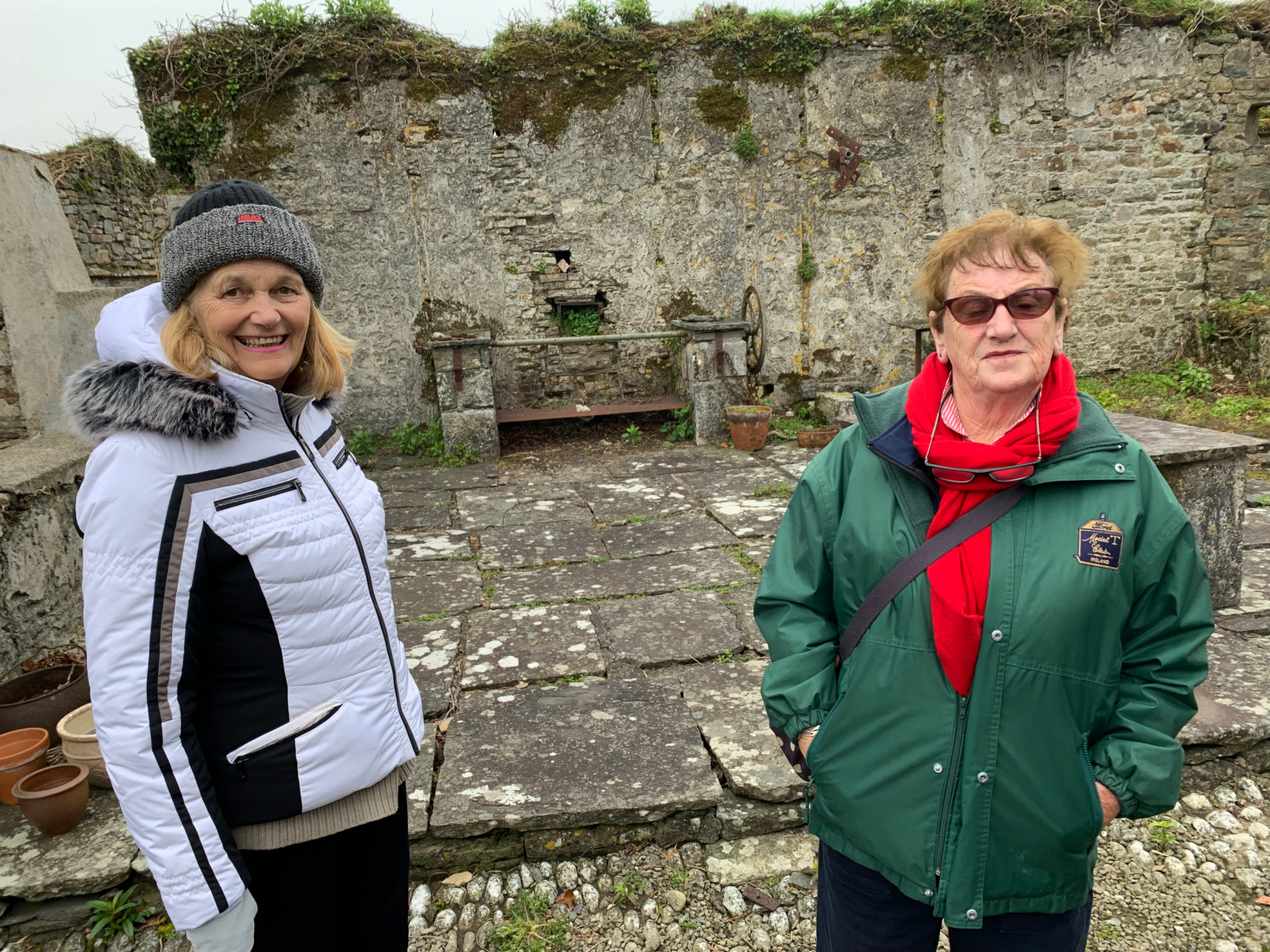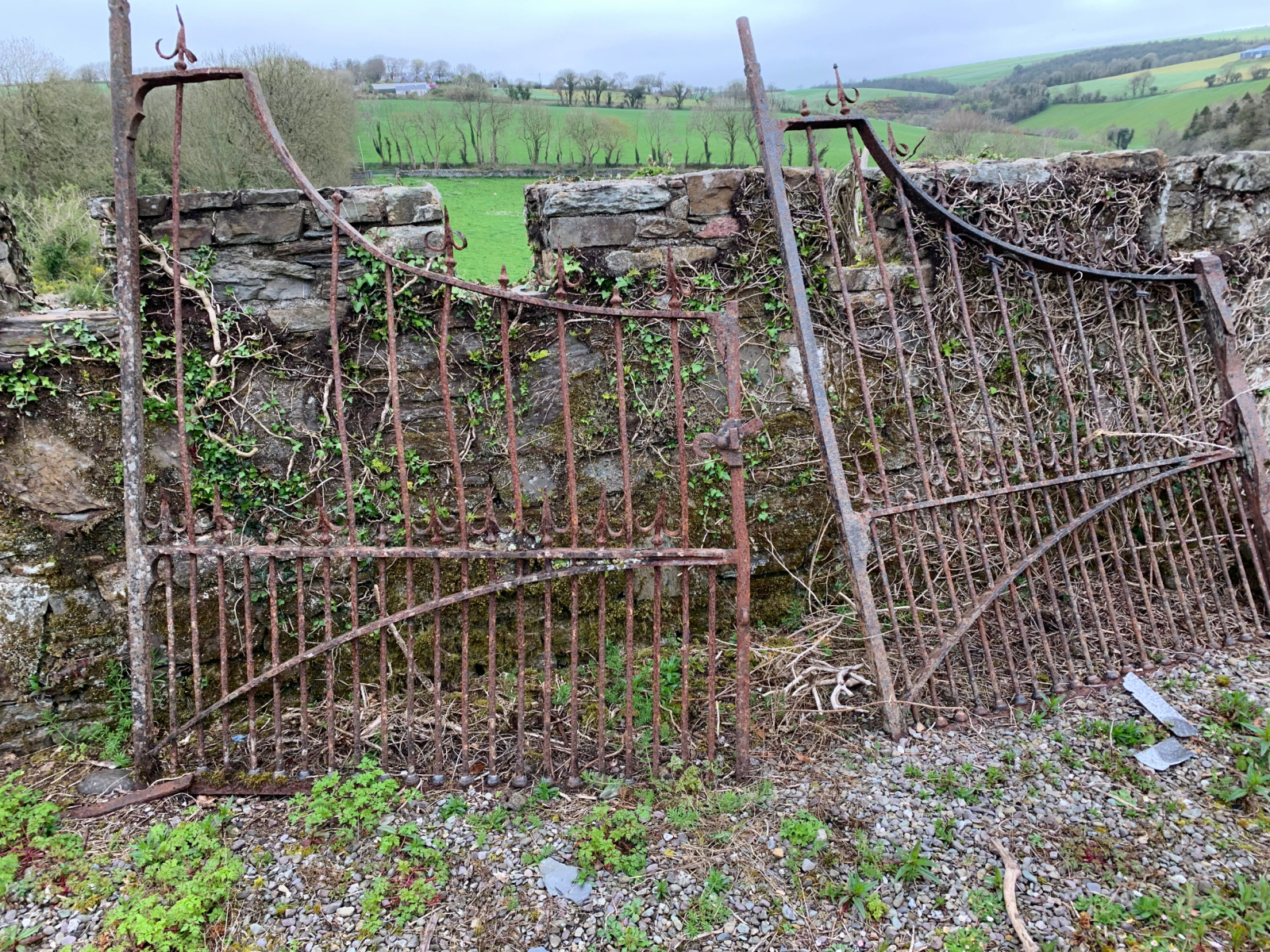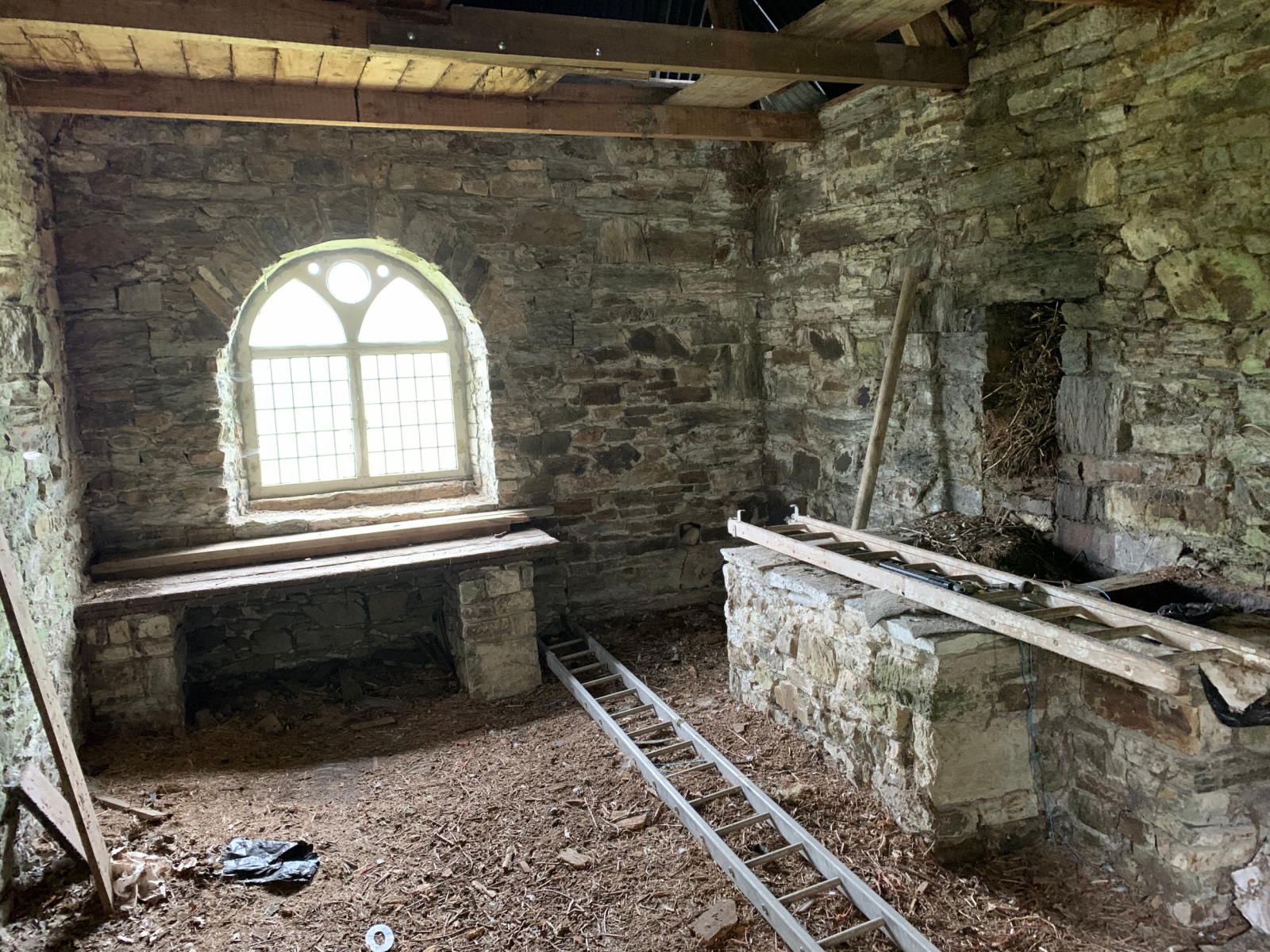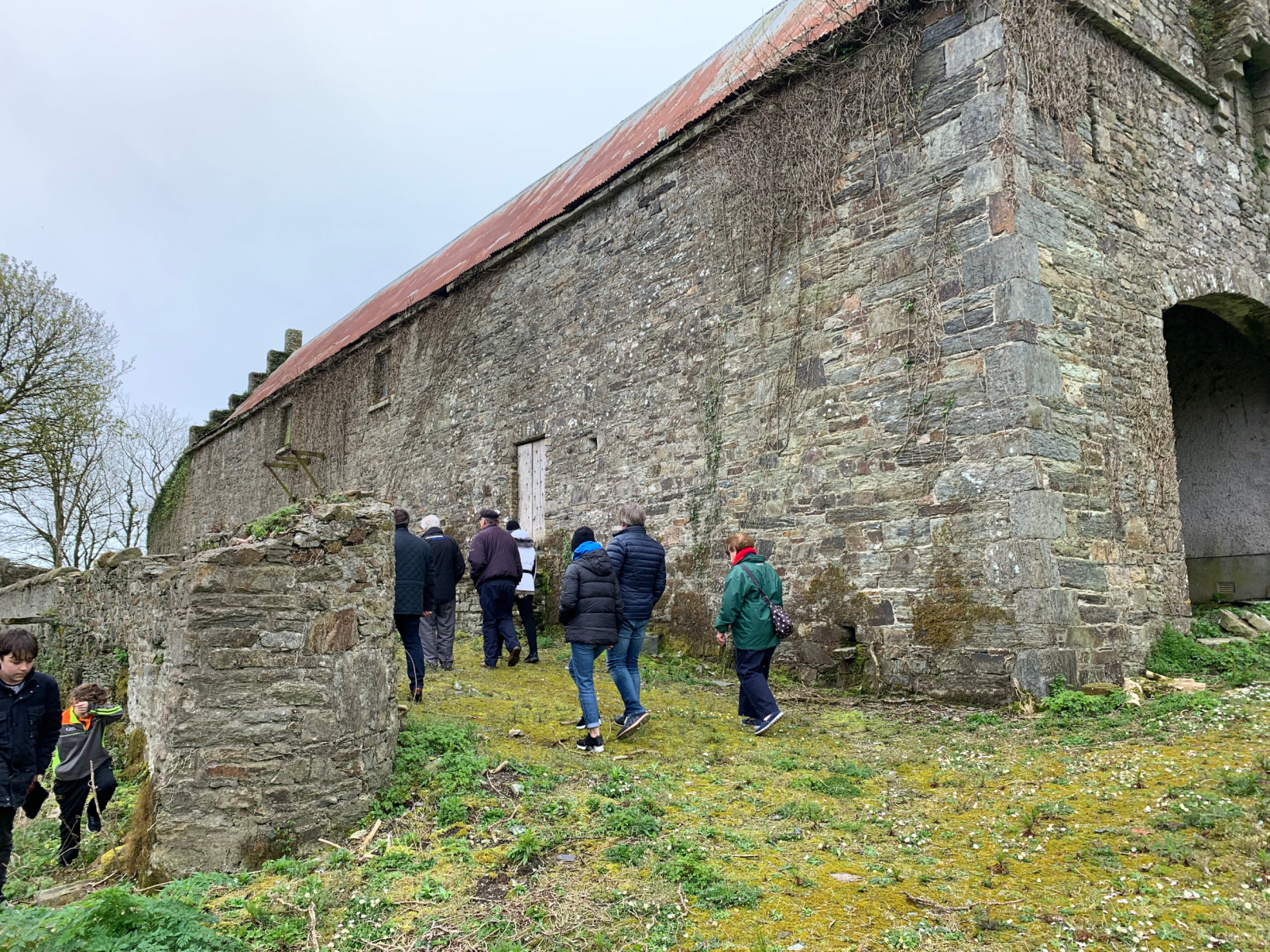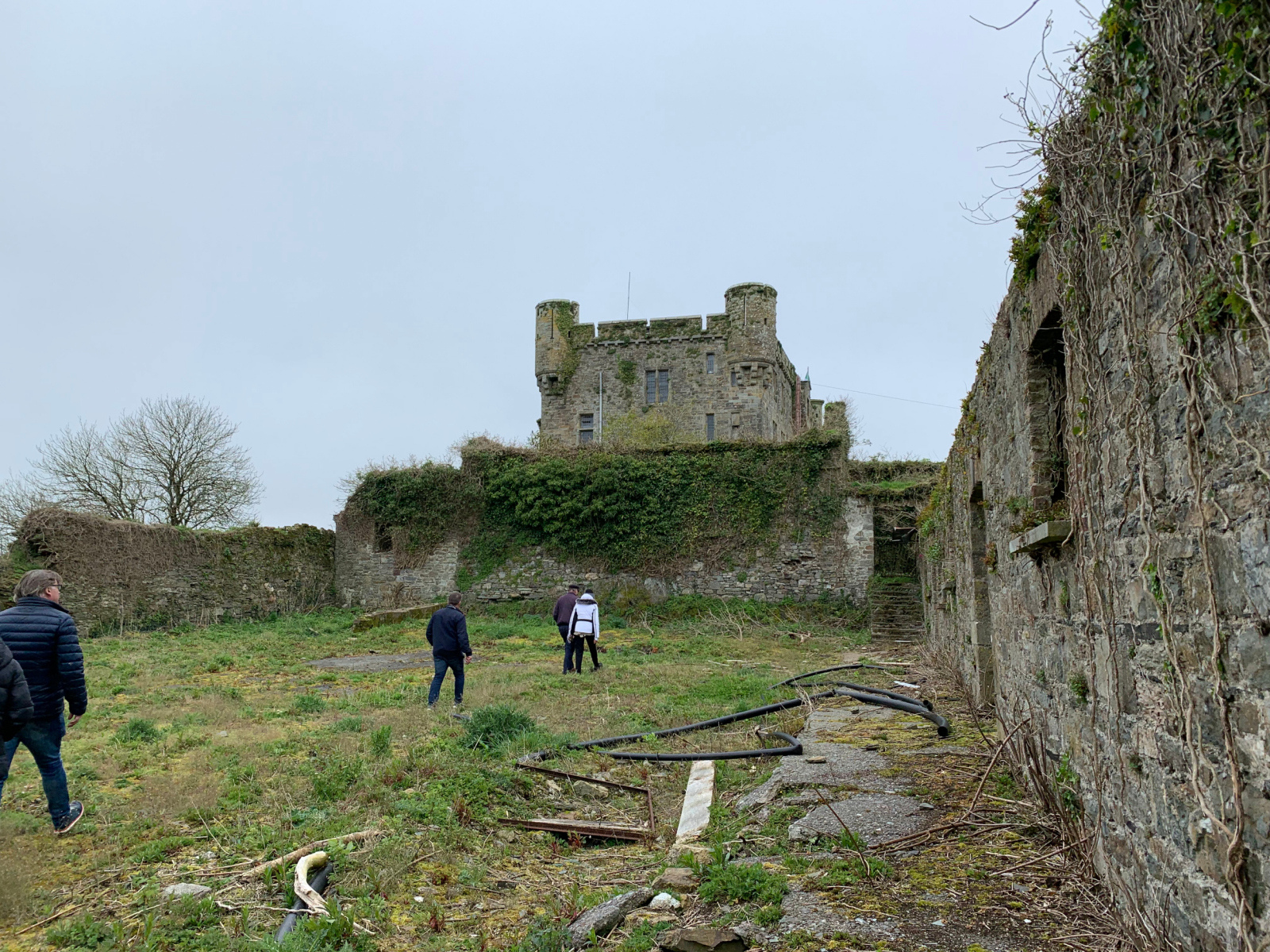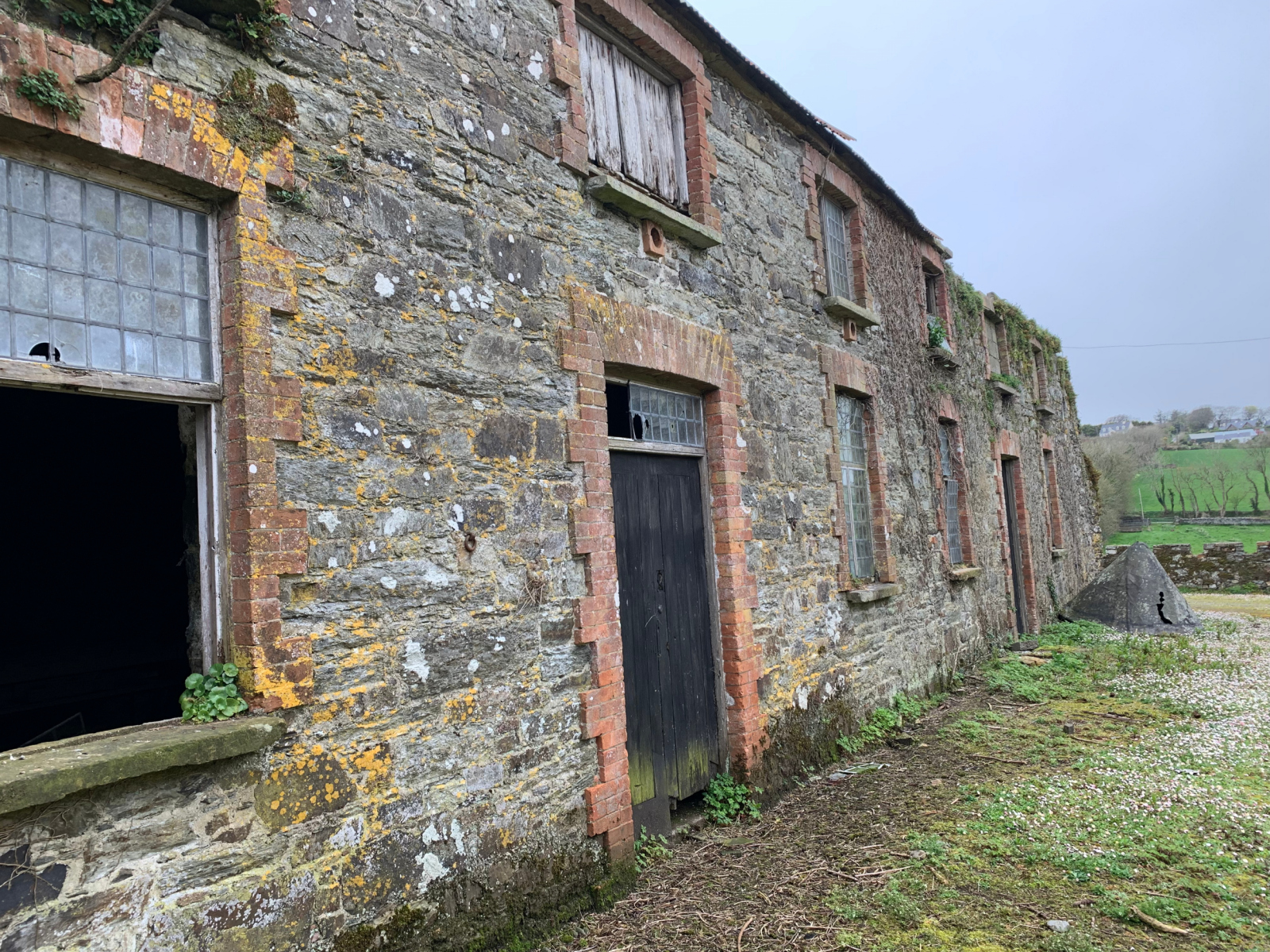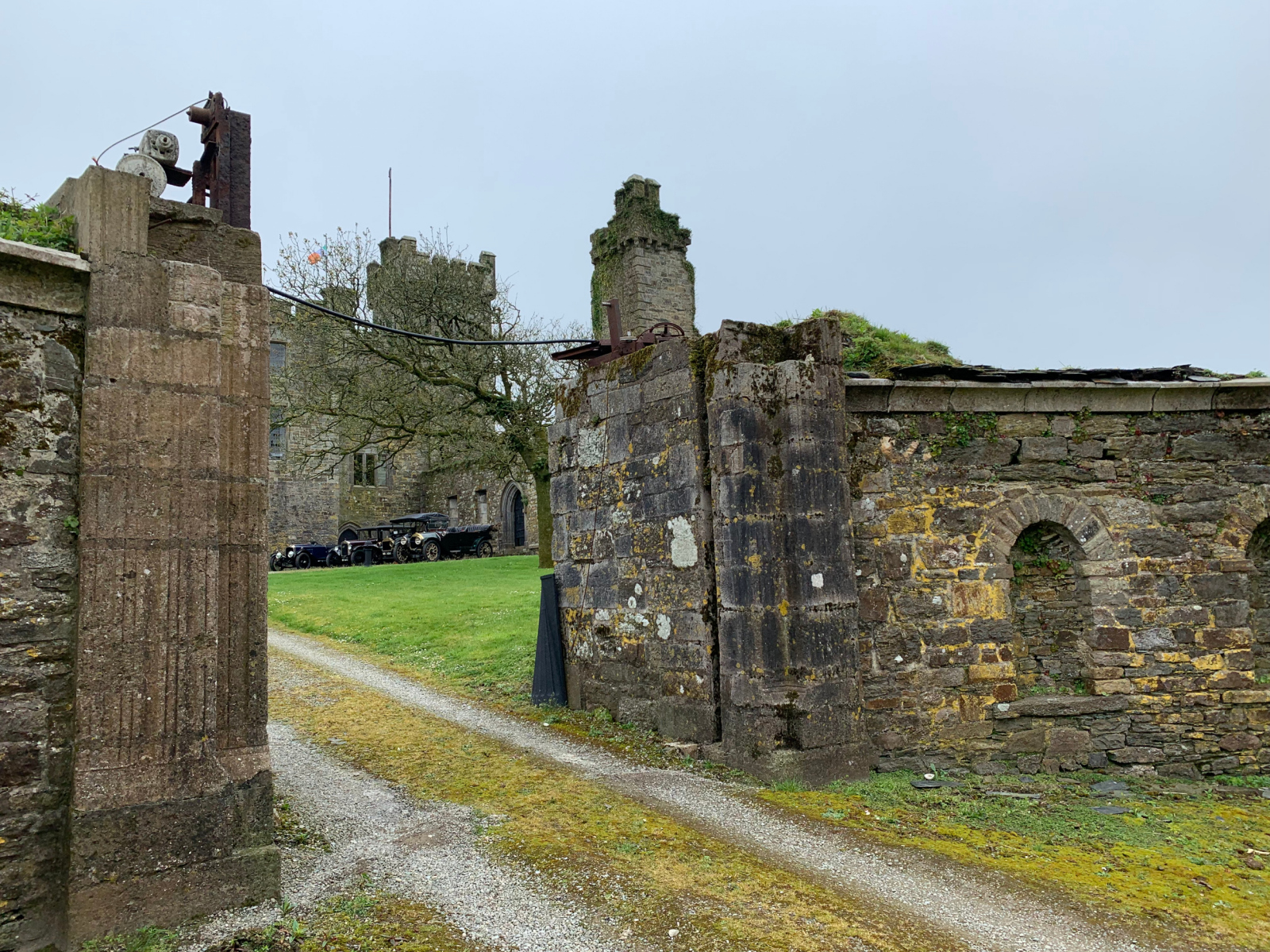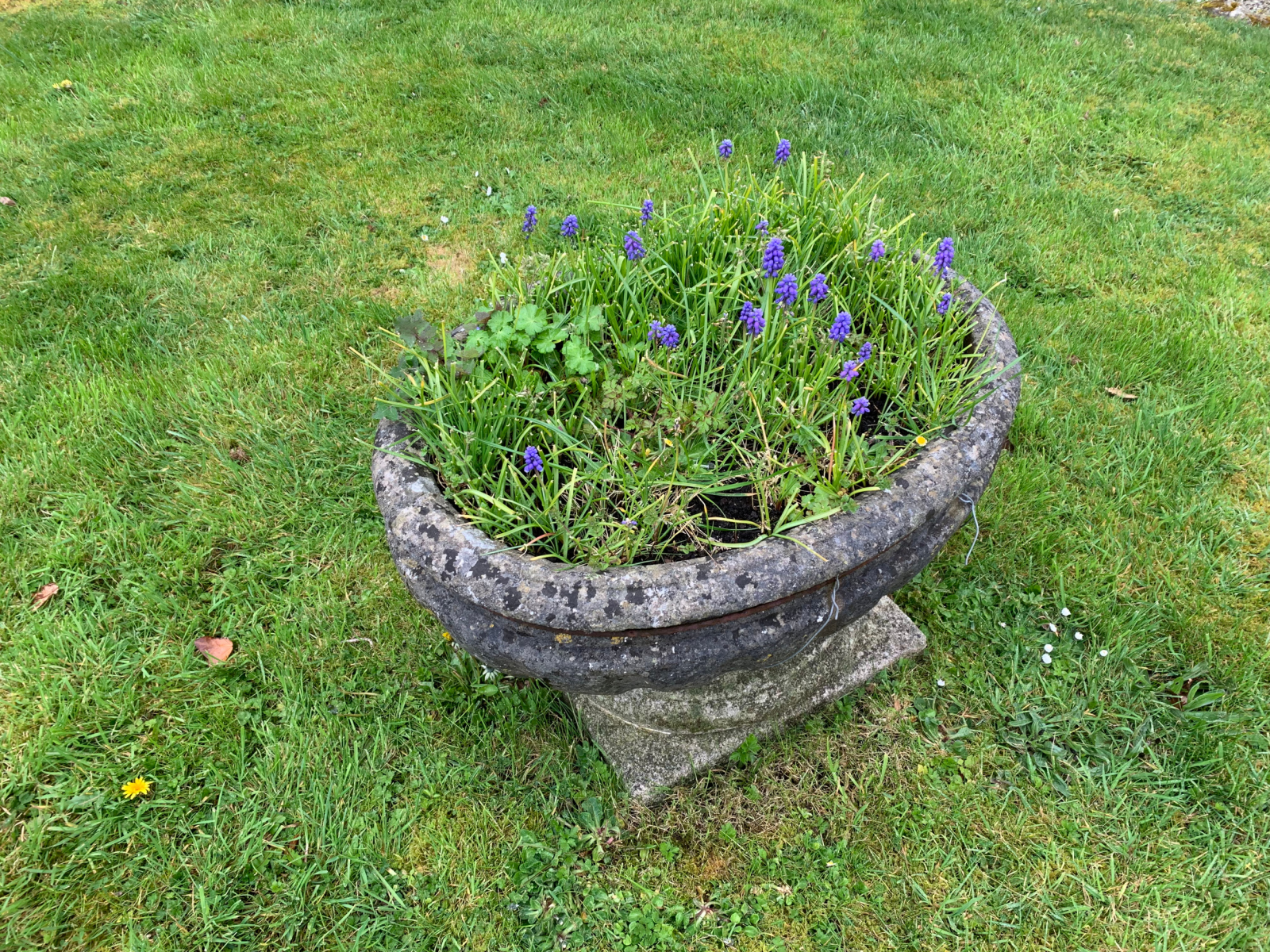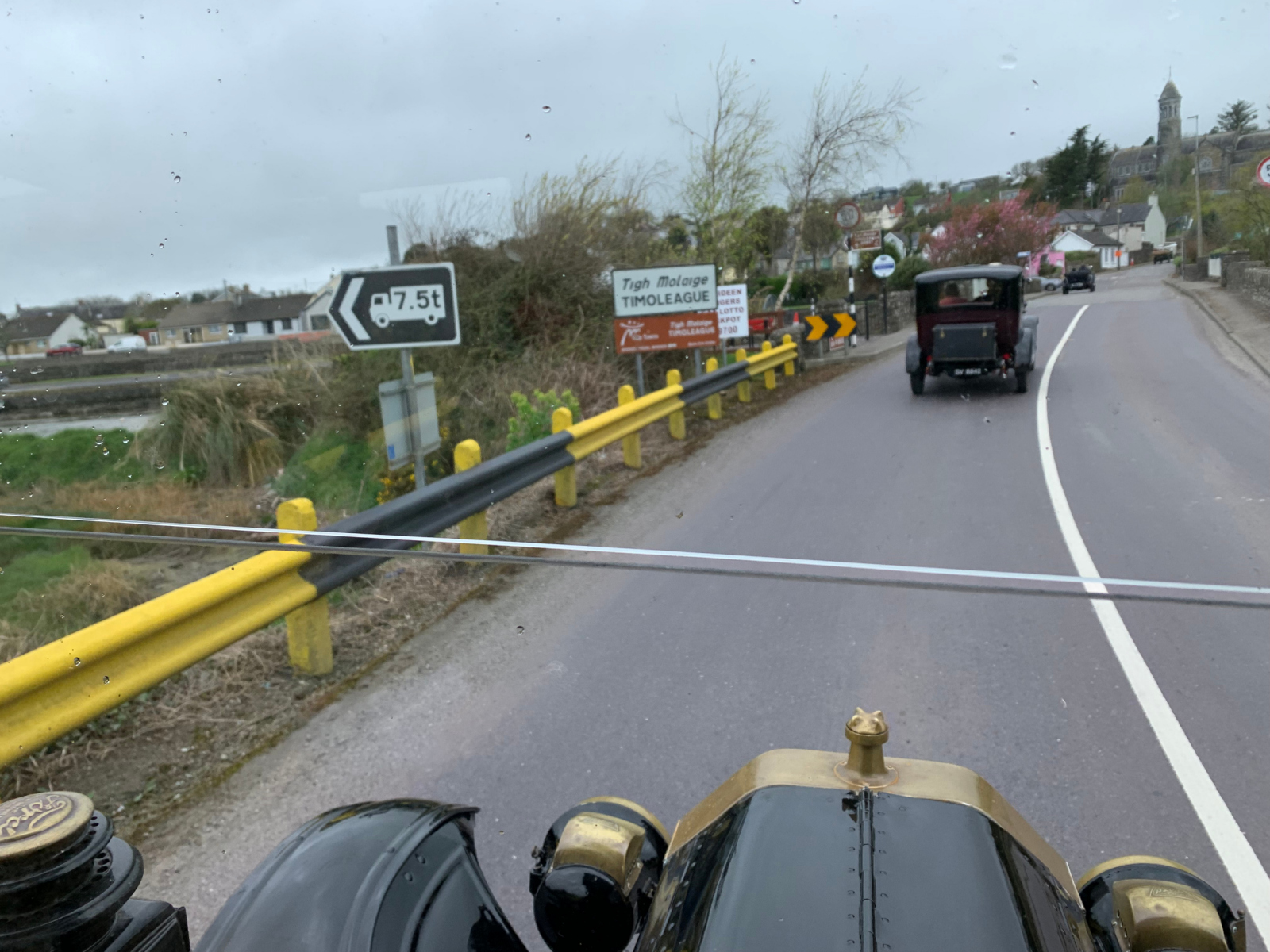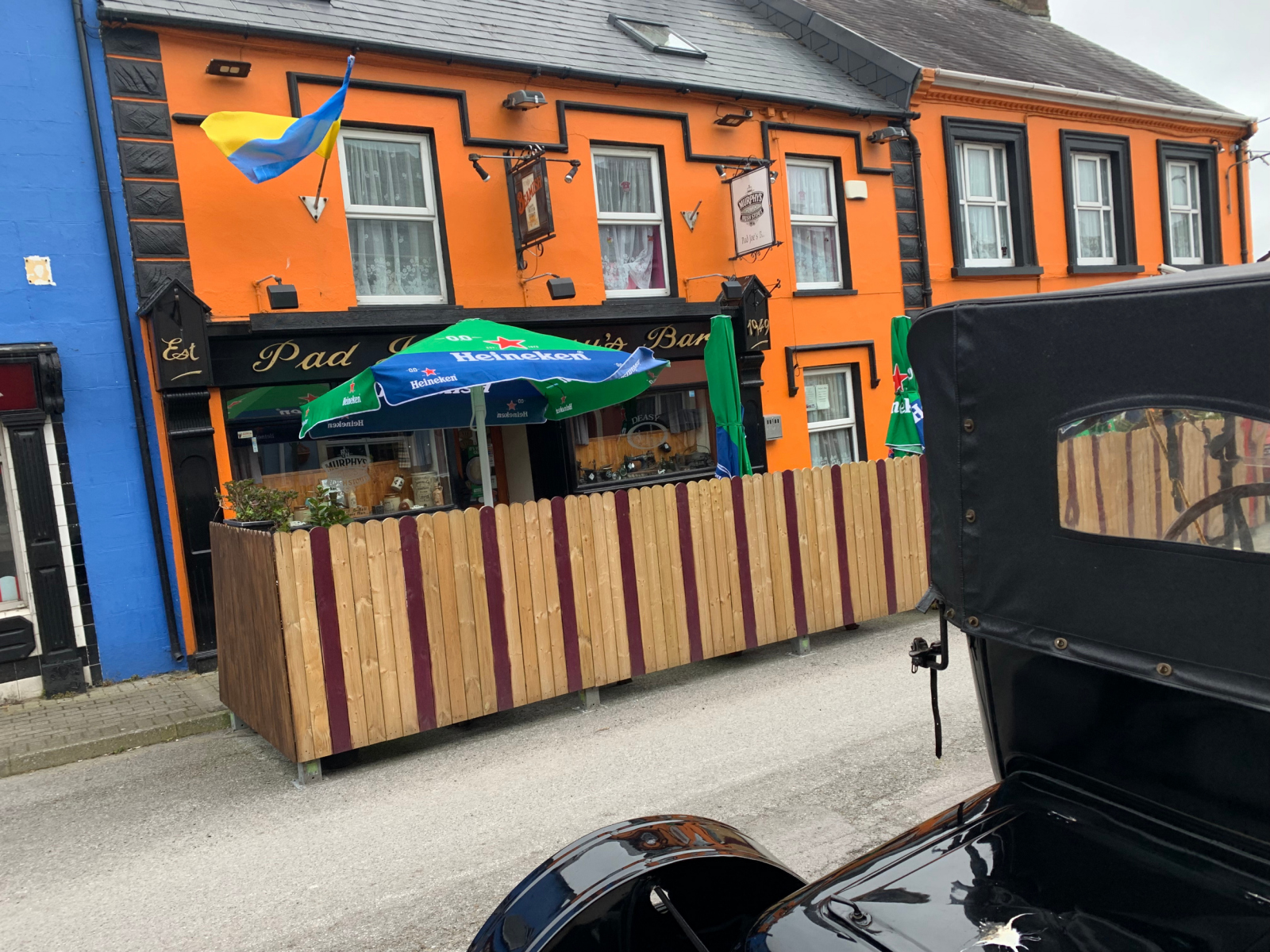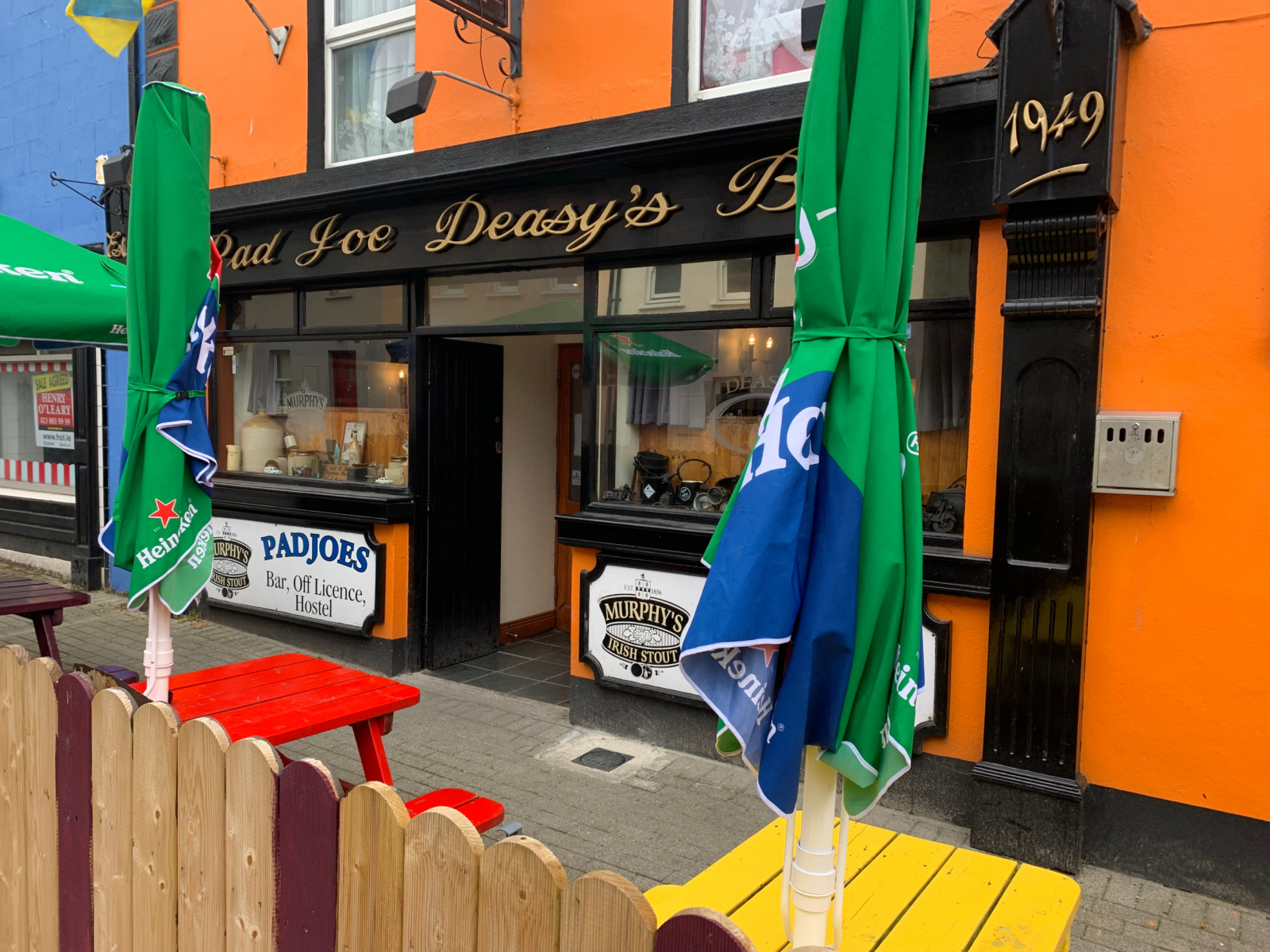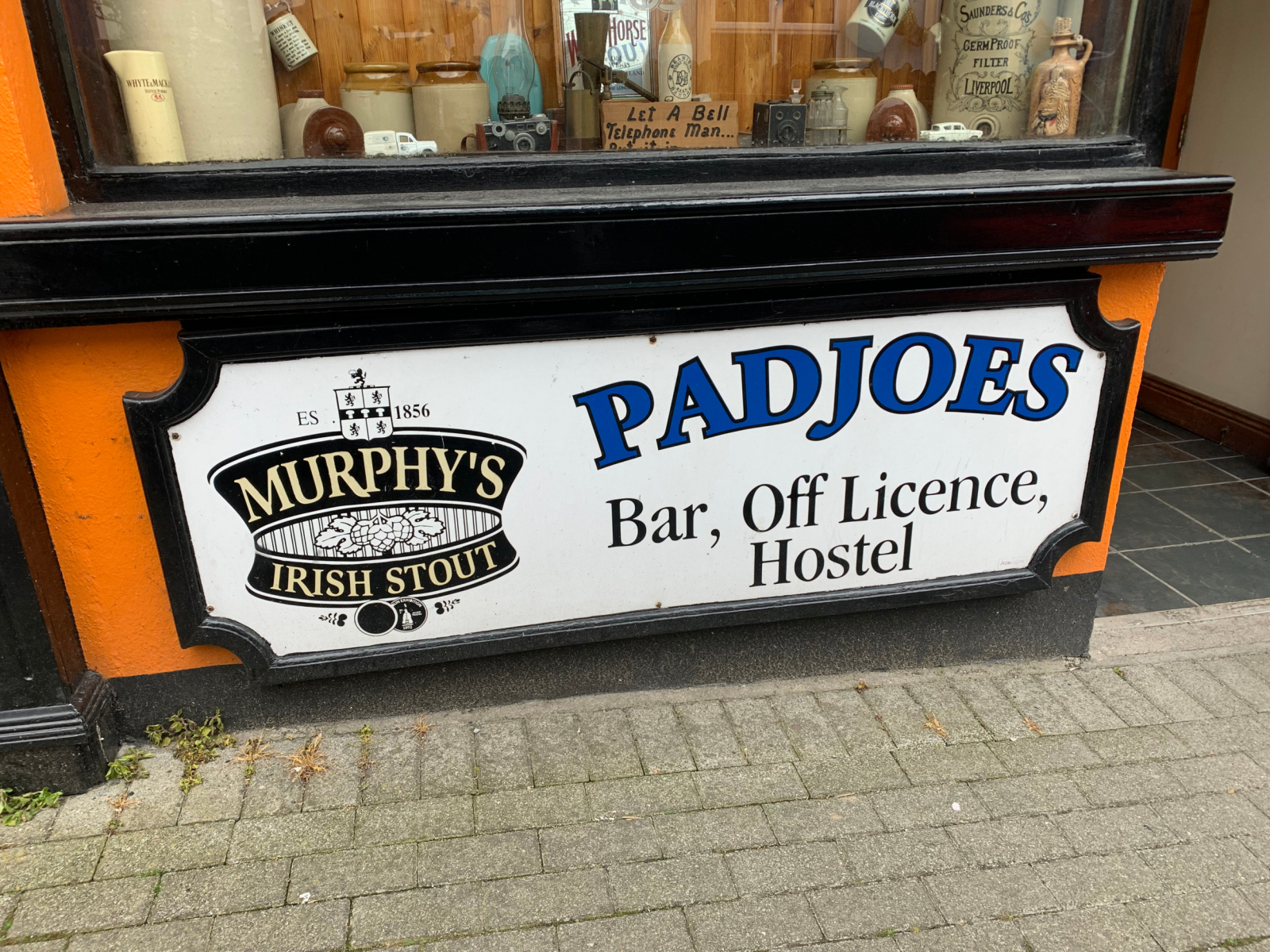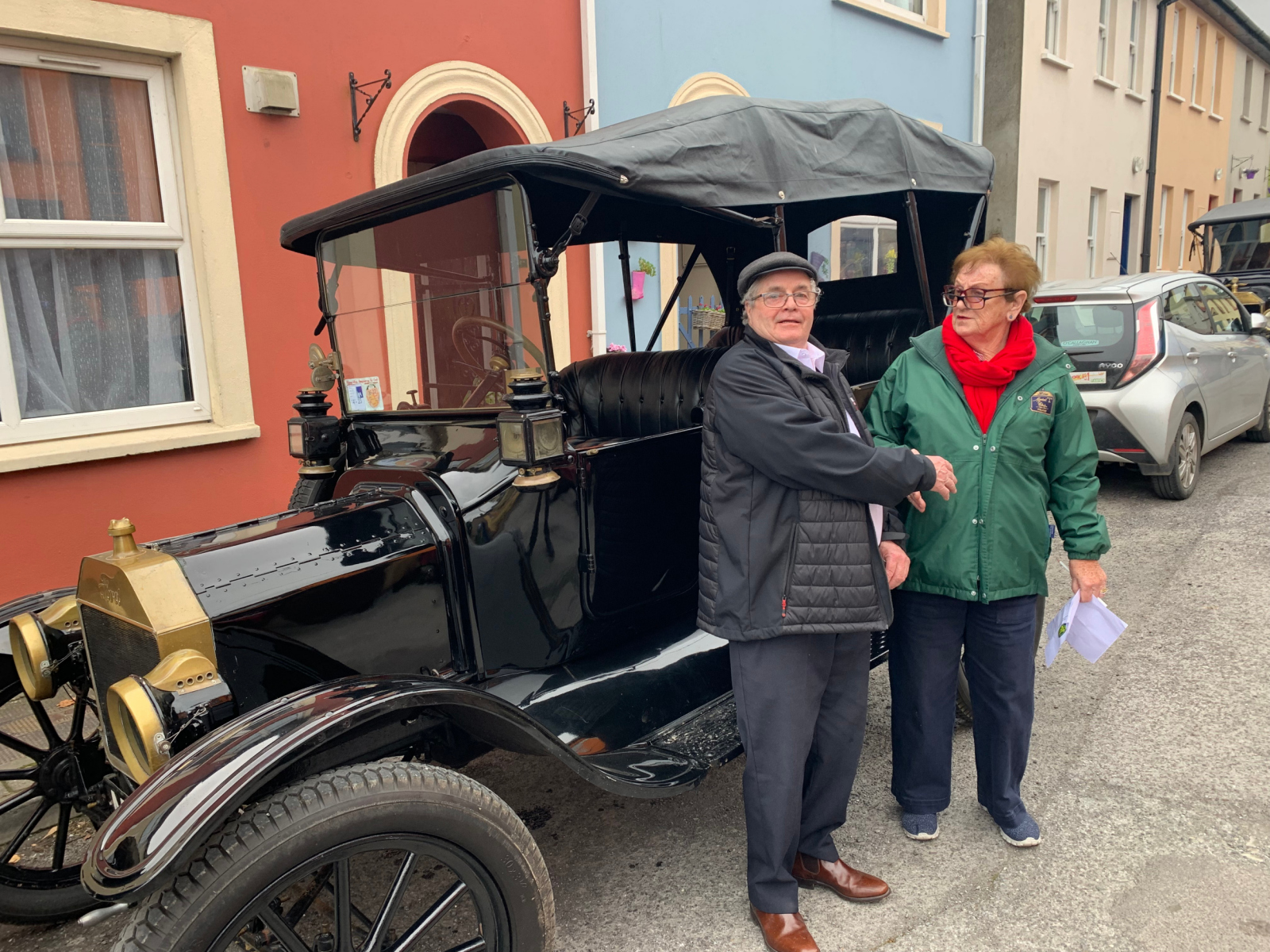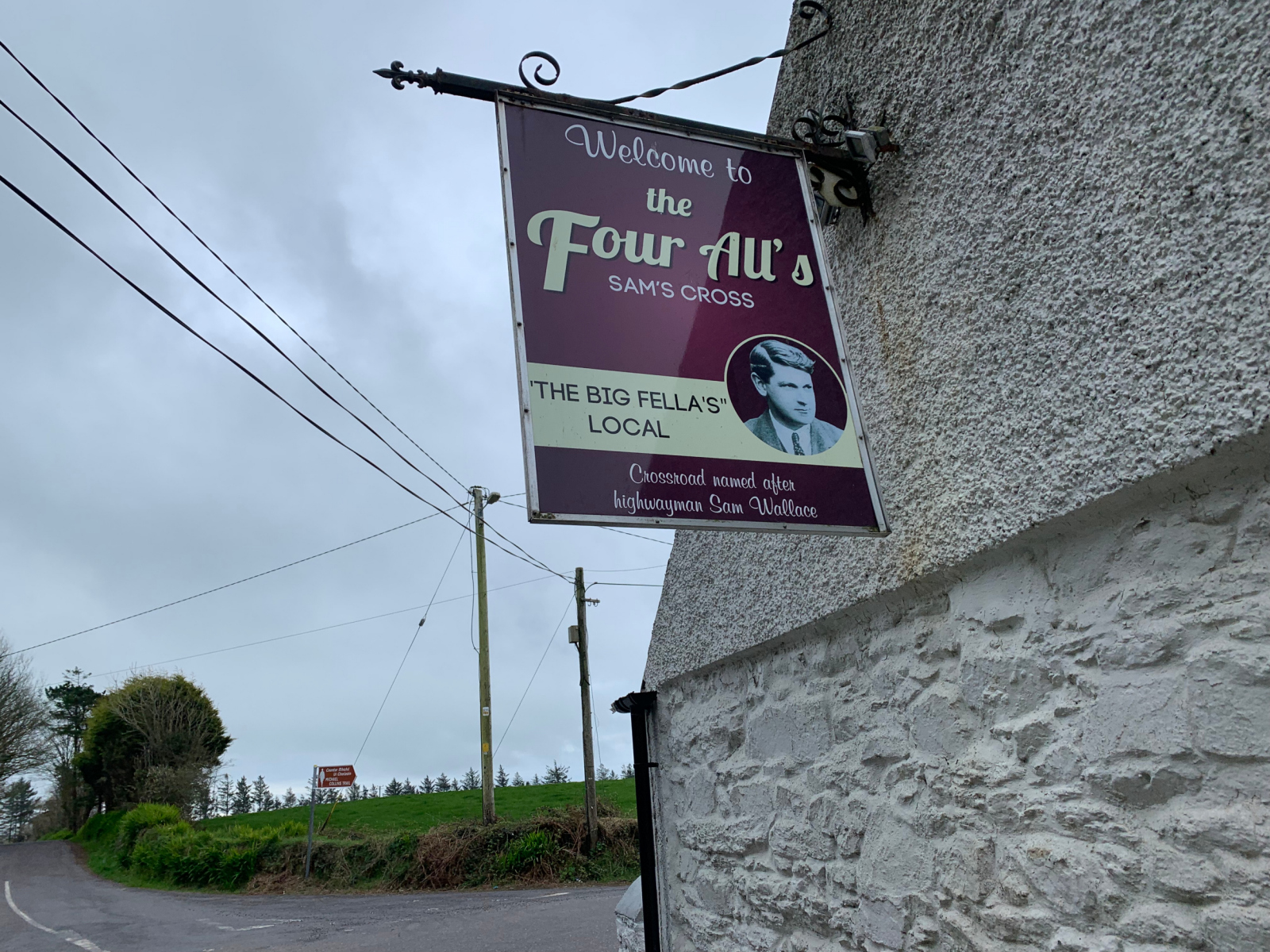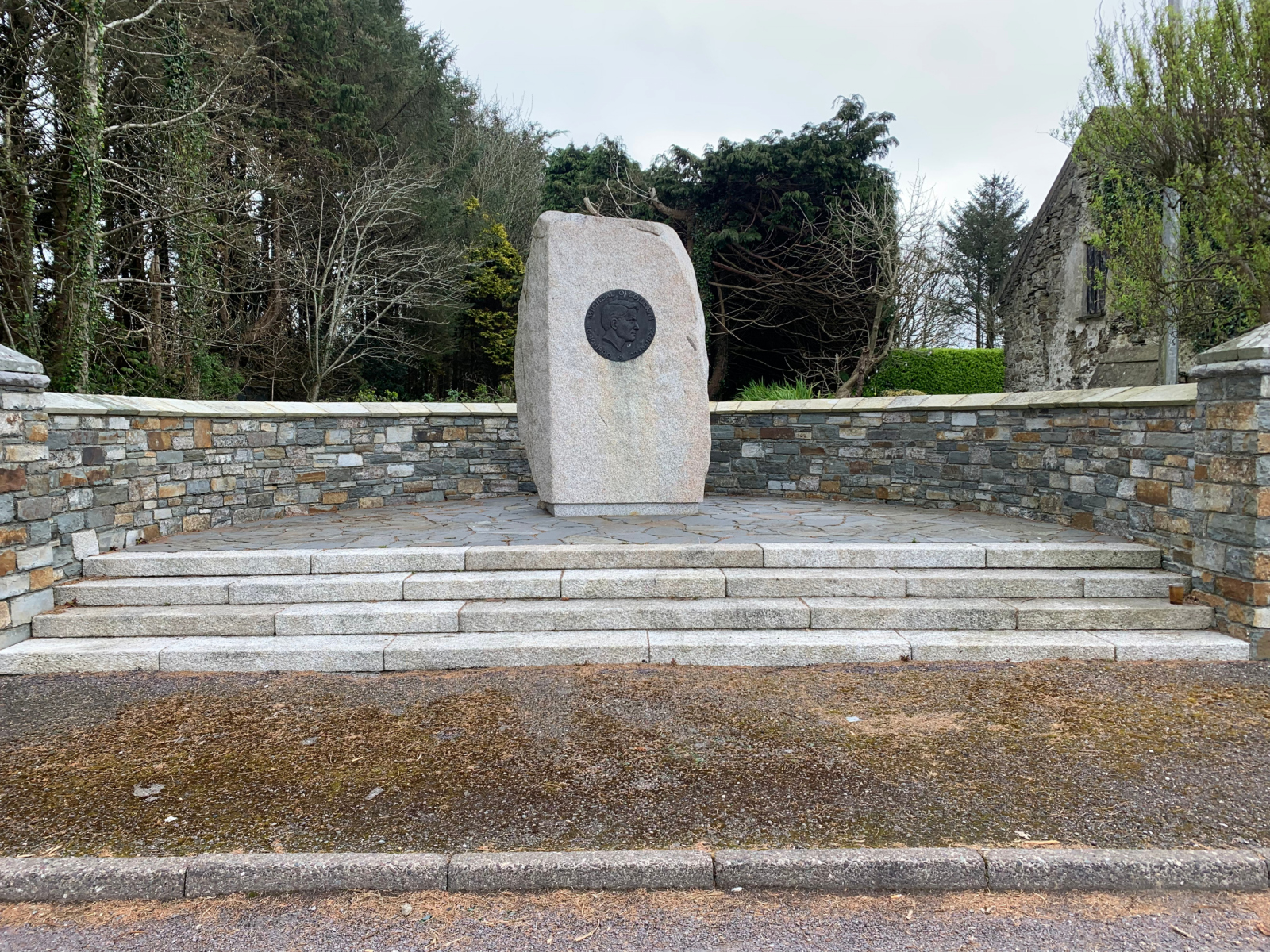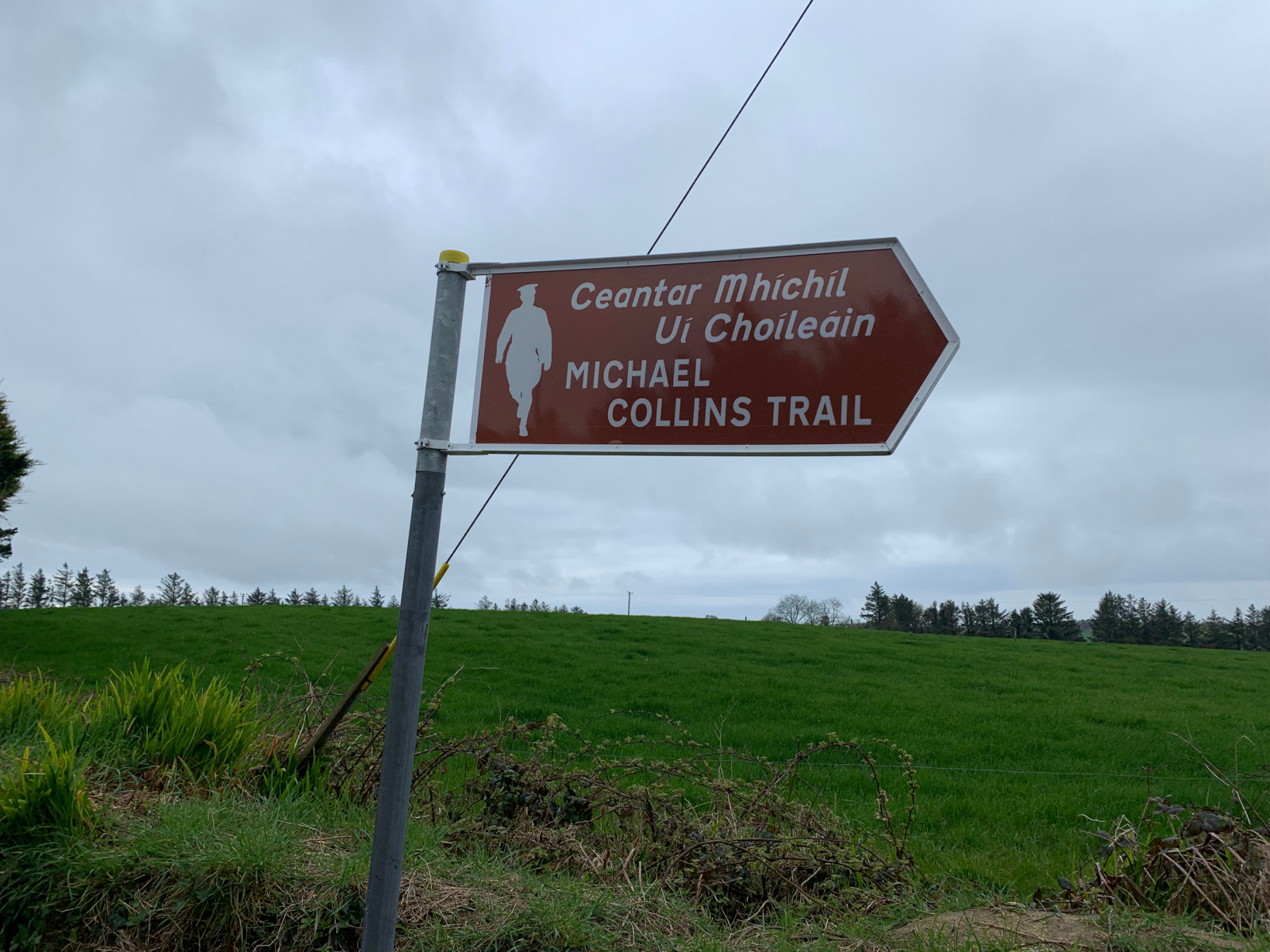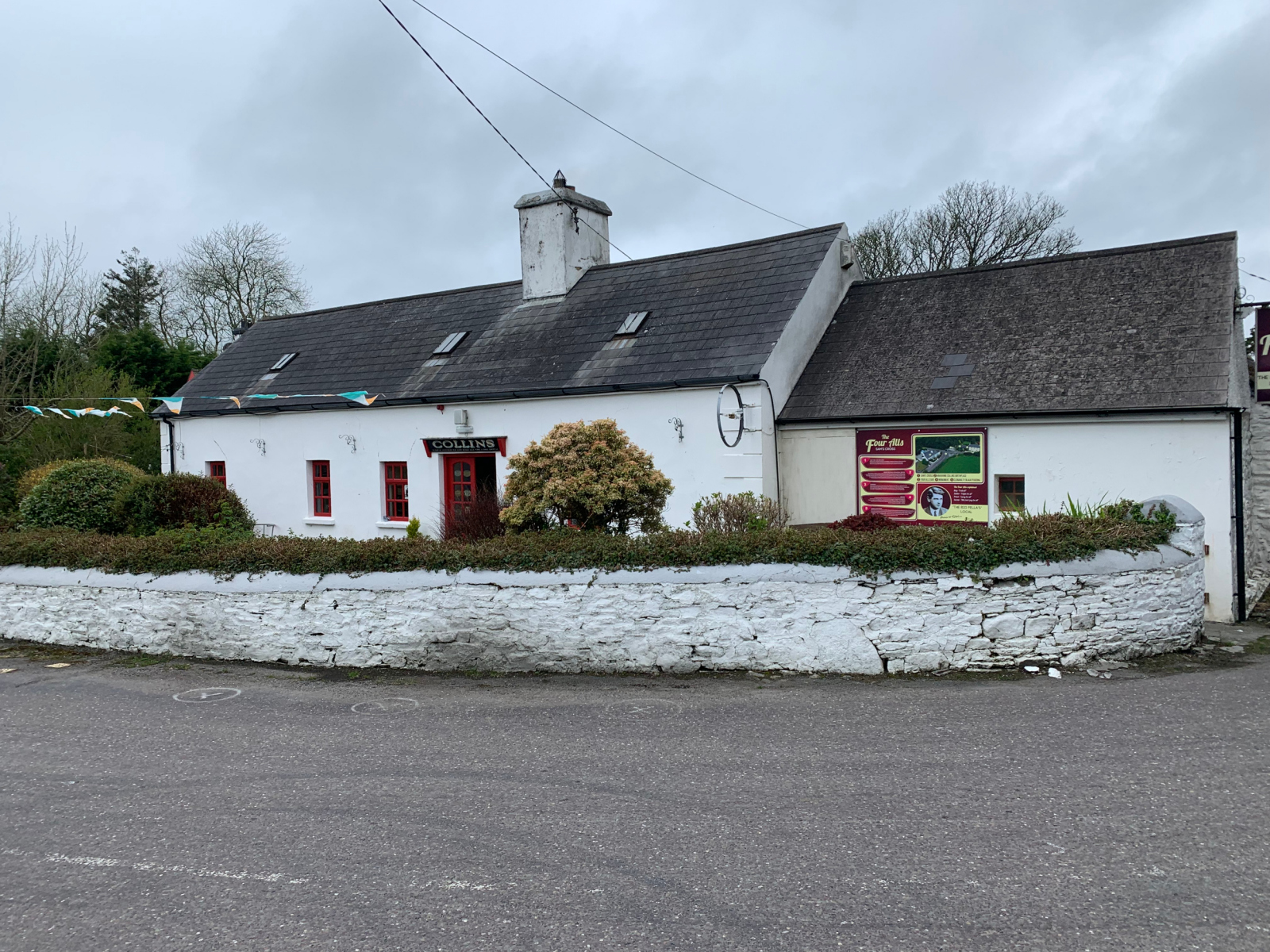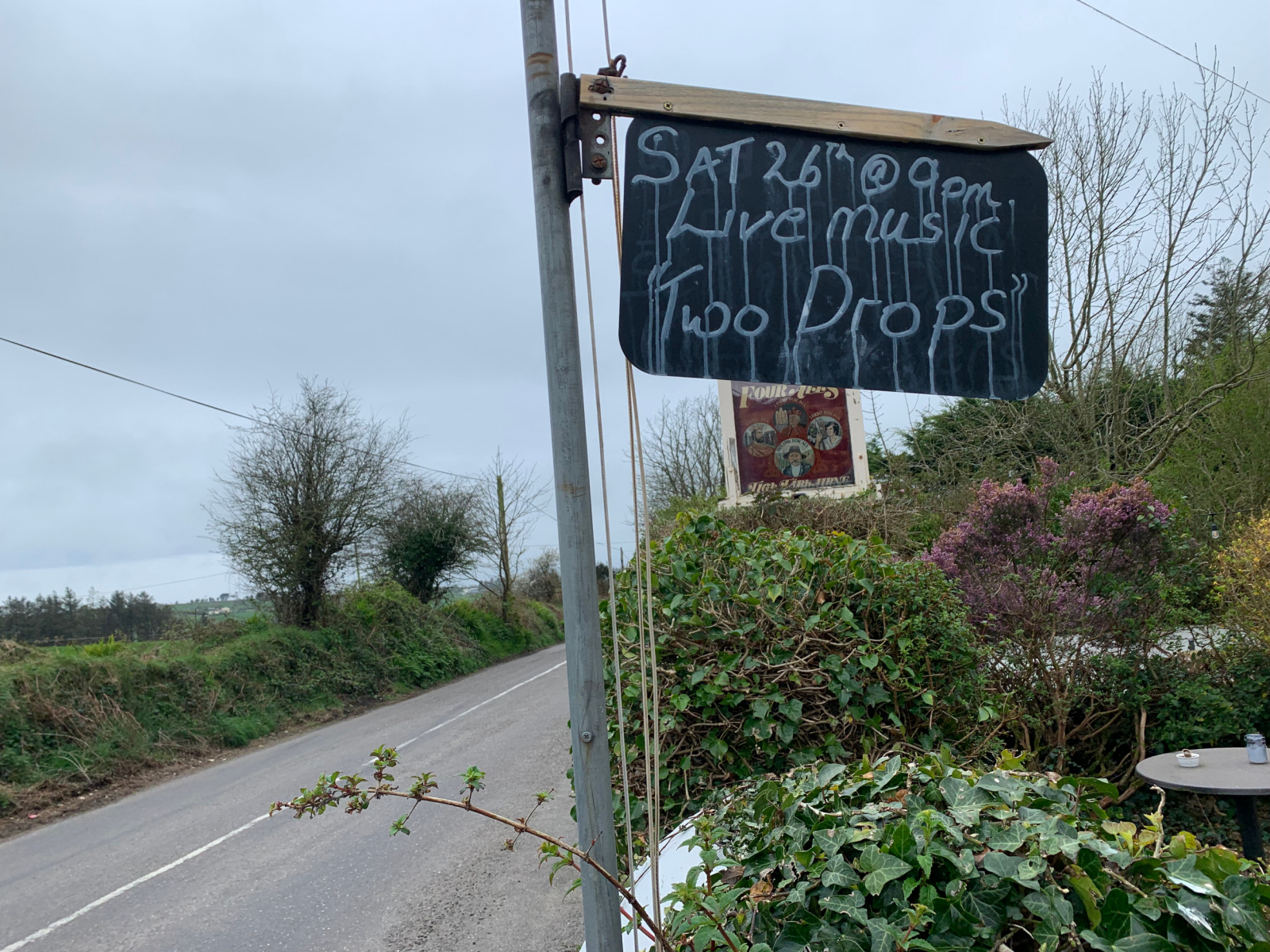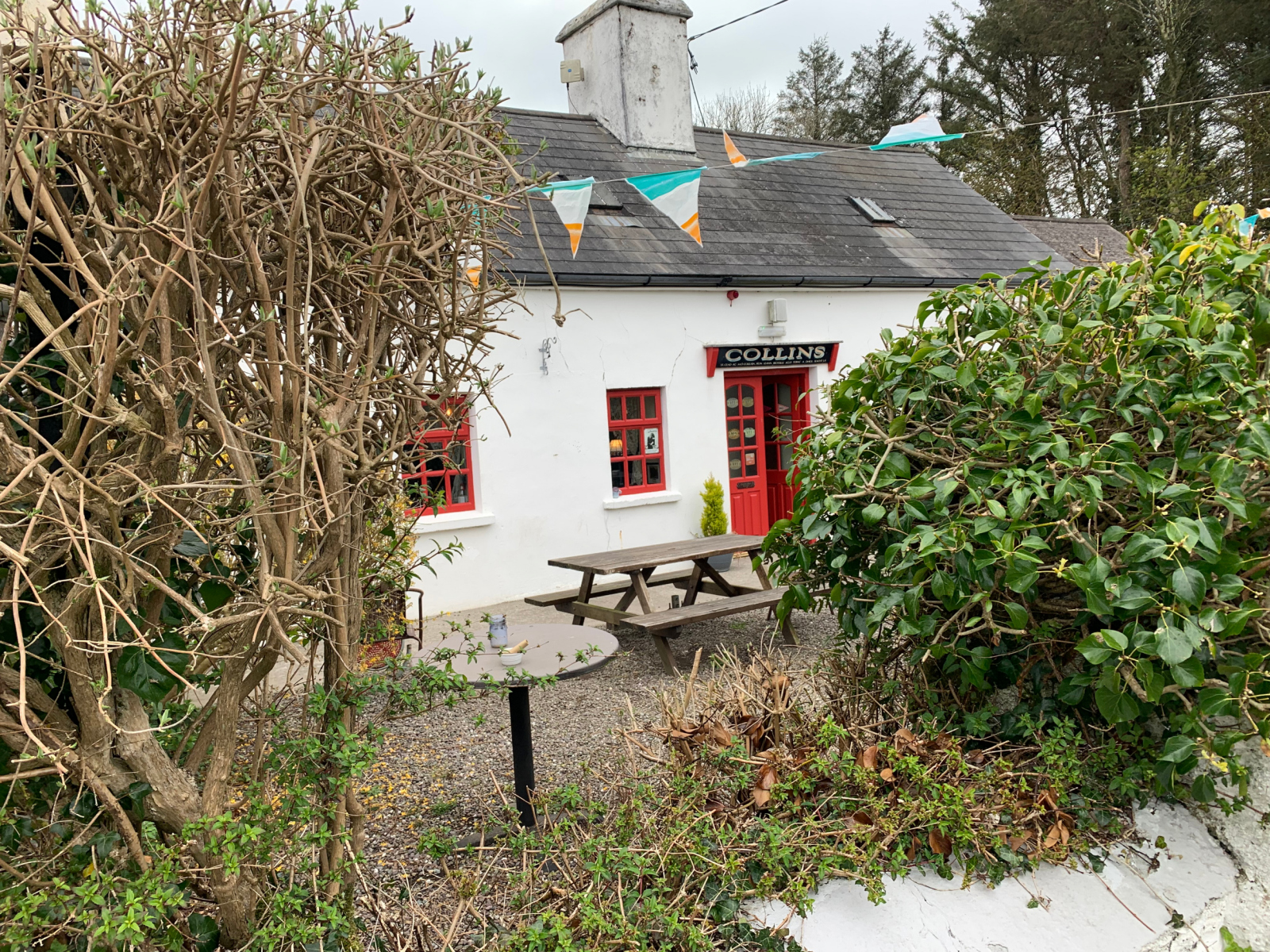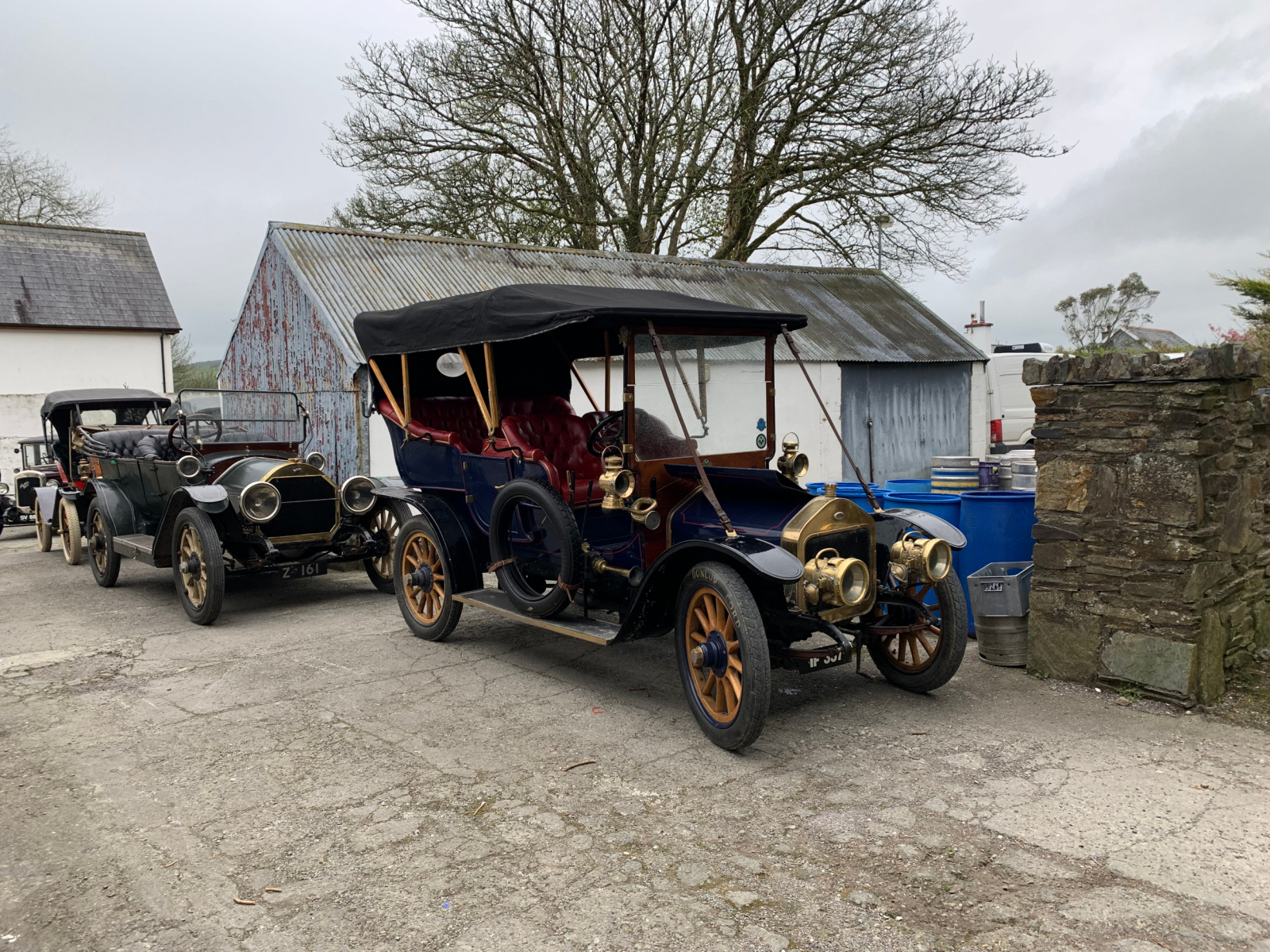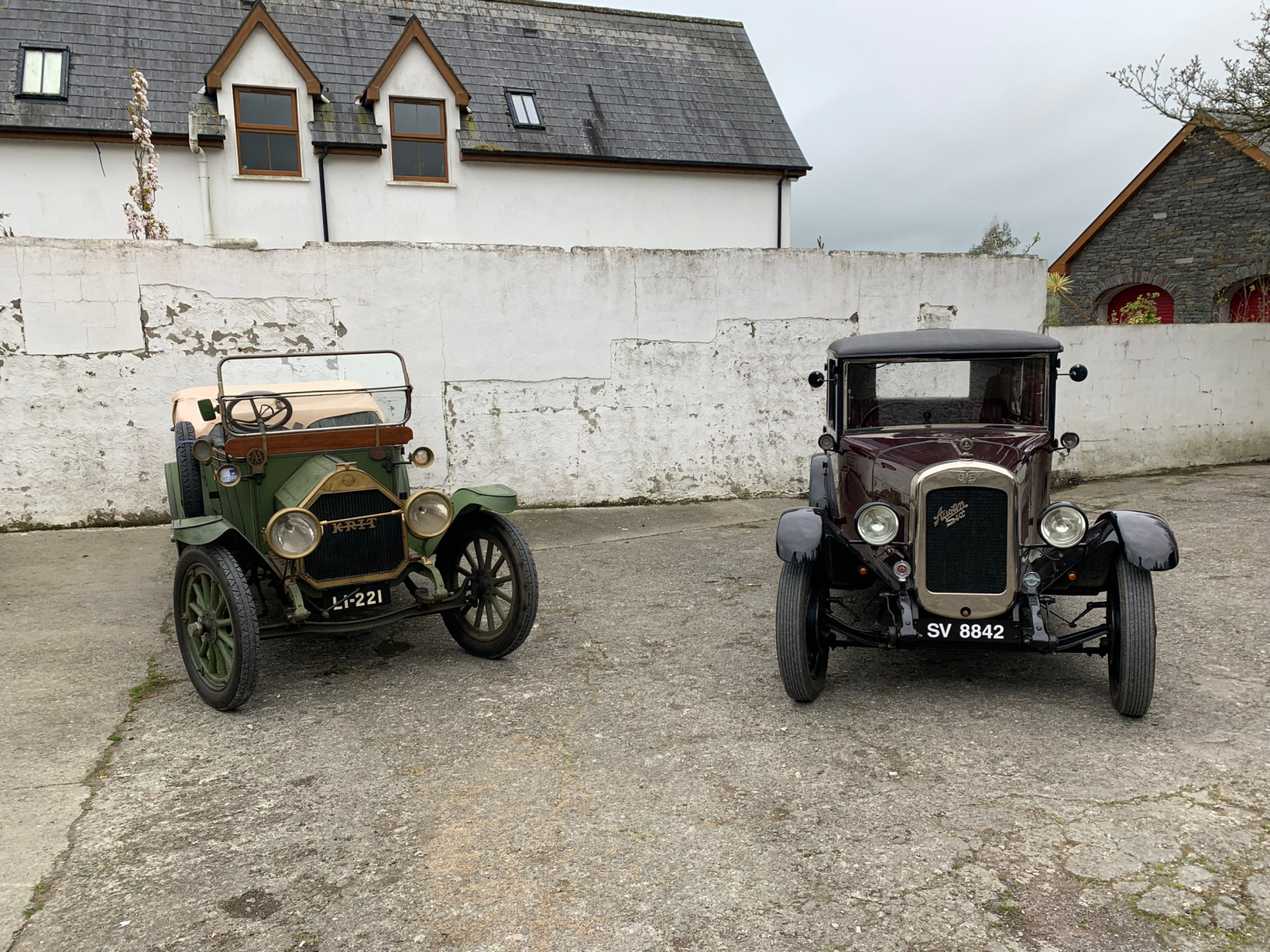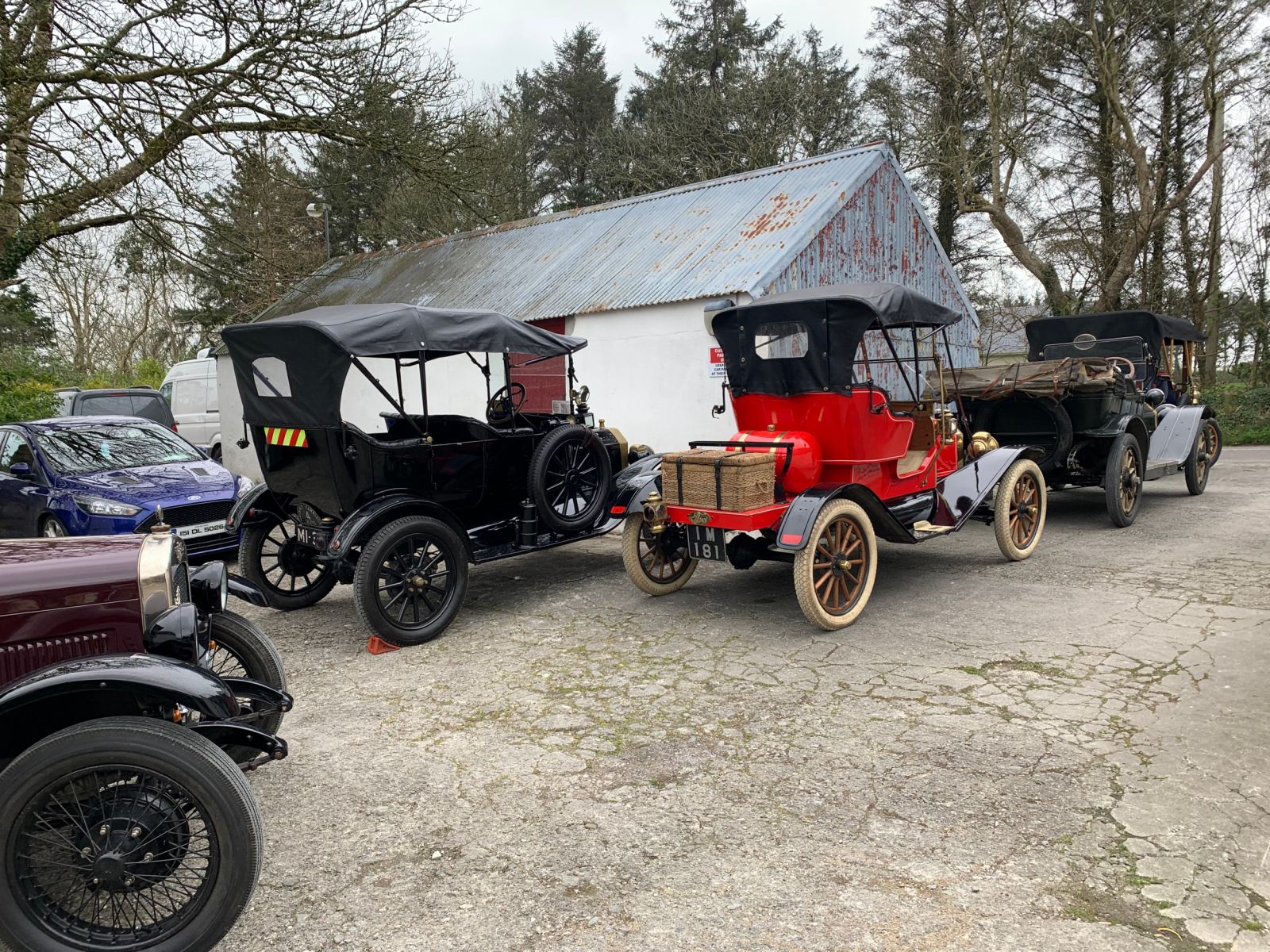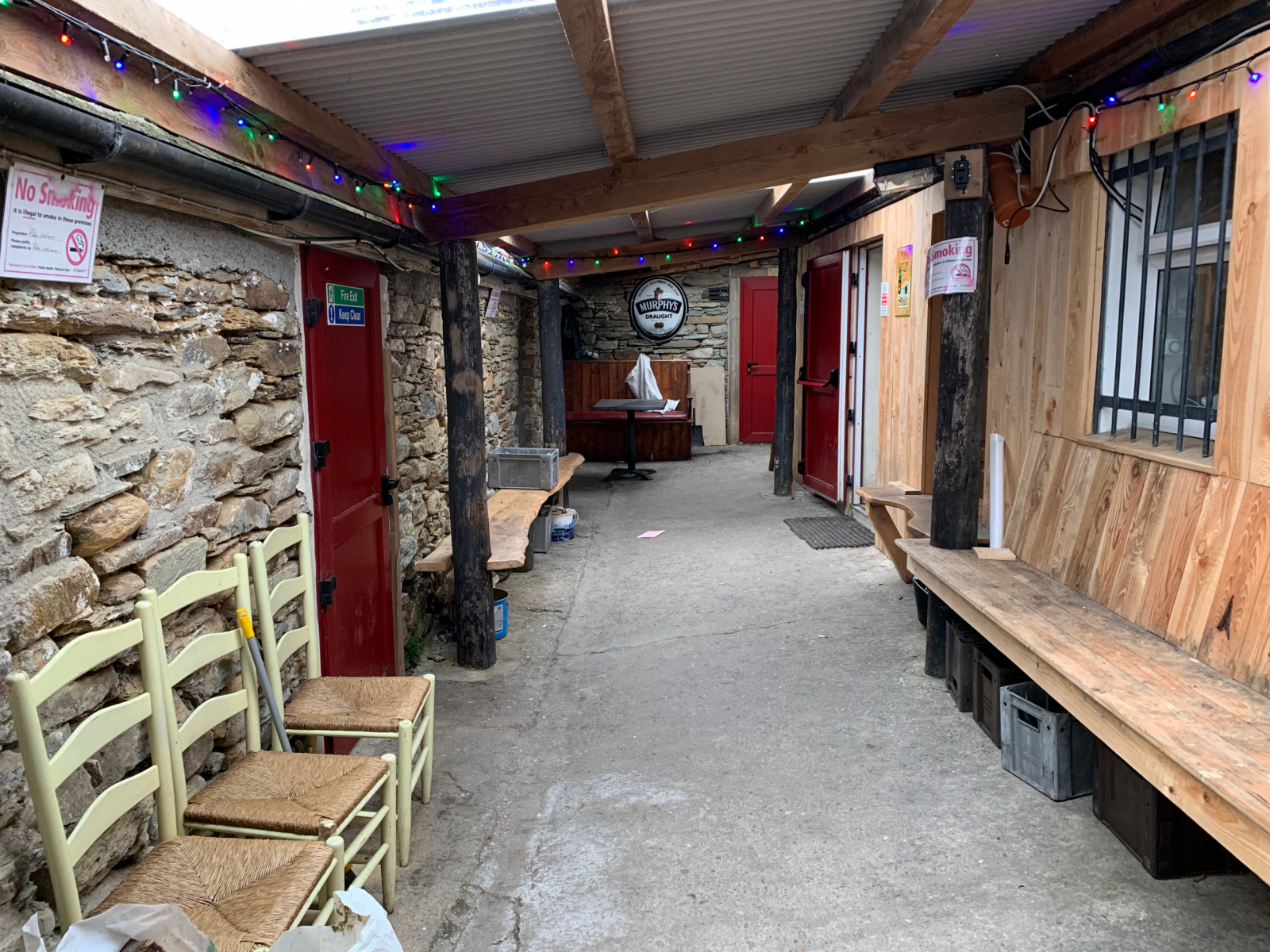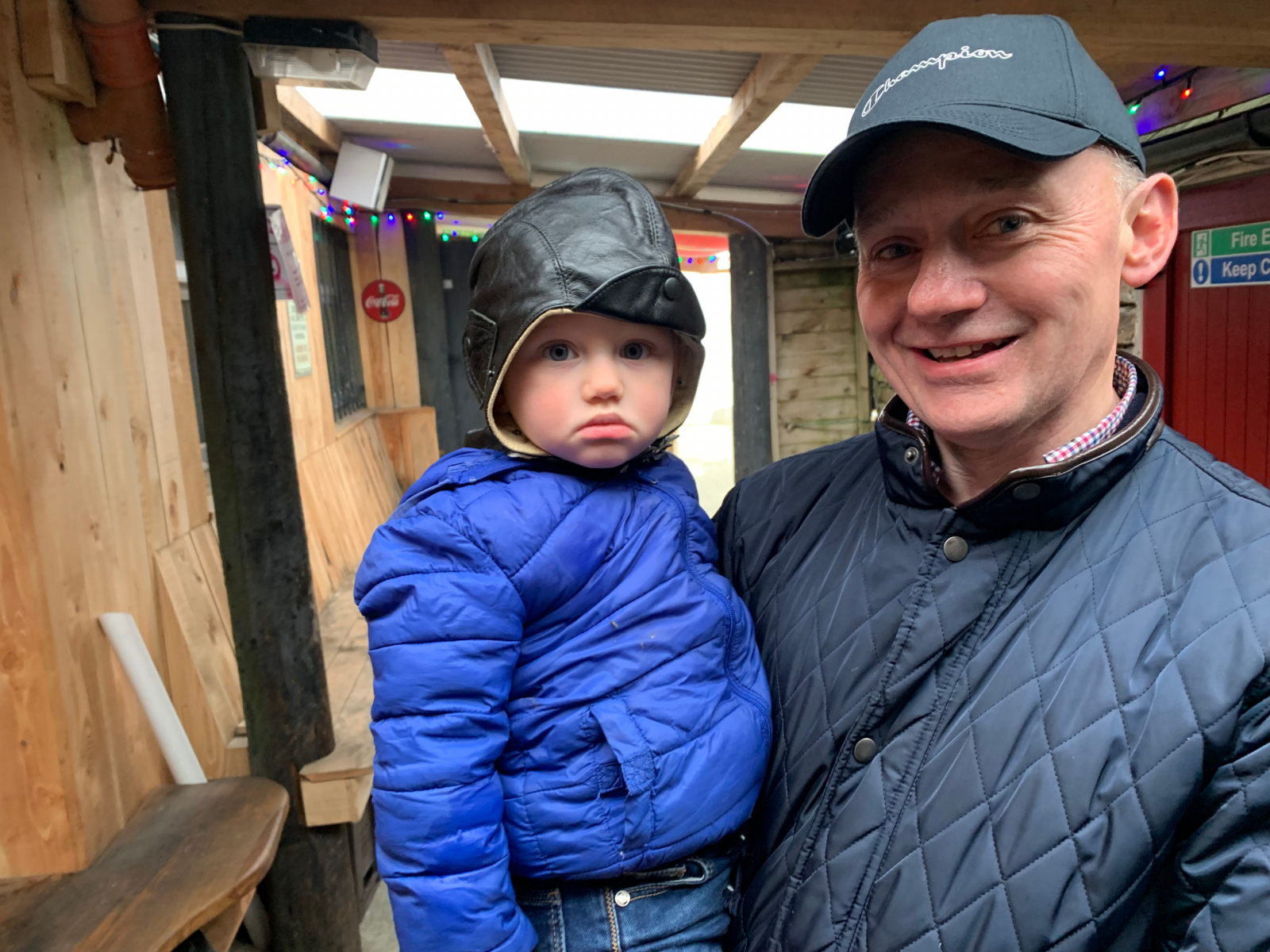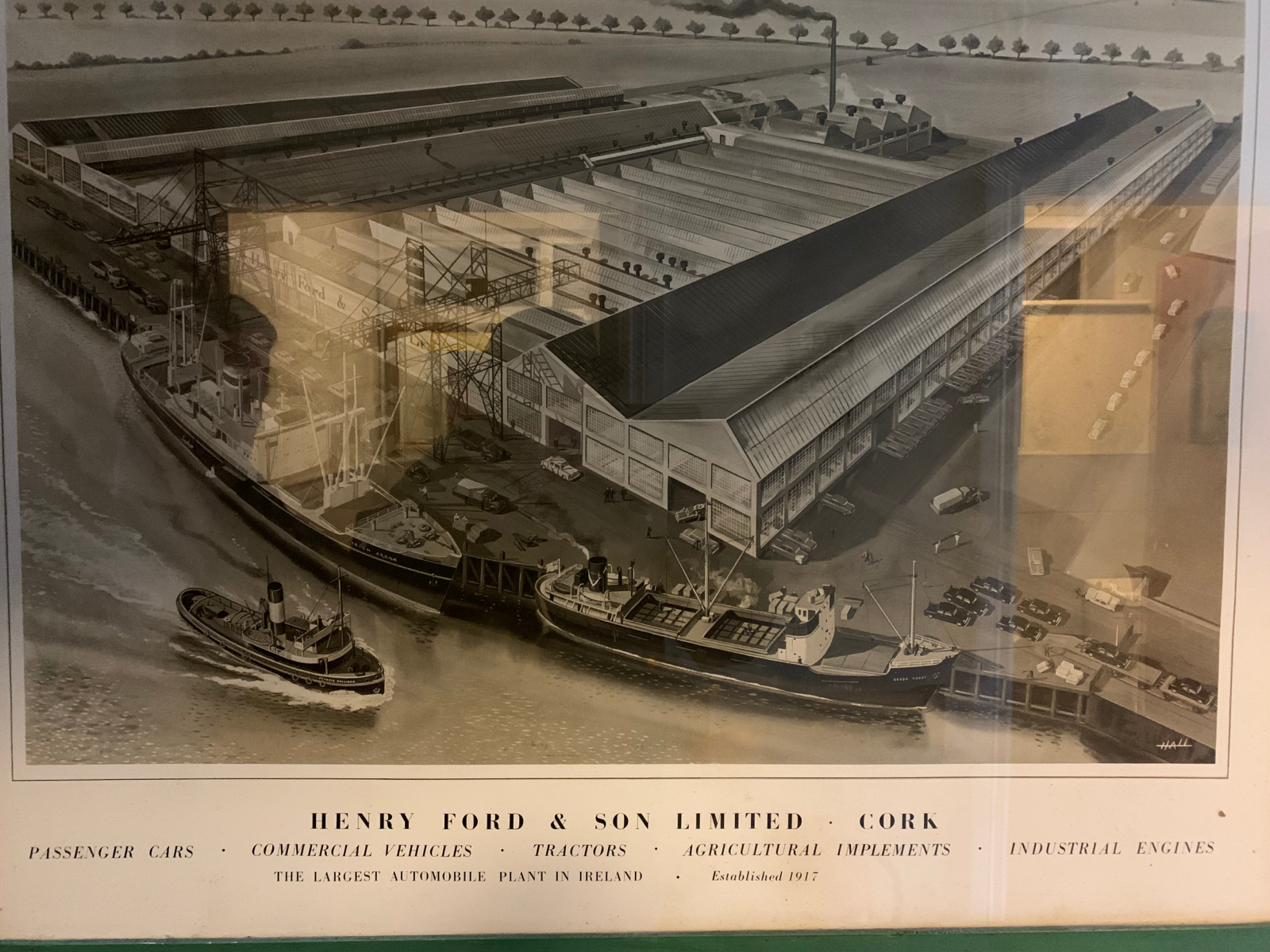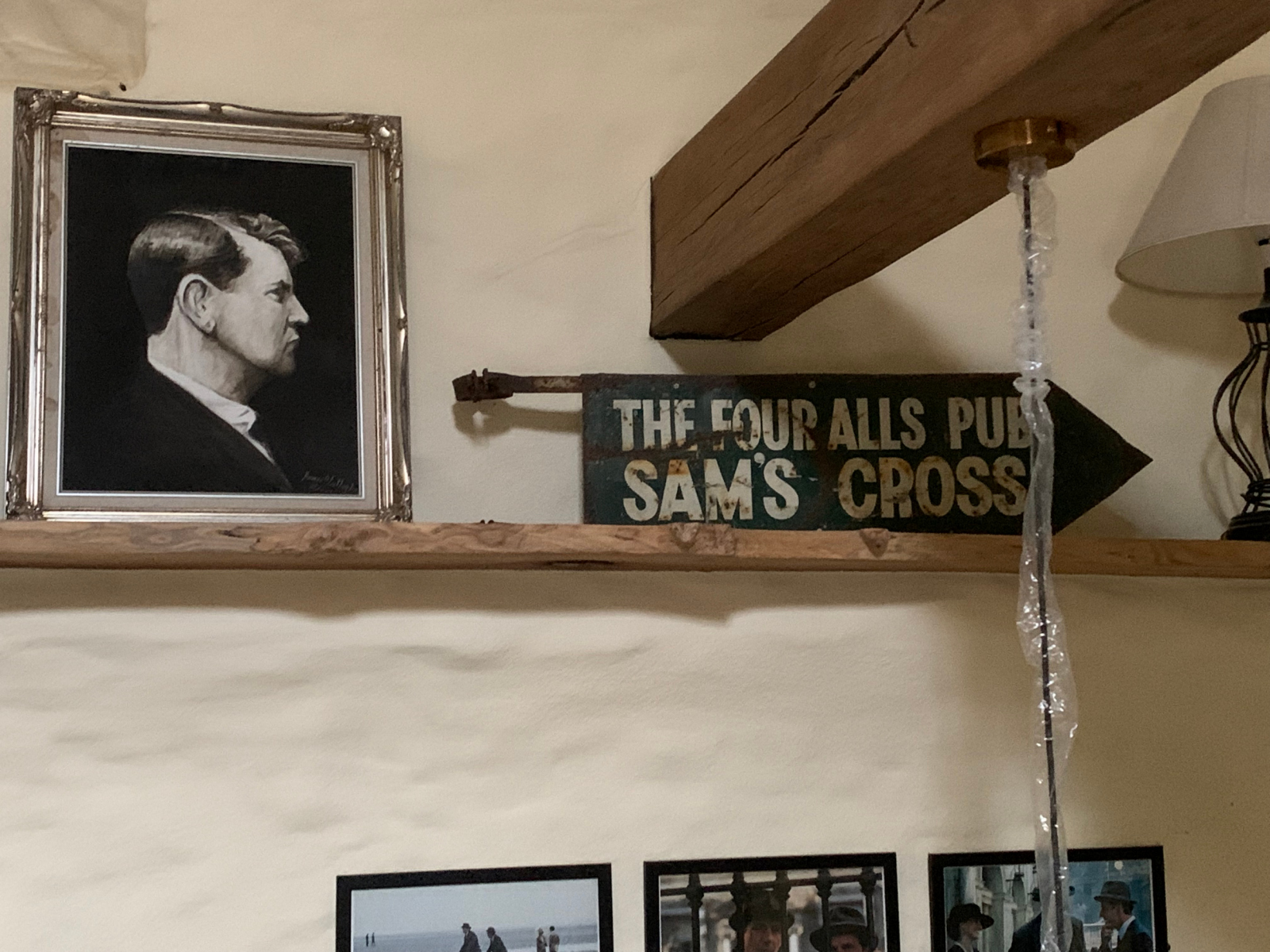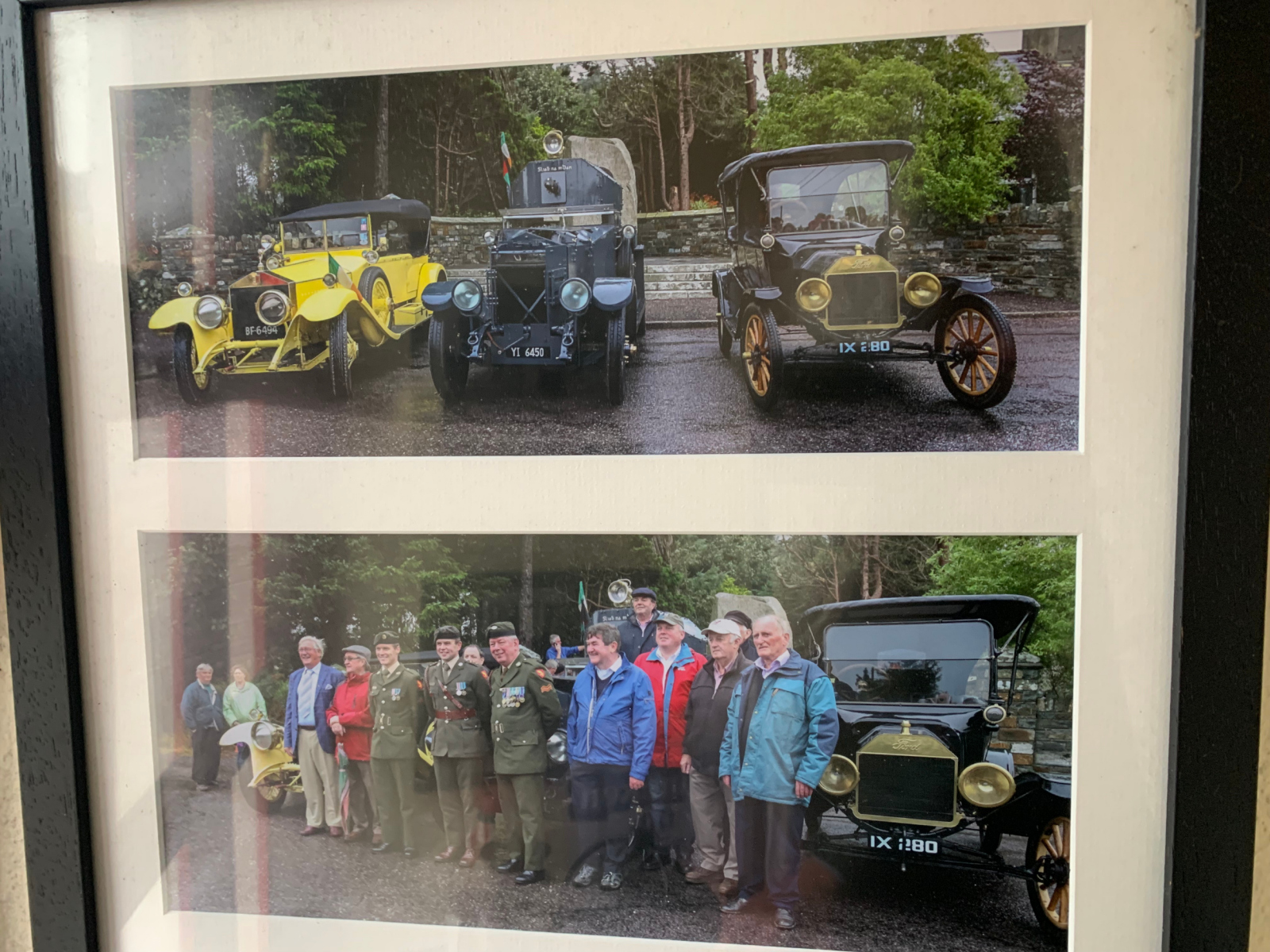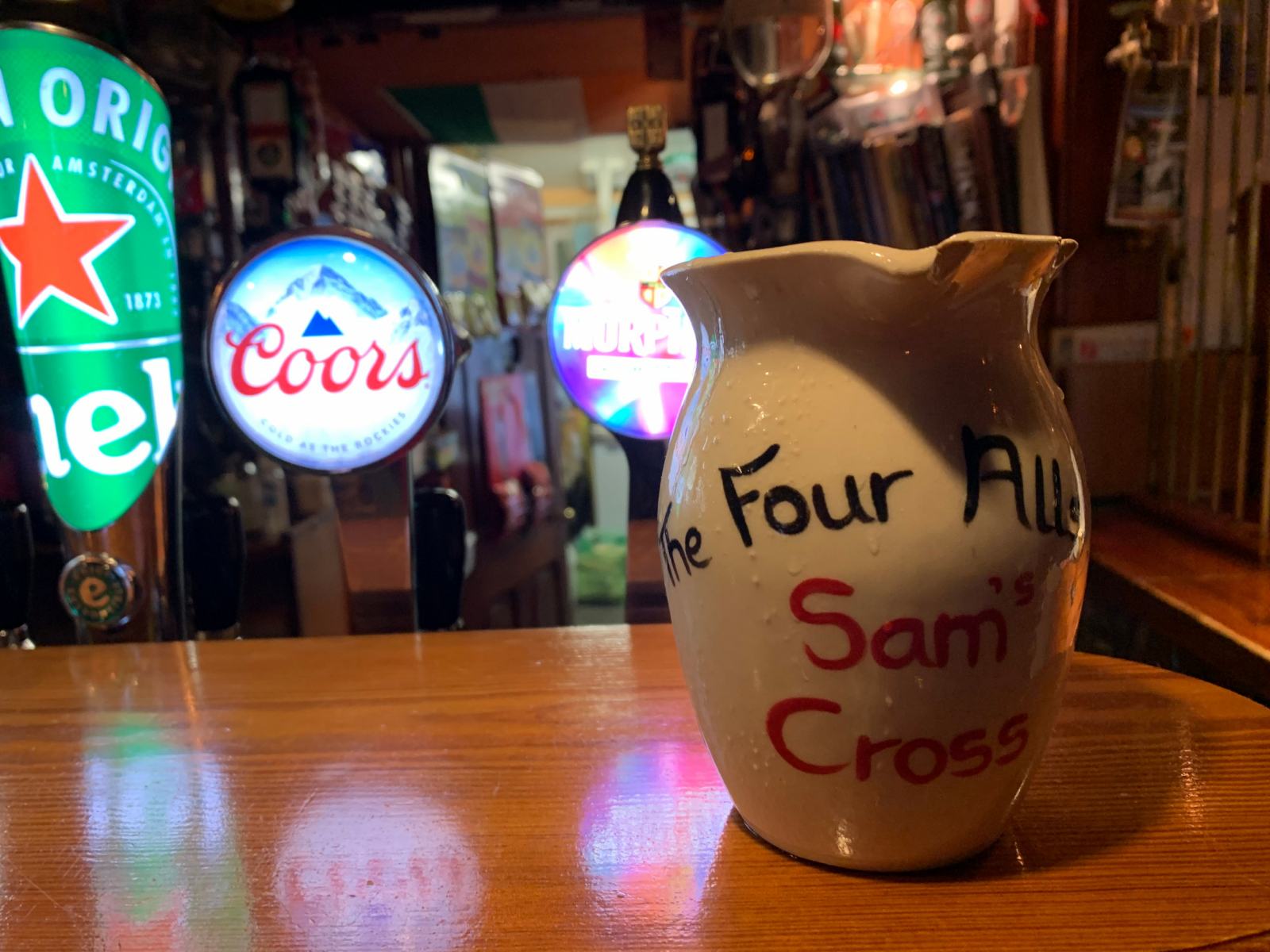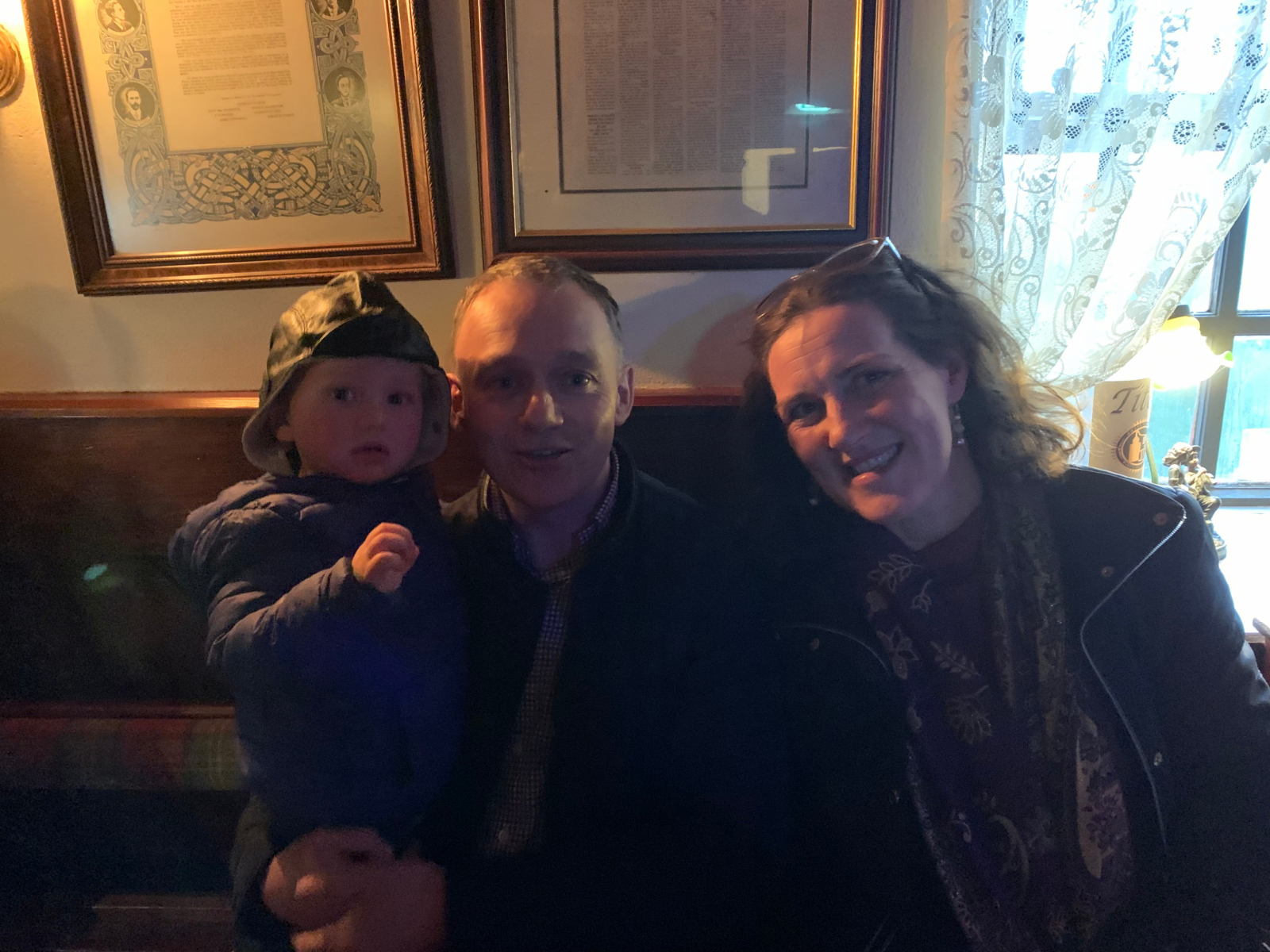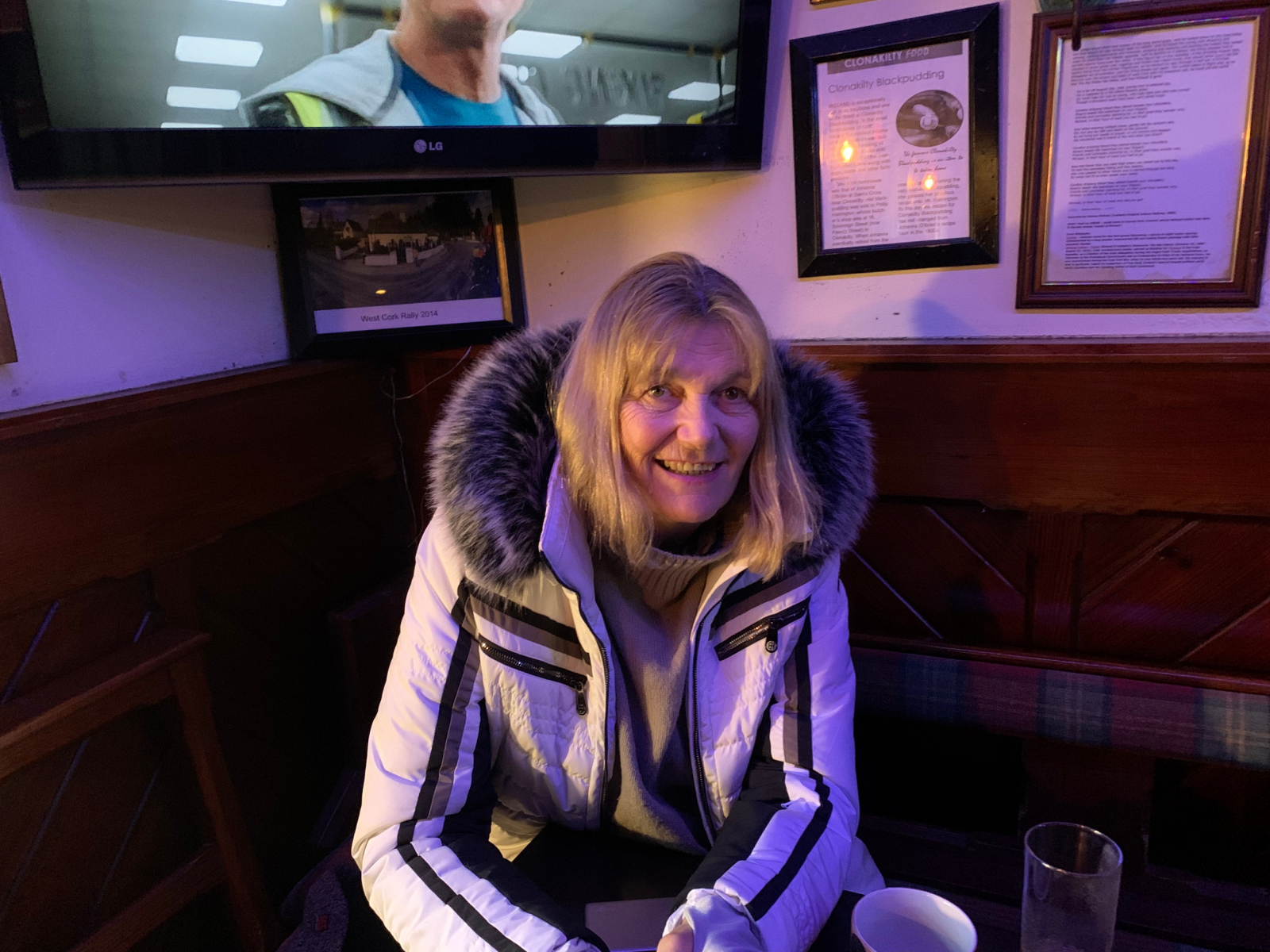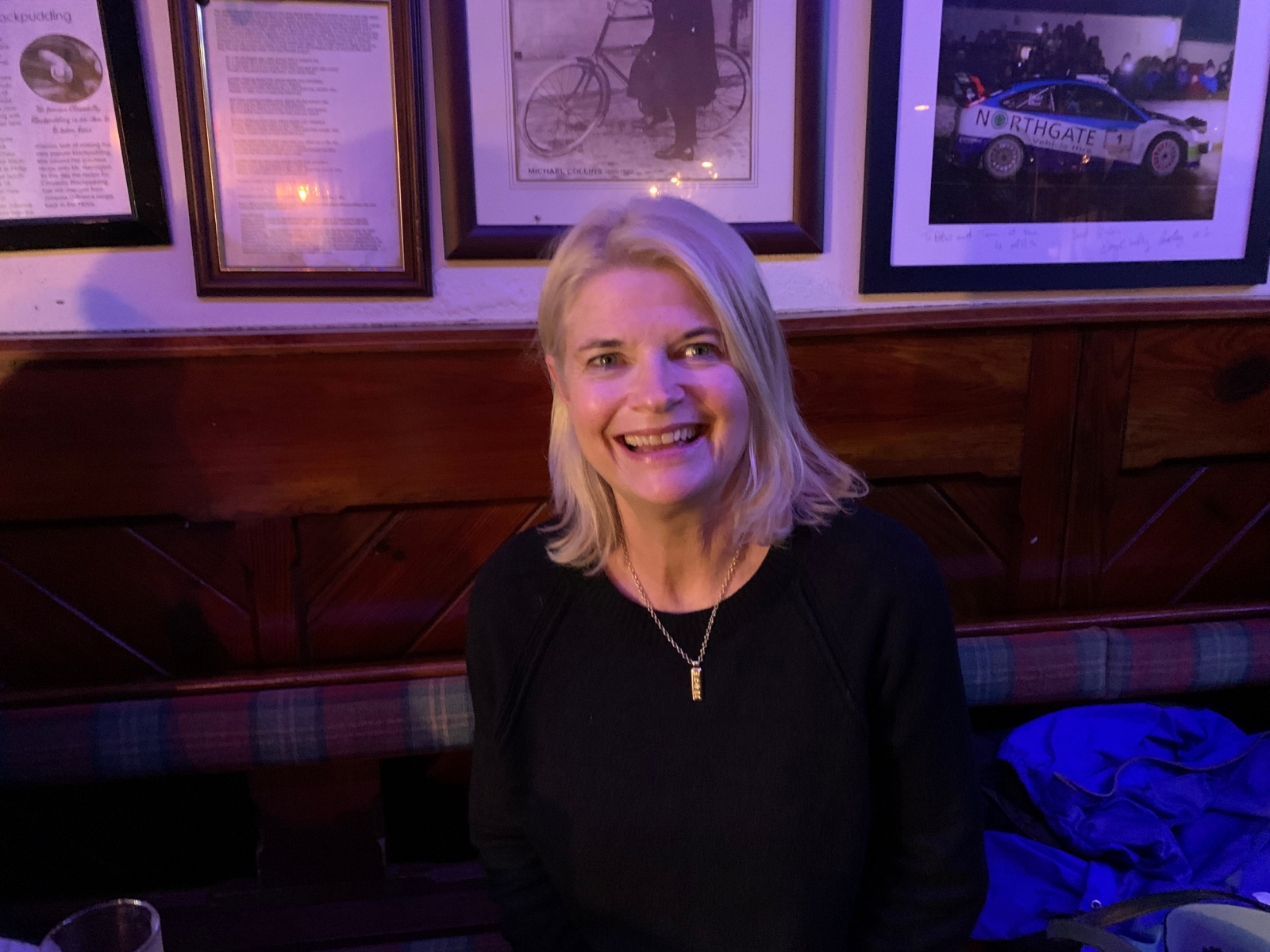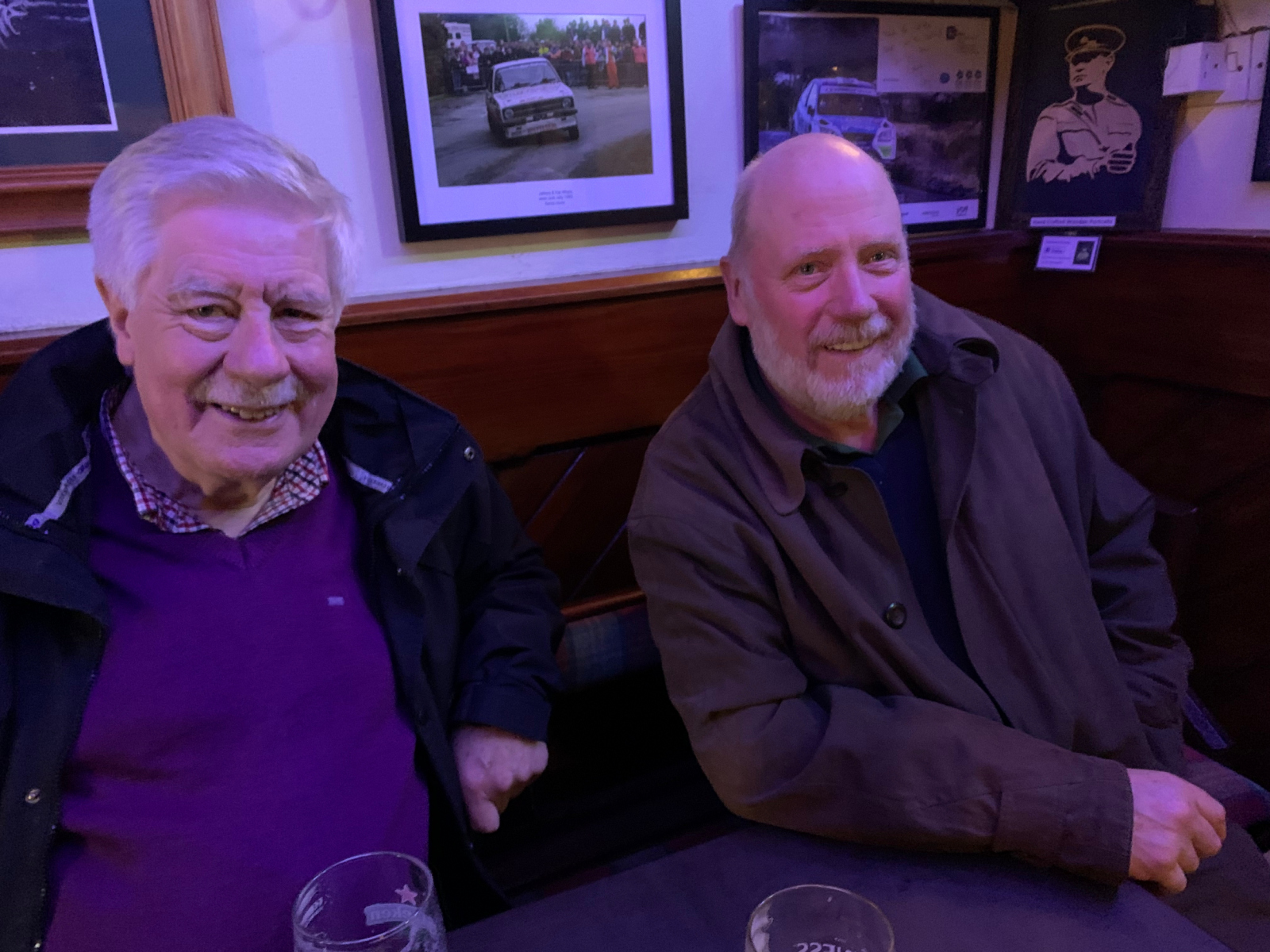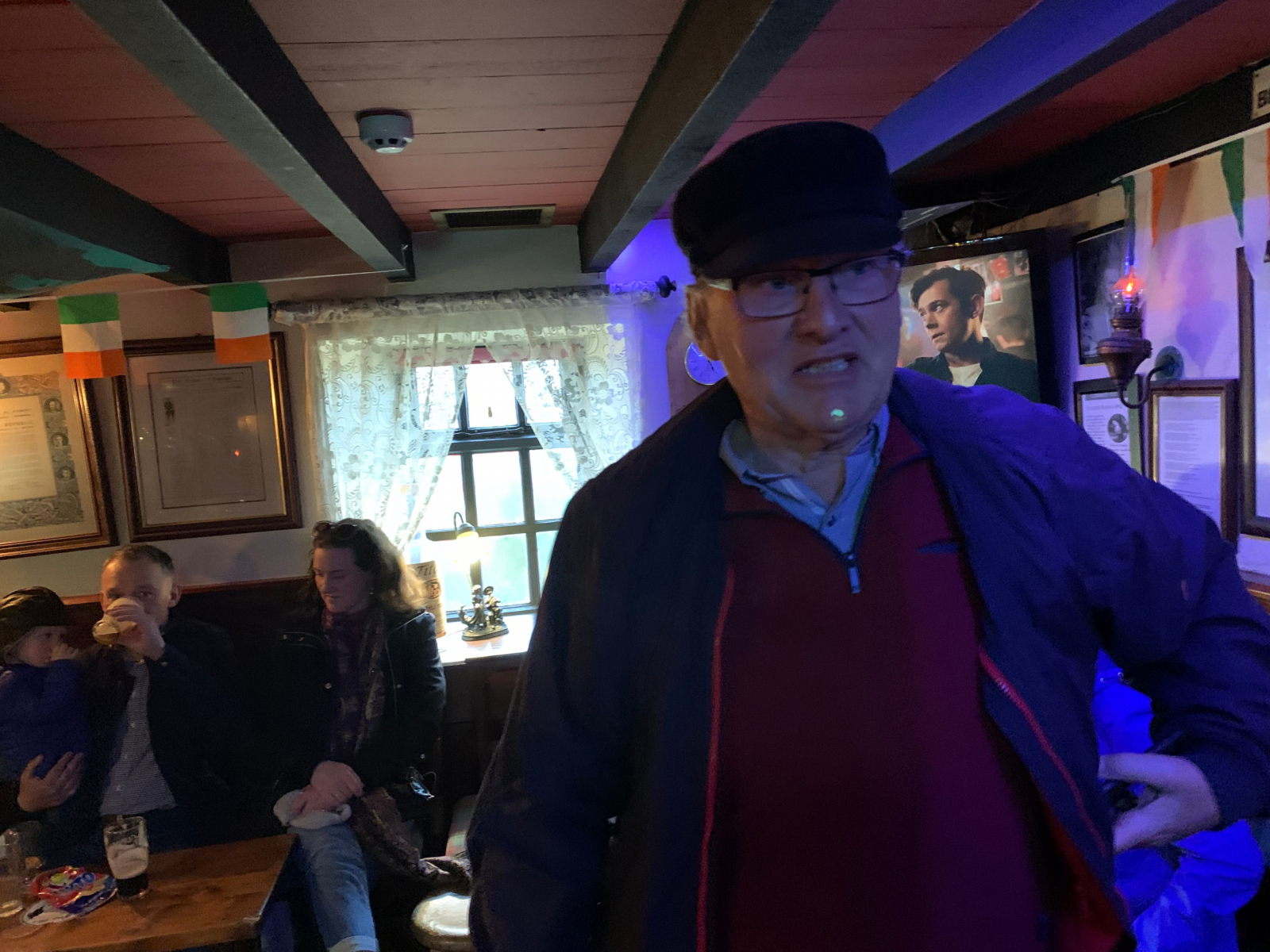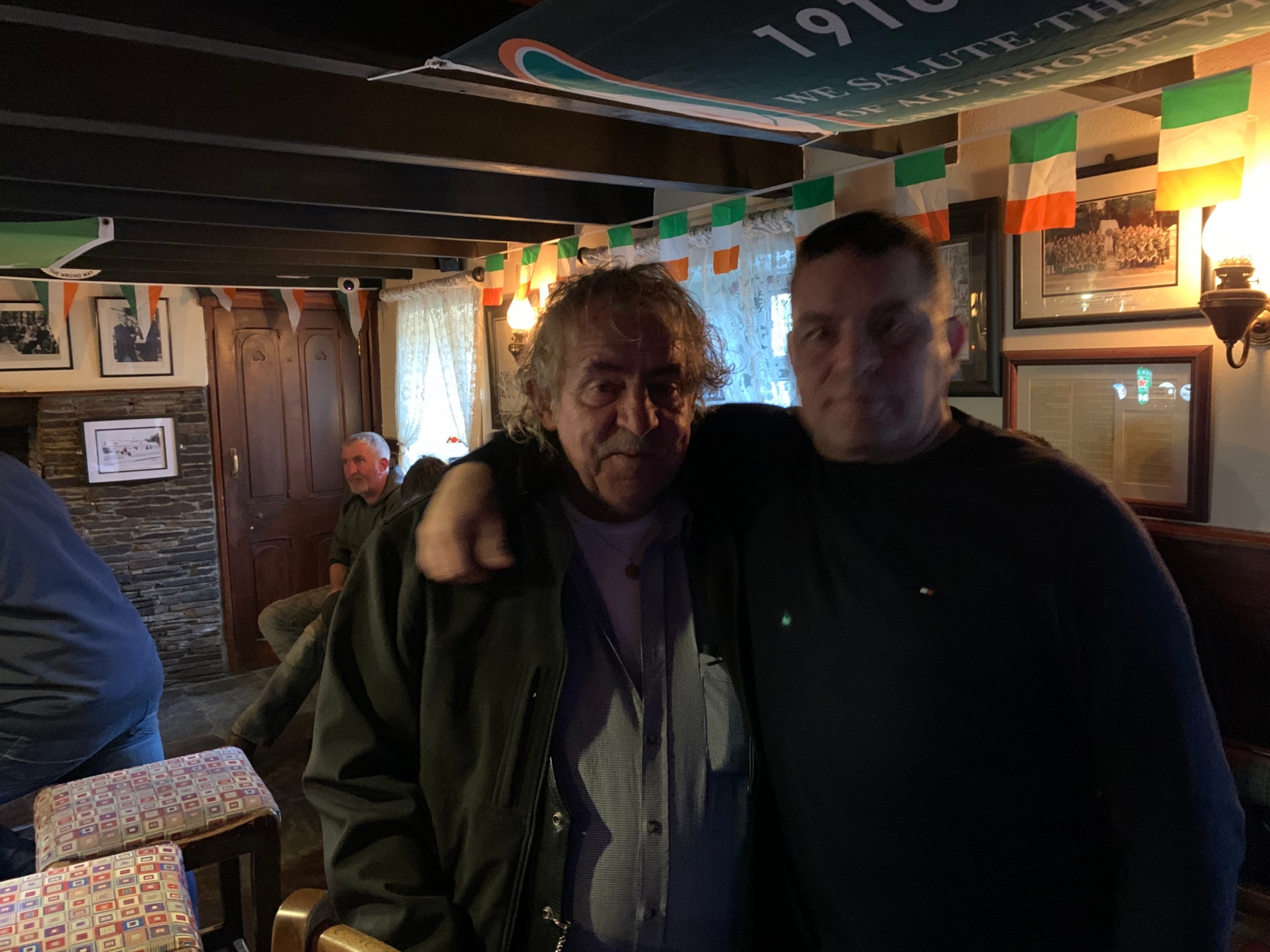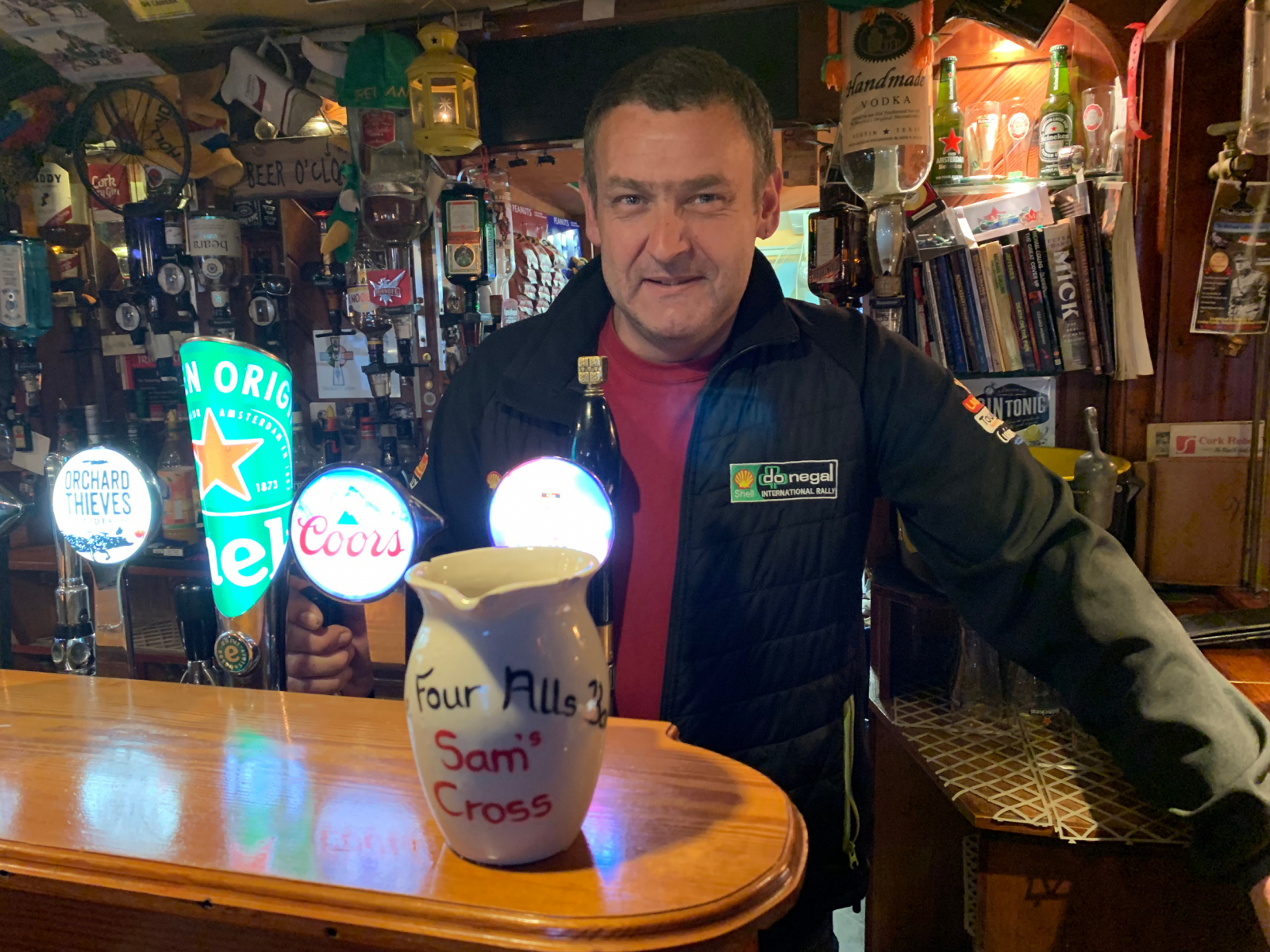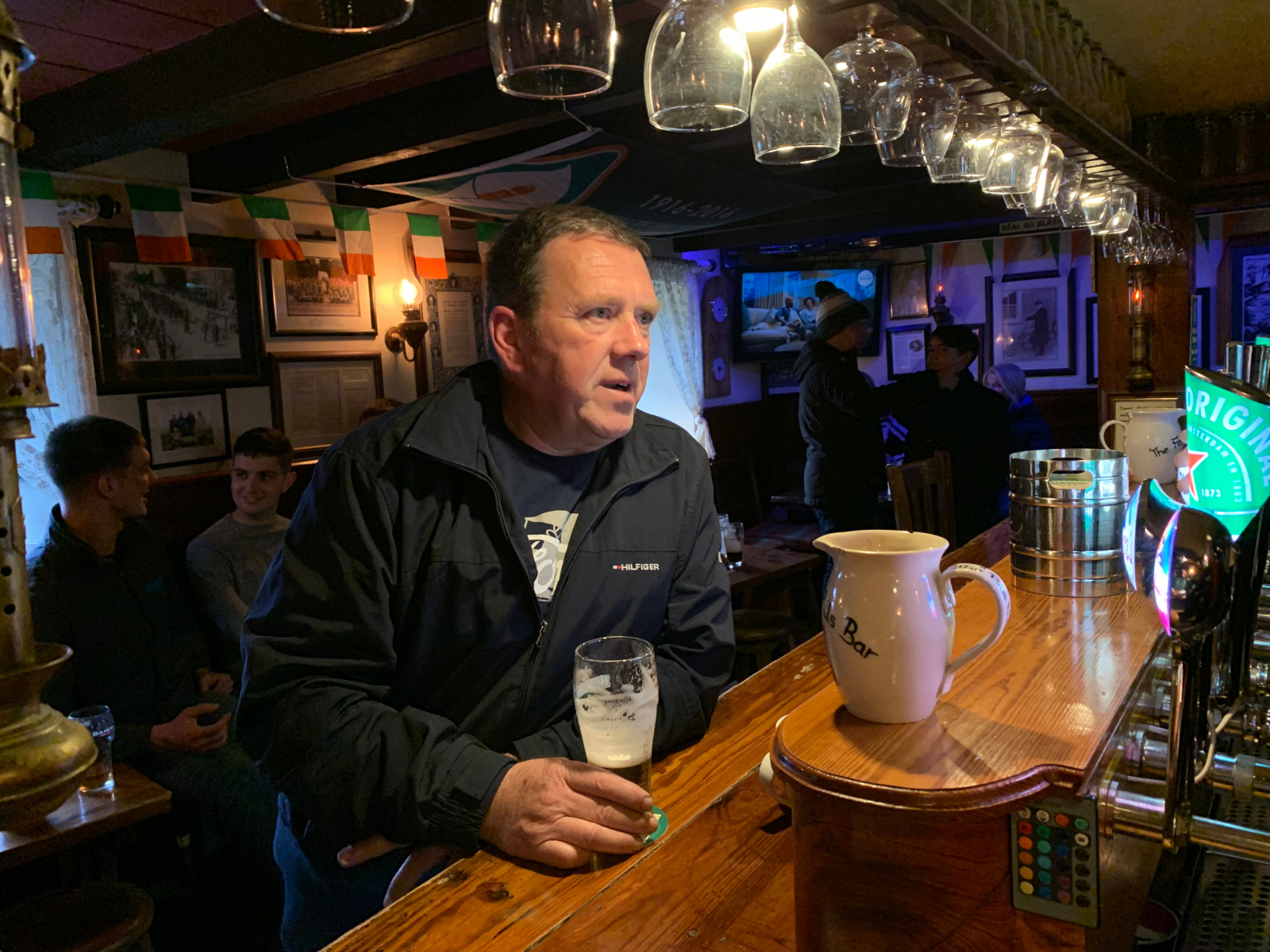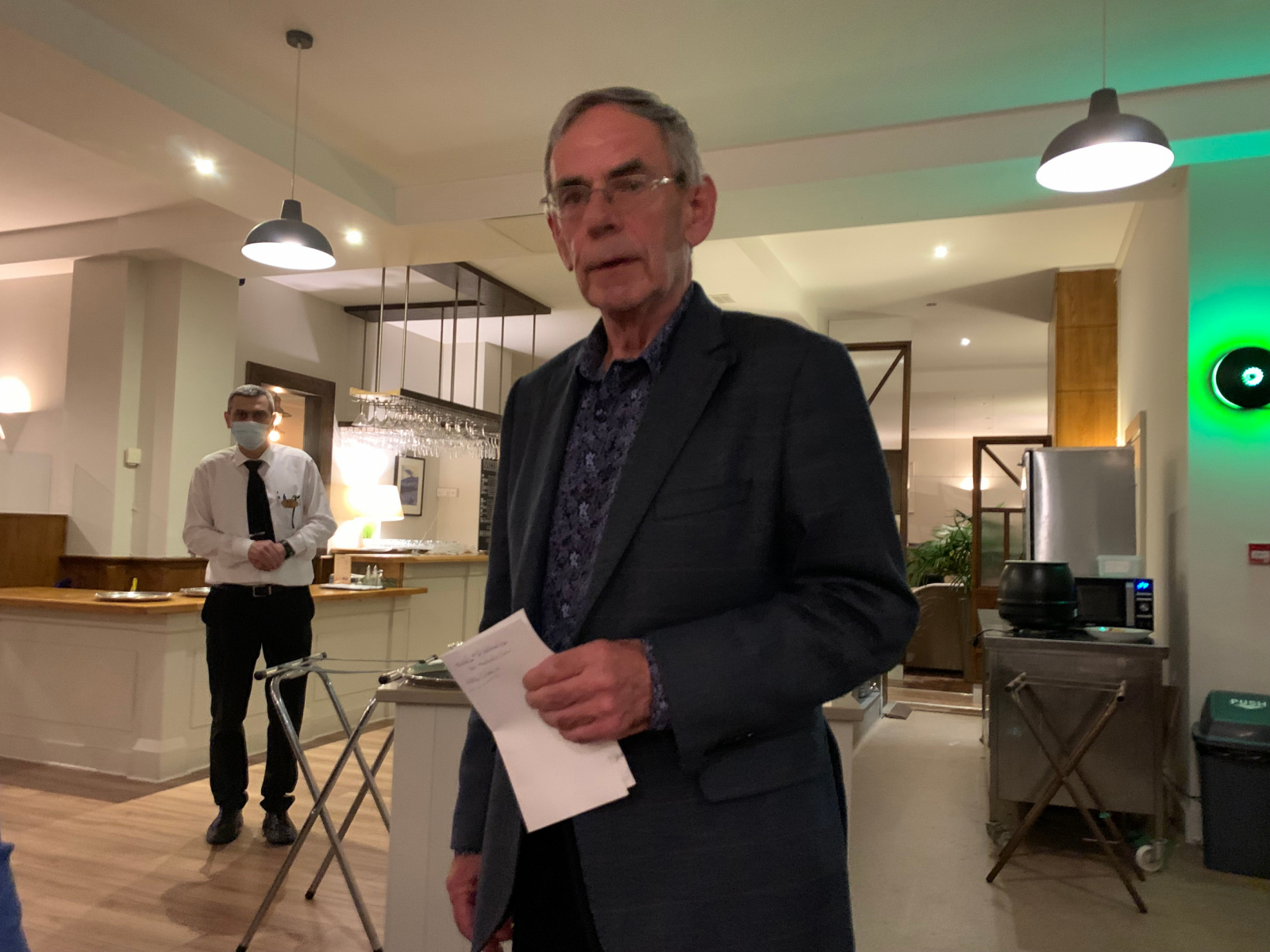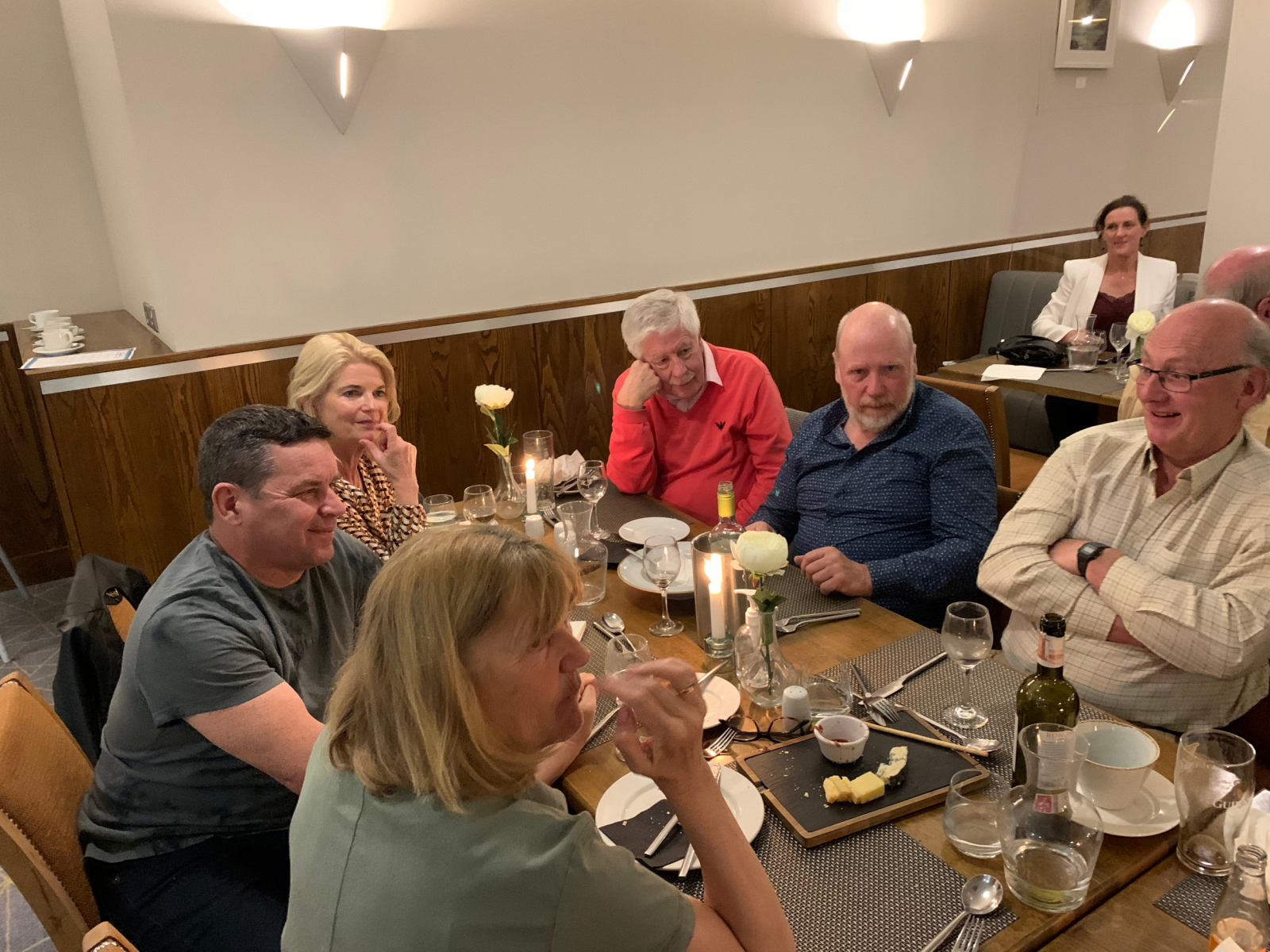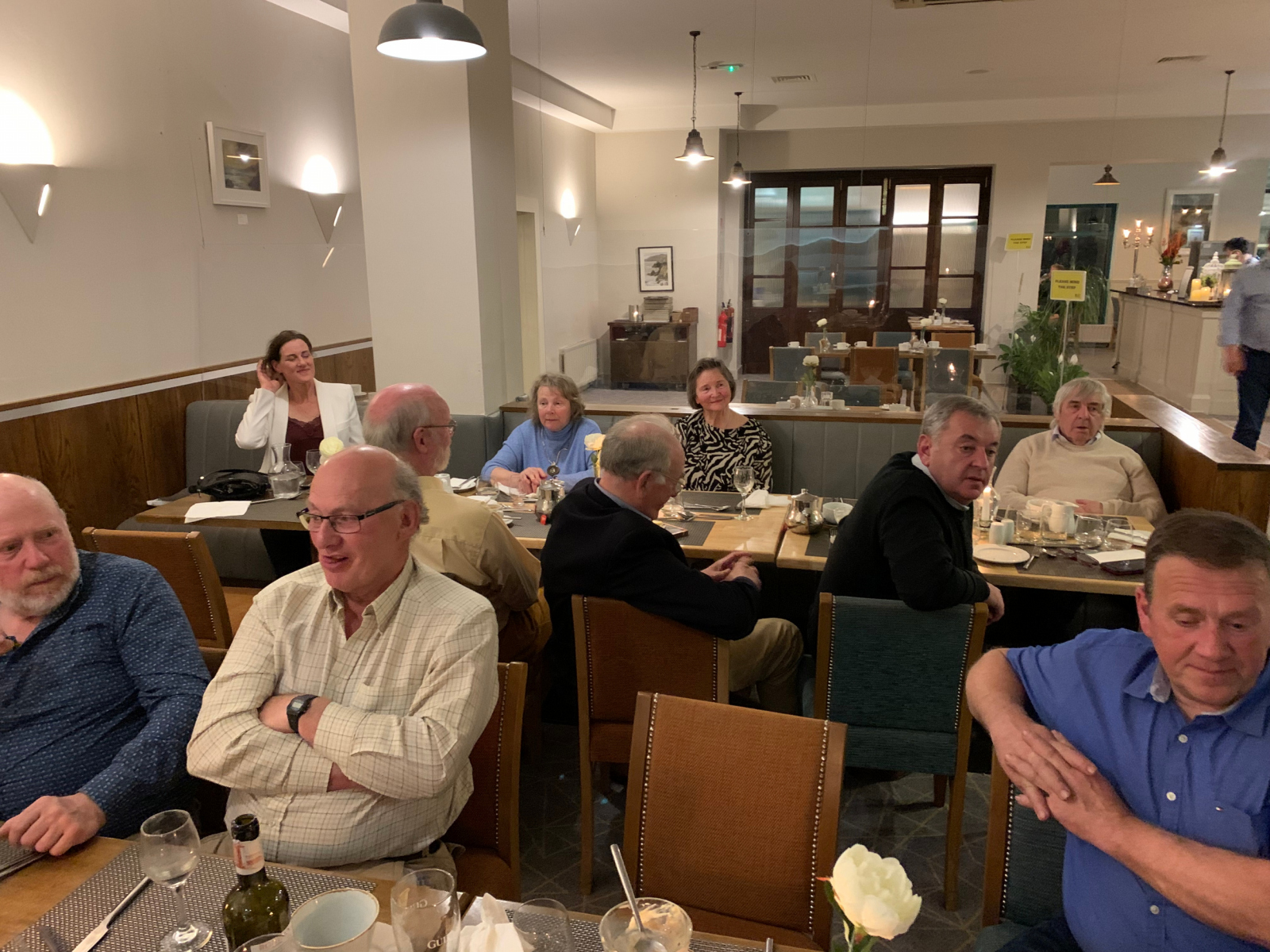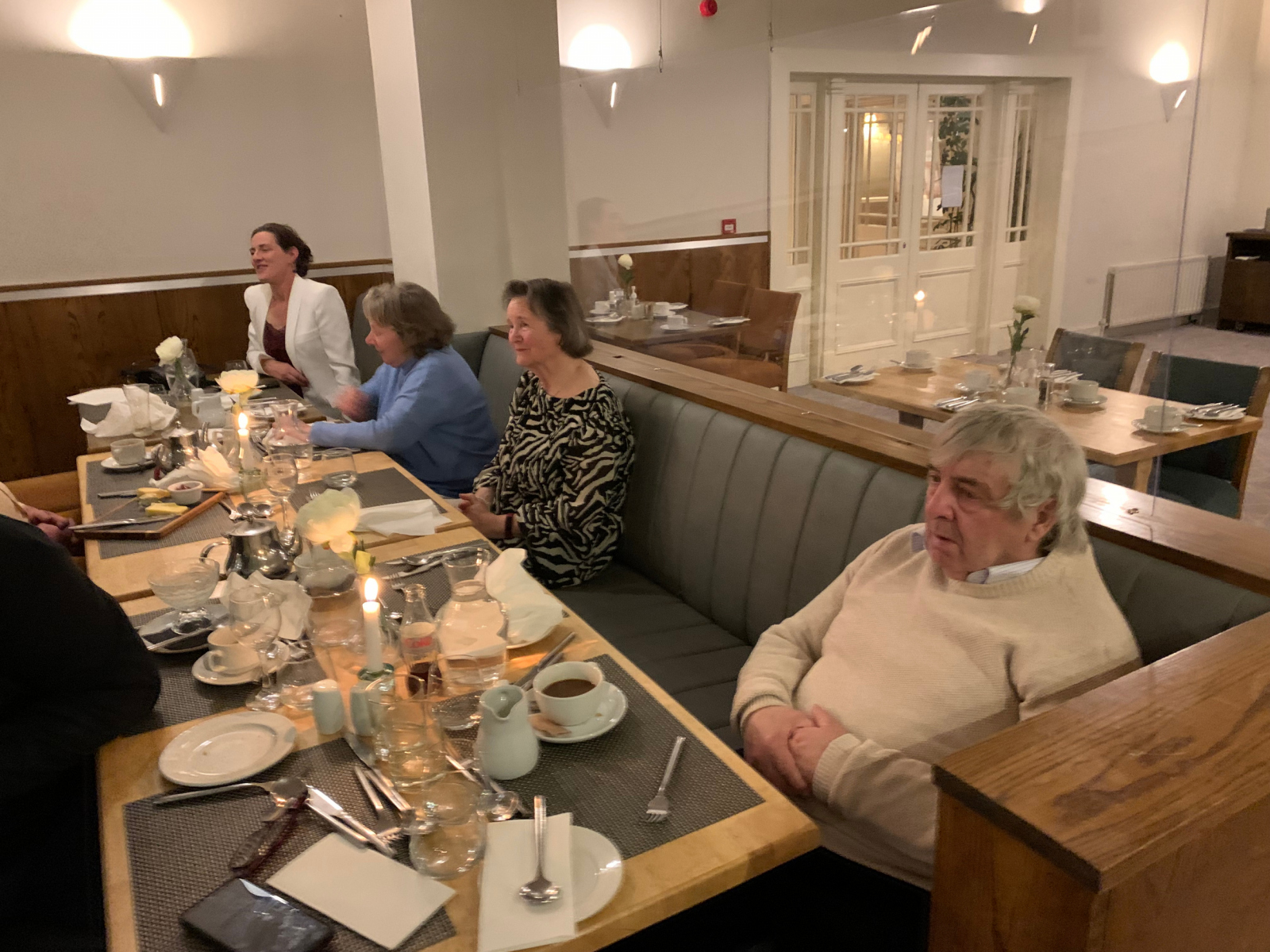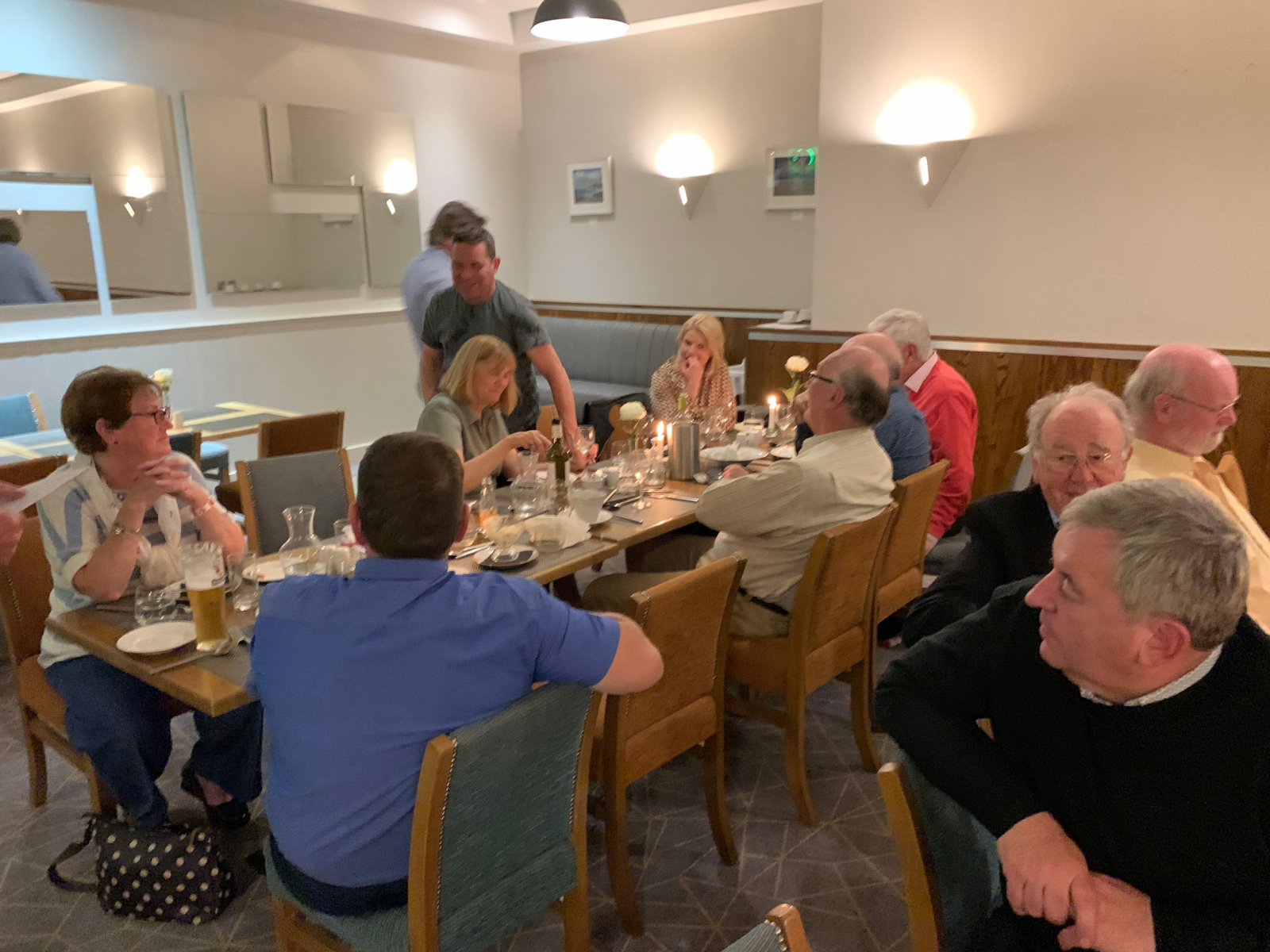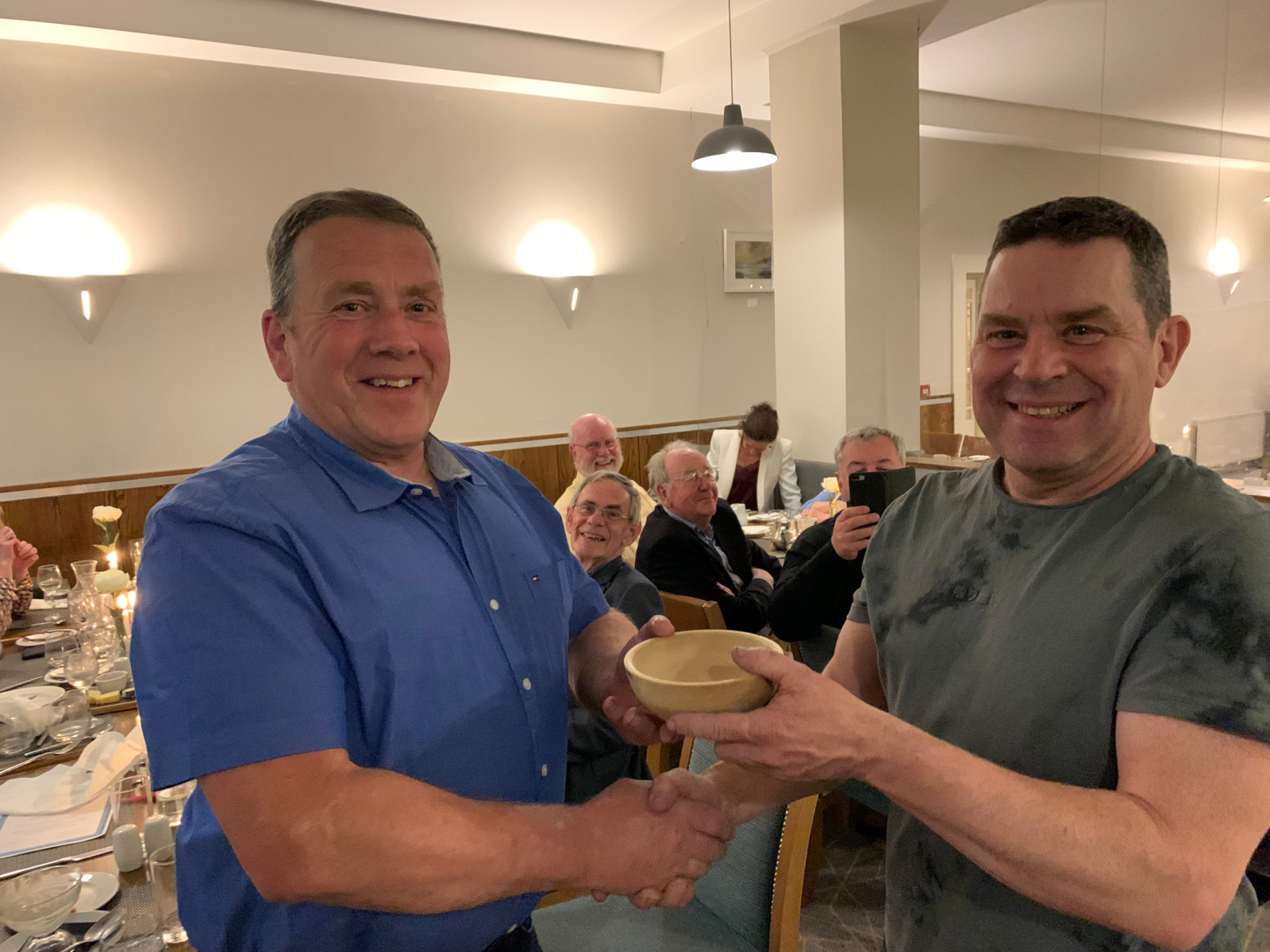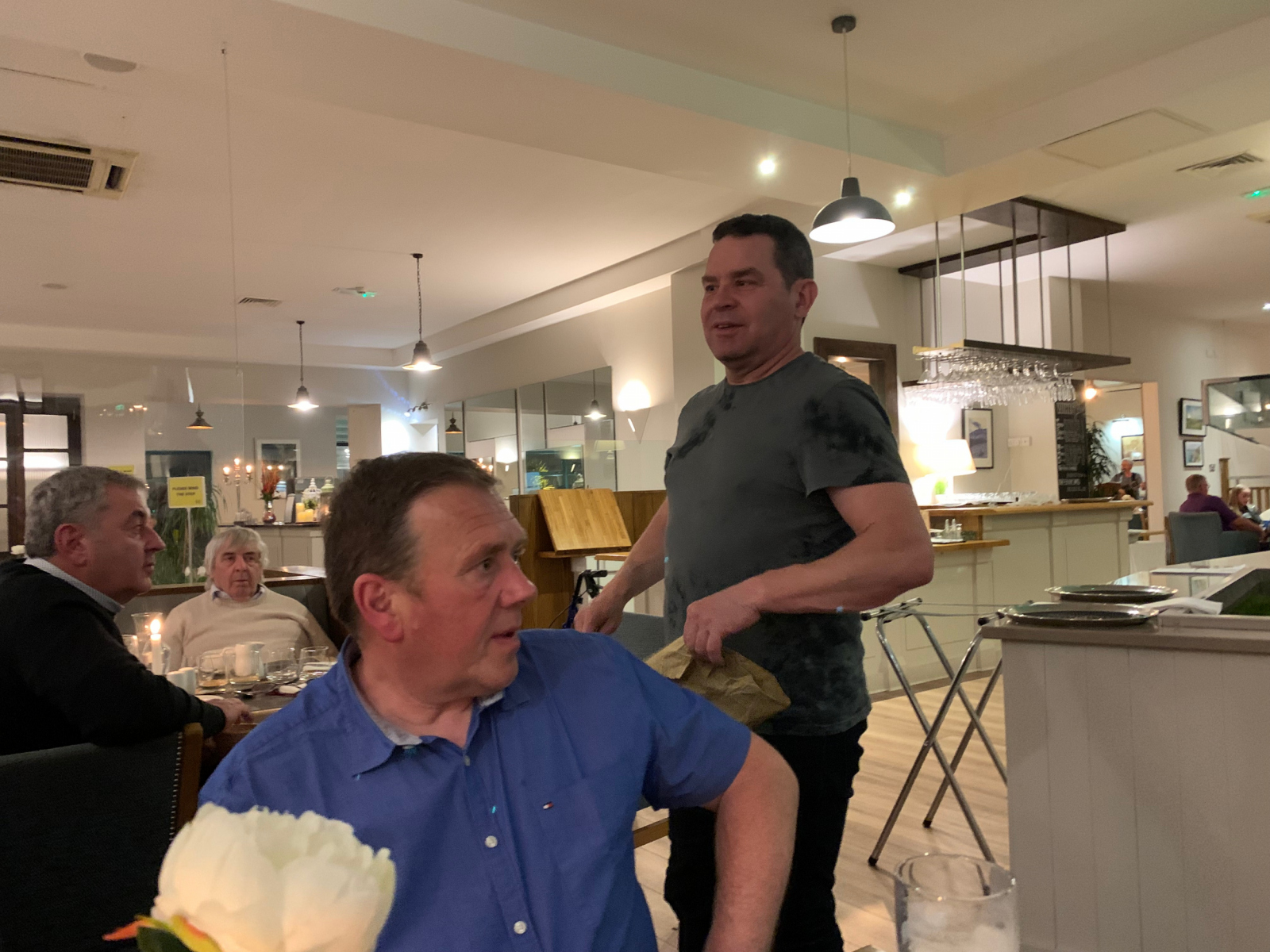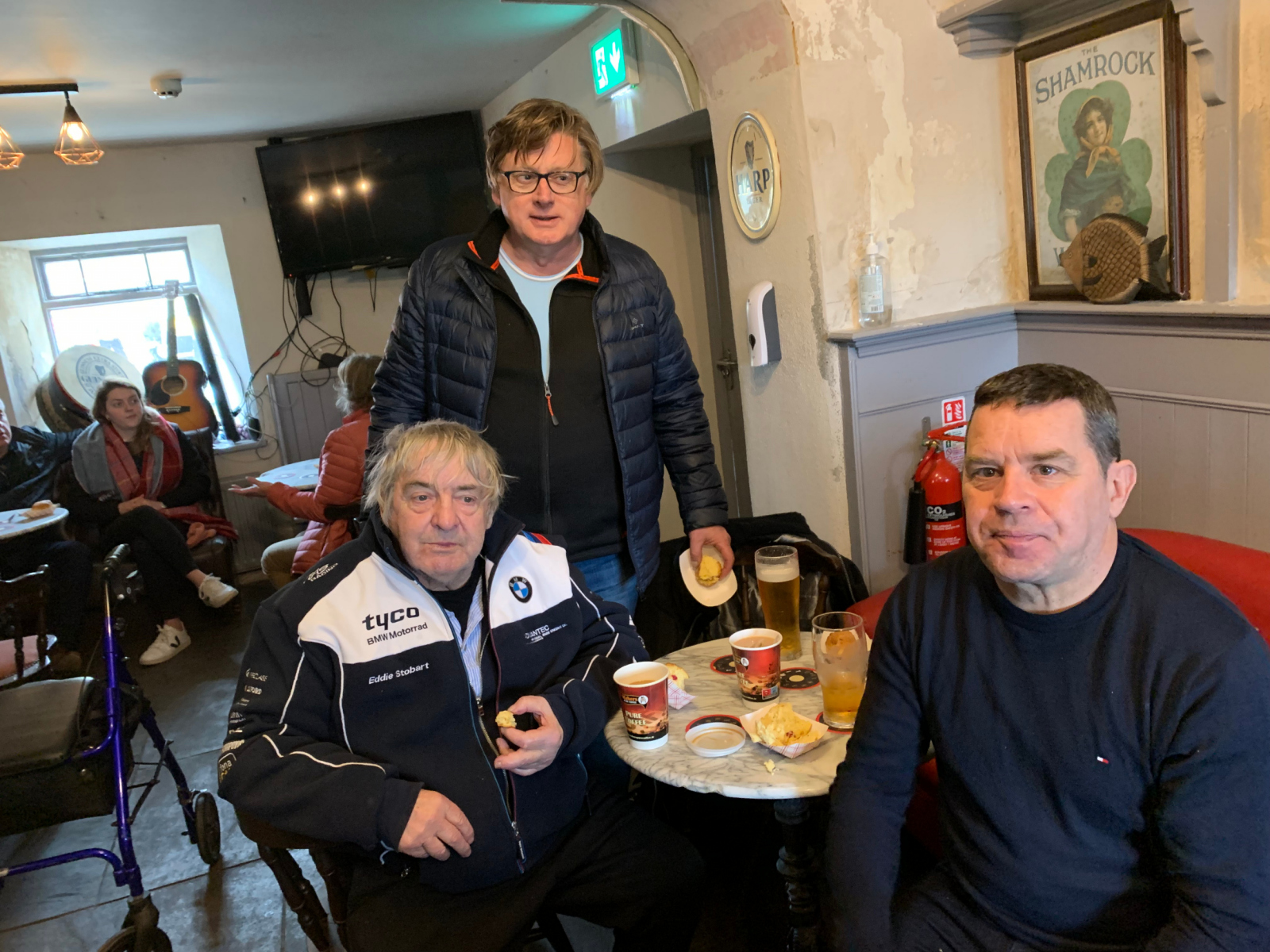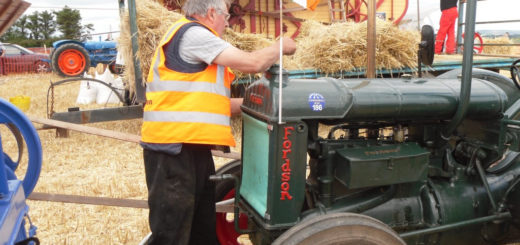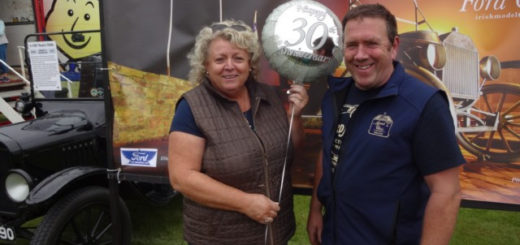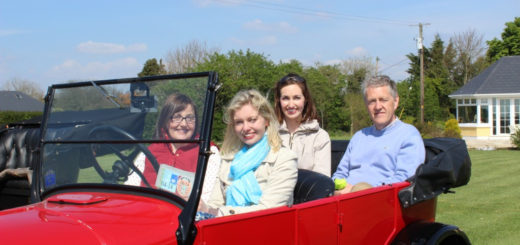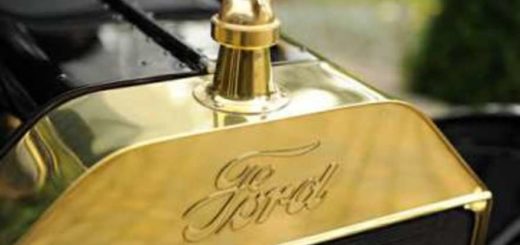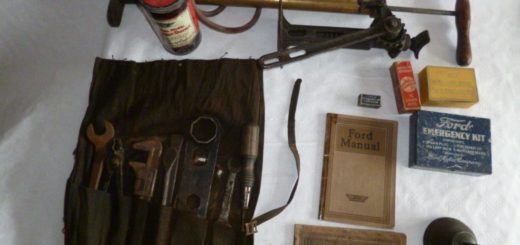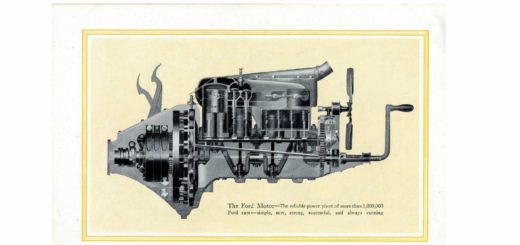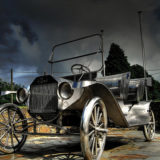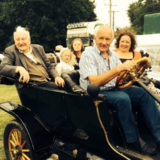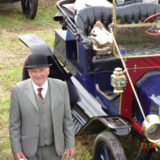Veteran Car Club Minor Event April 2022
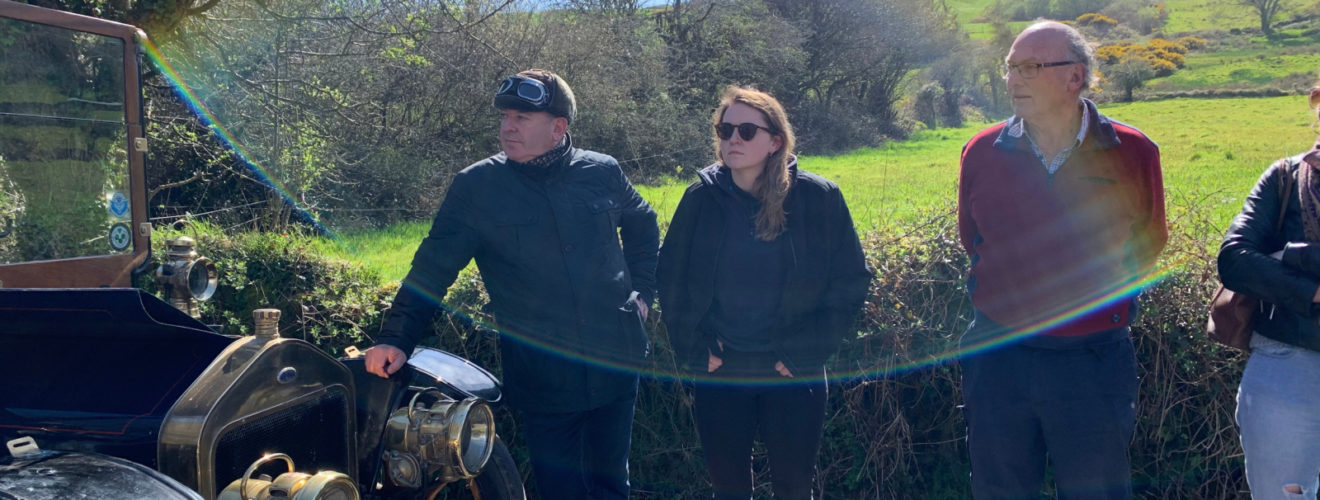
At short notice on the Tuesday of Holy Week, an invitation was extended to our membership to partake as guests in the Veteran Car Club week end event based at Celtic Ross Hotel, Rosscarbery. Our membership was duly circulated and three days later four of us turned up to be welcomed by Chairman Jude Connellan and Organiser in Chief Derek Wilson.
OUR CARS
For us as guests, who are more familiar in a one marque setting, we enjoyed the sight of a very interesting line up of Veteran and Edwardian cars, all polished up to the nines: running so sweetly and bringing music to our ears. In no particular order, the fleet comprised of a 1914 Fiat Tip-off 2B, a 1914 Swift 2 seater, a 1910 Wolseley Sideley, a 1912 Chalmers 30 Open Touring, a Vauxhall 30/98 4.5lt Open Touring car, a 1913 Rolls Royce London Edinburgh 7lt Open Touring car, a 1913 Overland Model 71 45 hp, a 1926 Austin 16/ 6 Saloon, a 1913 Krit 25 hp Tourer, a 1915 Model T Ford Runabout, a 1911 Model T Torpedo Roadster and a 1914 Model T Touring Car.
Whilst our contingent of Ts were as guests of VCC, it is interesting that one of them was validated by Veteran Car Club: there is a connection here and we were not total strangers ! Noteworthy, the Swift has a four cylinder engine which is rare as most of them were of two pots. The KRIT, manufactured in Detroit by ex Ford men, was purchased new in Westmeath. The 1920 Vauxhall of 1913 design is capable of achieving almost 100 mph.
FRIDAY AFTERNOON (15th April 2022)
The weather forecast for Friday 15th proved to be accurate. Really nice blue skies, ample sunshine and calm conditions. We were soon on our way, traversing secondary roads that surely were in existence and in the same meandering style, twists and turns, uphill and downhill, with gentle farm lands and hedgerows, under grass, and aplenty with cattle and calves, as would obtain 100 years ago when cars of our generation were in use. After two miles, we halted, dismounted and were greeted by Michael O’Mahony of Rosscarbery and District historical society.
In his mid eighties, he recently was conferred by University College Cork with a Masters Degree in local history. He offered to share his knowledge of Coppinger’s Court with us.
COPPINGER’S COURT
One of the most iconic ruins in the Rosscarbery area are what remains of Coppingers Court, situated in the town land of Ballyvireen in the farm of the Flavin brothers, on the banks of the Rowry river. Coppinger’s Court belonged to one of the old English families in Cork City. His uncle John Coppinger served as mayor of Cork on two occasions, 1616 and 1619. He was descended from a wealthy merchants family of Danish extraction who came to Cork as early as the 10th Century. Early in the 17th century, the Coppingers expanded their business interest outside the city. John Coppinger bought up land in Kerrycurrihy and Muskery while Walter did the same in West Cork. Both advanced uniformly by way of mortgage.
One of Walter’s earliest purchases was of Irish land north of Skibbereen. The sellers failed to redeem their mortgage within the time limit, and by 1608 Coppingers had settled in West Cork with a view to expanding his estate. The moment would never be more opportune. For the first time the coast of West Cork was experiencing a semblance of government supervision. Local land owners such as the O’Driscolls, were unable to continue extracting the heavy dues and service charges hitherto imposed on fishermen and mariners who frequented the South West Coast. Their land had been decimated by the English Army in 1602. They needed cash as never before and the site of a fellow countryman offering mortgages was irresistible.
One of the land owners who accepted the offer of a mortgage was Sir Fineen O’Driscoll (Finin the Rover) who at this stage was old and impoverished and for £1,700, mortgaged 16 plougland to Walter Coppinger. In due course and following a legal battle, Sir Finin was ordered to pay £1,300 to redeem the land from April 1629. At this stage Sir Fineen was unable to raise the requisite sum, and Coppinger was poised to take over all the town land which had been mortgaged. He had some difficulty in taking over Baltimore, but none in taking over Ballyvireen Valley, and it was here that he commenced building his mansion in 1630.
During the last few decades of the 16th century new ideas especially on buildings were coming into Munster with the Elizabethan settlors. The old style tower houses favoured by the Gaelic aristocracy, gave way to a roomier, better lit, more comfortable fortified house, which still had some minimal defences. These houses had several innovations, like wooden stairs and far more rooms. In fact Coppinger’s Court, as it was known, was said to have a very fine newel post wooden staircase. In the previous century the Gaelic Lords and the Normans built tower houses frequently referred to as castles, but this was a fine mansion with some fortification equal to any mansion in Munster at the time.
Coppinger’s Court, on the bank of the Rowry River, half a mile from the sea at Millcove, was said to have a chimney for every month of the year, a door for every week, and a window for every day. The plan was that it would be the centre of a settlement or town with a canal to the sea. During the rising of 1641 to 1642, the mansion was partly burned and local tradition has it that the son of Coppinger was killed.
Walter Coppinger was a very harsh landlord and was hated locally. He had a yardarm on the back of the building from which he hung locals who displeased him. He also had a basement where prisoners were kept in misery and chains for years. He was also a great man for litigation, but on one occasion it was he who was taken to the debtors court in Cork for non payment of bills. If someone lost in this court they were immediately imprisoned. According to local legend, before he sets off on horseback to Cork, he instructed his wife that if he was not back on Saturday night by 10:00 pm, he has lost the case and had gone to jail and to “burn this place and don’t let the bastards get it”. The case was heard and having won it Walter headed home. He stopped at Rosscarbery to celebrate and stayed too long. As he breasted the hill at Gullane, he saw a large cloud of smoke: his fine house going up in flames, as he had instructed his wife.
Another story told of him is that one of his tenants having displeased him, Coppinger decided to hang him but as it was Sunday it was decided to go to Mass first, he was a Catholic after all. However on his way back home he had a fever and died in a fit of passion. The people believed it was the hand of God that prevented him from carrying out his evil plan.
Writing in 2007, Fachtna O’Connor of the Rosscarbery and District History Society, described Coppinger as “this despotic land grabber” who took most of the land of the O’Driscolls and ended their days as chiefs of West Carbery and the surrounding seas. Following Sir Walter’s death in 1639, his estate passed to one of his sons named Dominic and he had plans of further plantation at Rowry Bridge. A market house has begun to be built here when the rebellion broke out in 1641. This project was part of the Rowry Mills development mentioned in a Coppinger Will of 1675. The rising of 1641 marked the end of the Coppingers in the Rosscarbery area and by the end of the seventeenth century most of their land had passed into the hands of Sir Henry Beecher.
We thanked Michael for his most interesting talk and we were invited to enter the land and get close up photos as we wished. We bid him adieu and we’re soon on our way.
UNION HALL
Motoring was free and easy, little or no traffic on the road. Soon enough we were in the village of Union Hall, a coastal village that lies on a hill, and has a small harbour for small fishing boats and other small craft. As we experienced, by road it is accessible over the narrow Poulgorm Bridge on the R597 regional road to Glandore, Rosscarbery and Leap. The bridge is only one lane wide, so traffic must wait for the bridge to be clear before crossing. The bridge was built c.1890, and featured in David Puttnam’s 1993 film “War of the Buttons”. As of the 2016 census, 270 people were living in Union Hall.
A key source of employment in the area is fishing, and the pier has its own ice plant and fish processing factory run by Glenmar Shellfish Ltd. Tourism is also an economic driver, and among the area’s attractions are boat trips to view whales, dolphins and seals. The area around Union Hall is known for its hills, woodlands, rivers and islands. There are a number of small inlets, bays and beaches. We partook in afternoon refreshments at Dinty’s bar. It is celebrated for its Irish cuisine, offers good beer, wines and spirits and known for delicious coffee and great tea. We certainly vouch it’s credentials and recommend a return visit.
LEAP
Off again, after a short rest, we were homeward bound to Celtic Ross Hotel. However having driven through the scenic village of Leap, we could not resist a short stop for a pre-dinner get together among friends at the Beehive Bar. There in situ, a musician in full swing, entertaining patrons with ballads and musical fanfare. We were only too pleased to listen in and enjoy the afternoon entertainment in glorious evening sunshine. This brought our afternoon trip of less than 20 miles or thereabouts to a very happy conclusion.
SATURDAY (16th April 2022)
RATHBARRY VILLAGE
After the drivers’ briefing at 10:00 am on Saturday 16th we were off again on the delightful roads and scenic views that West Cork gas on offer. Our itinerary suggested that we keep an eye out for Castle Freak. As was reported in The Irish Examiner some time ago, a retired Wall Street investment banker is spending millions of euros “on a labour of love” rebuilding a castle which was once in his family’s possession for hundreds of years. Stephen Evans-Freke is painstakingly rebuilding Castle Freke, originally constructed as a mansion house in the 1750s, but which had impressive battlements added to it later. The castle, which is situated near Rosscarbery, Co Cork, has impressive views of the sea and surrounding land. On a clear day, you can see Fastnet Rock. We were certainly impressed with the product and wish the owner well with his work and congratulate him for his enterprise in bringing this old building back to life. We journeyed on via Rathbarry Village for morning refreshments at Kitty Macks bar in Ring where we were served up with hot beverages and freshly made scones. The traditional atmosphere was great, the pub is full of quirkiness and even has a sunny beer garden with a large enclosed stage for live acts. A return visit is highly recommended.
KILBRITTAN
Off we were again for another dozen or so miles, enjoying the scenery and taking in the warm fresh air where by lunchtime we halted at Kilbrittan Inn, a pub in the village close by the Post Office. Opposite, the Garda Station where a brass plaque on the wall identifies the building as an Kilbrittain RIC Station. It outlines significant historical events in the time frame 1919 to 1921. You may read the text on the plaque in the attached image.
After lunch we sallied forth to the nearby historic Kilbrittain Castle where we were welcomed by Mrs. B. Wynn and her daughter and greeted by Cllr. Gillian Coughlan, The Mayor of the County of Cork. Ms. Wynn gave us a brief history of the castle and allowed us inside to view from the rooftop the magic scenery in the hinterland of West Cork. On behalf of VCC membership, Don Larkin presented Mrs B. Wynn with a framed copy of the auction catalogue following the disposal of machinery and equipment post the untimely death of the late Russel Wynn.
Here are some fun facts about this amazing Irish landmark. Hopefully they will entice you to pay a visit in person! But if that is not possible, you can always use them to impress your friends with your knowledge of one of the most-visited attractions in Ireland.
Kilbrittain Castle which was built in 1035 by the O’Mahony clan is believed is the oldest continuously inhabited castle in all of Ireland. The medieval castle is not a hotel, it welcomes guests spend a night or two surrounded by medieval architecture and an incredible history.
It is the oldest constantly-inhabited castle in Ireland: it hasn’t been inhabited by the same family the entire time. Some of the notable families that have lived at Kilbrittain include the De Courceys, the Stawells and the McCarthys.
Parts of the castle are nearly 1,000 years old. Today, most of the modern castle’s structure dates back to the 17th, 18th and 19th centuries. The castle has changed hands many times, and in other periods it has been empty and neglected. The Stawell family did perhaps the most work during the 18th and 19th centuries. The most recent of the major renovations to Kilbrittain were completed in 1969 by the inventor Russell Winn.
The castle is perched on a hill with stunning views over the countryside. This was done intentionally so that any invading armies could be seen a long way off. When you step into the castle today, you’ll be in the entrance hall. In centuries past, this was the guard room and the spot where important battles were planned. Next, you might climb up the spiral staircase that is a major point of focus within the castle. As you head up to the gallery, you’ll be surrounded by artefacts and pieces of history from Kilbrittain.
If you would like to spend the night at Kilbrittain Castle, which is now a hotel, you can! Each of the rooms is designed to invoke history and provide plenty of Irish warmth. If you’re not a guest at the hotel, you can still enjoy excellent views of the castle. Castle Walk is a signposted trail around Kilbrittain that takes just an hour, but it provides you with great photo opportunities of the castle.
After seeing Kilbrittain up close, head into the nearby small town of Kinsale. The town is home to another smaller castle called Desmond Castle.
TIMOLEAGUE
Our group of ten veteran cars, having enjoyed our wandering walk around the grounds of the castle headed off on the next leg, where upon arriving at Timoleague we stopped for a little while for afternoon beverages at Pad Joe Deasy’s bar where the roaring fire was most welcoming. The best of Irish pub hospitality is to be experienced here. You may safely make a recommendation to your friends. At this stage time was moving on and we had one more site to visit.
SAM’S CROSS
It was the Four Alls Bar at Sam’s Cross, not far from Clonakilty reputed to be “The Big Fella’s” local. Sam’s Cross is located just around the corner from the Birthplace of Michael Collins at Woodfield. Here there is a monument dedicated to Collins, his maternal grandmother’s home and the Four Alls pub where Michael Collins had his last drink on his return journey to Cork, just before he was killed at Béal na Bláth on 22nd August 1922.
FORMAL DINNER
We all enjoyed dinner together in the main restaurant of the Celtic Ross hotel. Chairman Jude Connellan thanked his members for supporting the minor event of 2022. He was pleased that guests from the Irish Model T Club were in attendance. He made special mention of the organising skills of Derek Wilson and for the variety of stops and the choice of country roads so suitable for our ageing vehicles.
President Paul Murphy of the Irish Model T Ford Club thanked his hosts for their invitation which was much appreciated. Perhaps a little more notice would have yielded a few more Ts. In recognition and as a means of saying “thank you” he presented Derek Wilson with a hand turned bowl made out of a piece of Cork grown Holly wood in appreciation for his hard work and endeavour.
In conclusion, it was a fabulous week end. The weather was good, the organisation superb and the visits and attractions memorable. Thank you to Veteran Car Club members for your kind and thoughtful invitation. We enjoyed your company.

